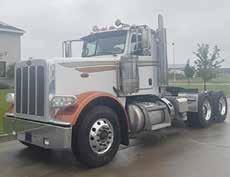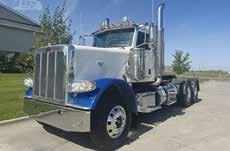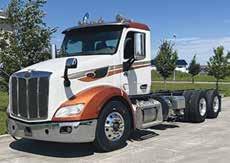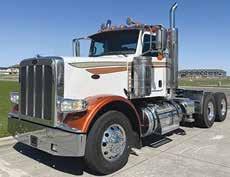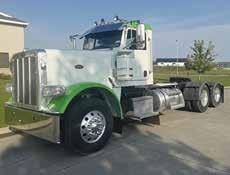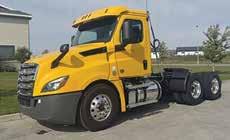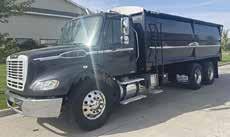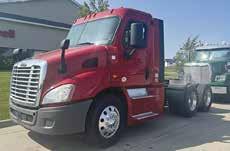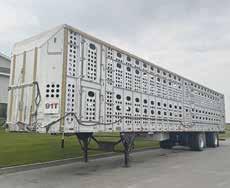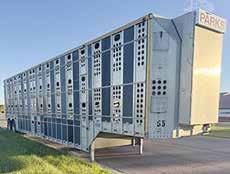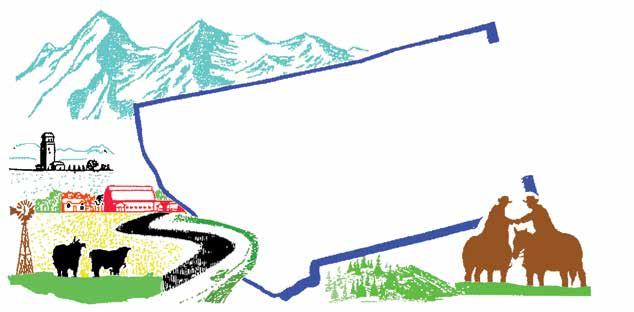

SDSU Extension to host Sheep Shearing School
South Dakota State University Extension will teach the skill of sheep shearing to current and prospective producers this fall.
The Sheep Shearing School is from October 25-27, 2025, at the SDSU Sheep Research and Teaching Unit by Brookings. It is $250 per person, and registration is required. To register, visit the SDSU Extension Events page and search “sheep”.
Professional sheep shearers will provide hands-on training in safe animal handling, equipment maintenance and repair, wool quality and how to manage a sheep shearing business.
Throughout the school, participants will practice handling and shearing techniques on live sheep. Jaelyn Whaley, SDSU Extension Sheep Field Specialist, said it’s a valuable opportunity to learn from world-class professionals about all aspects of the industry, not just how to shear a sheep.
“SDSU Extension is offering a school for anyone wanting to learn the art of sheep shearing firsthand from talented, experienced sheep shearers,” Whaley said.
She recommends the school for all sheep producers, regardless of experience or operation size. Whaley said more sheep shearers are needed in the region. For those interested in starting a shearing business, it can be a full-time profession or a way
AUCTIONS
Oct 8 - 22, Ophus Auction Co, Fall Online Consignment, Online ................. A5
Oct 13 - 26, Smith Sales Co. Auctioneers, Machinery Auction, Online ........................................................................................................ A20, A21
Oct 13 - 21, Musser Bros Auctions & Real Estate, Dallas Colvin Construction Retirement, Online ................................................................................... A4
Oct 13 - 26, Smeltzer Auctions & Real Estate, Owen Johnson Estate, Online ................................................................................................................ A30
Oct 13 - Nov 4, Musser Bros Auctions & Real Estate, Consignment, Online ................................................................................................................ A11
Oct 13 - Nov 5, Smeltzer Auctions & Real Estate, Joe Woodward Estate, Online .......................................................................................................... A13
Oct 16 - Nov 16, Smith Sales Co. Auctioneers, Semi’s, Trailers, Loaders, Haying, Cattle Related, Online............................................................................. A17
Oct 19, RLP Auctions, Ernie Morris Collection, Hamilton, MT A29
Oct 25, RK Statewide Auction, Travis Klein Welding & Fabrication Liquidation, Big Timber MT A8
Oct 25, RK Statewide Auction, Sweet Grass County Real Estate, Big Timber MT A9
Nov 1 - 11, Yellowstone Auction, Huge November Sale, Online ................ A13
Nov 1 - 11, Grizzly Auctions, Annual Fall Auction, Online A10
Nov 6 - 11, Booker Auction, Shumway Farms Retirement, Online A7
Hemp proposals
The Montana Department of Agriculture (MDA) is requesting proposals to fund projects designed to promote and enhance Montana’s hemp industry through improved production and marketing opportunities. Additionally, projects for educational and marketing campaigns, or publicity and sales promotion campaigns for hemp will be considered.
The Montana Department of Agriculture Hemp Research & Market Development Program aims to advance Montana’s hemp industry needs and opportunities through research, promotion, and market development of hemp grown in Montana. For the complete Request for Proposals (RFP), list of guidelines, eligibility requirements, and application procedures, please visit, agr. mt.gov. The Montana Department of Agriculture will determine funding awards.
Proposals must be submitted through the WebGrants system by 5:00 pm MT on Friday, October 17, 2025. Examples of eligible projects include, but are not limited to, advertising and promotion, travel, equipment, consulting services, and communication. All project applications will be reviewed by the Director of the Montana Department of Agriculture at a public meeting to be scheduled within 30 days of the submission deadline. For all Public Meeting information, please visit, agr.mt.gov/Home/News.
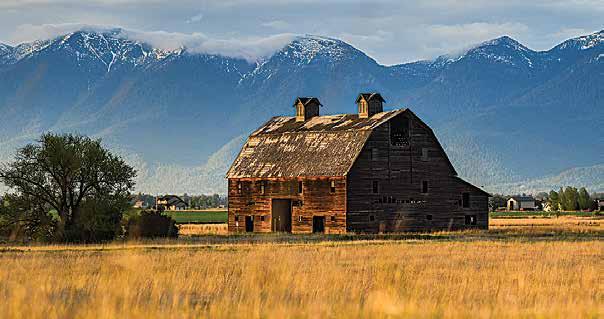
Series to focus on range, pasture management
By Aaron Berger, Nebraska Extension Livestock Educator
Nebraska Extension will host a six-part webinar series this fall to help landowners and livestock producers better understand how to identify, grow and manage grasses in pastures and rangelands. From the comfort of your computer, interact with participants and presenters and gather information specific to your pasture’s location.
The Knowing, Growing and Grazing Grass webinar series will run Monday and Thursday evenings, October 13 through October 30, from 6:30 to 7:45 p.m. MT (7:30 to 8:45 p.m. CT). Two optional sessions will also be held on October 21 and 28. The course is limited to 30 participants.
“This series will give producers a solid foundation in range and pasture management,” said Aaron Berger, Nebraska Extension educator and program coordinator. “Whether it’s plant identification, understanding stocking rates or using drought insurance tools, participants will leave with practical, usable information.”
Topics covered in the series will include:
• Plant identification and learning to recognize desirable grass species
• Management practices to improve forage production and plant vigor
• Understanding and calculating stocking rates
• Using tools like USDA Web Soil Survey and Rangeland Analysis Platform to estimate forage production
• Developing grazing plans and managing drought risk through Pasture, Rangeland and
Forage (PRF) insurance
Participants are invited to submit their plant photos for identification. All webinars will be interactive and recorded for later viewing.
The registration fee is $100 per person and includes a copy of Grassland Plants of South Dakota and the Northern Great Plains and a printed resource notebook featuring Nebraska Extension NebGuides and Circulars. Materials will be mailed ahead of the course.
To register, visit: https://go.unl.edu/Knowing_Grass
A computer and internet connection are required to participate.
For more information, contact Aaron Berger at 308-235-3122 or aberger2@unl.edu.
Prickly Pear

Blasdel Barn near Somers, Montana. See article on page C40 for your chance to help restore the historic barn.
Heartland Cattle Co.
SELLING AT ARNTZEN ANGUS FEMALE SALE
Lewistown Stockyards - November 14, 2025
Phone Daniel Troyer at (406) 366-4539 for more information or Dan Deichman at (406) 799-5200
Off-season Garden Hour
South Dakota State University Extension will continue its popular Garden Hour series during the off-season with webinars every other month.
Garden Hour runs weekly during the growing season, typically from May through August. The off-season episodes are scheduled from 7 to 8 p.m. Central time on October 7 and November 25, 2025, and February 3 and April 7, 2026.
They are free to attend, but registration is required to receive the Zoom link. To register, visit the SDSU Extension Events page and search “garden”.
Each session includes two presentations and ample time for questions from attendees. In October, presenters will talk about fall food storage and garden insects to watch for.
“We’ve learned over many seasons of garden hour that gardening doesn’t stop with a frost,” said Amanda Bachmann, SDSU Extension Urban Entomology Field Specialist. “We’ve got topics to talk about all winter, especially when people are thinking about next year’s garden.”

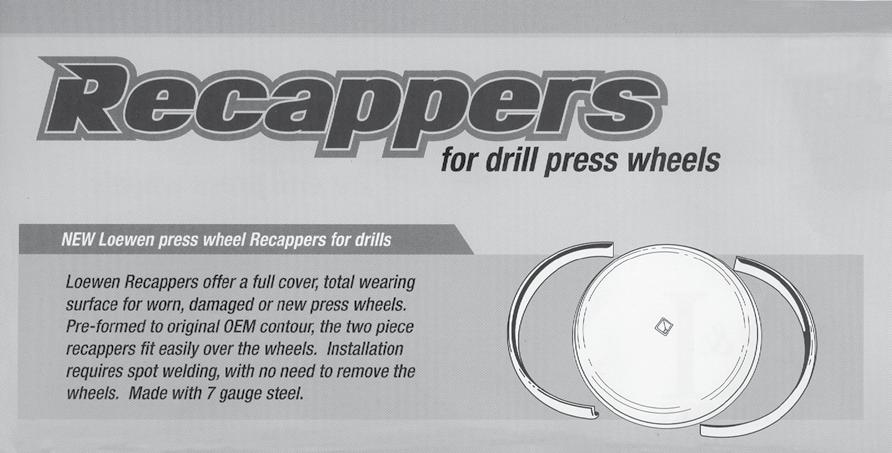
Bachmann co-hosts the series, along with John Ball, professor, SDSU Extension Forestry Specialist and South Dakota Department of Agriculture and Natural Resources Forest Health Specialist; Kristine Lang, assistant professor and SDSU Extension Consumer Horticulture Specialist; Robin Buterbaugh, SDSU Extension Horticulture Field Specialist; and Sydney Trio, McCrory Gardens Education Coordinator and SDSU Extension Horticulture Assistant.
November is a holiday plants-themed episode, with Ball talking about Christmas trees and co-hosts providing additional information on caring for other holiday plants.
In February, Prairey Walkling, SDSU Extension Master Gardener Field Specialist, will talk about upcoming Master Gardener training, and Buterbaugh will discuss best practices for starting plants from seeds.
For the final off-season webinar in April, Sydney Trio, McCrory Gardens Education Coordinator and SDSU Extension Horticulture Assistant, will give a sneak peek of the McCrory Gardens 2026 spring and summer schedule, and Laura Edwards, SDSU Extension State Climatologist, will provide a spring climate outlook.
Bachmann said both the regular and off-season Garden Hour webinars are also a great way to get your plant and garden-related questions answered by experts.
Gardeners can also submit questions on the Garden and Yard Problems and Solutions page. An SDSU Extension expert or Master Gardener will reply, typically within 48 hours if the inquiry is made on a weekday.
Sheep Shearing School
CONTINUED FROM FRONT PAGE
to diversify their existing operation.
“Whether shearing for yourself or wanting to start a shearing business, there is undoubtedly a growing need for sheep shearers,” she said.
For more information, contact Jaelyn Whaley, SDSU Extension Sheep Field Specialist.

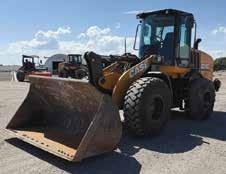
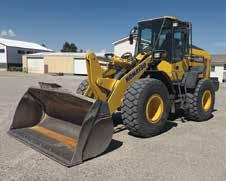
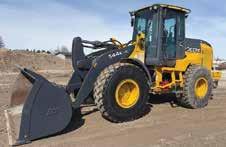
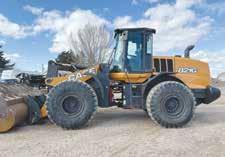
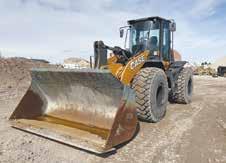
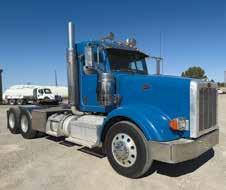
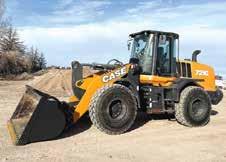
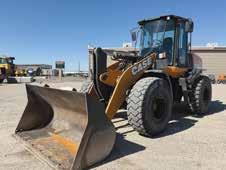
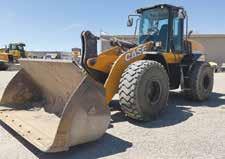
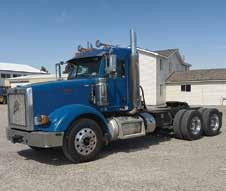
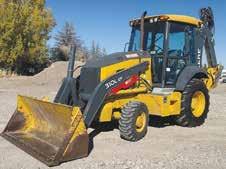
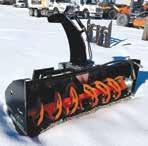

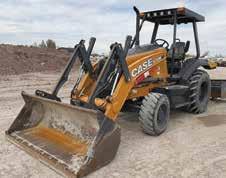
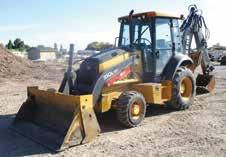
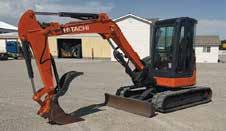

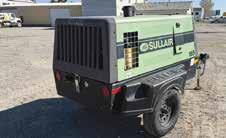
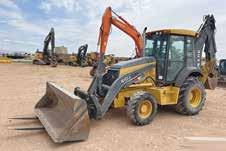

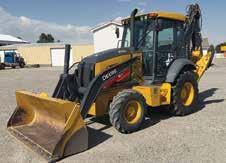
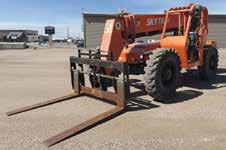
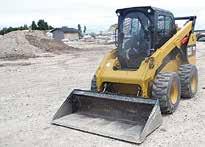
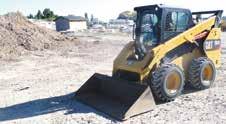

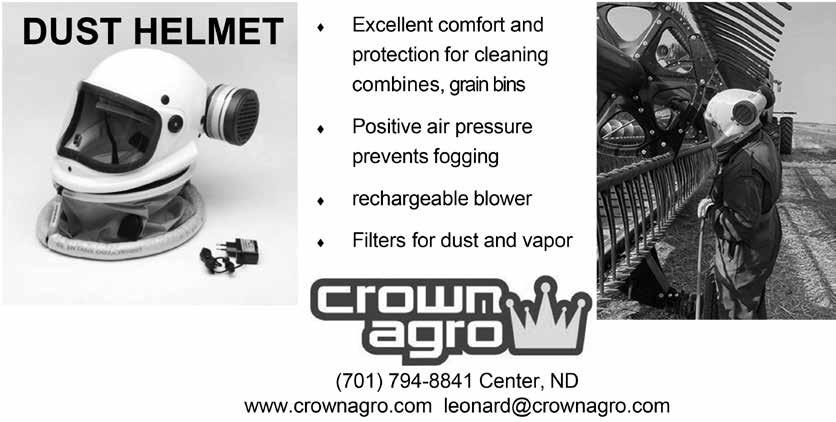

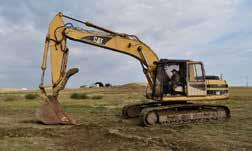
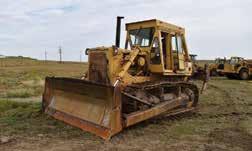
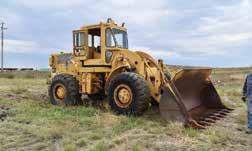
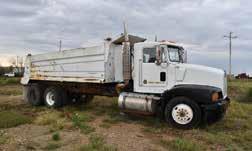
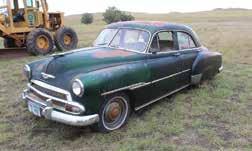
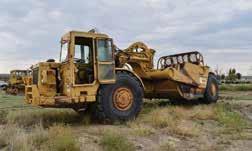
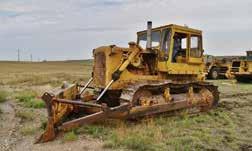
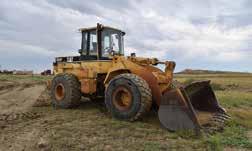
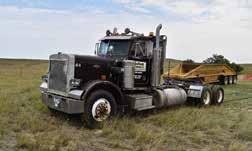
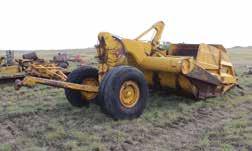
NRCS in Idaho accepting applications for the ACEP
The U.S. Department of Agriculture (USDA) is accepting applications from agricultural producers and forest landowners in Idaho for the Agricultural Conservation Easement Program (ACEP), which helps producers enroll wetlands, grasslands and farmlands into conservation easements.
While USDA’s Natural Resources Conservation Service (NRCS) accepts ACEP applications year-round, Idaho producers and landowners should apply by October 17, 2025, to be considered for funding in the current cycle. Applications received after the ranking date will be considered during the next funding cycle.
Funding is provided through a competitive process. State Technical Committees, composed of conservation and agricultural-related agency and organization representatives, work with NRCS to identify resource priorities and how best to address them.
The ACEP enrollment options for this funding cycle are: Agricultural Land Easements (ALE): Protects farmlands and grasslands by limiting non-agricultural uses of the land. Agricultural Land Easements are either perpetual, or the maximum duration allowed under State law.
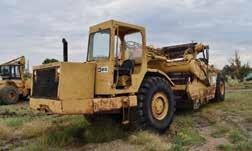
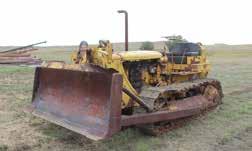
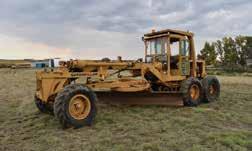
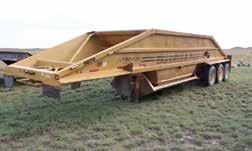
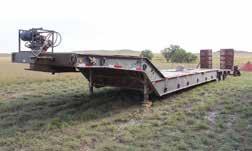
Wetlands Reserve Easements (WRE): restore, protect, and enhance wetlands on eligible land. The easements provide habitat for fish and wildlife, including threatened and endangered species, improve water quality by filtering sediments and chemicals, reduce flooding, recharge groundwater, and protect biological diversity. Easements are for 30 years, or perpetual. Find all needed forms and Easement deadlines for ACEP and other conservation programs at https:// www.nrcs.usda.gov/ranking-dates. To learn more or apply, please visit your local NRCS Idaho field office, or contact Tracie O’Neill, NRCS Easement Coordinator, at Tracie.Oneill@usda. gov or (208) 716-7926.
More Information
To learn more about NRCS programs, producers can contact their local USDA Service Center. Producers can also apply for NRCS programs, manage conservation plans and contracts, and view and print conservation maps by logging into their farmers.gov account. If you don’t have an account, sign up today.
























































For more than 90 years, NRCS has helped farmers, ranchers and forestland owners make investments in their operations and local communities to improve the quality of our air, water, soil, and wildlife habitat. NRCS uses the latest science and technology to help keep working lands working, boost agricultural economies, and increase the competitiveness of American agriculture. NRCS provides one-on-one, personalized advice and financial assistance and works with producers to help them reach their goals through voluntary, incentive-based conservation programs. For more information, visit nrcs. usda.gov.
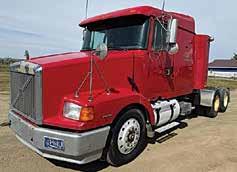
Knapheide 9 Ft metal service box, AmericKooler walk in cooler/freezer 13 Ft long 8 Ft tall 6 Ft wide, 2-compressors,. Lot 3, 30-used 16 Ft long wire cattle wire panels, one has wood frame for gate, 2-12 Ft homemade free standing panels, light duty one is missing half of top rail.
1996 Volvo, semi 40 in sleeper, 12.7 L Series 60 Detroit, 10 speed Trans, diff lock, 4 bag air ride, Reman power divider, new rod and main bearings rolled in with an overhead in the winter of 2024, 1,000,031,671 miles,242 wheel base.
Lo 1977 International F 4370 tandem box truck, 400 big cam Cummins, 15 speed, Knapheide 18 Ft steel box & hoist, steel floor, roll tarp, dual aluminum fuel tanks, diff lock, Jake brake, unknown miles
2001 Freightliner Conventional, air ride cab, 12.7
L Series 60 Detroit diesel, 10 speed auto shift trans, ITB 19 Ft aluminum box & hoist, ShurLok roll tarp, rear air and pintle hitch, has rear mount box lift controls, 3 doors on back, new rod and main bearings rolled with an overhead, Shows 313,274 miles.
Hesston 4910 4x4 big square baler 6 string, 7 Ft wide pickup, big 1000 PTO, Gandy liquid applicator box, 28L-26 single tires, bale chute, monitor and owners book, 80,000 plus bales. 2024 New, Tube-Line BF 8000 round bale processor, two spear rear bale loader carrier, hydraulic drive, 400/60-15.5 tires, new never used, Serial # 24BFSL8005.
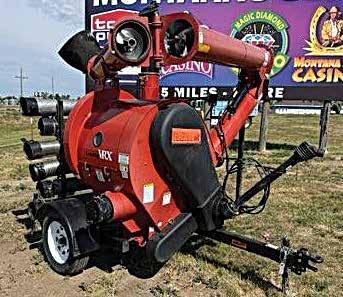
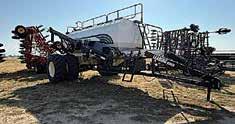
Summers Diamond disk series 10, 34 Ft wide 14 Ft center section, 10 Ft wings, 22’ disk diameter, like new, mud scrapers, wing weight kit, center harrow, serial # 1040. 2014 Bourgault 6550 St air drill, tow between cart 5 compartments, 550 bushel total, 650/75R34 duals on cart, serial # 41466As-10, 2014 3320 air seeder, 60 Ft, single shoot, mid row banders, hydraulic down pressure on both openers and mid banders, rubber packers, carbide openers, unknown acres comes with monitor, serial # 41402PH-11.
Flex-Coil 5000 45 Ft air drill, 12 inch spacing rubber capped packers, carbide openers, single shoot, 5 section, no cart, no monitor, no blockage wiring, serial # ADAO 00-P059365.
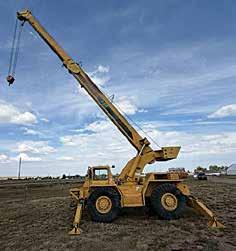
P&H R-180 crane, 4-71 Detroit diesel engine, 4x4, 4 speed power shift, with forward reverser, 4 wheel steering, really nice 16.00-24 tires, front hydraulic drive winch, 18 ton max load, 64 ft max boom length, hydraulic down rigger cylinders all rebuilt, Hrs unknown
2013 Case IH model 2152 40M09 2BJ 40 Ft draper header, new pea auger with one season on it, hydraulic for & aft pickup reel, self-transport kit, 540 PTO, Serial # G156915. One draper has a hole in it.
2010 ABU 32 Ft goose neck tilt bed trailer tandem axle, single wheel, tilt deck 80 inches between fenders,16 Ft tilt deck, 8 Ft stationary deck, nice 14 ply tires.
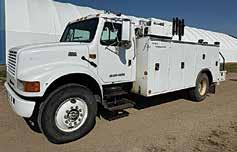
2001 International 4900, service truck, DT 466 diesel engine, 6+ plus transmission, Feterl 14 Ft service body, 8 compartments, on board Van air system, hydraulic out riggers, G2-6H Feterl crane corded remote, all steel wheels, 11R22.5 tires, rear drivers are very nice, shows 141,991 miles, 6,367 Hrs. this is a very clean service truck Comet 28 Ft single axle dry van trailer, 2 rear doors, trailer sells with an V-8 Detroit turbo diesel powered Synchronous Generator, 1,2,3 phase, 240 volts 200 KW 250 KVA, has multiple breaker box set up inside of trailer two fuel tanks, wall venting. The engine shows 1,321 Hrs.
Trailer mounted Kohler power system, generator, 6 cylinder John Deere Diesel engine liquid cooled, 3,662 Hrs. 100 gal fuel tank 208 volts multi-phase converter, Siemens phase converter
Berkeley 6 in water pump trailer mounted , powered by 50 Hp electric motor, 8 inch inlet, 6 inch outlet on pump, sells with a soft start power inverter, pump is like new and soft start is new with very little use.
New West Field WRX 8-41 Ft auger, Briggs & Stratton Vanguard 23 electric start gas engine, hand crank lift, new never used
2002 GMC 2500 4 door short box 4 X 4 pickup, 6.0 L gas engine Auto Trans, cloth interior split bench front seat, tow haul, B & W turn over ball, shows 256,711 miles
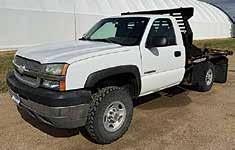
fixed dolly grain pup trailer, aluminum body, 18 Ft tongue, roll tarp, 16 in ground clearance, like new 285/75R24.5 tires
1981 Hobbs Fruehauf 41 Ft grain trailer, roll tarp, aluminum body, spring ride, hoppers 20 in ground clearance, 11R-24.5 aluminum wheels, rear pintle hitch and air.
Lot 15, West Field 10-61 mechanical swing out auger, 540 PTO, Wheat Heart 10 in jump auger hydraulic drive. Sakundiak 10-72 swing out auger electric drive not working, 540 PTO
2004 Wilray frame drop deck equipment trailer, 30 Ft overall length, 17 Ft from back of neck to the front of tires, 13 Ft from front of tires to end of trailer, 11.8 Ft wide, spring ride, tandem duals, 255-70R22.5 low pros.
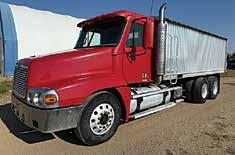
2012 Circle D 28 Ft tandem axle single wheel goose neck trailer, 80 inches wide between the fenders, fold down ramps 1973 Chevy C-30 Cheyenne, 4X2, 454 engine is stuck Auto Trans, custom made 9 Ft service body with built in fuel tank, 12 volt pump, shows 72,599 miles, really clean interior.
Boss 9.2 Ft V snow plow, new skid shoes, newer cutting edges, mount for 97 Ford F-350, has all electric controller box.
Fisher angle snow plow 8 Ft wide, mount for early 2000 Chevy 2500, has joy stick controller.
AMMCO 4 post auto service lift, 12,000 # lift capacity, electric over hydraulic lift motor, 17 Ft drive on deck, sells with 2 bridge jacks that roll down center rails, air over hydraulic lift
1993 Terry, 25 Ft bumper pull camp trailer two entry doors rear bedroom, fold down couch, bathroom, kitchen set up with fridge freezer, microwave, gas cook top with oven, table and chairs. Roof AC works
OPHUS
2004 Chevy 2500 regular cab bale bed pickup, 6.0 gas engine, Auto Trans, manual floor shift 4x4, rubber floor mat, hand crank windows, Am-Fm AC heat, sells with Hydra-Dec bale bed, hydraulic extendable arms, corded remote control, engine drive pump, seats are recovered professionally done, steel wheels with new rear tires fronts are very good shape, shows 98,830 miles.
2014 Polaris Ranger XP 900 EFI, power steering, PRNLH auto trans, 4x4, rear diff lock turf mode, dump box, aluminum wheels, solid glass windshield, solid glass rear window, soft doors with zipper windows, heater, grill guard, seats 3, shows 16,372 miles.
2018 Polaris Ranger 1000 EFI, power steering, PRNLH auto trans, 4x4, rear diff lock turf mode, dump box, aluminum wheels, solid glass windshield, manual wiper, poly rear window, poly doors passenger flip open window is missing, heater, grill guard, seats 3, shows 16,046 miles. Sells with a full set of Polaris brand tracks with very low use on them.
Leon-Ram 3100 3 Pt hydraulic blade 10 Ft wide, hydraulic angle, Hyd tilt, side shift, nice cutting edge. Serial # 806508 Model 3100A
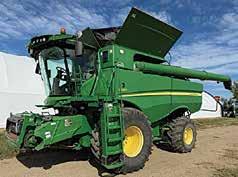
for new 5th wheel plate Summers 60 Ft heavy harrow, 24’ tine length 9/16 diameter, hydraulic tongue adjustment, manual tine adjustment, very clean like new condition, Serial # L353A.
2012 John Deere S680 small grain combine Marked 1, 473 Hp deleted 6 cylinder 13.5 L diesel engine, Hydro, header hydraulic quick connect, Contour Master fixed speed feeder house, GPS ready no globe, 400 bushel grain tank, straw chopper with power cast tail board, moisture on the go, 800/70R38 front tires, 28L-26 rear tires, shows 4,152 engine hours 2,462 separator Hrs., Serial # 1H0S680SCC0746962.
2012 John Deere S680 small grain combine Marked 2, 473 Hp deleted 6 cylinder 13.5 L diesel engine, Hydro, header hydraulic quick connect, Contour Master fixed speed feeder house, GPS ready no globe, 400 bushel grain tank, straw chopper, moisture on the go, 800/70R38 front tires, 28L-26 rear tires, shows 4,382 engine hours 2,605 separator Hrs.
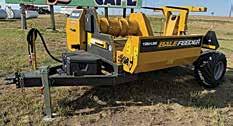

Windrow graze to reduce feeding expense
By Aaron Berger, Nebraska Extension Livestock Educator
Harvested feed costs can be one of the largest expenses for cattle producers. Windrow grazing, sometimes called swath grazing, is a management practice that can significantly reduce harvesting and feeding costs. Swathing the crop and leaving the windrows in the field provides several advantages.
Windrow grazing eliminates the costs of baling and hauling bales off the field. It also reduces labor and equipment costs associated with feeding as the cattle graze the crop in the field. Another benefit is that most of the nutrients and organic matter from consumed forage back to the soil where the crop was grown.
In Nebraska, 75-80 percent of seasonal precipitation falls in the six-month period from April through September. Only 20-25 percent of precipitation falls from October through March. This seasonality of precipitation allows for swathing forage crops in early fall and preserving them through the fall and winter with minimal deterioration in quality due to weathering. Cool, dry conditions frequently associated with late fall and winter in Nebraska are favorable for preserving forage in a windrow. Across Nebraska, the average amount of precipitation increases from west to east. Greater average precipitation in eastern
Nebraska does increase the risk of windrow deterioration compared to drier conditions in central and western Nebraska.
Windrow grazing of warm-season annual forages such as foxtail millet, sudan grass, and sorghum x sudan grass hybrids can provide an excellent way to harvest these forages when they are at an optimum for quality and efficiently utilize them with minimal waste. Windrow grazing of cool-season annual forages such as spring triticale, oats, and spring barley planted in late summer can provide high-quality feed for late fall and winter grazing as well.
When windrow grazing annual forages, nitrate poisoning is a potential risk. If possible, clip forages prior to swathing and have a nitrate test conducted to see what level of nitrates are present. If nitrates are high, raising the cutter bar higher can help to reduce the nitrate levels in forage placed in the windrow, as nitrates tend to be concentrated in the bottom third of the stem. Annual forages placed in the windrow should also be tested for nitrates prior to grazing. If nitrate levels are too high for grazing safely, the crop can be baled and then ground and mixed with other feeds to dilute the nitrates to a level that is safe for feeding.
NDSU Extension offers guidance for managing frost-damaged soybeans
An early frost in some areas has producers wondering what to do with immature frost-damaged soybeans.
“Soybeans killed at growth stages of full seed development and beginning maturity should be left out in the field to dry and harvested along with mature soybeans,” advises Ken Hellevang, retired North Dakota State University Extension agricultural engineer.
Hellevang explains that weather conditions during the field drying period after plants are frozen impact the color of the harvested soybeans. Soybeans at a maturity stage of R6 are expected to continue to change from green to yellow when exposed to sunlight while drying in the field to the desired harvest moisture content. The beans are expected to develop a golden yellow tone approaching that of mature soybean (R8), and the extracted oil is expected to change from green to a golden color as the chlorophyll dissipates with exposure to sunlight.
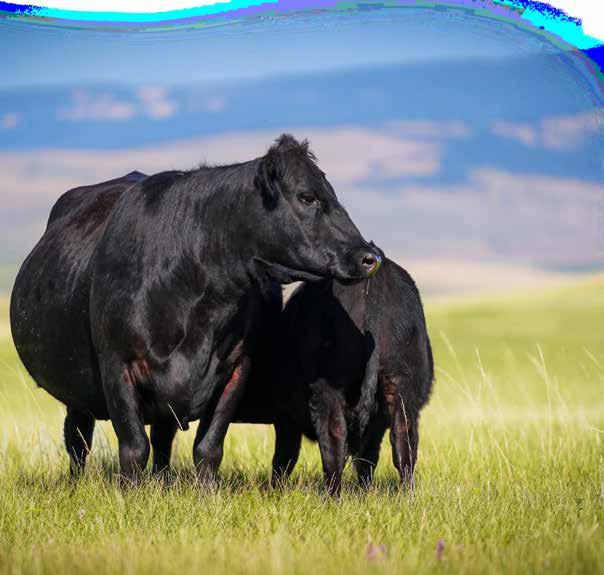
However, R6 soybeans that are field-dried during a period lacking in sunlight will likely exhibit a green tone to the golden color. Despite the bean’s yellow/green tone observed after field drying, little green color is expected in the extracted oil from the seeds.
Frozen soybeans may dry differently in the field than soybeans that were not frozen, so there may be different moisture contents within a field.
“Soybeans can trick grain moisture meters,” says Hellevang. “The outside of a soybean may be drier than the inside, resulting in an inaccurate moisture test.”
Hellevang recommends putting a sample of soybeans in a sealed bag for several hours at room temperature to allow the moisture to balance out and provide a more accurate reading.
Shatter losses have been shown to increase significantly when seed moisture falls below 11% and when mature beans undergo multiple wetting and drying cycles, so determining when to harvest may be more challenging with frozen soybeans.
Soybean moisture variation may lead to storage losses. Operating an aeration fan will help move moisture from wet beans to drier beans. Air going past wet beans picks up moisture, and that moisture will transfer to drier beans as the air goes past them. Moisture movement will be minimal without aeration airflow.
If there is a variation in harvest and storage moisture contents, Hellevang suggests initially running the fan longer than is required to cool the grain to even out the moisture content. The moisture will not be all the same, but it should become more uniform.
For more NDSU Extension information about soybeans, visit ndsu.ag/frostsoybeans.
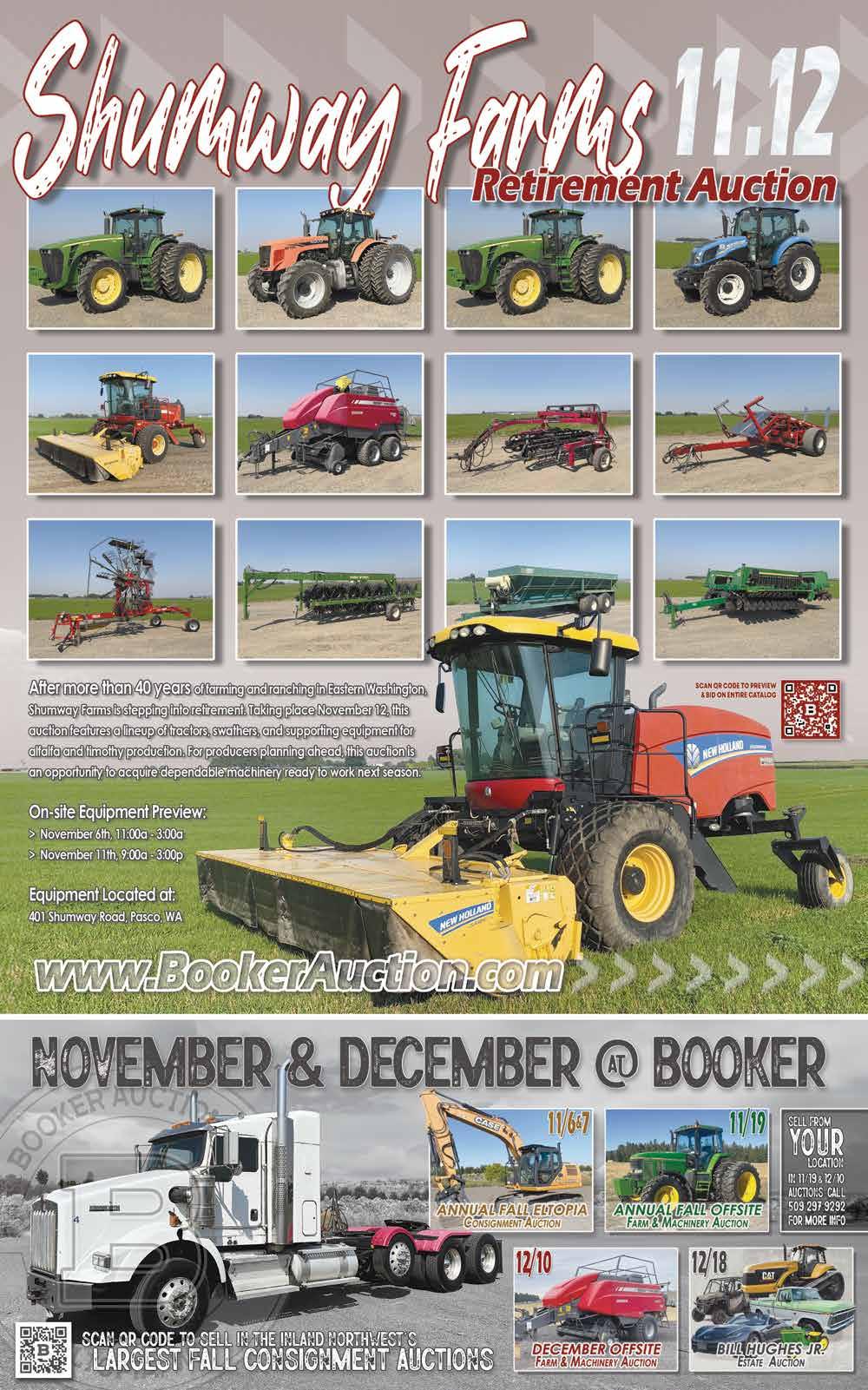
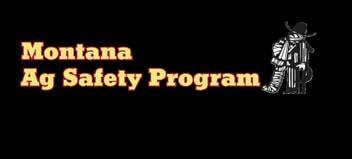
www.mtagrisafety.com
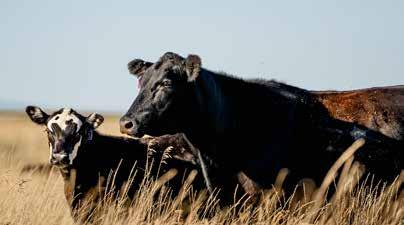
Montana State Steer-A-Year program seeks donations for 2025-26
The Steer-A-Year program in Montana State University’s College of Agriculture will return for the 2025-26 academic year and is seeking donations of young cattle and feed.
Housed in the Department of Animal and Range Sciences, Steer-A-Year combines academic courses with hands-on experience, exposing students to the many aspects of raising cattle. Students spend the year feeding, caring for and managing steers while also collecting data on feed efficiency and weight gain and studying livestock marketing.
For many students, the program is the
first time they have had direct contact with cattle, making it a hugely beneficial opportunity, said program adviser Hannah DelCurto-Wyffels.
“Steer-A-Year has now been providing life-changing educational opportunities at MSU for more than a decade,” she said. “It helps students prepare for their careers in tangible and applicable ways, in an environment that is supportive, engaging and approachable. We would not have been able to experience this kind of longevity as a program without the incredible donors and supporters who provide donations each year.”

Steer-A-Year accepts financial support or donations of steers, feed and other supplies. Donated steers are housed at the Bozeman Agriculture Research and Teaching Farm, and at the end of the academic year, the cattle are sold to MSU Culinary Services. The meat is served in both of MSU’s award-winning dining halls, Miller and Rendezvous, helping to fulfill the university’s commitment to using as many local ingredients as possible. Last year, Culinary Services purchased all 45 cattle raised by Steer-AYear students.
Proceeds from those sales support travel and other costs for student teams and clubs in the College of Agriculture, including to meetings with commodity groups and industry professionals, which DelCurto-Wyffels said allows for even more career networking and learning opportunities.
“Steer-A-Year helps our students gain literacy in every element of animal science while they engage with producers and professionals all over Montana,” she said. “Industry partners never fail to amaze us with their generosity and willingness to mentor the next generation of agricultural professionals, and we hope that learning process continues to go both ways.”
Annual awards are given to the producer who donated the best initial feeder steer, the steer with the top rate of gain, the steer with the best feed efficiency and the steer that produces the best carcass.
DelCurto-Wyffels said that calves should be weaned, castrated and dehorned before donation and should weigh between 500 and 800 pounds. The ideal pickup period for calves is the first two weeks of November. Those interested in donating steers or feed, providing financial support or learning more about the Steer-A-Year program can contact DelCurto-Wyffels at 406-994-3752 or hannah. delcurto@montana.edu.
Favorable moisture boosts outlook for winter wheat in western North Dakota
Despite making up a small share of North Dakota’s wheat crop, farmers planted about 120,000 acres of winter wheat in 2025, according to U.S. Department of Agriculture data released in March. This represents a 4% decrease from the previous year.
Even so, fall is a good time to consider the role winter wheat can play on your farm, whether as a cover crop or as a cash crop, says Victor Gomes, NDSU Extension cropping systems specialist at the Dickinson Research Extension Center.
Moisture conditions this season have been favorable, shares Gomes. Since May 1, much of western North Dakota has received close to 15 inches of precipitation. This contrasts sharply with fall 2024, when dry soils delayed germination and much of the crop did not emerge until spring 2025.
Given this year’s soil moisture, conditions look much better for establishing a strong winter wheat stand, says Gomes.
In addition to potential economic returns, winter wheat provides important ecosystem services. It maintains living cover and active roots through the winter, competes with winter annual weeds, and helps reduce soil erosion and water runoff.
NDSU Extension offers these recommendations for farmers considering planting winter wheat: Select the right variety for your region. Refer to the NDSU Variety Trial Selection Tool for winter wheat at https://vt.ag.ndsu.edu/list/ winter-wheat and the NDSU guide, Strategies for Selecting the Best Performing Varieties, available at ndsu. ag/varietyselection.
Use new seed. Do not plant saved seed, as it increases the risk of disease and poor stand establishment.
Consider a fungicide seed treatment. Depending on field history, a fungicide seed treatment may be warranted. Choose a product with multiple modes of action, including one effective against Pythium (FRAC 4 or 22) and one effective against Fusarium (FRAC 3, 7, or 11).
The optimum planting window for the southern half of North Dakota is September 15 to 30. Use higher seeding rates if planting after this window.
Plant wheat 1 to 1.5 inches deep in fall for the best establishment.
Use a seeding rate target of 900,000 to 1.2 million viable seeds per acre. Use the higher end of the range if planting after September 30. Crop rotation matters.
Winter wheat has the best chance of overwinter survival when planted into standing stubble such as canola, peas or lentils, which help catch snow and protect seedlings. Avoid planting after wheat, barley or corn to reduce disease pressure and break pest cycles, for example Hessian fly.
#####
In 1976, orange replaced the red color in M&Ms. Red Dye #2 and #4 were carcinogenic. This was known as the “Red Dye Scare”. Red M&Ms did not use these dyes. However, the company discontinued this color to avoid confusion… and lost sales. Red M&Ms came back in 1987.
you saw it in
Needing an irrigation or stock water project design?
Designs include pipeline hydraulics, pump recommendations, pipeline size, and pressure rating. Completed designs include a set of drawings that meet your needs. All projects are completed within approximately 30 days from the initial field visit. All projects will meet USDA-NRCS specifications.
• Licensed Professional Engineer
• Registered Technical Service Provider for USDA-NRCS
• Life time member of the Irrigation Association
• 40 years design and field experience.
If you are looking for an independent, non-biased design based on your business needs CONTACT: Randy Pierce PE, Oxbow Engineering, LLC (406) 600-8528 or email Kinseyk1d51@gmail.com
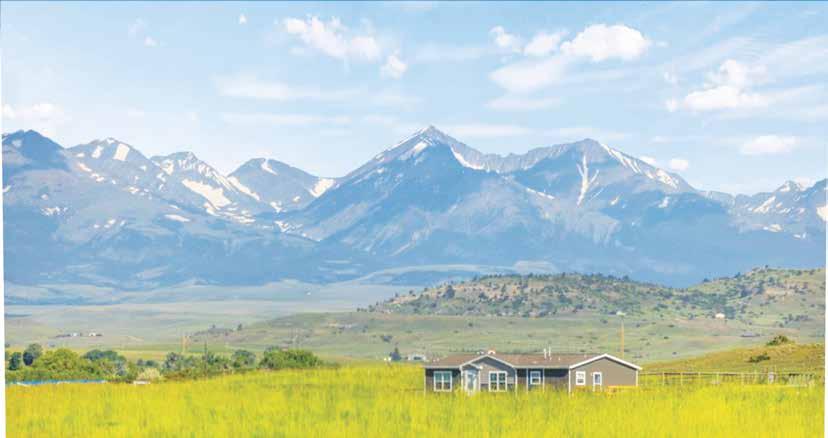

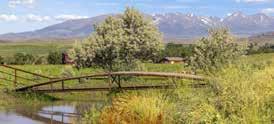
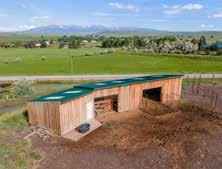
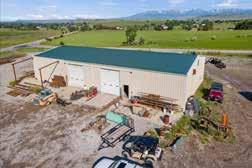
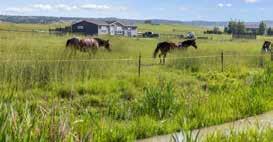


AUCTION 2025
Bidding Opens Nov. 1st

Preview in person on Tues., Nov. 11th from 10am-4pm or by appointment. First item closes November 11th at 6pm (MST)
Location: 5663 Yellowstone Trail, Huntley, Montana, 59037
Featured Items Include:
2005 Dyna Low Rider Harley Motorcycle, Firearms/Ammo, Flat Bed Trailer, Antiques, Sewing/Crafting Materials, Whiskey Barrels, Beer Steins, Camping/Hunting, and lots more!
Accepting Additions up until November 4th. For more details, call Shauna at 406-579-4262 to confirm your consignments.
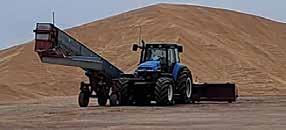



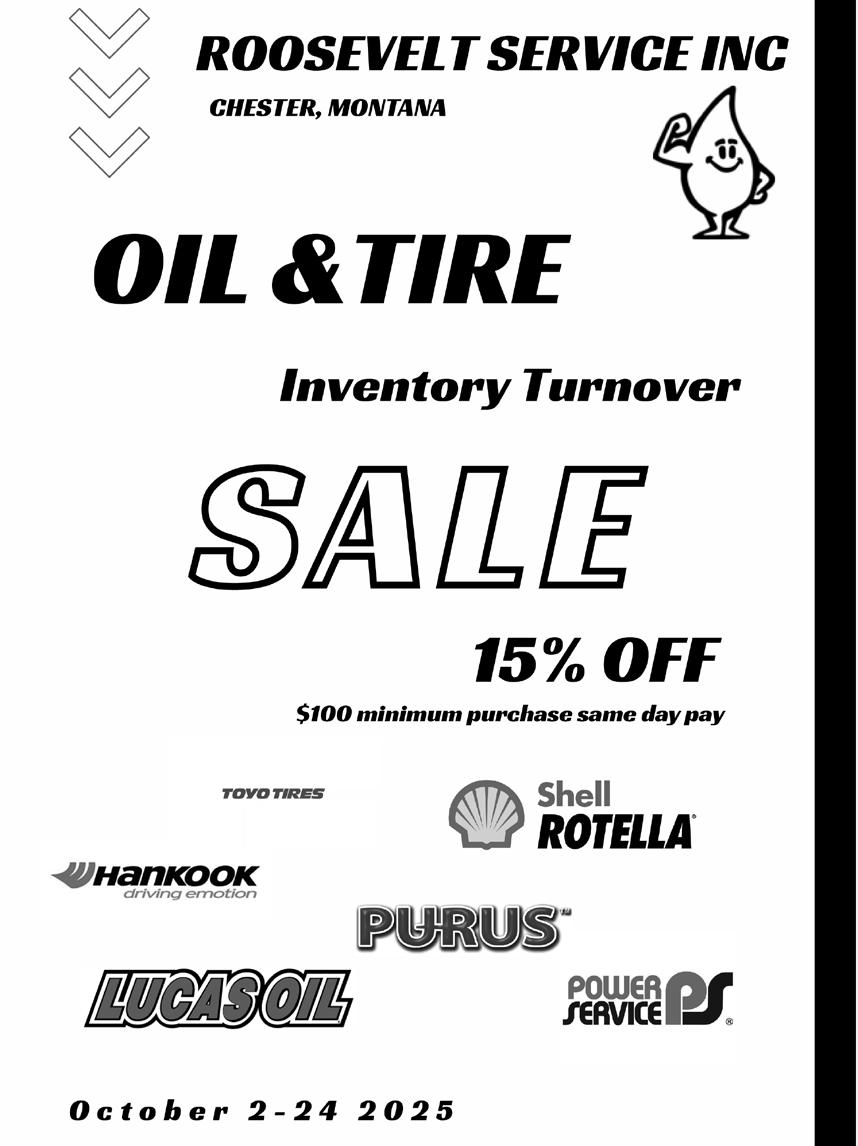
Register now for the Pesticide Education fall webinar series
By Amy Bowser, MSU Extension Private Applicator Certification and Training Coordinator and Dr. Cecil
Tharp, MSU Extension Pesticide Education Specialist
The MSU Extension Pesticide Education Program is offering a fall webinar series covering pesticide and pest management topics useful for Montana pesticide applicators, agricultural producers, homeowners and landowners. The series consists of four, one-hour webinars from October 27 to December 18. All webinars have been approved for pesticide license credits and Certified Crop Advisor credits. The webinars are free to attend, and all are welcome.
Riparian Takeover: Stopping Woody Invasives in Their Tracks
October 27, 12:00 to 1:00 pm
Megan Hoyer, MDA Invasive Species Education Coordinator
Woody invasive species like common buckthorn, Russian olive, and saltcedar are thriving in Montana’s riparian ecosystems--often at the expense of native biodiversity, soil health, and water resources. This session will cover how to identify these aggressive species, understand their ecological impacts, and implement practical, site-appropriate management strategies. Whether you’re a landowner, volunteer, or land manager, now is the time to take action to protect Montana’s waterways from the spread of these fast-growing invaders.
Navigating Regulatory Changes: The Endangered Species Act and Certification and Training of Pesticide Applicators
November 5, 1:00 to 2:00 pm
Dr. Cecil Tharp, MSU Extension Pesticide Education Specialist and Matt Deaton, MDA Pesticide Training and Development Program Manager
This presentation will provide pesticide applicators with crucial insights into recent regulatory changes affecting their practices, particularly those related to the Endangered Species Act (ESA) and certification of pesticide applicators in 2026. As federal and state agencies continue to evolve pesticide regulations, it’s essential for applicators to stay informed on new requirements to ensure compliance, protect vulnerable species, and maintain pesticide use.
The Status of Precision Agriculture in Montana: Current Trends, Research and Future Directions
December 4, 12:00 to 1:00 pm
Dr. Tim Seipel, MSU Extension Cropland Weed Specialist and Dr. Paul Nugent, Endowed Chair in Precision Agriculture
This presentation will offer an overview of Precision Agriculture in Montana, focusing on the current status of these technologies, the ongoing research, and how they are shaping the future of farming in the state. Precision Ag integrates advanced tools like GPS, sensors, drones, and data analytics to optimize farming practices, improve productivity, and reduce environmental harm.
Pesticide Storage and the Montana Pesticide Disposal and Recycling Programs
December 18, 12:00 to 1:00 pm
Matt Deaton, MDA Pesticide Training and Development Program Manager and Carli Davis, MDA Pesticide Disposal and Container Recycling Programs
In this presentation, we will explore best practices and legal requirements for the safe storage, transportation, and disposal of pesticides. These chemicals, while effective in pest control, pose significant health and environmental risks when mishandled. The Montana Pesticide Waste Disposal Program and the Pesticide Container Recycling Program will be covered in depth to reduce the risk of contamination, accidents, and long-term environmental harm.
Registration and More Information
To register for the webinar series or for more information on credits offered and details on using WebEx please visit the webinar series event webpage. Once you have registered you will receive instructions on accessing the webinars. For further inquiries regarding this event please contact Amy Bowser, (406) 994-5178 or amy.bowser@montana.edu.
Balkans
Comprising a mostly mountainous region in southeastern Europe, the Balkan Peninsula is bordered by the Adriatic Sea on the west and the Aegean and Black Seas on the east. Countries making up the Balkan states: Albania, Bosnia and Herzegovina, Bulgaria, Croatia, Greece, Macedonia, Romania, Serbia and Montenegro, Slovenia, and the European tip of Turkey. Balkan is the Turkish word for “mountain.”
Fall is a good time to use herbicides to control cheatgrass on pastures
By Mitch Stephenson, UNL Range Management Specialist, and Aaron Berger, Nebraska Extension Livestock Educator
Nebraska’s grasslands cover approximately 50 percent of the state’s land area. Grasslands are vital as a livestock forage base, but also provide other ecosystem services like wildlife habitat, water infiltration, and carbon cycling. Nebraska’s grasslands have multiple challenges, including woody plant encroachment, cropland conversion, and the invasion of annual invasive grasses, primarily cheatgrass (Bromus tectorum), in the western part of the state.
Cheatgrass is an invasive winter annual grass that typically germinates in the fall when adequate precipitation is present. However, cheatgrass is highly flexible in its germination date and can also germinate early in the spring, even with minimal precipitation. As a result of early germination and prolific seed production, cheatgrass is highly competitive and often out-competes native vegetation for limited
resources. Cheatgrass presence on rangelands is most prevalent in the Panhandle, with Banner, Scotts Bluff, and Dawes counties having the highest percentage cover of annual forbs and grasses Cheatgrass invasion into grazing lands is challenging because of its short growth window. Early in the growing season, nutritive value of cheatgrass often exceeds native perennial grass species, and cattle will graze and consume cheatgrass along with other cool-season native species growing at that time. However, later in the growing season, after cheatgrass has set seed, cattle will avoid consuming it. Recent research in the Panhandle has shown that areas where cheatgrass was removed with herbicide had crude protein levels 21 to 62 percent higher than untreated areas in mid-July, highlighting the negative influence of cheatgrass on cattle forage nutritive value in the midsummer.
Herbicide options for rangelands include application of imazapic (tradename: Plateau), indaziflam (tradename: Rejuvra), or a combination of both herbicides. The combination of both herbicides has generally provided better control over longer periods than herbicides applied alone. For example, an analysis of 5 locations in the Nebraska Panhandle where a combination of Rejuvra (5 oz) and Plateau (4 oz) were applied to rangelands in the fall of 2022 showed greater than 98 percent control of cheatgrass three years after the herbicides were applied. In this study, native perennial grass biomass averaged 2 to 3 times greater in areas where cheatgrass had been removed compared to annual grass invaded sites.
When considering using herbicide to manage annual invasive grasses, there are several things to evaluate. First, determining the loca -
tion of the treatment that will lead to the most opportunities for native perennial grasses to succeed. This includes actively monitoring pastures and selecting those that have a strong (several plants per square meter) presence of perennial grasses and forbs. Second, herbicide is typically applied in the fall and because germination of cheatgrass may have already occurred depending on the amount of precipitation, the combination of Rejuvra and Plateau is recommended to provide better cheatgrass control. Lastly, developing a grazing plan following herbicide will provide better opportunities for success. Adaptively managing grazing following herbicide application on rangelands by setting appropriate stocking rates and allowing growing season recovery based on variable growing season precipitation can be used to enhance desirable rangeland plants the opportunity to build resistance to re-invasion.
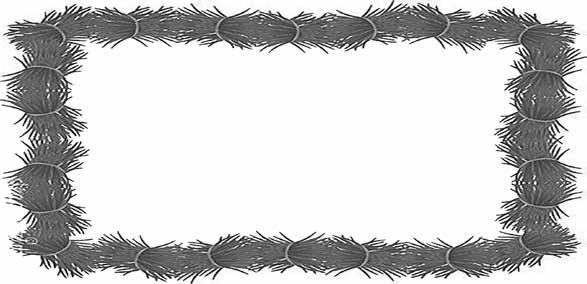


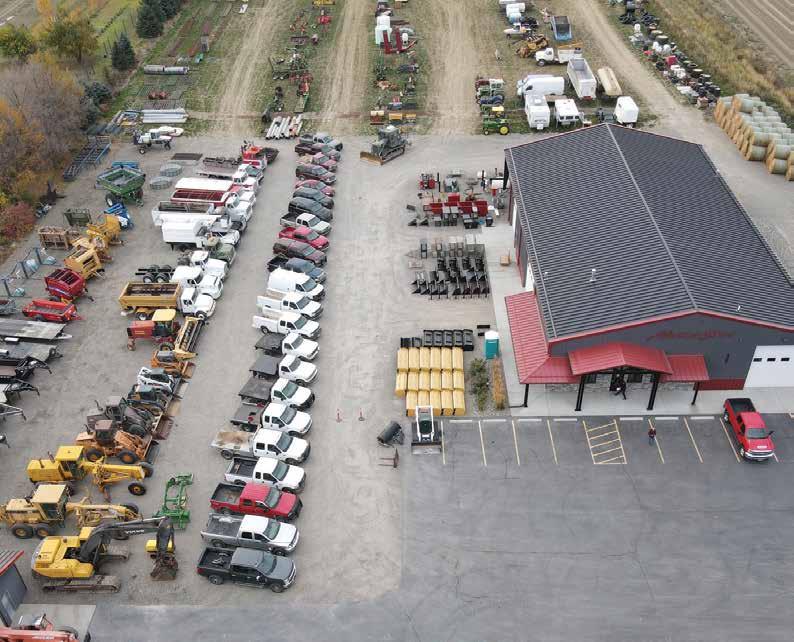













































We’d
Fort Benton Realty LLC


MarkPyrak 406-788-9280
Mark Pyrak 406-788-9280

Fort Benton Realty LLC 1426 Front Street, Fort Benton, Montana 59442 www.fbrealty.com • fbrealtyl@gmail.com
1426 Front Street, Fort Benton, Montana 59422 www.fbrealty.com • markpyrak@gmail.com
YOUR MONTANA FARM & RANCH REAL ESTATE BROKERS OVER 45 YEARS EXPERIENCE
We offer the BEST of Montana's BIG Sl(Y COUNTRY!
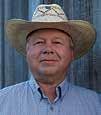
The USDA Natural Resources Conservation Service (NRCS) in Montana is accepting applications for all conservation assistance programs. While NRCS accepts applications for programs year-round, producers and landowners should apply for this opportunity by October 31, 2025, to be considered for this funding cycle.
''We offer over 40 years of real estate experience!'' Specializing in Equestrian & Horse Properties, Farms & Ranches, Lots & Land, Commercial & Residential, Auctions and Real Estate Consulting. Valerie Morger 406-750-2866
Specialing in Listing and Sales, Land Auctions and Real Estate Consulting
Shane Ophus 406-788-6662
Reach out to one of our real estate experts TODAY!
Mark Pyrak: 406-788-9280 • Valerie Morger: 406-750-2866
Shane Ophus: 406-788-6662 • Roger Axtman: 406-899-4098
“NRCS provides funding and technical assistance to help farmers, ranchers, and forestland owners implement conservation practices that improve their environmental and economic sustainability,” said Gayle Barry, Acting NRCS State Conservationist for Montana. “Conservation work focused on local outcomes with the support of local partners and land managers achieves meaningful conservation across a landscape. These opportunities are open to ag operations of any size.”
Are You Tired... of Buying Bulls that Fall Apart?
Dennis Franz: 406-788-1163 • Katie Schuler-Richter: 406-788-8370
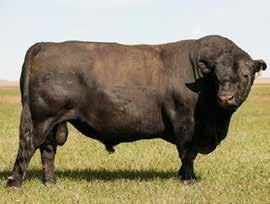

Conservation funding is available through the following programs for farmers, ranchers, foresters, and tribal producers and nations.
Environmental Quality Incentives Program (EQIP)
Conservation Stewardship Program (CSP)
Agricultural Conservation Easement Program (ACEP)
Regional Conservation Partnership Program (RCPP for individual landowners)
These programs may include locally prioritized initiatives. To learn about the financial assistance that can best help you meet your management objectives, visit your local USDA Service Center. NRCS conservation planners will help you evaluate your resource concerns, develop a plan to address those issues, and apply for financial assistance to implement planned conservation practices.
EQIP offers financial and technical assistance to eligible participants to install or implement structural and management practices on eligible agricultural land. NRCS Montana targets some EQIP investments in specific areas to achieve clearly defined natural resource goals as identified by local partners. This approach harnesses the power of multiple producers in one area undertaking similar conservation projects to achieve a regional or landscape-scale result. There are more than 100 local projects currently available in fiscal year 2026.
CSP is for farmers, ranchers, and forestland owners already taking steps to improve the condition of their working lands. CSP can help find new ways to meet resource and operation goals.
ACEP includes both Agricultural Land Easements (ALE) and Wetland Reserve Easements (WRE). Agricultural Land Easements help private and tribal landowners, land trusts, and other entities such as state and local governments protect croplands and grasslands on working farms and ranches by limiting non-agricultural uses of the land through conservation easements. Wetland Reserve Easements help landowners protect, restore, and enhance wetlands which have been previously degraded due to agricultural uses.
RCPP promotes coordination of NRCS conservation activities with partners that offer value-added contributions to expand our collective ability to address on-farm resource concerns. There are both land management and easement-based projects in Montana. This opportunity is open to producers and landowners eligible for current, active partner-led projects.
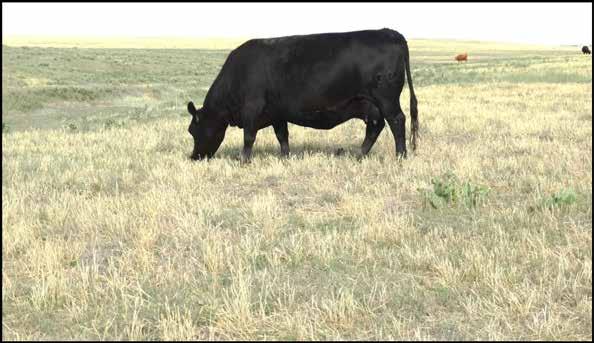
NRCS accepts conservation program applications yearround. Applications for the current funding consideration must be submitted by Oct. 31, 2025. Applications made after that date will be considered in the next funding cycle. Additional information is available on the Montana NRCS website at www.mt.nrcs.usda.gov. Contact your local USDA service center for assistance. Find contact information at www.nrcs.usda.gov/contact.
Producers can also apply for NRCS programs, manage conservation plans and contracts, and view and print conservation maps by logging into their farmers.gov account. If you don’t have an account, sign up today.
Minus Sign
In 1962 an Atlas-Agena rocket that was carrying the Mariner I satellite into space was launched from Cape Canaveral. Unfortunately, the rocket went off course and ground controllers had to push the self-destruct button. The whole thing exploded. Investigators found that someone had left a minus sign out of the computer program. Cost to U.S. taxpayers: $18.5 million.
Master Gardener: A jack of all trades, Master of the Garden
By Katie Markheim, Nebraska Extension Master Gardener
The Nebraska Master Gardener program is a horticulture-related volunteer training program based in many counties throughout the state. It has been part of the University of Nebraska-Lincoln Extension since 1976. The program extends the outreach of the University of Nebraska-Lincoln by providing volunteers with science-based horticulture education, which prepares them to share their knowledge with the citizens of the State. The program is more than its mission; it is a community rooted in genuine interests in plants, people, experimentation in the garden and landscape, and a love for lifelong learning. Master Gardener volunteers are trained by UNL Extension faculty and staff. They contribute time as volunteers working through their local Extension office to provide horticulture-related information to their community. More specifically, they provide education about sustainable horticultural practices.
Master Gardener training sessions are held at county offices throughout the state. Classes begin in February or March, depending on the location. Participants are required to complete 40 hours of training and 40 hours of volunteer service during the initial year of their involvement in the program. Master Gardener volunteers retain their certification through annual training and volunteering. Most locations conduct training during daytime hours, but some offer evening classes with online learning options. Class topics may vary slightly, depending on location within the state, but all classes will include information on in-
tegrated pest management, weeds, insects, diseases, plant selection (turf, woody, and herbaceous plants), landscape management, soils, fertility, and morphology.
While there is an opportunity to advance your skills and become a Certified Master Gardener, anyone can become a Master Gardener. The difference between the two is the expected amount of educational and volunteer hours. The program is flexible, allowing you to choose content by topic at your own pace.
As a Nebraska Extension Master Gardener Volunteer (NE-EMGV) Student, you are required to complete a minimum of 40 hours of education. Once you fulfill this requirement and pass an open-book test with a score of 70 percent or higher, you will be classified as a NE-EMGV Trainee. After completing an additional 40 hours of volunteer activities, you will officially become a Volunteer in the Nebraska Extension Master Gardener Volunteer Program. This title will remain with you until the next training sessions begin the following year. Classes are offered twice a year, starting in late January and October.
#####
1951 – Jack-in-the-Box is the first national hamburger chain to offer drive thru service.
#####
A study made in 2003 estimated that more than 25 billion chickens exist the world over. That makes the chicken the most populous bird on earth
Wesley Dagel
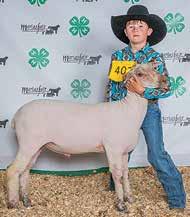


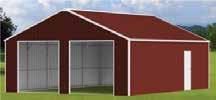
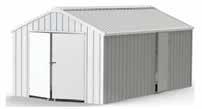


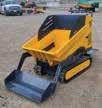
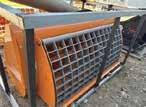
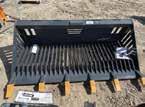
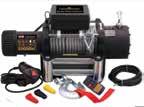







RETIREMENT SALE
FINALLY DOING IT!
1996 Flexi-Coil 39-ft. air drill with Bourgault mid-row banders, 12” spacing, 3450 mechanical tow behind cart.
1992 Cat Challenger 65B tractor with 7235 hours.
2001 Summers Superchisel, 40-ft. with harrows. 2009 Case/New Holland 1600 sprayer, 90-ft. booms. H&S 14-wheel rake.
Equipment located 7 miles south of Winifred.
HAY FOR SALE
400 ton 3x4 square bales. Feed analysis available. Call (406) 462-5666 or (406) 366-3100

202 North Central Avenue, Cut Bank, MT 59427 (406) 873-2984 l hilinecomm@gmail.com
Watch out for Whorled Milkweed
By Ben Beckman, Nebraska Extension Educator
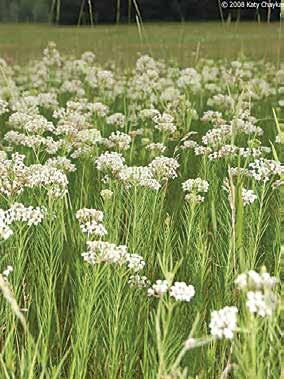
Whorled milkweed (Asclepias verticillata) has been showing up in more pastures and hayfields this year, raising concerns for both livestock safety and forage quality.
While milkweeds are native plants that support pollinators, some species—like whorled milkweed—can be toxic to livestock if consumed.
Knowing how to identify and manage this plant can help avoid losses and maintain safe forage systems.
Identification
Whorled milkweed is one of the smallest and most inconspicuous milkweed species, making it easy to overlook:
Growth habit: Slender, upright stems 1–3 feet tall, often forming small colonies.
Leaves: Narrow, linear leaves 2–4 inches long, arranged in whorls of 3–6 around the stem.
Flowers: Small white to greenish-white flowers in clusters at the top of the plant, blooming mid to late summer.
Fall Forage Seed Available
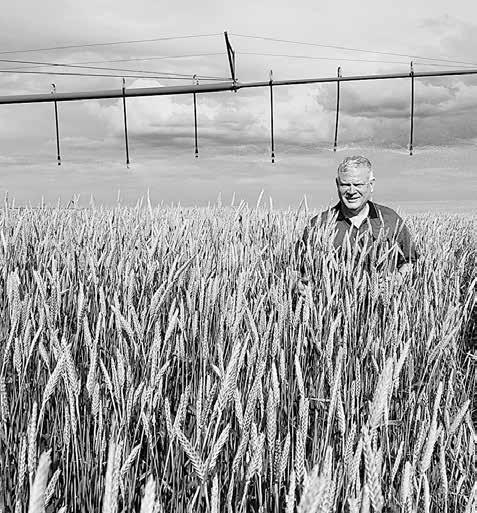
Latex sap: A milky white sap is exuded when leaves or stems are broken—a telltale sign of all milkweed species.
Roots: Deep, fibrous root system with rhizomes that help it spread.
Toxicity and Risk to Livestock
Whorled milkweed contains cardiac glycosides—compounds that interfere with heart function. It’s one of the most toxic milkweed species, especially late in the season or when dried in hay. Even small amounts can be dangerous.
Species affected: Cattle, sheep, goats, and horses are all susceptible.
Symptoms: Labored breathing, irregular heartbeat, muscle tremors, incoordination, and eventually death.
Toxic dose: As little as 0.1–0.5% of body weight in dried plant material can be lethal.
Treatment: Once clinical signs appear, treatment options are limited, and survival is often poor—making prevention critical.
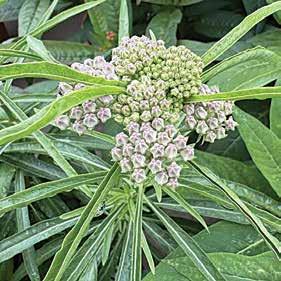
The biggest risk is contaminated hay, where animals may unknowingly consume toxic amounts.
Management Strategies
Early detection and prevention are key to reducing the risk:
Scout regularly: Especially in hayfields and lightly grazed areas. Pay attention mid to late summer when plants flower. Watch hay fields closely: Seeds can begin to form while plants are still flowering, so early control is important to reduce spread. Monitor purchased hay: Boughten hay can also be a source of contamination— visually inspect bales and ask about weed control history.
Avoid feeding contaminated hay: If milkweed is present in a hayfield, either avoid cutting or test bales visually before feeding. Grazing management: Livestock typically avoid milkweed unless other forage is limited. Maintain adequate pasture availability.
Control Options
Controlling whorled milkweed can be difficult due to its deep roots and ability to spread by rhizomes. An integrated approach is best.
Cultural Competitive forage: Promote dense, vigorous pasture species that reduce bare ground and outcompete seedlings. Avoid overgrazing: Weakens desirable species and opens the door for milkweed establishment.
Mechanical
Mowing: Can suppress seed production if timed before flowering but will not control root systems. May require repeated cuts.
Follow-up opportunity: If mowed midsummer, there is often enough time for regrowth to occur before fall, allowing for a fall herbicide application on the regrowth. Hand pulling: Effective in small patches, but roots must be fully removed.
Chemical
Herbicides can be effective, especially on young, actively growing plants or regrowth after mowing.
Herbicide Active Ingredient(s) Application Timing
Grazon Next HL Aminopyralid + 2,4-D Spring to early summer, before bloom
Milestone Aminopyralid Spring through early bud stage
Chaparral Aminopyralid + Metsulfuron Spring through early bud stage
Remedy Ultra Triclopyr Post-bloom or fall
Tordon 22K Picloram Spring through early summer
Grazon PD
(Gunslinger PD) Picloram + 2,4-D Spring through early summer
Note: Tordon 22K and Grazon PD are Restricted Use Pesticides. You must be a certified applicator to purchase and apply them. Be sure to check for and follow any grazing and/or haying restrictions. Always read and follow label directions carefully.
Summary
Whorled milkweed may be small and easy to overlook, but it poses a serious risk to livestock—especially when it ends up in hay. Knowing how to identify this plant, understand its toxicity, and apply the right
combination of prevention and control practices is key to reducing risk. Whether you’re managing native pasture or producing hay, staying vigilant and taking action early can help protect both forage quality and animal health.
Whirled milkweed can be toxic to livestock if consumed.




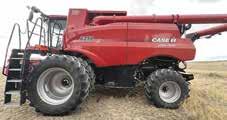

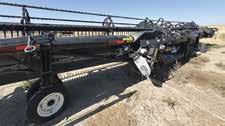

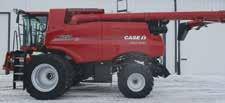
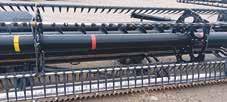
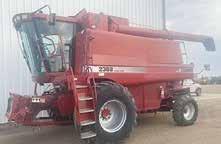
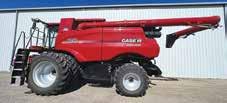
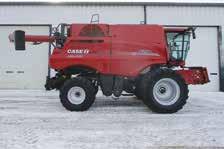
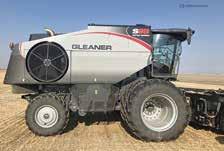

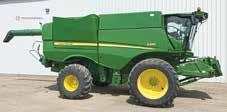
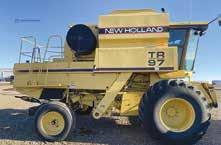
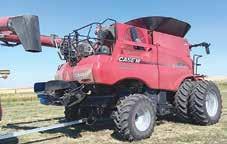
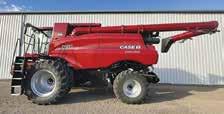

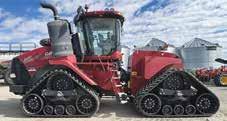
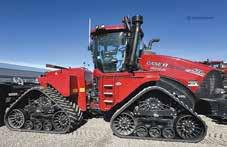
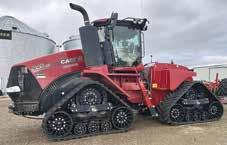
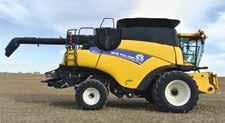
Far above average. Has manuals. Yield and moisture monitor, full guidance, Intellivew 4 display, chopper, 620/70R42 duals @ 65-70%, 600x65R28 rears @ 50-60%, competitive financing available. Stock #490232 $115,000
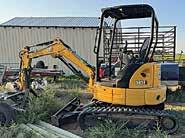

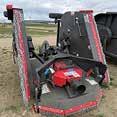










As the weather cools down, North Dakota ranchers have several options to consider for extending their grazing season, according to North Dakota State University Extension specialists.
Extended season grazing systems provide ranchers the opportunity to graze longer into the fall or even the winter, reducing winter feeding and overall production costs. These systems also have the potential to improve nutrient cycling, enhancing soil health and forage quality.
Several winter grazing strategies are available, including grazing annual forages, swath grazing and bale grazing. Extended season grazing options should be selected based on resources available and production goals.
“It is critical to select an approach that works as part of your production system,” says Kevin Sedivec, NDSU Extension rangeland management specialist.
Annual forages can be used to extend grazing in the fall or provide early spring grazing, depending on the species selected. For late-season grazing, annual forage mixtures should include a cereal or grass that is high in fiber and brassicas, which will maintain high forage quality even after a killing frost.
“When fall grazing winter annual forages, be aware of the risk for nitrate toxicity,” says Sedivec, “and consider testing prior to grazing.”









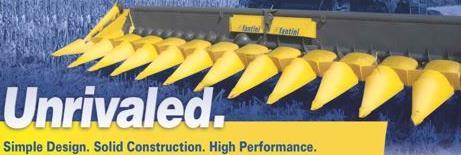
If the mix contains sorghum, sudangrass or sorghumsudangrass, there is a potential for prussic acid toxicity during or following hail or a frost. Fall-seeded winter cereals such as winter rye, winter triticale and winter wheat can provide early spring grazing and, when seeded early enough, fall grazing.
“One disadvantage of grazing annual forages is that they lose quality as they mature,” says Miranda Meehan, NDSU Extension livestock environmental stewardship specialist, “so supplementation may be required.”
Swath grazing can mitigate this loss in quality, as forages are swathed during the late summer when quality is high, then grazed in the swath in the fall and winter months. Bale grazing involves the grazing of baled hay that is placed in a tame grass pasture or hay field or on cropland, and it also addresses losses in quality associated with grazing a standing forage.
One limitation of extended season grazing strategies is the potential for increased feed waste, according to Meehan. However, implementing strip grazing, a method of limit feeding within grazing systems, can reduce feed waste and increase the number of grazing days. While this method may be more labor-intensive, research has shown an increase in grazing days when strip grazing. When grazing annual forages, strip grazing increased the stocking rate by an average of 47% and 23% in Nebraska and North Dakota, respectively.
Limiting access in a swath grazing access can reduce feed waste to 5% when moving daily, from 26% when moving every 10 days. In contrast, waste tends to be much higher in bale grazing systems — between 20% and 40%, depending on management. To put these numbers in perspective, the estimated loss when feeding hay averages between 15% and 40%, depending on storage and delivery methods. The amount of acceptable waste must be balanced with the labor required to move fence and the performance goals for the animals grazing.
“Extended season grazing systems improve nutrient cycling by directly distributing nutrients on fields and speeding up the breakdown of plant material into plantavailable nutrients,” says Sedivec.
These benefits vary between grazing systems and are dependent on the length of the grazing period. When grazing annual forages, changes in nutrient availability take time in North Dakota’s semiarid environment. However, most short-term studies have shown minimal changes in soil nutrients, but increased yields in the subsequent crop. Whereas long-term research has documented an increase in soil nitrogen, phosphorus and carbon.
Research has shown that bale grazing increases soil nitrogen, phosphorus and potassium after just one grazing period.
“Interestingly, we found that when supplementing cattle grazing bales, there was a greater increase in soil nitrogen where animals were fed a supplement with higher crude protein,” says Meehan.
In turn, these benefits to soil health led to improved forage quality — specifically, increases in crude protein and digestibility.
Cattle Chat: Fatigue, unusual behavior may signal anemia in adult cows
By Chevy-Lynn Vaske, K-State Research and Extension news service
When cattle start showing signs of fatigue, unusual behavior or pale coloring, it can be more than a passing concern. K-State beef cattle experts say these subtle changes may point to anemia — a condition that, if left unchecked, can affect the health and productivity of the entire herd.
“The primary signs of anemia include weakness, and cattle may become aggressive when approached,” K-State veterinarian Todd Gunderson said. “Producers should also check for pale mucous membrane, which is a strong indicator.”
Anemia can occur for several reasons, so Gunderson emphasized the importance of identifying the cause.
“It depends on the source of the anemia and the cause,” Gunderson said. “A hemorrhage, where the cow has lost a lot of blood, is one possibility. Red blood cell destruction is also common and often involves parasites, which can develop over just a few days. In rare cases, the cow may stop producing red blood cells, but that process takes a long time.”
According to the experts, certain breeds may show physical signs more clearly than others.
“In white-faced cattle, they can naturally have a pink hue to their nose, which is normal,” K-State veterinarian Bob Larson said. “But if the tissue is almost completely white, especially around the nose and eyes, that can be a sign of anemia.”
Veterinarians recommend monitoring cattle closely and consulting with a herd health professional if symptoms appear. Early intervention can improve recovery and prevent further health complications.

John Deere 4020
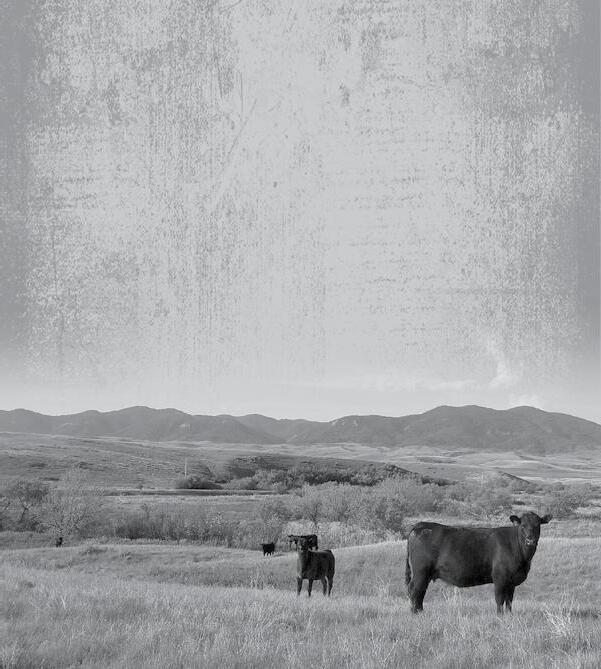
november 14 n th, 2025
SP10 Bale Processor
JD 950 Conditioner
2017 Case RBX Baler
2 Green Tank’s
Livestock Scale
Cattle Branding Chute 1
2007 Kenworth W900L
1984 Kenworth W900B
2010 Trail King 53 Ft. Step
Deck w/ hay racks
Hillsboro Flatbed GN
2020 Dump Trailer
Delta Horse Trailer
2008 Ford F-250 2000 Dodge w/ Bradford
2008 Dodge 5500 Service
Ford F550 w/ bale bed
Dodge 2500
Hay Trailer 42' extension Headache Rack Old Straight Deck Cattle Trailer. 1994 Freightliner FL70
Farmhand 450 Manure Spreader 3 Grain Augers
Feed mill
Powder River Hydraulic chute. Rowse Double 9 mower
1995 Ford F-250 Power stroke.
John Deere 330 Disc.
Oswalt D575 feed wagon
1996 Cat 928F Payloader New front End
Vermeer 605sm Round Baler
Cake Feeder Bale unroller
1984 Kodiak 70 Cat 3208 13spd Dump truck
Equipment Trailer
John Deere 310A Backhoe Rear blade
Gopher Getter
Post hole Digger
Service Trailer with welder and torch Bus
Converted to dump truck 4000 Feet water line.
Hesston stack mover
Small Augers Top Air 40ft Sprayer
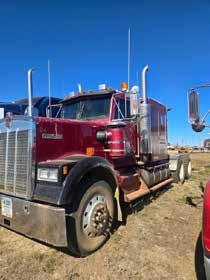
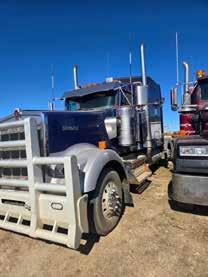
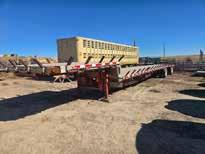

**There will be other items added to this list, we had to get an early ad deadline met, so refer to website for detailed information.** Auctioneers Note: We are not seeking any










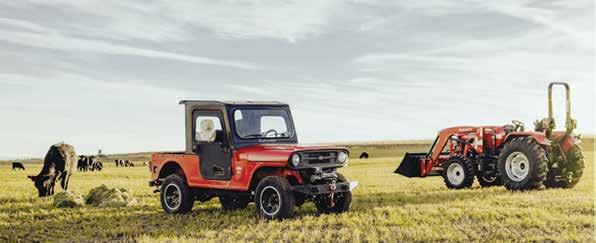



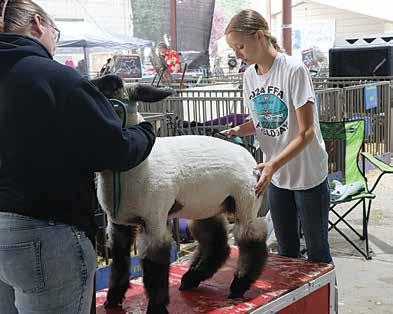
Goats take to arena and sheep prep at Scotts Bluff County Fair
By Chabella Guzman, PREEC Communications
FFA and 4-H youth gathered around the livestock arena at the Scotts Bluff County fair to watch friends and family members participate in the meat goat show on Tuesday, July 29.
Jaelynn Engel with the Fairview 50 Club had already shown her market goat, Fluffers. “We did good, we got 2nd in market class.” Engel had two goats at the fair. Along with Fluffers, she also had one named Butter. “They’re good but try to eat stuff like my hair and anything else.”
The meat goat show had begun early, and many of the youth had shown their goats. Sisters Rowyn and Bryndle Ozuna, with the Panhandle Livestock Club, were in several events with horses, goats, and sheep. Rowyn said she’d been showing horses for four years and did pretty well on Saturday, July 26. She was showing their Boer goats with Bryndle, her sister, who has a genetic disability that delays her motor skills and is non-verbal, but can do some signing.
“We’re just showing the goats this year, since they didn’t make weight,” Rowyn said. “I like them, they’re easy to show and have good personalities. I have sheep but also wanted to do goats.” Showing the smaller animals helps Bryndle with her motor skills and strengthens her muscles. The girls have been practicing outside of the ring for the big day. “I act like the judge and help her (Bryndle) set up her goat, to look at the judge and teach them how to get square.”
Not far from the Ozuna stalls, Lily Mosher with Gering FFA and her mother, Melissa, were shearing her sheep, Wanda, for Wednesday’s show. “They’re market sheep, I bought in February, they’re easy but can challenge you,” Mosher said. “She’s (Wanda) sassy, but nice and likes to chew on my fingers.” Mosher will keep her sheep after the shows for breeding and plans to show the babies in the future.
The shows continued on Wednesday, July 30, with the fiber animals and poultry show.
Awaiting her time to show Wrayla Fitts in the East County Cluckers Club was practicing with her Speckled Sussex Lady Featherton. “I got her one and a half years ago. They are calm and gentle, and I like the way they look,” she said. “The feathers are different colors and patterns.”
Fitts has been working with Lady Featherton for around six months to get a good relationship with her, so she’s easy to handle.
Fitts has a flock of about 30 laying chickens and has been showing chickens for two years. Along with Lady Featherton, she was also showing a Silver Laced Wyandotte, a layer.
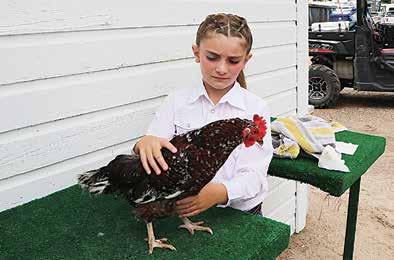
Wanda gets a trim before the sheep events on Tuesday from her owner, Lily Mosher.
Wrayla Fitts and her show chicken Lady Featherton practice before the show. All photos by Chabella Guzman.
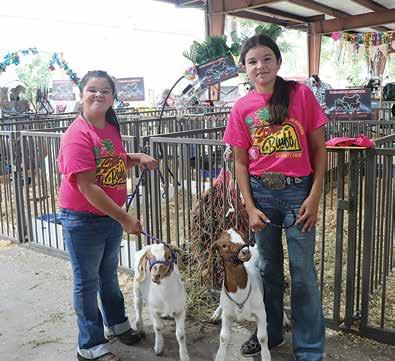
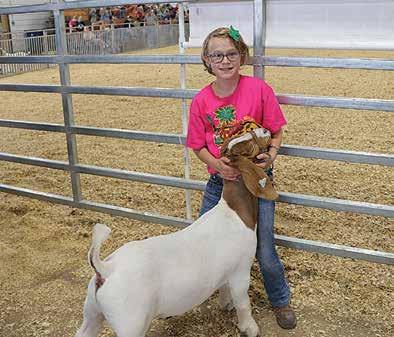
GRADER FOR SALE
2006
(406) 889-5660 or (406) 890-9064
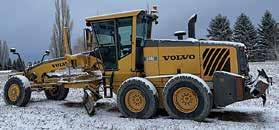



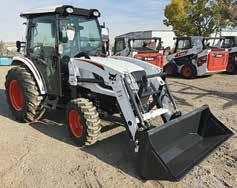


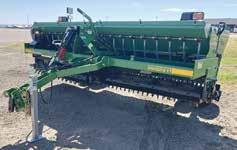
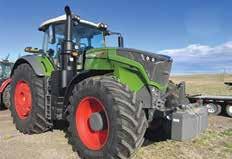
Here at Tilleman Equipment, helping
farmers and ranchers in the community is our priority.
Jaelynn Engel shows off her goat outside the show arena.
Bryndle, left, and Rowyn Ozuna and their Boer goats. They also had sheep and horses at the fair.

Over 1,200 Items Fall Auction
Unused Items: Approximately 200 + Unused made in USA skid steer buckets, Forks, Grapples, Multiple Fabric buildings; unused 14 ft. Gates; 20
7-10 ft. Steel work benches; Snow Plow s; Dirt blades; Skid Steer land levelers; GIYI Mixing buckets; SS Forks; SS Trencher; SS Stump Grinder; SS post driver; SS plates; SS Hyd. Forks; 10 equipment seats; Steel Property fencing; 100+ 2 x 27 Unused Ratchet Straps; Forklift Tele boom; 2 - Electric bikes; 6 - Toy Trucks, Excavators, Cranes; Unused Excavator Thumbs for
- Shipping Containers: Multiple
8ft. - 12 ft. models w/ doors & windows.
Cattle Related Items Large Selection Hydraulic WRS Chute,
100 - 24 ft. Panels 2 5/8 pipe frame, 68 inches tall, feet are 40 inches long. Top & bottom chains,
6 rows of sucker rod, 5 - Freestanding panels w/ 10 ft. gates; 2 -Freestanding panels w/ feed bunks, Unused 24 ft. Alleyway & more being listed at press time.
Heavy Equipment
2024 CAT 306 excavator w/ thumb, under 550 hours, nice, clean.
2017 CAT 306 Excavator w/ thumb, clean
2017 CAT 305.5 Excavator w/ thumb, clean
Kobelco SK135 SR Excavator, 14,000 hrs
2019 John Deere 324G Skid Steer w/ new tires
BobCat T300 Track Skid steer
1997 Caterpillar 416 4x4 backhoe w/ new tires, 5,500 hours, extra clean
4– SDLG25 Dumpers
4– China Made Rock Crushers
Expecting 12-14 China Made mini excavators & track excavators.
4– Unused SDLE20 Excavators w. Yanmar diesel
Case 780C backhoe; Multiple CAT D4 Dozers
CAT D6C w/ elec. start and powershift, tilt blade
Hyster 50 Forklift; BeGe 2-4 yard Scraper
ATV’s, Boats, Campers, Golf Carts
6 - Unused SDLanch model 80 & 100 electric golf carts
Multiple Unused 3 wheel Electric carts
2016 Honda Side x Side runs great
2001 Polaris 800 Snowmobile
2008 Yamaha FX nytro Snowmobile
2003 Honda Rancher 4 wheeler
2004 Polaris 700 four wheeler
Trail Rover 800 Cart; Yamaha Gas engine golf cart
Lumber: We have multiple semi loads of lumber, LVL beams, I-Joist, Trex Style decking, Siding, Trim Boards, lumber yard surplus, 46 Rolls of New House wrap; etc.
Antiques: Cast iron; old wagon wheels, Old wagon parts etc. many rustic items.
Truck, Semi Truck, & Implement Tires / Rims
We have a variety of steel 22.5 rims Various sets of semi truck tires. Several Sets of Unused Skid Steer tires some on new rims; Unused Steel Plate
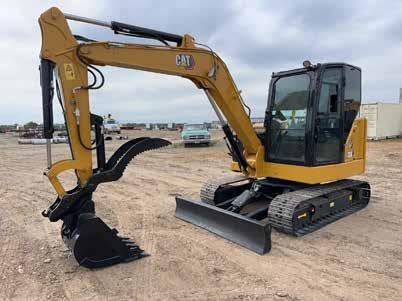
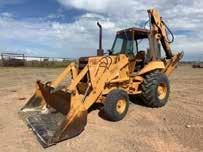
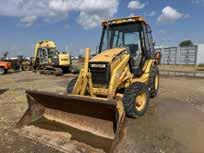
E350 Ambulance, 1953 Chevrolet 3100 3 - FC Jeep trucks
Studebaker Truck w/ V8
& 1968 Ford Mustang Projects 1966 Cadillac project; 1960’s Toranado 1964 Chevrolet Impala 2 - 1961 Chevrolet Impalas, one two door; 1965 Chevrolet Impala
1952 Dodge Power Wagon M37 truck
1979 Chevrolet 3/4 ton 4x4; VW project car Austin Healy Sprite Mini; Pair of old 1950’s Cadillac; 1920’s Dodge Bros Truck; 1950’ss Willys Jeep; 1995 Chevrolet Camaro; 1966 Pontiac Catalina Convertible; 1967 GP Gran Prix Pontiac VW bug Kit car; 1980 1/2 ton Chevrolet project
2007 Ford F350 Crew 4x4 w/ dead diesel
1960 AMC Ramble Sedan; 1965 Ford F350 truck
Multiple 1970’s Ford Truck Cabs, Multiple Chevrolet, Dodge & Ford take off beds Misc. Items
Unused Hobart Gas engine welder, Powder River Squeeze Chute; Rosco Tow Behind Sweeper; 8
Unused 2 post 10,000 lb car lifts; 6 Nitrogen tanks; 1,000 gallon Stainless steel tank; Multiple 500 galloon fuel tanks; Used Steel siding; Multiple sets of Used light truck tires & wheels; Gas Fired Hanging Shop furnaces; Wood Stoves; Old Ford Parts; Flatbed Truck panels; 2 - SA Big Tex trailers, Hobart welder, Speaker stands, Used oil tanks; We will have multiple rows of misc items. Used & Unused Garage Doors
About 10 total used, insulated garage doors, various sizes, some unused garage doors, all insulated. Check website for details.
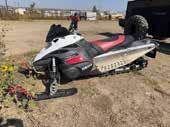
Multiple lots of 1/2 inch to 1 inch think steel plate, perfect for r oad plate or shop projects
Semi Trucks & Trailers
2002 Kenworth T2000 w/ good repair history
48 ft. TransCraft step deck w/ ramps
2007 Sterling w/ Terex BT4792 crane, low miles on truck, locally owned, good history.
Farm Tractors
Ford 600, Oliver 77; JD 3010; JD 4010; Minneapolis - Moline G707, more expected.
Haying Related
2 - John Deere 567 round balers
John Deere 535 Round baler
Round Bale Mover for Flatbed Truck
Multiple Skid Steer quick attach bale spears
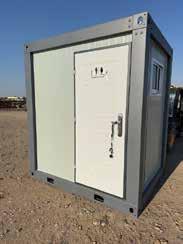
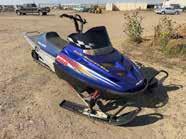
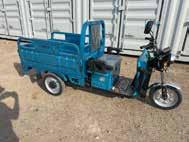
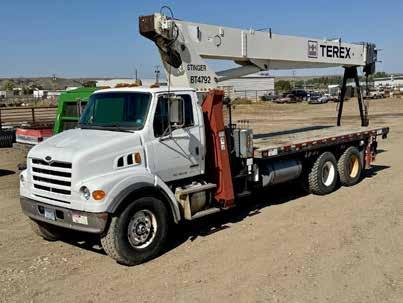
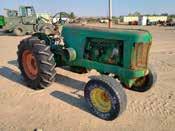
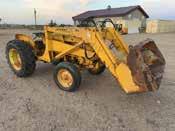
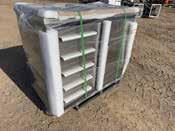
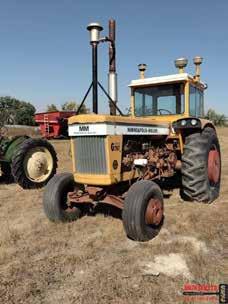
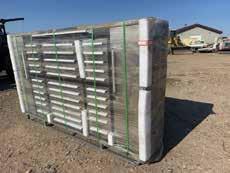

2024 Caterpillar 306 w/ 468 hours


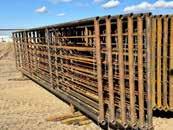


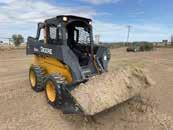
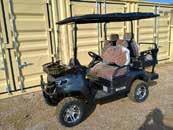
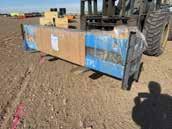

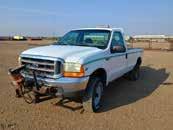
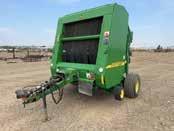
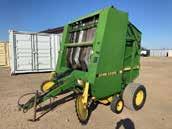
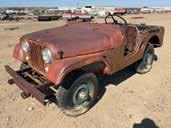
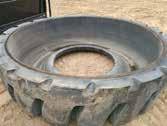

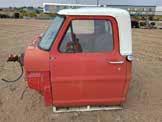
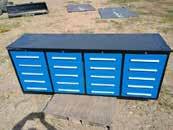
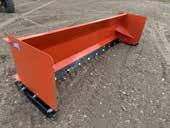
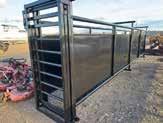


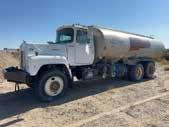

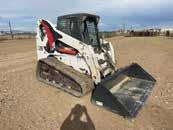
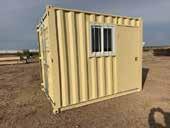

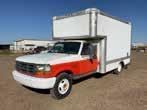
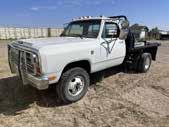
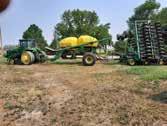
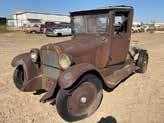

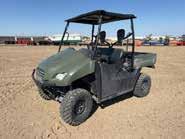
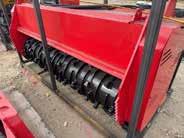

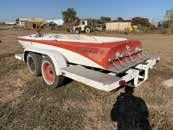
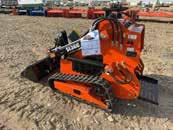
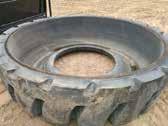
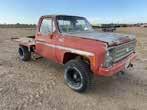
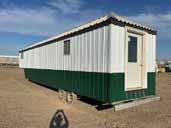

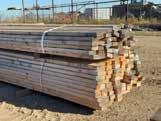
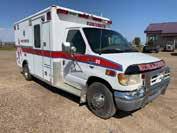
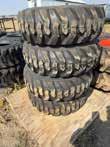
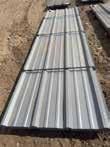
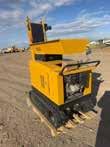
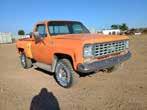


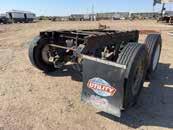
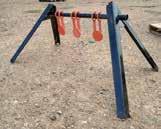
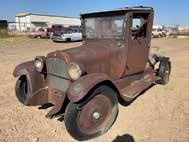

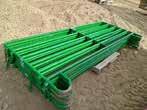
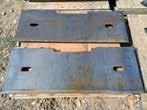
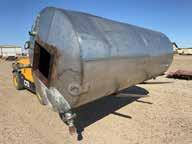
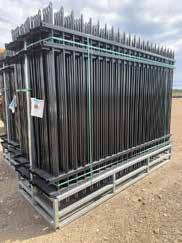

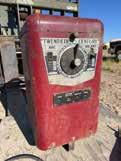
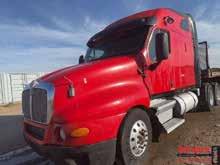



It’s not uncommon for a vampire bat to return to the same animal night after night, weakening and eventually killing it.
Sudden death syndrome in soybean: Tips for diagnosis and management
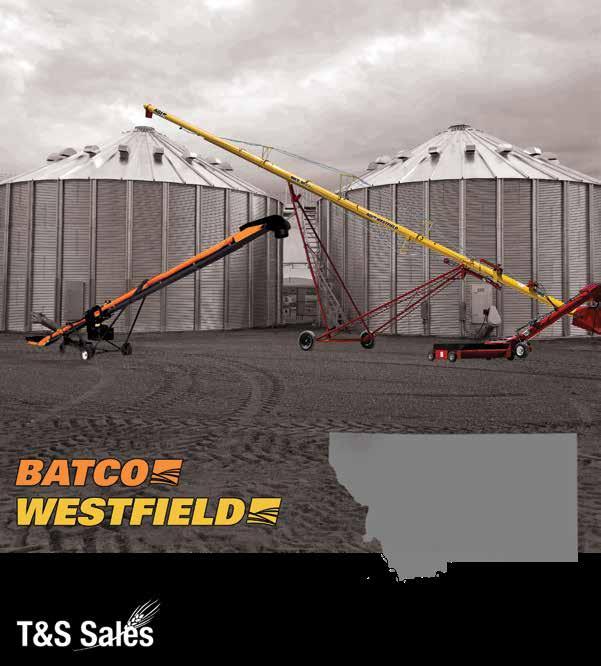


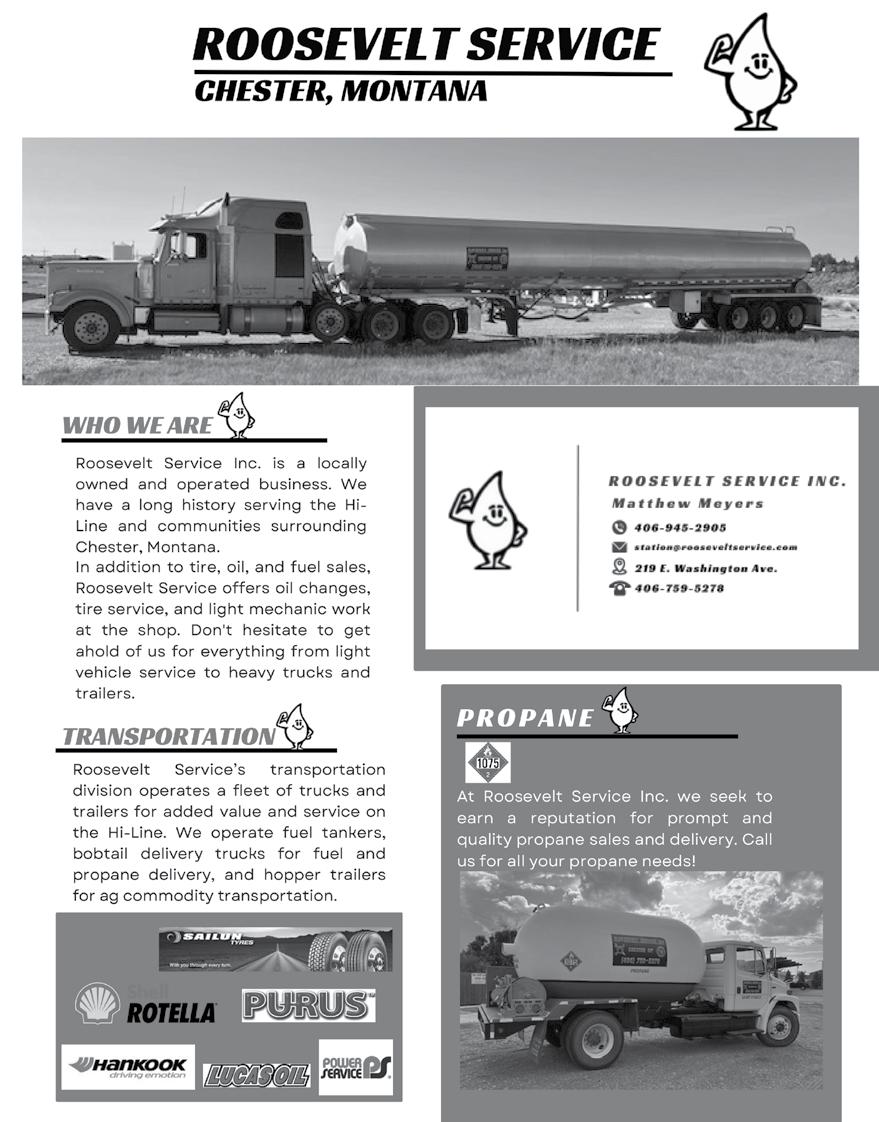
By Dylan Mangel - Extension Plant Pathologist, Ritika Lamichhane - Extension Educator
Soybean field with sudden death syndrome symptoms, inset close-up showing blue fungal growth on infected roots.
Sudden death syndrome is showing up across Nebraska soybean fields — learn how to identify this season’s infections and make management decisions for 2026.
SDS is appearing now in Nebraska soybean fields, with symptoms visible at R3 and later growth stages.
Cool, wet spring conditions set the stage for early infection; heavy rains around flowering intensified symptoms.
Scouting is critical to distinguish SDS from brown stem rot and other diseases.
Blue fungal growth on roots and petiole retention are strong SDS indicators.
Management focuses on resistance and timing: Use tolerant varieties, adjust planting dates in high-risk fields, and consider seed treatments for 2026 planting.
Sudden death syndrome (SDS) is showing up in soybean fields across Nebraska, with symptoms becoming more visible as plants move through late reproductive stages. While there’s no way to reverse yield loss this season, scouting now will help growers confirm disease presence, evaluate its impact, and make informed seed and management decisions for 2026.
The following overview highlights how SDS develops, key symptoms to watch for, and management options to consider for future seasons.
Pathogen
Cool spring rains and prolonged wet soil conditions after planting this spring promoted soybean infection from the soilborne pathogen (Fusarium virguliforme) that causes SDS. This fungal pathogen infects soybeans early and grows without observable symptoms often until late July or early August, when the interaction between stresses and plant development reveal symptoms that range from patches of foliar chlorosis to entire declining fields.
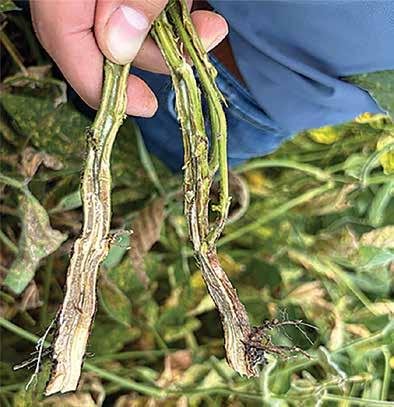
Disease Symptoms
Foliar symptoms of SDS typically do not appear prior to soybean flowering. Early symptoms at the R3 and later growth stages consist of the presence of chlorotic (yellow) spots on the leaves between veins. As the symptoms advance, the yellow spots may coalesce but stay between the veins at the leaf margin. Eventually, the yellow areas between the veins will become brown (necrotic) as the tissue dies.
Roots will exhibit a root rot on the tap root. The discoloration of the vascular tissue is contained to the outer stem area (xylem vessels) and can extend up the stem from the soil line. The pith will remain white, which is a key symptom to differentiate SDS from brown stem rot.
Split soybean stems showing brown crown discoloration from sudden death syndrome while pith remains white.
Pods may be aborted and plants may defoliate early. Defoliated plants will retain their petioles. Retention of the petioles is a symptom frequently associated with SDS. Symptoms on the root system are difficult to distinguish CONTINUED ON PAGE A24 #####
Figure 1. The crown of infected soybean stem is often discolored to brown or cream. (Ritika Lamichhane | Nebraska Extension)
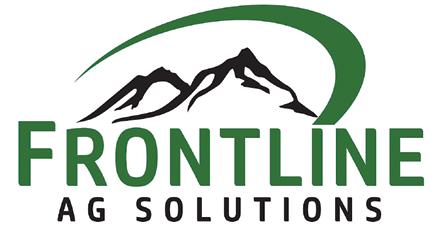
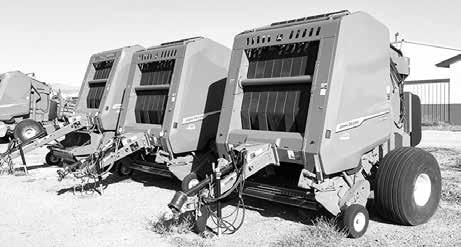
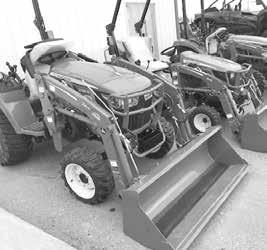

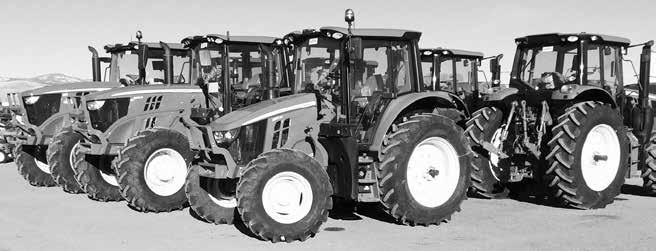
$62,000
(2) 2025 John Deere 561M round balers, level 4 heavy duty with Grease Banks, net wrap, moisture sensor, Cam clutch, approximately 6000 bales. Each.
(2) 2024 John Deere 561M round balers, heavy duty with Grease Banks, net wrap, scale & moisture sensor, Cam clutch, variable core valve. Stock #94158, 5132 bales, Stock #94159, 6130 bales. Each.
$62,000
2024 John Deere 8R 370 tractor with cab, MFWD, IVT transmission, right hand reverser, ILS suspension, 84 gpm pump, 22 front weights, 1500# rear weights per side. 787 hours. Stock #93637
$505,000
2024 John Deere 6R165 cab tractor, MFWD, IVT transmission, premium cab, premium seat, loader ready, triple line suspension, Panorama roof, 5 SCVs, rear weights, 480/80/46 rear tires, 420/90/30 front tires, 227 hours. Stock #93636. $247,500
$60,500
2024 John Deere 561M round baler, heavy duty with Grease Bank, net wrap, moisture sensor, Cam clutch, 4363 bales. Stock 94160.
2001 John Deere 567 round baler, 540 PTO, bale push bar, wide pickup, twine and net wrap, 20,700 bales. Stock #94180 $12,500
2019 New Holland RollBelt 560 round baler, MegaWide, net wrap, 1000 PTO, 10,915 bales. Stock #92963. $34,000
MISCELLANEOUS
2023 John Deere 344R wheel loader, high lift with 2.1 yard bucket, 2 speed, auxiliary hydraulics, 384 hours. Stock #93126.$172,500
2023 John Deere 320P backhoe, cab with heat/AC, MFWD, Extendahoe, thumb, auxiliary hydraulics, front quick attach. $139,200
John Deere 595 backhoe, 5M Series mounting brackets, 14” bucket, like new. Stock #89958 $13,000
2019 John Deere 260B backhoe 12” bucket, fits 1025R tractor. Stock #90942. $7500
2023 John Deere 50P excavator, cab, heat, a/c, rubber tracks, long arm with thumb, 378 hours. Stock #94102 $82,500
2024 John Deere 8R 370 tractor, IVT transmission, ILS, dual hydraulic pump 85 gallon per minute, 6 selective control valves, autonomy prep package, cab suspension, 480/95/50 rear tires with duals, 480/70/34 front tires with duals, 1800# rear weights, 22 front weights, 604 hours. Stock #94392
$462,500 (2) 2024 John Deere 8R 340 tractor with IVT transmission, right hand reverser, air seat, cab suspension, autonomy prep package, six selective control valves, 84 gallon per minute hydraulic pump, 420/85/34 front tires with duals, 480/80/50 rear tires with duals, 1500# each side rear, 22 front weights, 1300 hours. Stock #94390 & 94391. Each
2024 John Deere 6155M cab tractor MFWD with 640R loader & grapple, 20 speed PowrQuad with left hand reverser, AutoTrac ready less receiver, 3 SCV, beacon and work lights, triple link front suspension, mechanical cab suspension, Panorama roof, 2-450# weights each side, liquid ballast. Factory Warranty good till 7-25-2026 or 2000 hours, PowrGard Warranty good till 7-23-2030 or 4000 hours. Stock #93779, 233 hours. $215,000
$429,000
2023 John Deere 8R 340 Signature Edition, IVT with RHR, ILS, full GPS, 6 SCVs, 380/90R54 rear tires with duals, 380/80R38 front tires with duals, 291 hours. 6 year/4000 hour extended PowrGard Warranty. Stock #90254
$433,000
2024 John Deere 6155M cab tractor MFWD with 640R loader and grapple, 20 speed PowrQuad with left hand reverser, AutoTrac ready less receiver, 3 SCV, beacon and work lights, triple link front suspension, mechanical cab suspension, Panorama roof, 2-450# weights each side and liquid ballast. Factory Warranty good till 7-25-2026 or 2000 hours, PowrGard Warranty good till 7-23-2030 or 4000 hours. Stock #93780, 403 hours. $215,000
2023 John Deere R500 16-ft. header, steel conditioner. Stock #91200.
$52,500
(2) 2024 Twin Star 2030 G3-7 hydraulic V rakes. Each. $37,500
(2) 2018 New Holland 216 hydraulic rake. Stock #88660 & Stock #91171. Each.
$19,500
2005 Vermeer R23A hydraulic V-rake. Stock #94148 $8500
1995 Western 12-ft. rigid roller harrow. Stock #93978. $3900
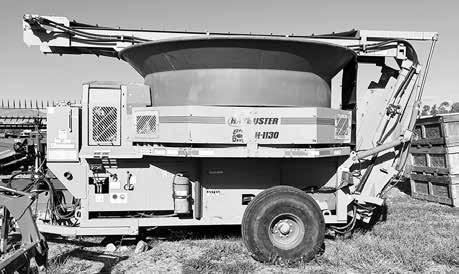
2016 Haybuster H-1130 tub grinder, large 1000 PTO, round & square bales, 26-ft. conveyor. Stock #94643. $62,000
Bale King Vortex 3000 round bale processor, left hand discharge with hydraulic deflector chute. Stock #92911. $8500
Woods SB74C snowblower with manual discharge $4949
Woods BO72RC 72” rotary cutter $4290
Woods TK72 72” finish mower. Stock #84419 $4600
2024 Stinger 6500, poly rails, 1300 hours $335,000
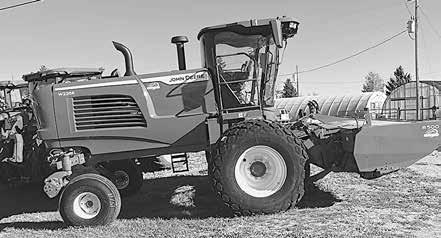
2022 John Deere 8R 310 IVT with RHR, ILS, full GPS, 6 SCVs, 480/80R50 rear tires with duals, 420/85R34 front tire with duals, 1257 hours. 6 year/4000 hour extended PowrGard Warranty. Stock #90255.
$373,000
2022 John Deere 7R 290 cab tractor, MFWD, IVT transmission, Command Pro, air seat & cab suspension, triple link suspension, front & rear fenders, Ultimate Visibility package. PowrGard Warranty good till 10-23-2029 or 5000 hours. Which ever comes first. 603 hours. Stock #91693
2023 John Deere 6110M cab tractor, MFWD, 24 speed PowrQuad with reverser, 3 SCVs, 30 gpm hydraulic pump, rack & pinion rear axle, cast wheels, 3 function loader ready, mechanical cab suspension & Panorama roof. Factory Warranty good till 4-182026, Powertrain Warranty good till 4-17-2030 or 4000 hours. Stock #93207. $142,500
$328,000
2024 John Deere 6R215 cab tractor, MFWD, IVT transmission, AutoTrac ready less receiver, ultimate cab, cab suspension, triple link suspension, 5 SCVs, rear duals, front & rear weights, 416 hours. Stock #93200.
2023 John Deere 6110M cab tractor, MFWD, 24 speed PowrQuad with reverser, 3 SCVs, 30 gpm hydraulic pump, rack & pinion rear axle, cast wheels, 3 function loader ready, mechanical cab suspension & Panoram roof. Factory Warranty good till 4-182026, Powertrain Warranty good will 4-17-2030 or 4000 hours. 502 hours. Stock #93208. $140,000
$302,500
2024 John Deere L341R large square baler, 6500 bales, tandem axle, auto grease, moisture sensor and wide pickup. Stock #94389 Call for pricing
2023 John Deere 6105E cab tractor, MFWD with H-310 loader and grapple, air seat, 3 SCVs, 24/12 transmission, rear wheel weights, and ballast in rear tires, 427 hours. $114,500
2018 New Holland T6.170 cab, MFD, 16 speed, Dual Command transmission, 845TL loader & grapple, 888 hours. Stock #86681. $126,000
$174,000
2023 John Deere L341 square baler, moisture sensor, auto grease basic. Stock #93777.
Massey-Ferguson 2290 large square baler, 4x4, 29,000 bales
$102,500
New Holland T6.165 cab tractor, MFD, 16 speed Powershift transmission, 3 SCVs, 855LA 2 function loader 1220 hours. Stock #92103. $110,000
2015 New Holland T7.210 T4A MFD, 165 hp, Powershift, 3 SCVs, 2380 hours. Stock #91852. $120,000
2023 John Deere 5090E cab tractor, MFWD, 12/12 transmission with left hand reverser, loader ready, air seat, 3 SCVs, approximately 700 hours. Factory warranty good till 10-2025, Powertrain good till 10-2028 or 3500 hours. Stock #91752. $68,500
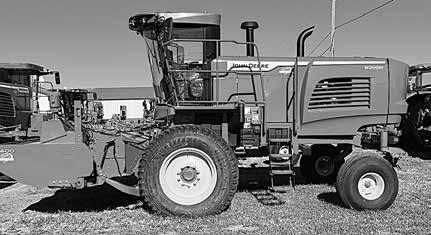
We’d appreciate it if you tell an advertiser you read his ad in the
TRUCKS & EQUIPMENT FOR SALE
2003 International 9400I Eagle semi, 5th wheel truck, Cat engine, 26-ft. end dump trailer and roll tarp.
1997 Kenworth T800 truck, Detroit engine, 20-ft. box with hoist, beet and grain endgates, and a roll top
Krause 20-ft. offset disc (new blades in front).
John Deere 71 flex 8-row corn planter on a 24-ft. stackable bar.
Allis Chalmers 1300 30-ft. ripper with rakes.
Safety pull with a bull hitch. John Deere front suitcase weights and International front suitcase weights.
Text or call Greg Keller at (406) 679-1136

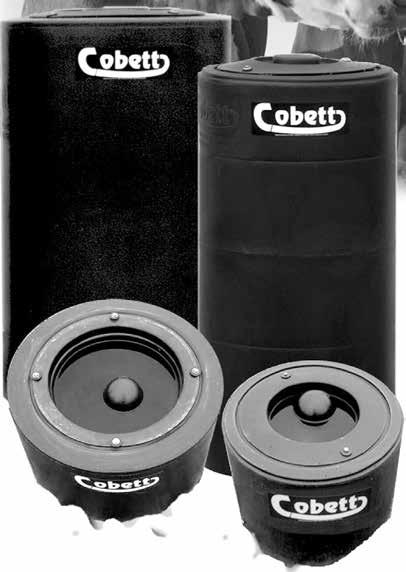
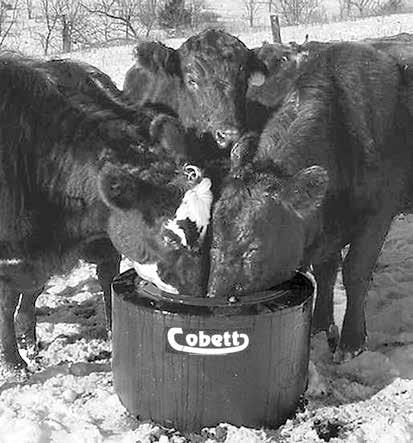
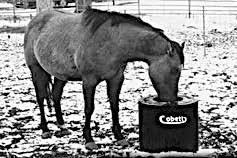
• Earth Heated
• Low/No Traffic, OK
• No Concrete, OK
• Open Drinking Area
• Bull Tough
• Easy Plumbing Access

Sudden death syndrome in soybean
CONTINUED FROM PAGE A22

from other soybean root rots. When roots are removed from soil, the fungus is sometimes visible on the outer root surface. In some, but not all cases, this fungal growth will be blue.
Soybean rows showing sudden death syndrome symptoms, with yellowed patches in susceptible varieties between tolerant rows.
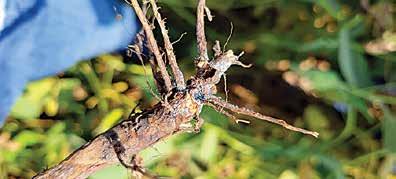
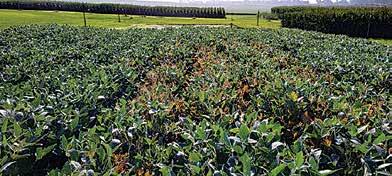
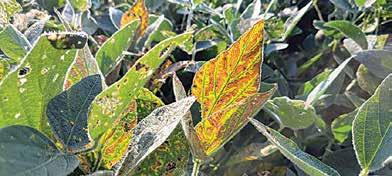
Favorable Environmental Conditions
SDS is favored in high-yield environments. The disease is more prevalent during cool, wet growing seasons and favored by early planting in cool soils. Hot, dry weather appears to slow disease development, but depending on the stage, it can become severe under these conditions. Heavy rains around the flowering time promote foliar symptom development.
Management
Genetic Resistance
Soybean varieties with moderate to high levels of resistance to SDS are available. Varieties with partial resistance or tolerance to SDS should be considered in fields known to be affected by this disease. These varieties will not prevent disease completely, but they can protect yield.
Cultural Practices
Avoid early planting in fields know to be severely affected by SDS. Rotation out of soybean production and maintaining good crop nutrition have been shown to reduce the severity of SDS.
Chemical/Biological Control
There are chemical seed treatments that provide protection against SDS. Find up-to-date efficacy information on product performance at the crop protection network or in the “Guide for Weed, Disease, and Insect Management in Nebraska” (Nebraska Extension NebGuide EC130).
Figure 2. SDS symptoms differ between tolerant varieties and susceptible varieties. This image shows four rows of a tolerant variety planted between two susceptible varieties. (Dylan Mangel | Nebraska Extension)
Figure 3. Blue growth of the Fusarium virguliforme fungus growing on soybean roots. This blue growth is more commonly found on infected plants in southeast Nebraska. (Dylan Mangel | Nebraska Extension)
Figure 4. A pocket of SDS-infected plants in a demonstration plot at the Eastern Nebraska Research and Extension Center near Mead. (Dylan Mangel | Nebraska Extension)
Figure 5. Foliar symptoms of plants infected with sudden death syndrome. (Dylan Mangel | Nebraska Extension)
What’s in your manure? Keeping plastic and other junk out of your fields
By Leslie Johnson – UNL Animal Manure Management Extension Educator
If you’ve ever looked out over a freshly fertilized field and noticed a tangle of net wrap or a bit of old plastic poking out of the soil, you’re not alone. Recent work on my own farm reminded me of something that might be bugging you too: finding plastic and other junk in livestock manure and worse, seeing it show up in the field.
We all know that a good, clean manure application is important for soil health, crop performance, and even how our operation looks to others. But getting there takes more than just spreading what’s in the pit or pile. It starts all the way back at the feed source and it follows through every step from pen to crop harvest...using preventative common sense.
Plastic wrapped around planter closing wheels can cause bearing problems along with crop residue build up on rollers and potential issues with planting depth.
One of the biggest culprits I see is net wrap and twine. Look, I get it, it’s tempting to just toss a whole bale into the feeder or tub grinder and keep moving. We’re all busy. But that plastic wrap doesn’t just disappear. If animals don’t eat it (which can cause serious health issues), it gets collected with the manure and ends up in the spreader. From there, it makes its way to your field or worse, into your equipment.
Let’s not forget about wildlife either. They can ingest plastic or get tangled in it, leading to injuries or death. So, take an extra minute to remove that wrap and twine properly. It’s a small step with big impact.
Whether your animals are housed inside or out, stuff happens. Tools break. Gloves and tags fall in. The wind blows in plastic grocery bags or feed sacks. Bits of wood rot and fall apart. And sometimes, concrete chips away during pen cleaning.
All of that can end up in manure. So regular pen inspections and quick cleanups are key. The more junk you pull out early, the less ends up in the pit, pile or field.
This is also a good time to talk about mortality management. If an animal dies in the pen and isn’t removed quickly, it can spread disease and breed flies. Also, over time, bones and tissue decomposing in pits clog up pumps and spreaders. A quick daily walkthrough can catch these issues early and keep your system flowing the way it should.
When manure is clean, equipment runs smoother; spreader beaters are less likely to jam, and hoses don’t plug as often. And when it’s time to apply ma-
nure and let’s be honest, we’re usually racing against weather, that reliability is priceless. But it’s not just about avoiding breakdowns during application. Foreign materials left in the manure can cause problems later. I’ve personally pulled net wrap off closing wheel bearings on our planter more times than I’d like to admit. I’ve heard horror stories of twine messing up tillage tools and concrete chunks being sucked into windrowers, balers, and combines. None of that is cheap or quick to repair.
A little bit of maintenance up front saves a lot of frustration down the road. Whether it’s removing twine from bales, picking up fallen tools, or walking pens to check for debris, every step you take keeps manure and fields cleaner and safer. Let’s keep plastic and other junk out of manure and off fields. Crops will grow well and uniformly, equipment will run smoothly, and you will have peace of mind.
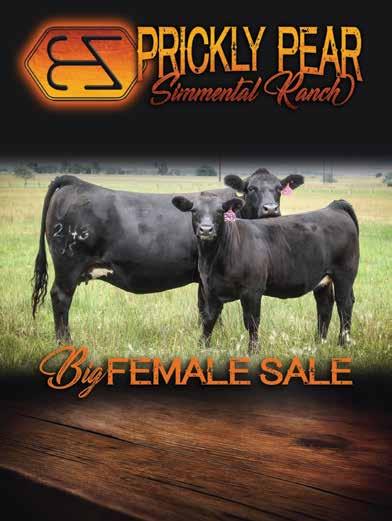
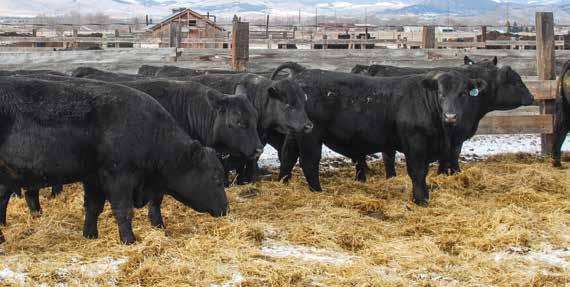
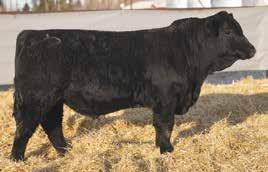
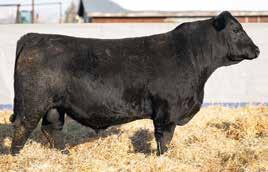
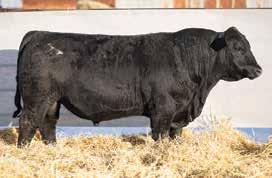
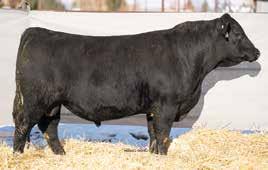




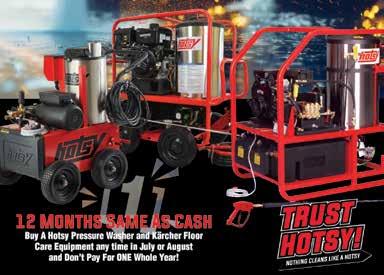
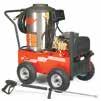

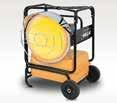
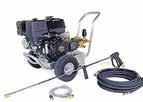
West Nile virus update
Written collaboratively by Adam Varenhorst, Amanda Bachmann, Stephen Robertson, Philip Rozeboom, Patrick Wagner, and Bradley McManus.
As of September 10, 2025, the South Dakota Department of Health (SD DOH) indicated that West Nile Virus positive mosquito pools have been detected in Beadle, Brookings, Brown, Codington, Hughes, Lincoln, and Minnehaha counties in South Dakota. So far, there have been 59 reported human cases of West Nile virus from Beadle, Bon Homme, Brookings, Brown, Charles Mix, Codington, Corson, Grant, Gregory, Hamlin, Hand, Hughes, Hutchison, Hyde, Lawrence, Lincoln, Marshall, Meade, Miner, Minnehaha, Pennington, Sanborn, Spink, and Walworth counties. The human cases in South Dakota are considered at a moderate level, and the SD DOH is predicting 125 cases for 2025, which would be an outbreak level.
Case numbers are currently moderate and have been steadily increasing each week. It’s important to remember that evening activities should be monitored and an attempt to avoid mosquito bites should be made. There are two mosquito species that account for most of the human bites and the risk associated with contracting the West Nile virus. Another previous article discusses practices that can reduce mosquito bites.
Mosquito populations are higher in South Dakota this year due to ample precipitation that was received throughout much of the state. One step in reducing mosquito populations is to ensure that there is not standing water in old tires, buckets, or anything that can serve as a container. Mosquitos utilize these habitats and removal can help reduce mosquitos. If you are outside after dark, make sure to cover as much of your skin as possible by wearing long sleeves and pants. We also recommend using insect repellants that contain DEET or similar active ingredients to provide further protection. The U.S. Environmental Protection Agency provides a helpful tool for choosing a repellant that will provide the best protection based on the desired activities.
Mosquitos will continue to be a threat until after one or two hard frosts. Precautions and actions to avoid bites should be continued until that time.
in the
COMBINES
See our large selection of after
$822,500 (1)
2024 John Deere X9 1100 with Ultimate cab package, Ultimate technology package, suspension pkg, Signature Edition, Active Yield/Advisor package, Pro Drive XL transmission, 31-ft. power folding auger, extra fine cut chopper, VF750/65R26 rear and 650/85R38 dualed rear tires, sidehill package. Stock #92312
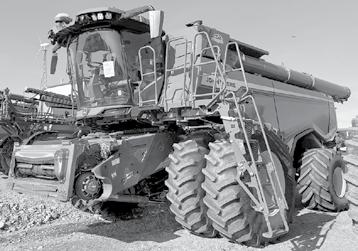
2022 John Deere X9 1100 with Ultimate cab package, Gen 4 4600 command center, Active Yield with moisture and yield sensors, Ultimate suspension, Signature Edition, Pro Drive XL transmission, extended wear concave and grain handling, 31-ft. folding auger, extra fine chopper, 650/85R38 front tires with duals, VF750/65R26 rear tires. Stock #87685 $622,500 (14)
2024 John Deere S780 with Select cab package, Combine Advisor, Active Yield with moisture and yield sensor, StarFire receiver SF1, monitor, ProDrive transmission with Harvest Smart, small wire concave, regular wear grain handling, power folding covers, 28.5-ft. unloading auger, VF750/65R26 rear and 520/85 R42 dualled front tires, Powercast tailboard, side hill performance kit. Stock #93087 $595,000 (12)
2022 John Deere S780 with premium cab with leather, Active Yield with moisture and yield sensors, 4600 command center, Combine Advisor, ProDrive with HarvestSmart, TriStream rotor, power folding GT covers, 28.5 unloading auger, Advanced PowerCast tailboard with fine cut chopper, 12” axle spacers. Stock #88899
2022 John Deere S780 with ProDrive transmission with HarvestSmart, power folding covers, 28.5-ft. unloading auger, regular wear package, premium cab, Active Yield with moisture sensor, Dual 520/85R42 front tires, side hill performance package. Stock #92417
$435,000 (1)
$470,000 (1)
2022 John Deere S780 with premium cab with leather, Active Yield with moisture and yield sensors, 4600 Command Center, Combine Advisor, ProDrive with HarvestSmart, TriStream rotor, power folding GT coveers, 28.5-ft. unloading auger, Advanced PowerCast tailboard with fine cut chopper, 12” axle spacers. Stock #88898
$470,000 (1)
2021 John Deere S780 with Contour Master with fore/aft, premium cab, Combine Advisor, Active Yield, 4600 display (no extended monitor) no receiver, TriStream rotor, power folding grain tank, 28.5-ft. unloading auger, 580/85R42 duals, 750/65R26 rear, fine cut, Advanced PowerCast tailboard, grain tank mirror, side hill performance kit. Stock #88014 $405,000 (2)
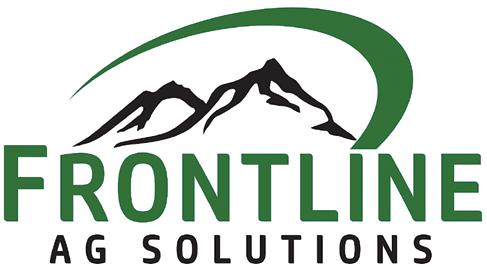
Call or stop in today 1=Conrad:
2022 John Deere S780 with Contour Master with fore & aft, Combine Advisor (Active Vision cameras), Active Yield, 6000 receiver (SF1), 4600 with AutoTrac and extended monitor, TriStream rotor (bullet), power folding grain tank, 26-ft. unloading auger, Advanced PowerCast, dual 580/85R42 drive, 750/65R26 rear tires, premium cab, premium radio, sidehill performance kit, Class 7 windboard instead of front chaffer extension. Stock #93160 $410,000 (14)
2019 John Deere S780 with lateral tilt fixed speed feederhouse with fore and aft, Combine Advisor, Active Yield, TriStream rotor, small wire concaves, leather swivel seat, Advanced PowerCast tailboard, 28.5-ft. unload auger, power fold grain tank covers, dual IF580/85R42 drive tires, 750/65R26 rear tires. Stock #85326
$362,500 (14)
2020 John Deere S780 with combine advisor, Active Yield, extended wear rotor, 2WD, LSW1100 singles, lateral tilt, fixed speed feederhouse (with fore & aft tilt), ProDrive, Advanced PowerCast tailboard, TriStream rotor (extended wear), small wire concaves, powerfold grain tank covers, 28.5-ft. unloading auger, premium radio, LED lighting and extremity lights. Stock #84955
$330,000 (2)
2023 John Deere S770 with variable speed feederhouse with Contour Master with fore/aft, TriStream Rotor (bullet), ProDrive transmission, Active Yield, premium tech (active terrain adjustment and HarvestSmart), manual grain tank covers, 22.5-ft. unloading, manual vane tailboard, VF900/60R28. Stock #94238
$425,000 (15)
2013 John Deere S680 with singles, chopper, yield monitor, contour master (lateral tilt feeder house) header, premium
HID
and
SELF PROPELLED SPREADERS & SPRAYERS
Several used John Deere and competitive self-propelled sprayers and applicators in stock! Variety of boom and widths available. Several units are ready to roll with turnkey GPS!
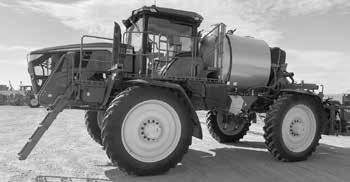
2024 John Deere 616R with 120-ft. steel, 20” Exact Apply, auto solution control, hi-flow pump, front fill, 5 sensor boom level, boom air purge, Ultimate vis lights, eductor, Ultimate Comfort Package, Cat 1 cab filtration, pressure recirc and reclaim, fence row nozzles, VF380/105R50 Gen 4 4600 and extended monitor with 4.0 activation, integrated receiver with SF-RTK capable. Stock #91441
2024 John Deere 616R with 120-ft. steel boom, 20” spacing, CVIII cab, ExactApply, auto solution control, hi-flow pump, front fill, 5 sensor boom level, boom air purge, Ultimate vis lights, eductor, Ultimate Comfort package, Cat 1 cab filtration, pressure recirc and reclaim, fence row nozzles, 420 skinny tires, 4.0 AT act, 4600 armrest display, section control, SF6000. Stock #91437
$556,900 (1)
2023 John Deere 412R with 1200 gallon SS tank, Ultimate Contour package, Active seat, receiver and display, VF380/90R46 tires, hydraulic tread adjust, traction control, high flow solution pump, eductor, 120-ft. steel boom with 20” spacing, AutoBoom sensor, air purge, fenders. Stock #92123
$450,000 (12)
$575,000 (12)
2024 John Deere 412R with 120-ft. steel boom with Exact Apply, receiver, 4600 monitor, 1200 gallon SS tank, Ultimate Comfort with active seat, VF380/90R46 tires, high flow solution pump, SS eductor, 20” nozzles, air purge, fenders. Stock #90973
2015 John Deere R4045 with Command View II Plus cab, guidance, section control, 120-ft. boom with auto boom leveling, stainless steel tank, foam markers, RH and LH fence row nozzles, no eductor, 420/95R50 tires. Stock #86591
$169,000 (12)
$530,000 (14)
4WD, ROW CROP AND UTILITY TRACTORS
Row crop and loader tractors featured this month but many more tractors available in all sizes. Call or see website for selection.
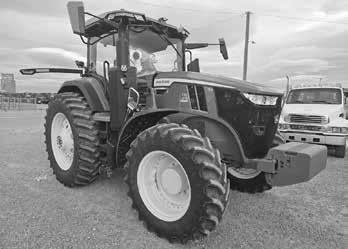
2013 John Deere 4940 with 120-ft. SS boom on 20” spacing (5 way nozzle body), chemical eductor, Boom Trac Pro, 5 sensor, HID light package, 620/70R46 float tires, 3000 receiver (SF1), 2630 display (autotrac and section control activations). Stock #91116 $160,000 (14)
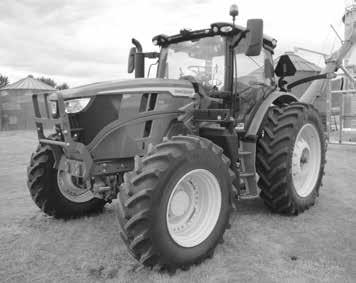
2024 John Deere 6R165 with IVT 40K, TLS Plus, 155 l/min hydraulic pump, 5 ESCVs, PTO, premium cab package, premium seat, CommandArm, 480/80R46 rear tires, 420/90R30 front tires, cold start package, reversible fan. Stock #93636 $247,500 (15)
$339,900 (1)
2023 John Deere 7R230 with IV transmission, Signature edition, Guidance less receiver, Ultimate Comfort with air seat and cab suspension, 5 SCVs, 540/1000 PTO, CAT 3 3/N 3-point hitch, dual 520/85R46 rear tires, 480/70R34 front tires with triple link suspension, front fenders, cold weather package, loader ready, front and rear weights. Stock #91841
2024 John Deere 6R215 with IVT 40K, dual motion seat, cab suspension, Ultimate cab package, CommandArm, 155 l/min pump, 5 ESCVs, PTO, 480/80R50 dual rear tires, 480/70R34 front tires, cold start package, reversible fan. Stock #93634
$305,000 (1)
2023 John Deere 6R 155 with 640R loader and grapple, front suspension (TLS), Autoquad transmission, standard cab with cab suspension, AutoTrac ready, no receiver, 540/1000/1000E PTO, 3 E-SCV, 480/80R42 rear with extensions and 1800 lbs rear weights, 420/85R28 front with turnable fenders,. Many other options. Stock #92205 $219,500 (14)
$212,500 (4)
2024 John Deere 6175M with PowerQuad+ 20/20 transmission, Guidance ready, 3 SCVs, 540/1000 PTO, 3-point hitch, 480/80R46 rear and 420/85R30 front tires, cold start package, Panorama roof, loader ready with 3 function valve. Stock #94052
2022 John Deere 6155R with 20 speed AutoQuad transmission, MFWD, TLS without brakes, 3 E-SCVs, 540/540E/1000 PTO, AutoTrac ready, premium cab/radio/ seat, 480/80R42 rear, 2-450# weights/ side, cast R&P axles, 420/85R28 front with fenders, electronic joystick, 640SL loader, 8-ft. bucket with grapple. Stock #93428
2024 John Deere 6145M with PowrQuad+ 24F/24R transmission, ATC ready, less receiver and display, 3 SCVs, 540/1000 PTO, 3-point hitch, cast wheels with 480/80R42 rear and 480/85R28 front tires, MFWD, beacon light, Panorama roof, cold weather package, 3 function loader ready with JD640R loader-bucket, grapple, weights. Stock #94335 $203,000 (15)
$197,000 (14)
2024 John Deere 6155M with PowrQuad+ 20F/20R transmission, ATC ready, less receiver and displat, 3 SCVs, 540/1000 PTO, 3-point hitch, cast wheels with 480/80R42 rear and 480/85R28 front tires, MFWD, beacon light, Panorama roof, 3 function loader ready with JD 640R loader-bucket and grapple, weights. Stock #94325 $207,500 (1)
2015 John Deere 6150M tractor, 7582 hours, H360 loader, bucket, grapple (no midmount or joystick, loader uses rear SCVs), 20/20 PowrQuad+ with LHR, fixed MFWD 3 mechanical SCVs, 540/1000 PTO, 3-point, 520/85R38 rear and 420/85R28 front tires, cold start package. Stock #93008 $73,500 (1)
2023 John Deere 6130M with IVT 40K transmission, triple link suspension, 114 l/min hydraulic pump, 4 SCVs, PTO, premium radio package, Cast wheels with rear 480/70R38 tires, front 420/70R24 tires, 620R loader with bucket and grapple, cold start package, auto difflock. Stock #92129 $190,000 (1)
2006 John Deere 4920 with 100-ft. boom, poly pipe on 20” spacing, 1200 gallon SS tank, 380/105R50 tires, fenders, wheel slip, hydraulic tread adj. Auto Trac ready, 2630 screen with receiver. Stock #93874
$37,500 (12)
2014 Case IH Patriot 3340 120-ft. boom, 20” spacing, 1000 gallon SS tank, Aim Command Pro, boom height, section control, 650/65R38 Viper 4 control, Nav II controller, section command. Stock #89336
$147,500 (2)
2018 Case IH 4440 with 120-ft. booms, 20” nozzle spacing, AccuBoom section control, AutoBoom height control, 620/70R38 tires, luxury cab, AccuGuide NavII controller, AFS 372 receiver, AFS Pro 700 display, stainless tank, hyd. tread adjust. Stock #93280
$222,500 (12)
DRILLS & SEEDERS
Fall seeding is upon us.
See our lineup of good used seeders to get that crop seeded quickly
Many others in stock - please call.
2023 John Deere N560 no till drill, 60ft. 10” spacing, double shoot, All Run Blockage, cast serrated closing wheels, spoked narrow gauge wheels, C850 tow behind cart. Stock #88700.$725,000 (1)
2023 John Deere N560F 60-ft. 10” spacing, single shoot, All Run Blockage, 90 Series opener with narrow spoked gauge wheel, 650 bushel tow between cart, 12” conveyor with KSI, tank scales, hydraulic drive with section command. Stock #89143 $562,500 (14)
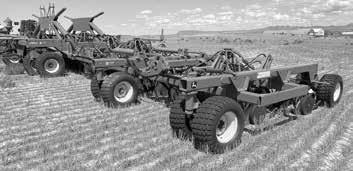
2022 John Deere N560 60-ft. air drill, 7.5” spacing, single shoot, serrated closing wheel, All Run Blockage, ProSeries openers, spoked narrow gauge wheels, 550 bushel tow behind 1910 cart. Stock #93319
$450,000 (1)
2015 John Deere 1890 60-ft. with 10” spacing, 90 Series openers, mix of spoked and unspoked gauge wheels, mix of smooth and serrated closing wheels, All Run Blockage (JD), 430 tow between cart with Intelligent Ag section control, 12” conveyor with standard hopper. Stock #88790
$198,000 (14)
2014 John Deere 1890 42-ft. air drill, 7.5” spacing, single shoot, All Run Blockage, dual 31x13.5-15 hi float tires, spoked gauge wheels, has 1910 tow behind cart, non section command. Stock #92797
$184,000 (1)
Case IH ATX400 70-ft. drill, 10” spacing, SS, steel press, 3430 tow between cart, primary blockage, hydraulic drive. Stock #94573 $45,000 (14)
2012 John Deere 1890 60-ft. no till drill, 10” spacing, single shoot air package for tow between cart, All Run Blockage system for seed, 430 bushel cart, Uniforce down pressure system. Stock #86592
$150,000 (12)
2015 John Deere 1890 60-ft. no-till drill, 7.5” spacing, SS, All Run Blockage, solid gauge wheel, 430 bushel tow behind cart, 3 tank, 8 run, hydraulic drive (section command), 10” fill auger. Stock #90868
$178,000 (12)
2012 John Deere 1890 60-ft. drill with 7.5” spacing, 8 run, single shoot, primary blockage, 350 bushel tow behind cart, 12” conveyor, rear duals, ground drive and variable rate. Stock #90382
$132,000 (12)
2010 John Deere 1830 hoe drill, 60-ft. 10” spacing single shoot, steel packers, mechanical depth control, primary blockage, 1910 tow behind air cart, 1910 air car, SN1A81910HVAG740107. Stock #90380 $77,500 (2)
2014 Pillar 3450/DH6010 60-ft. width, 10” spacing, double shoot, AgTron Blockage - primary, Flexi-Coil cart, new disks. Stock #87613 $110,000 (12)
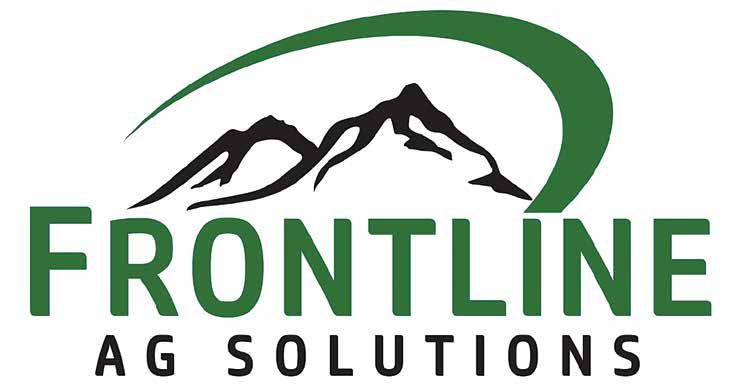
#91841
#91441
#93636
#86592
If you enjoy reading the Trader’s Dispatch, and have found what you were looking for, please tell an advertiser.
ANTIQUE TRACTORS FOR SALE
1928 John Deere (sn 56813) on steel with extension rims, always shedded, no rust or dents. All original.
John Deere Model L (sn 641282) with plow.
$3950
$2950
Farmall Super A (sn 68654) always shedded, no rust or dents, rare factory pneumatic lift.
$2950
Several plows and old equipment on steel. Make Offer Call Doug 406-788-0805, Great Falls, MT
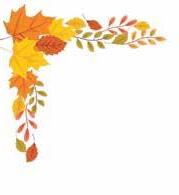


and Mid-Size
ANDY SWENSON
RETAIL SALES MANAGER - MONTANA (406) 598-2149
andy.swenson@equipmentshare.com

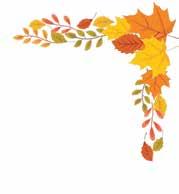
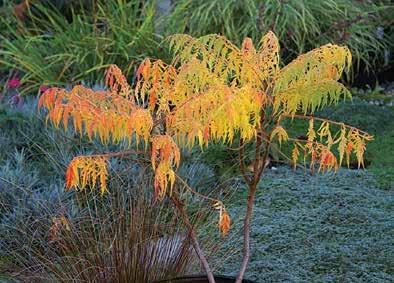
Dakota Gardener: Tiger Eyes®, a fall showstopper
By Kelsey Deckert, Horticulture agent, NDSU Extension – Burleigh County
When I was in high school, I used to work at a greenhouse and nursery. During my time there, I was introduced to so many different plants, but one plant that always stuck out to me was the Tiger Eyes® sumac, or referred to by its common name, the cutleaf staghorn sumac. It is one of my favorite landscape shrubs.
The Tiger Eyes® sumac is unique as it has many striking characteristics. It is a staghorn sumac, which is native throughout the U.S. and is commonly found alongside ditches, woodland edges and in shelterbelts. Staghorn sumacs aren’t ideal as an ornamental, as they can grow up to 30 feet tall and will sucker rampantly.

DRIVE INTO FALL EVENT

you need to complete your fleet.
Call Andy and ask about our large selection of reliable new & used equipment for sale, including utility vehicles, skid steers, excavators, forklifts, aerial lifts, and more. We have the

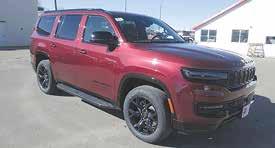
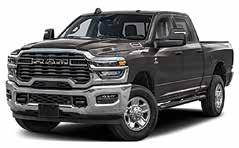
STOCK–
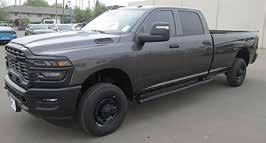
Tiger Eyes® was released in 2004 by Bailey Nursery and became the perfect ornamental sumac. A nursery employee discovered a mutation of Laciniata sumac, which was a more compact size and a slow spreading selection.
Tiger Eyes® offers interest throughout the whole growing season. It has deeply cut leaves starting out in a greenishyellow color that shifts to a bright yellow. One of my favorite aspects of the shrub is the fuzzy, velvety pinkish stems. Its fruit is a red fuzzy drupe, drawing appeal to it.
Tiger Eyes® mature at six to 8 feet in height and can be used in many ways in the landscape. It can be a focal point or integrated with other shrubs. There are no significant pest problems for this shrub, but know it will not do well in clay soil.
Fall is the time of year when Tiger Eyes® give us a spectacular display of colors. Soon its leaves will shift from the bright yellow to orange to a fiery red. As you see the color transition, you will understand how it is a top showstopper for fall!
For more information about Tiger Eyes® sumac, contact your local NDSU Extension agent. Find the Extension office for your county at ndsu.ag/countyoffice.
Fall grazing balance
By Ben Beckman, UNL
After several dry falls in a row, this year may be shaping up a little differently. With recent rains and cooler weather, cool-season pastures like brome, bluegrass, and fescue could put on some extra growth. That’s good news — but it also raises the question: do we graze it now or save it for later?
Grazing now can ease feed pressure and provide highquality forage before crop residues open up. Stockpiling, on the other hand, sets up feed for late fall or winter and cuts down on hay use.
But remember — fall is when grasses rebuild root reserves and set buds for next spring. After repeated drought stress, some pastures could use extra rest. If you’ve been battling pasture weeds, that’s a red flag that recovery time is needed. If you do graze, rotate quickly and leave at least four inches of stubble on cool-season grasses. Overgrazing now can slow green-up next spring. While stockpiling uses forage later when plants are already dormant some quality is sacrificed.



Fertility also plays an important role. While the window for nitrogen application is nearly closed, a small application now with moisture can still provide a small boost of growth. Phosphorus and potassium don’t add fall yield, but they support root health, stand persistence, and winter survival. This fall may offer a rare opportunity for extra grazing. Managing it wisely can fill feed gaps today without sacrificing productivity next year.
USDA to provide $1 Billion to flood and wildfire-impacted livestock producers
U.S. Secretary of Agriculture Brooke L. Rollins announced eligible livestock producers will receive disaster recovery assistance through the Emergency Livestock Relief Program for 2023 and 2024 Flood and Wildfire (ELRP 2023 and 2024 FW) to help offset increased supplemental feed costs due to a qualifying flood or qualifying wildfire in calendar years 2023 and 2024. The program is expected to provide approximately $1 billion in recovery benefits. Sign-up began on Monday, September 15. Livestock producers have until October 31, 2025, to apply for assistance.
“We are providing continued support for livestock producers whose livelihoods and way of life have been disrupted by catastrophic floods, wildfires, and poor forage conditions in 2023 and 2024. Under President Trump’s leadership, USDA is standing shoulder to shoulder with America’s farmers and ranchers, delivering the resources they need to stay in business, feed their families, and keep our food supply strong,” said Secretary Brooke Rollins. “This announcement builds on the Supplemental Disaster Relief Program (SDRP) and the historic levels of assistance we have rolled out over the last few months, once again proving that this administration is
as quickly as possible to get help out the door and into the hands of livestock and dairy producers. USDA will continue to put farmers first and ensure they have the relief they need to weather storms and build for the future.”
Qualifying Disaster Events
To streamline program delivery, FSA has determined eligible counties with qualifying floods and qualifying wildfires in 2023 and 2024. For losses in these counties, livestock producers are not required to submit supporting documentation for floods or wildfires. A list of approved counties is available at fsa.usda.gov/elrp.
For losses in counties not listed as eligible, livestock producers can apply for ELRP 2023 and 2024 FW but must provide supporting documentation to demonstrate that a qualifying flood or qualifying wildfire occurred in the county where the livestock were physically located or would have been physically located if not for the disaster event. FSA county committees will determine if the disaster event meets program requirements.
Livestock and Producer
Eligibility
For ELRP 2023 and 2024 FW, FSA is using covered livestock criteria similar to the Livestock Forage Disaster Program (LFP) which includes weaned beef cattle, dairy cattle, beefalo, buffalo, bison, alpacas, deer, elk, emus, equine, goats, llamas, ostriches, reindeer, and sheep.
Wildfire assistance is available on non-federally managed land to participants who did not receive assistance through LFP or the ELRP 2023 and 2024 for drought and wildfire program delivered to producers in July of this year.
Payment Calculation
Eligible producers can re-
ceive up to 60% of one month of calculated feed costs for a qualifying wildfire or three months for a qualifying flood using the same monthly feed cost calculation that is used for LFP.
ELRP 2023 and 2024 for drought and wildfire and ELRP 2023 and 2024 FW have a combined payment limit of $125,000 for each program year. Producers who already received the maximum payment amount from ELRP 2023 and 2024 for drought and wildfire will not be eligible to receive an additional payment under ELRP 2023 and 2024 FW. Eligible producers may submit form FSA-510, Request for an Exception to the $125,000 Payment Limitation for Certain Programs, to be considered for an increased payment limit of $250,000.
Supplemental Disaster Assistance Timeline USDA is fully committed to expediting remaining disaster assistance provided by the American Relief Act, 2025. On May 7, we launched our 2023/2024 Supplemental Disaster Assistance public landing page where the status of USDA disaster assistance and block grant rollout timeline can be tracked. The page is updated regularly and accessible through fsa. usda.gov. Contact your local FSA county office for more information.
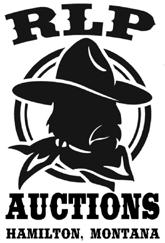
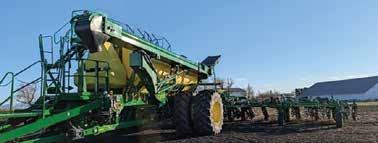
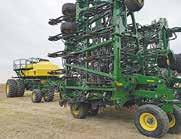
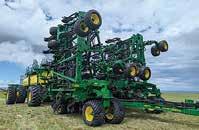
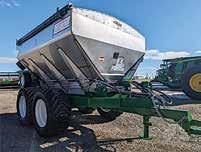




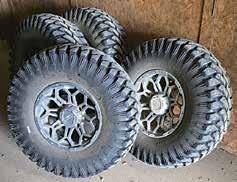
TIRES FOR SALE
4) Falcon Ridge AT 30X10R14
8 ply tires on 4 hole wheels. Fits CanAm sideXside. Phone (406) 450-3647
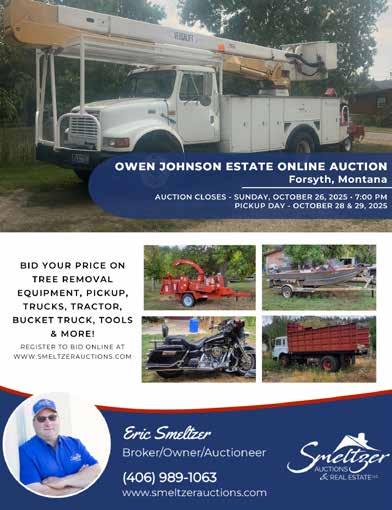

Recipe Patch by Geri
Soup recipes from 1970
Original Split Pea Soup
4 cups water
1 cup split peas
1/2 cup diced carrots
1/2 cup cubed ham or a large ham bone
1 medium onion, diced
1/2 tsp. celery seed
1 bay leaf
1/2 tsp. ground sage
3/4 tsp. sweet basil
1 1/2 tsp. salt
10 whole cloves
Fresh ground pepper
Cook together in large pan 45 minutes or until peas are tender. Cool. To serve add 2 cups milk and heat.
Potato Soup
About 3 cups potatoes, diced
1/3 cup diced onion
1/3 cup diced polish sausage
1/3 cup thinly diced celery
3 Tblsp. butter or oleo
1/3 cup shredded carrots
2 cups milk
Saute onion, sausage and celery in butter, until onions are tender. Add 4 cups water, potatoes and carrots. Boil until potatoes are cooked through. Add milk. Salt and pepper to taste. Serves 6.
American Chowder
1 large onion
2 Tblsp. margarine
4 cups chopped potatoes
1 cup celery slices
2 tsp. salt
1/4 tsp. pepper
2 cups milk
2 Tblsp. flour
1) 12 oz. pkg. smoked sausage links, sliced 1/4 lb. American processed cheese
Saute onion in margarine. Add potatoes, water, celery and seasonings. Cover; simmer 15 minutes or until vegetables are tender. Gradually add a small amount of milk to flour, stirring until well blended. Gradually add flour mixture to hot vegetables. Add remaining milk and sausage and heat. Add cheese; stir until cheese melts. (Bacon or ham may be substituted for sausage).
Bean Soup
1 1/2 cups dry Northern beans
7 cups water
1 medium onion
2 carrots, diced
Cowgirl Boots & Blooms
Where rustic charm meets floral elegance

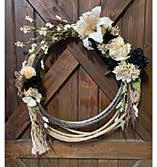
Western Elegance with a Floral Touch
Add rustic charm to your home, barn, wedding, or event with our handcrafted western and equine-inspired decor. Each piece is made with love and finished with a unique floral touch. Our collection features: cowboy hats, authentic cowboy boot floral arrangements, wagon wheels, mini boot centerpieces, horse neck wreaths, floral boots for weddings/parades, equine floral barrettes, and rustic wedding centerpieces.
• Customizable Just For You • Choose your flowers and colors to match your style or event theme. Every design is one-of-a-kind, making it as special as your celebration.
1 tsp. salt Ham bone (1 cup cut-up ham or canned luncheon meat)
Wash and drain beans. Put beans and water in pan and bring to boiling. Boil 2 minutes. Remove from heat. Cover and let stand 1 hour.
Chop onion and add to beans. Add salt, diced carrots and ham bone. (Ham bone can be simmered in crock pot 8 hours to remove meat, then meat added to onion and beans)
Cover and boil gently 1 1/2 to 2 1/2 hours until beans are soft and ham is tender. Remove bones and serve meat in soup. Add more water for a thinner soup, if you like.
Beef Barley Vegetable Soup
2 1/2 lbs. beef soup bones
About 3 quarts water
Put bones with meat in 6 quart pot with enough water to cover generously.
Add: 1 tsp. salt 8 peppercorns 1 large onion, stuck with 6 cloves
1 stalk celery 1 bay leaf
Cover, bring to boil; skim; simmer 2-3 hours. (Or simmer in crock pot 8 hours). Strain, pressing vegetables gently; reserve meat. Chill or drop ice cubes into soup and the fat will congeal; remove fat.
Add:
1 cup each: diced potato, carrot, celery, cabbage, green beans, yam, parsnip, tomato sauce. 1/2 cup dried lima beans
1/4 cup each: Rice, barley, split peas
1/4 cup minced parsley or dill
Cook 1 ¼ hours, until limas are tender. Cut meat into chunks; add to soup with any marrow from bones. Simmer ½ hour. If too thick, add stock or water. Makes 3 ½ quarts.
Broccoli, Cauliflower, Barley, Cheese Soup
1/2 cup quick pearl barley (cooked)

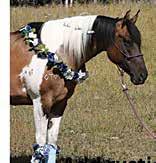

1 pkg. frozen vegetables (broccoli, cauliflower, carrots)
2 cups water
1 can condensed chicken broth
1/2 cup chopped onion
1 tsp. salt
1 small garlic clove (minced)
1/8 tsp. pepper
Combine above ingredients in 4 quart glass bowl. Cover with wax paper; cook in microwave on “high” 18 to 20 minutes, stirring after 10 minutes.
1 1/2 cup milk
1/3 cup flour
1 1/2 cup grated cheddar cheese
Combine ½ cup milk and flour, mixing until well blended. Gradually add to soup with remaining 1 cup milk. Cover with wax paper; continue cooking in microwave on “high” about 5 minutes or until mixture is thickened, stirring after 3 minutes. Stir in cheese. Cover and let stand 3-5 minutes before serving. Makes 6-9 servings.
If you don’t have a microwave, pre-cook the barley and vegetable separately. Then simmer the water, broth, onions and spices until the onions are done (about ½ hour).
Combine ½ cup milk and flour, mixing until well blended. Gradually add to soup with remaining 1 cup milk. Add vegetable and barley and just before serving, stir in cheese.


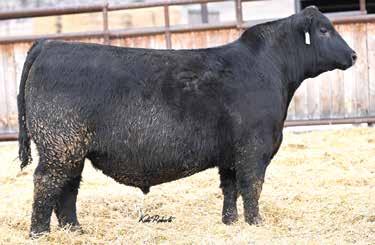

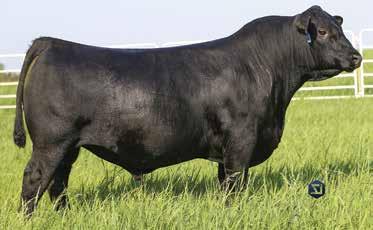



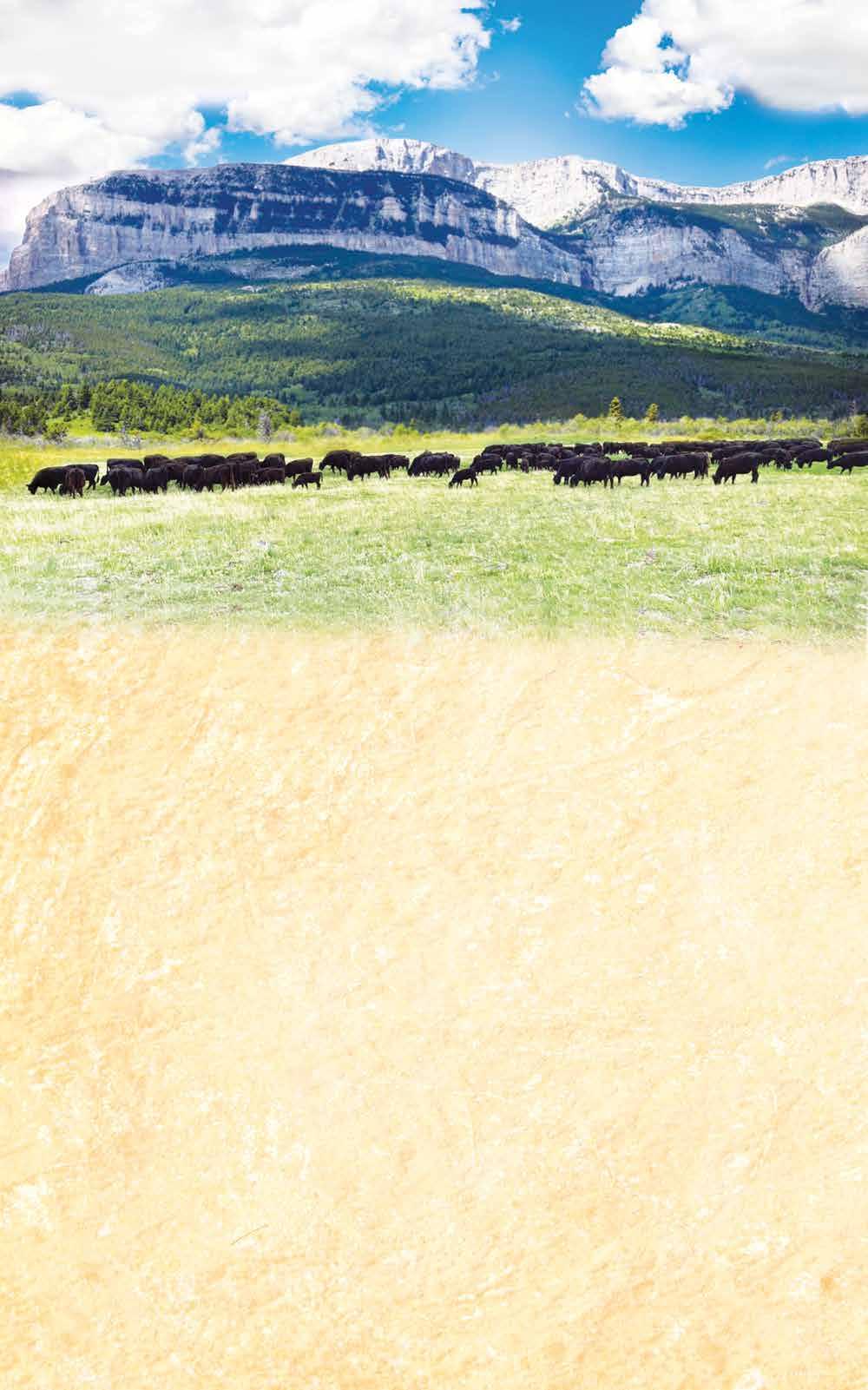
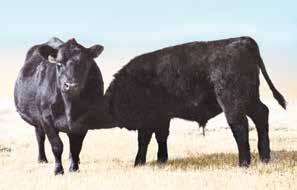

NEW Vermeer R2800 rake. On Order CALL NEW R2300 rake. ...................... IN STOCK
2–Pro Ag bale unrollers. ...................... CALL
3-pt bale unroller, on order. ....MID OCTOBER
2--Vermeer R2300 rake, used..... CALL
2--USED Vermeer 605N balers..... Going thru Shop
NewGeothermWaterers &PartsAvailable
11/2 HDPE SDR11 IN STOCK
•Now building Gysler parts•
NEW & USED EQUIPMENT R&L Seed and Machine, LLC 1829 McCarthy Creek Rd Geyser, MT 59447
Used Highline 650 bale processor...$19,500 Vermeer BP7000 bale processor with scales $11,800
1- Set skid steer pallet forks ................ $1280
NEW & USED EQUIPMENT
Vermeer 605N, In-Monitor Moisture Sensor, Auto Greaser, pickup clutch, 540 or 1000 PTO .....NEW
Vermeer 605M net/twine......................
$10,000
Vermeer R2300 & R2800 rakes NEW
Vermeer TM1410 mower 21-ft cut width.. NEW Vermeer 605SM completely rebuilt. $18,500
Vermeer R2800 updated pivots
406-735-4374
rlmccray@3rivers.net
WEANING SEASON IS HERE!!
Make weaning STRESS FREE with SweetPro’s weaning products.
Delivery Available on 4+ Ton Orders. Sweetpro weaning tubs IN STOCK Sweetpro stress mineral IN STOCK
Dakota Gardener: Not all yellow-striped insects are created equal
By Esther E. McGinnis, Horticulturist, NDSU Extension
As I ate my sandwich outdoors, a persistent yellow and black insect kept circling me. Getting closer and closer, it landed on my paper plate. I carefully shooed it away, hoping not to anger it. I have an innate fear of this insect, having been painfully stung years ago. This aggressive insect is a yellowjacket.
Yellowjackets, a social wasp, are more visible and downright hangry in August and September. They usually nest underground, but can also burrow into openings under house siding or shingles.
Wichman
$60,000
$28,000 Massey-Ferguson 9635 swather, 1865 hours, new cutter bar
Highline CFR650 with feed chopper. $24,000
Ag Supply, LLC 406-538-5686 • Hilger, MT www.wichmanagsupply.com
Hustler TH205 round & square bales. $24,000 See new inventory on our Facebook page
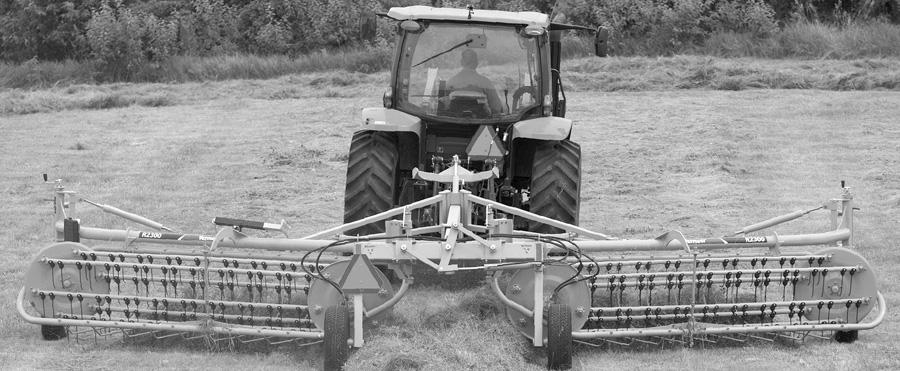

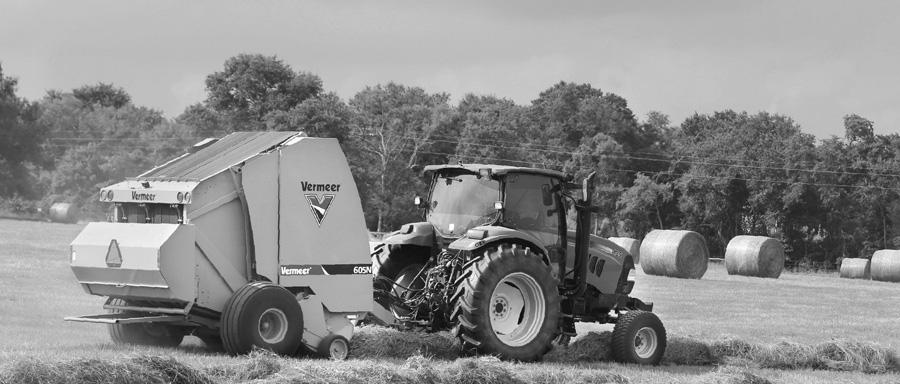



While I fear yellowjackets, the same is not true for bees. Bees have a separate lineage from wasps. This year, I have a bumblebee colony living under my front sidewalk. The bumblebees are using an old rodent burrow and the nest entrance is in a small flower garden. I am not worried about this nest because I know the bumblebees will not harm visitors or delivery people. In fact, I can safely work in this garden as long as I don’t get closer than 2 or 3 feet from the nest opening. When I push the boundaries, a bumblebee will gently buzz me that I am in its territory. I would not dare do this with a yellowjacket colony.
While statistics are hard to find, entomologists assume that more people are stung by wasps like the yellowjacket than by bees. Yellowjackets have aggressive natures because they are hunters and omnivores. They prey on insects to feed their larvae, but they also consume sweets like flower nectar and tree fruits. As food sources become scarcer in the fall, hangry yellowjackets congregate around garbage and your soda can.
In contrast, bees are herbivores with a more docile nature. They collect flower pollen for the protein and sip nectar for the carbohydrates. Because they are not predators, they are less aggressive.
Bees will not sting unless they are threatened. This reluctance to sting stems from the barbed structure of their stingers. If they sting you, they will die because the barbed stinger will rupture their abdomens. In contrast, yellowjackets have no such reluctance. Their stingers lack barbs, and they may sting multiple times without dying.
Have you been unfairly lumping bees and yellowjackets together? Learn to differentiate them. Most bees look hairy, while yellowjackets are smooth and have few hairs. Take the time to watch the bees in your yard. You will gain an appreciation for them and hopefully plant pollinator-friendly flowers to feed them.
While yellowjackets can be a pest, they also contribute valuable ecosystem services. They pollinate plants and help control smaller insects.
However, individuals may understandably want to eradicate yellowjacket nests if they are close to the house. Many insecticides are labeled to control yellowjackets and other wasps. The biggest concern is safely approaching the nest to make the insecticide application. The best strategy is to wait until nightfall to make the application. An even safer option is to hire an exterminator.
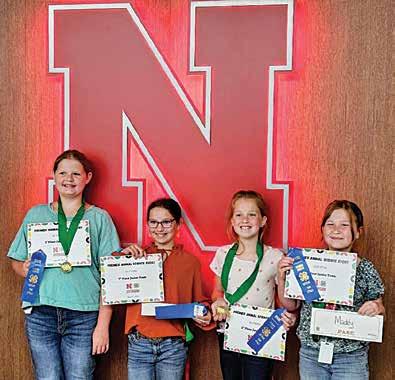
Vermeer,
Cutline Junior Quiz Bowl Team.jpg: (From left to right) Lillee Voss, Lexington; Cadey Wolf, Cozad; Nora Reiman, Cozad; Maddy Anderson, Gothenburg; made up the 1st place Junior Quiz Bowl team at PASE.




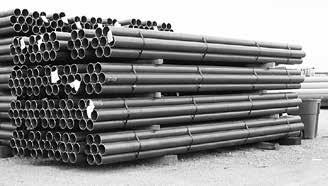





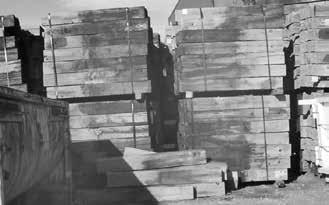


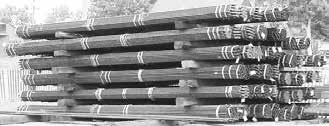
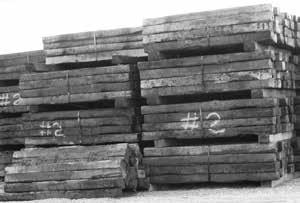
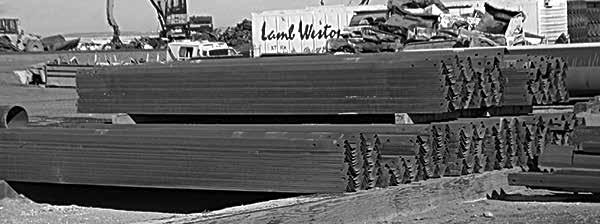
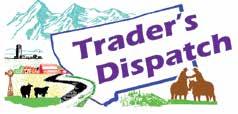


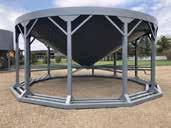
Hunters urged to review biosecurity practices during fall season
Many hunters are preparing for fall goose and duck season in North Dakota. As hunters prepare, they are encouraged to review biosecurity practices to protect domestic birds and livestock from highly pathogenic avian influenza (HPAI). Positive cases of HPAI continue to be reported in wild birds, domestic birds and dairy cattle.



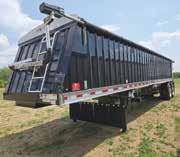

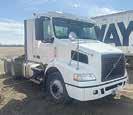
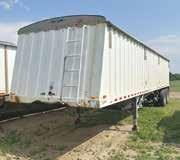



This risk of transmission increases during hunting season due to increased interactions with wild birds that may be carrying HPAI. North Dakota State University Extension specialists advise hunters who have contact with domestic poultry and livestock to be aware of what steps to take if they see sick or deceased wildlife.
“If you hunt game or wild birds and own domestic poultry or livestock, do not wear hunting clothes or footwear while you are interacting with your poultry or livestock,” says Dr. Jake Galbreath, NDSU Extension veterinarian.
The primary carriers of avian influenza A are waterfowl, gulls, terns and shorebirds. H5N1 HPAI has been detected in wild birds throughout all U.S. migratory flyways. Wild birds can be infected without showing symptoms of the infection. While waterfowl are the primary carriers, positive cases are documented in predatory birds and mammals.
Infected birds shed bird flu viruses in their saliva, mucus and feces.
All poultry or livestock owners, no matter the size, should practice appropriate biosecurity to protect their animals from HPAI.
“The best defense against HPAI is having a biosecurity plan in place,” says Mary Keena, NDSU Extension livestock environmental management specialist. “It is your job as an animal owner to create a line of separation between your clean animals and the potential unclean issues that wildlife or visitors may bring.”
Keena recommends the following biosecurity practices to consider implementing to reduce the risk to domestic birds: After walking in fields or wetlands while hunting, be sure to change clothing and footwear before crossing the clean/ dirty line to care for animals.
Do not walk through or drive trucks, tractors or equipment through areas where waterfowl or other wildlife feces may be. If unavoidable, clean shoes, vehicles and equipment thoroughly to prevent transferring disease.
Field dress game birds when possible to reduce the potential for disease transfer.
Plucking/skinning should be done in the field, with feathers properly bagged and disposed of before returning to a site with domestic birds.
Knives, coolers and other equipment should be washed with disinfecting soap away from sites where birds have access, and they should thoroughly dry.
If visitors will be interacting with poultry or livestock, learn where they have been, require them to wash their hands and ensure their clothes and footwear are clean and disinfected.
Reduce the attractiveness for wild birds to visit the property by cleaning up litter and spilled feed around animal housing areas.
If raising free-range guinea fowl and waterfowl, consider bringing them into coops or flight pens under nets to prevent interaction of domesticated poultry with wild birds and their droppings.
Nonlethal methods to deter wildlife are available on the U.S. Department of Agriculture Wildlife Service’s nonlethal initiative webpage: https://www.aphis.usda.gov/wildlifeservices/about/nonlethal.
Avian influenza surveillance and testing in wild birds is being done by the USDA Animal and Plant Health Inspection Service and the North Dakota Game and Fish Department. Report sick and dead wildlife at https://bit.ly/mortalityreport. Direct wild bird avian influenza questions to the North Dakota Game and Fish Department at 701-204-2161.
Avian influenza is a zoonotic disease, meaning there is a chance it can be transferred to humans.
“While this risk is low, hunters of wild birds are more likely to have increased exposure to the virus, which may increase risk of infection,” says Miranda Meehan, NDSU Extension livestock environmental stewardship specialist. According to the Centers for Disease Control and Prevention, if handling wild birds or sick or dead poultry cannot be avoided, minimize direct contact by wearing gloves and washing hands with soap and water after touching birds. If CONTINUED ON
Hunters urged to review biosecurity practices during fall season
CONTINUED FROM PAGE A34
available, wear respiratory protection such as a medical facemask.
After handling wild birds, discard the gloves and facemask, change clothing, disinfect footwear and then wash hands with soap and water.
“Remember that if you have contact with infected material, you can spread a virus to other surfaces by touch, which can then be picked up by other people or animals,” says Galbreath. “Seemingly minor interactions have the potential to spread disease.”
The North Dakota Game and Fish Department suggests the following practices to reduce risk of infection: Do not handle game that is found dead or appears to be sick.
Do not eat, drink or smoke while cleaning game, and avoid contamination in eyes, mouth, nose or any open cuts or sores with blood or other fluids from game being cleaned. Wash hands, cleaning utensils and other surfaces with soap and hot water immediately after cleaning game.
There is no evidence that anyone has contracted the virus from eating properly cooked bird, either domestic or wild, according to Galbreath. It is always a safe practice to fully cook wild game to 165 degrees Fahrenheit, regardless of the threat of HPAI.
More information about HPAI and handling wild birds is available:
NDSU Extension: Highly Pathogenic Avian Influenza –ndsu.ag/ndsuhpai
NDSU Extension: Care and Handling of Game Birds –ndsu.ag/gamebirds25
North Dakota Game and Fish – https://bit.ly/nd-avianinfluenza
USDA Animal and Plant Health Inspection Service –https://bit.ly/usda-hpai
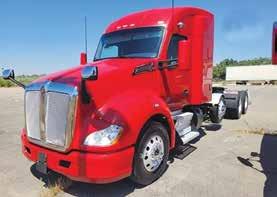
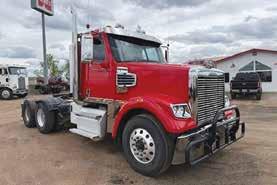
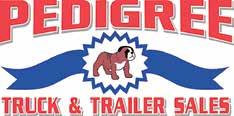
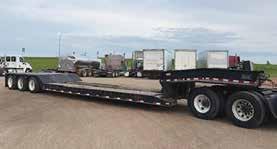
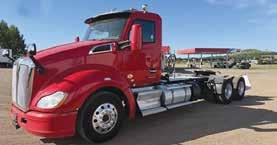

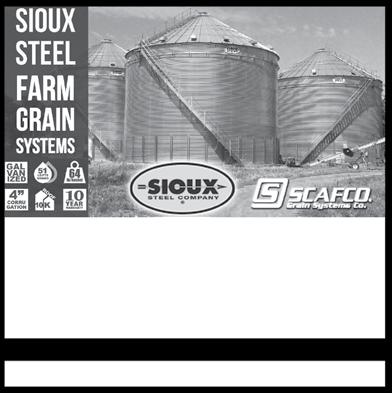
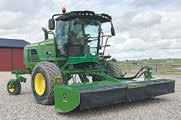
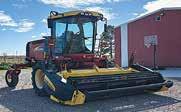
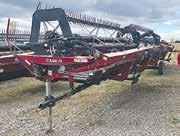
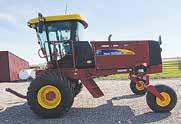
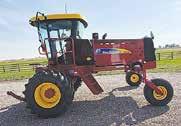



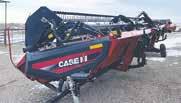
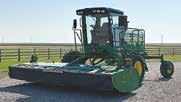

By Justin McMechan - Crop Protection and Cropping Systems Specialist, Nikki Luhr, Wayne Ohnesorg - Extension Educator, Thales Rodrigues da Silva - MSc Graduate Student
Another new insect is making its way across Nebraska — see how far soybean tentiform leafminer spread this year and what to look for in your fields.
Key Takeaways
Soybean tentiform leafminer has been found in 17 Nebraska counties, but infestations are low.
Feeding causes white blotches on the underside of leaves, mostly in the mid- to lower canopy.
Current infestations show little to no yield impact — no treatment is needed.
Scout along field edges and report new finds to Justin McMechan.
What We’re Seeing
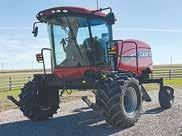

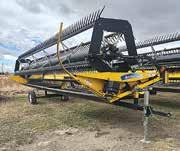
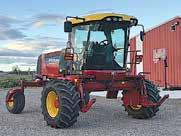

A native insect called soybean tentiform leafminer has been confirmed in 17 Nebraska counties during our 2025 survey (Figure1). Most fields had very low levels, with just a few mined leaves per plant. One hot spot in Dixon County showed heavy edge infestations, but that was the exception.
Should We Be Concerned?
Leafminer feeding makes white, irregular blotches (“mines”) on the underside of leaves, usually mid- to lower canopy (Figure 1). Research and past experience show these leafminers rarely reduce yield and are similar or less damaging than other defoliators (e.g., Japanese beetle). No insecticide
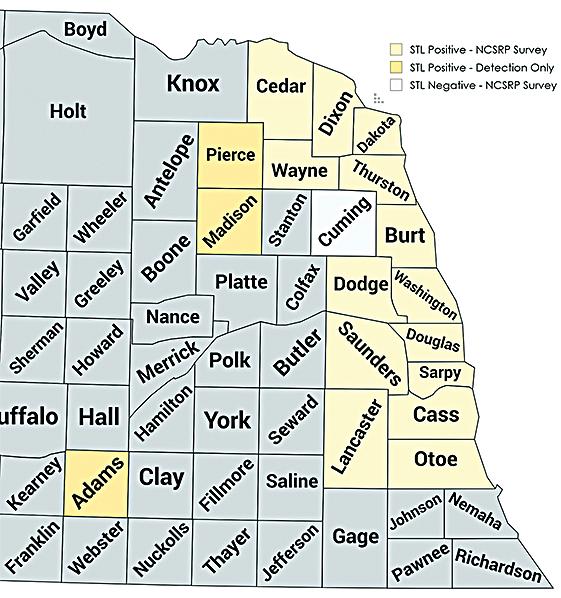
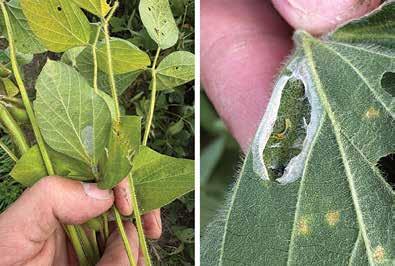
treatments are recommended at this time.
Where It Came From
This species is native to North America and commonly found on wild legumes, like American hogpeanut and slickseed fuzzybean. It was first documented on soybean in Minnesota in 2021. Subsequent state detections were South Dakota in 2022, North Dakota in 2023 and a single Nebraska field (Madison County) in 2024. Our Nebraska survey began in 2025 with support from NCSRP.
How to Scout
Focus on field edges, especially next to dense vegetation such as tree lines.
Lift a plant and look at the underside of leaves while slowly rotating the plant.
Look for white, blotchy mines — irregular shapes limited to the underside of the leaf surface.
Most mines, if present, are typically at or below the midcanopy.
What to Do If You Find It
No insecticide applications are needed based on current
Figure 2. Symptoms of soybean tentiform leafminer on a soybean leaflet, with a mined area opened to show the larva inside.
Figure 1. Results of the 2025 field survey for soybean tentiform leafminer in Nebraska. Counties with confirmed detections are shown in orange and yellow, while counties surveyed with no detections are shown in white.
Monitor moisture when managing frost-damaged corn for silage
Recent frost has damaged many acres of corn in the state. The extent of frost damage to corn will depend on the low temperature, duration of the low temperature and the maturity stage of the corn.
Frost-damaged corn can still be chopped for silage, says James Rogers, North Dakota State University Extension forage crops production specialist. However, the moisture content of the chopped corn must be at the right level for proper ensiling to occur.
“Proper moisture content at the time of ensiling is key to achieving adequate fermentation of the silage and preservation,” says Rogers.
While frost-damaged corn will appear to dry quickly due to the rapid change in color from green to light green or gray, the moisture content of the corn may still be too high to ensile. If frost-damaged corn at the milk stage is harvested immediately after frost for silage, whole-plant moisture content could be too high. This will result in a wet and sour silage and a loss of nutrients due to excessive seepage, Rogers warns.
Optimal moisture concentration is needed for silage fermentation and preservation to
down to a lower moisture content, there will be some loss in dry matter yield but an improvement in silage quality.
“A caution with frost-damaged corn at the milk stage is the potential for mold development in the ears,” says Rogers. “Not all corn molds are harmful to livestock, but some can produce mycotoxins that can be.”
Corn at this stage could also have elevated nitrate levels, but if the corn is harvested for silage, nitrate levels are reduced.
Samples can be screened for mycotoxin levels at the NDSU Veterinary Diagnostic Laboratory (vdl.ndsu.edu).
Corn at the dough stage when frost occurs will have a moisture content of around 75% and may require a few days of drying to get down to the proper moisture content, depending upon the type of silo being used. At dent stage — when the milk line is halfway down the kernel — corn may be down to a whole-plant moisture content of 70%, but if frost occurs at mid- to late-dent, it should be harvested as soon as possible.
For more information about frost damage to a variety of crops, visit NDSU’s online resource: ndsu.ag/cropfrost25. occur. Targeting a wholeplant moisture content of 62%-68% at the time of silage chopping will result in optimal silage fermentation for most types of silage storage structures. While this is an ideal moisture content, corn will ensile at 75% moisture when placed in a bunker or trench silo. For a bag silo, a moisture range of 60%-70% will work.
Moisture content of the corn plant will vary by the stage of plant maturity when frost occurs. At the milk stage, whole-plant moisture content is around 80% and should be allowed to dry down to the optimal level for ensiling. By allowing corn at the milk stage to dry
Soybean tentiform leafminer
CONTINUED FROM PAGE A37
levels, time of season, and expected impact.
If you suspect leafminer, email a photo and the county in which it was found to Nebraska Extension Entomologist Justin McMechan so we can keep the Nebraska map up to date.
Bottom Line
We’re monitoring it in the state, but don’t change your management. Keep scouting edges and let us know if you see unusual levels.
#####
An Atlanta, Georgia, law forbids “smelly people” from riding on public streetcars.
#####
Heart-healthy fish contains Omega-3 fatty acids.
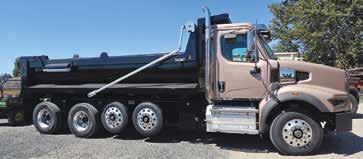

40-ton RGN trailer for hire to transport combines, tractors, sprayers, floaters, construction equipment, etc. Within Montana & surrounding states. We also have 48-ft. step deck trailers available. Pilot car service available. Insured & experienced. Call Roger at Roger Rader Inc., Sun River, MT 406-264-5475







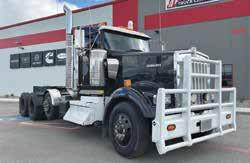
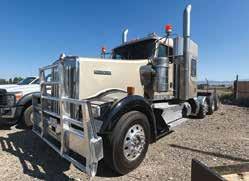

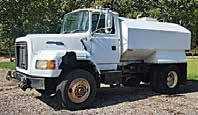
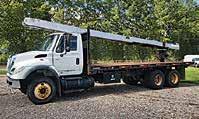
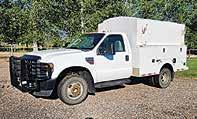
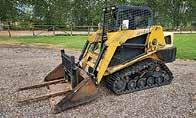
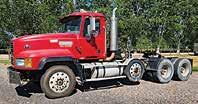
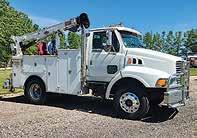
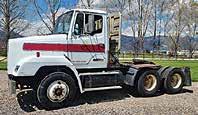

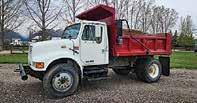



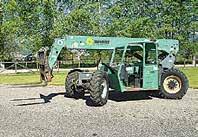
1992 Ford LST9000 Water Truck
2200 gal. tank, pto pump, front, rear & side spray, 350hp Cat 3406B, 7spd, AC, PS, Locker, 50% 11r24.5’s runs and sprays great.
Dedicated educators help South Dakota youth succeed nationally
By Candy DenOuden, SDSU Extension
$23,500
2005 International 7600 Flatbed Dump
350hp ISM, 10spd, Jake, Locker, AC, PS, 260” w.b., scissor hoist, 2’ stationary + 22’ dump, Q/C 34’ Conveyor, 240k miles.
$26,500
2008 Ford F350 4x4 Service Truck
6.4L Powerstroke, AT, PS, PB, AC, one owner, tow package, enclosed service body with drawers on both sides, 60% tires, 189K miles, runs and drives great.
$16,500
2002 ASV R50 Tracked Skid Steer
65” bucket, forks, 50% tracks, 3800 hrs. rebuilt engine @ 1550hr., pre-emissions, weights 6200#, joystick controls, runs and works great.
$23,500
2005 Mack CL733 Tractor
500hp ISX Cummins, Eaton 18spd. Autoshift, 14,6K front, 44K rears, air ride, Jake, AC, Dual PS, wet kit, 350K miles, 70% 11r24.5’s, lift axle, runs and drives great. $31,500
1997 Ford Service Truck
250hp 3126 Cat, 9spd., 33K gvw, locker, AC, PS, AB, tilt, cruise, 8,500# IMT crane, 11ft. IMT body, hyd. outriggers, 40cfm compressor, 100 gal. slip tank, new 11r22.5 tires and wheels, 141k miles, clean excellent driving truck. $39,500
1987 Freightliner FLC112 Tractor 350hp Cummins BC, Jake, 9spd, AC, PS, 60% 11r22.5’s, 38K rears, spring suspension, 160” W.B., air slide 5th, cab guard. $16,500
1992 Volvo WG Tractor
330hp N14, 9spd, Jake, AC, PS, 60% 11r22.5’s, 40K rears, spring suspension, 160” W.B., air slide 5th, cab guard.$17,500
1999 International 4700 5yd Dump
26K gvw, 210hp DT466e, 7spd, AC, AB, PS, 10-ft. dump box, runs and drives great. $25,500
1992 Ford L9000 Water Truck
2500 gal. tank, PTO pump, front and rear spray, hose reel, 350hp ser. 60, 9spd., Locker, PS, AB, 50% 11r24.5’s, runs and sprays great. $25,500
1999 International 8100
305hp C10 Cat, 10spd., PS, AB, PTO, 18K front, 40K rears, air ride, 17-ft. double frame, 90% 22.5 tires, 345K miles
$15,500
1995 International 4900
Hi-Rail Crane Truck
210hp DT466, 10spd, AC, PS, AB,7.5 ton National crane exh. brake, 60% 22.5 tires, full rail gear, aux. hydraulics $15,500
2005 JLG G6-42A
4x4x4 telehandler
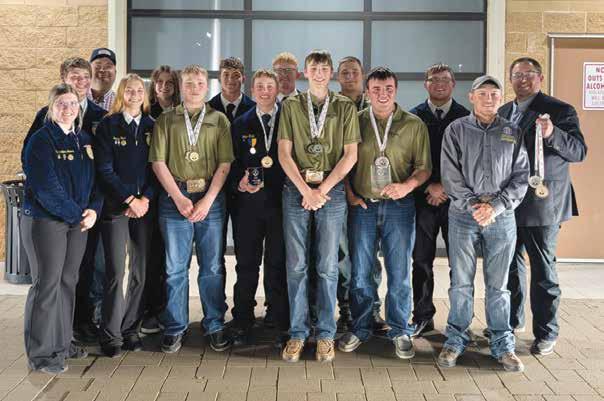
In May, South Dakota sent 84 youth to the National Land and Range Judging Contest in El Reno, Oklahoma. Out of the 34 states that competed, only Texas came close to matching those numbers with 72 participants.
To accompany those youth, there were 14 agricultural teachers/FFA advisors, four mentors from SDSU Extension and the Natural Resources Conservation Service and several parent chaperones.
Held for both 4-H and FFA youth, the range contest tests competitors on range plant identification and how to manage different types of land based on different uses, while the soil contest tests on soil types and different site uses.
Students must qualify at a state competition before they can advance to the national level. For Sandy Smart, interim SDSU Extension director, that serves as a testament to a dedicated group of educators, coaches and mentors in South Dakota who make it possible for that many youth to attend.
“I think what’s neat is that there’s a group of educators wanting to expose kids to these contests,” Smart said. “They have a passion for it.”
It is not easy to compete, noted Smart, who has attended the event the last several years as a chaperone and mentor. Students need to be able to identify 130 plants (39 grasses, 19 legumes, 41 forbs and 31 trees/ woody plants). They also need to learn/ memorize each plant’s characteristics (life history, season of growth, origin, desirability for bobwhite quail food, cover and cattle food). Smart said that means their teachers and coaches need to learn that material, as well.
“It’s a lot of work,” he said. “It’s really fun to see their growth as you spend time with them.”
study range science before ultimately graduating from SDSU in 2012 with a degree in agricultural education. Now, Duxbury serves as coach for the range judging team and accompanied them to the national contest this year.
“When you really boil down this contest, it’s ‘how well do you manage your native rangelands?’ and part of that is identifying native range plants,” Duxbury said.
Other major national contest opportunities for 4-H youth include the Western National Roundup in Denver, Colorado, the North American International Livestock Exposition in Louisville, Kentucky, the Family and Consumer Science National Championship and Conference in San Antonio, Texas, and the 4-H Shooting Sports National Championships in Grand Island, Nebraska.
Tim Tanner, SDSU Extension State 4-H Program Director, said that 40% of 4-H youth take at least one ag-related project, and things like judging provide valuable hands-on practice that prepares them well for long-term careers in agriculture.
“Though content knowledge is important, time on task experiences are irreplaceable,” Tanner said. “This is why ag sector employers look upon 4-H alumni so favorably.”
As both a 4-H alumnus and a cattle producer, Duxbury agrees. He said one of the reasons the range judging competition is so impactful is because competitors learn what producers, native rangeland management and natural resource professionals are doing on a day-to-day basis. It gives them access to real-world range and soil science professionals, and a chance to see how their knowledge can be used.
“Competition is the stone that sharpens the tool that allows these kids to go out in their lives and do even more,” Duxbury said. “It’s incredible we give them an opportunity to compete in this way.”
6600 lbs. lift cap, 42-ft. lift height, JD 4045 turbo, 5600 hours, 4WD, Crab-Steering, 4 spd, powershift transmission, 48” Forks, 60% foam flled tires, weights 20K#, runs and works great
$29,500
Brady Duxbury, the agriculture teacher and FFA advisor in Wessington Springs, first experienced the trip to El Reno for the national judging contest in high school, competing twice in the range contest and once in the soil contest. His teacher and coach was Craig Shryock, longtime agriculture educator with Wessington Springs middle and high school with a passion for range science.
Shryock’s passion and history of success at the national contest served as an inspiration for Duxbury, who initially planned to
Duxbury and Smart also noted that such trips give youth an opportunity to travel and see things they might not otherwise. In Oklahoma, for example, Smart said they visit sites like the Oklahoma City National Memorial, which is an eye-opening experience.
“I didn’t experience anything like what Oklahoma City was unless I went on a school trip,” Duxbury said. “It’s so awe-
The Wessington Springs 4-H and FFA members who participated at the National Range Judging and National Land and Homesite Judging contests held May 1 in El Reno, Oklahoma, display their awards.
Dedicated educators help South Dakota youth succeed nationally
some to give kids the opportunity to gain perspective that they never could have gotten at home.”
What’s exciting for Smart and Duxbury is that this momentum doesn’t seem to be slowing down. They’re seeing more youth attend rangeland and soil events, and longterm programs continuing to grow and evolve. In the Wessington Springs area, Duxbury added that he sees lush, healthy lush, healthy rangelands in the region as more and more people learn about native plants and rangeland management.
“I think range has a really bright future,” Duxbury said.
Smart said all of it comes back to the dedication and willingness of South Dakota educators to continue training the next generation to compete on the state and national stages, and the partnerships they create along the way.
“It comes back to relationships,” Smart said. “Whether you’re talking about business or extension, that’s the foundation – it’s about relationships and trust.”

Cat Day

Celebrated: October 29th
Felis Silvestrus Catus, a small furry ball of cute that will utterly destroy your ability to act like a mature adult, a phenomenon which has been shown to become stronger with proximity. Intelligence of subject seems to be inversely proportional to the distance between it and the nearest member of this species. Cat people, you know what they’re like. They rule our lives as furry little gods, and have been cherished members of the family since long before the days of the Pyramids.
History of Cat Day Cat Day was first created by Colleen Paige, a strong animal welfare advocate, to bring attention to the plight of the domestic cat. Cat’s are closely tied to humans, whether as pets or as feral animals ranging throughout cities and towns. As pets they are dearly loved and have been the source of some of the most ridiculous memes on the internet, and have brought joy and laughter to millions of people around the world. Shortly after its inception, Cat Day was adopted by the American Society for the Prevention of Cruelty to Animals, an organization also centered on getting people to adopt pets. They work hard to bring attention to the number of animals that have to be rescued each year, and the growing problem and possible solutions to feral cat colonies.
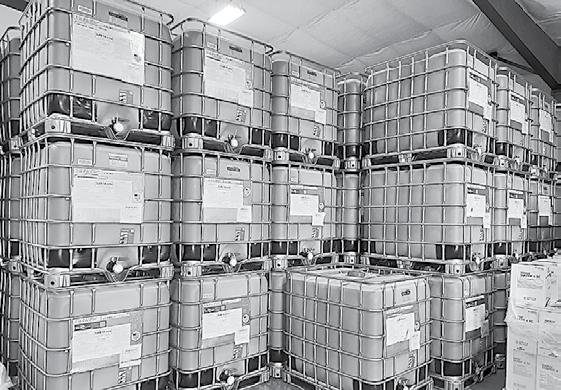
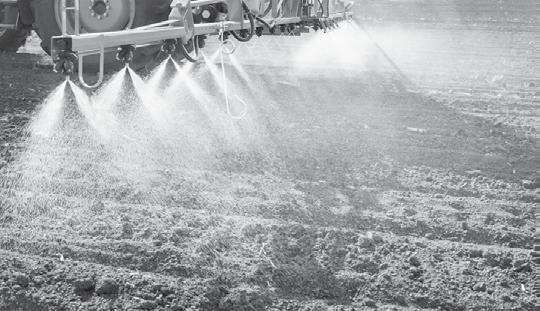
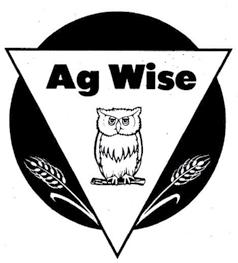
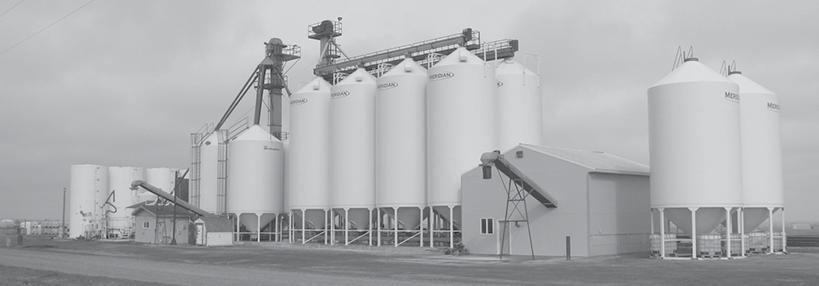
South Dakota youth participate in a Land and Soil Day judging contest.


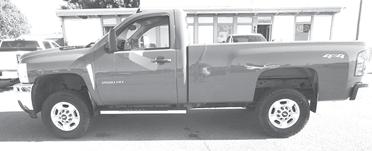
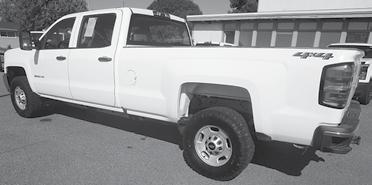
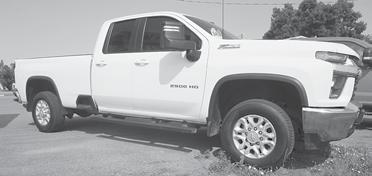
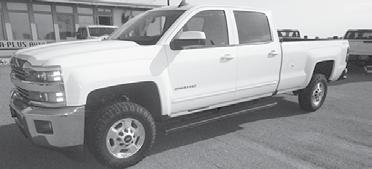
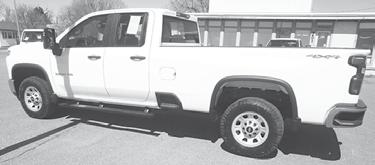
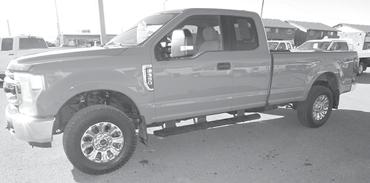



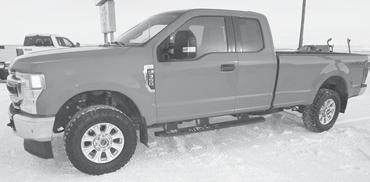
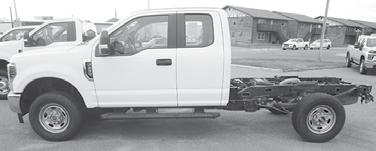
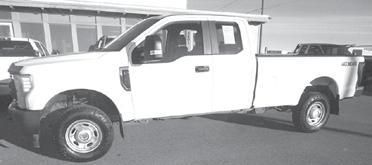

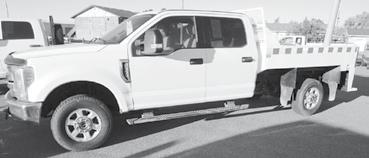

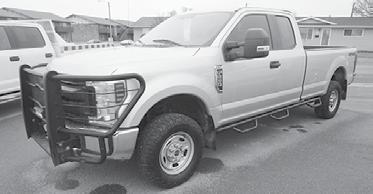
Grazing cover crops adds value
By Kelsey Stremel, K-State Extension news service
For Charlie and Jeremy Kootz, a father-son team farming near the Kannapolis Reservoir in Ellsworth County, cover crops are more than conservation. For them, it’s about building healthier soils, reducing erosion, protecting water supplies, improving profitability, and extending the grazing season into fall and winter.
“We’re trying to incorporate cover crops to boost soil health and then integrate livestock as much as we can with it,” Jeremy said. “It’s about getting the best of both worlds — stacking enterprises so we’re improving infiltration and soil biology while also cycling nutrients with cattle.”
His father, Charlie, has seen the difference during dry years. “Most of it is for grazing cattle and soil health support. We’ve seen less erosion these past couple years, even when it’s been so dry. That’s been a huge benefit,” he said.
Those on-the-ground experiences line up with research from Kansas State University. A two-year study in Russell County tested how different grazing strategies on cover crops influenced soil conditions, grain yields, and overall farm profitability.
K-State Researchers compared ungrazed plots, the widely recommended “take-half-leave-half” approach, and a more aggressive “graze-out” strategy where up to 90% of cover crop biomass was consumed.
While heavy grazing has often raised concerns about soil degradation, this short-term study found that higher grazing intensities did not significantly reduce soil health indicators under the conditions observed. Soil organic carbon, nutrient cycling, and water infiltration remained stable, and subsequent grain sorghum yields averaged 83 bushels per acre for ungrazed plots and 89 bushels per acre for both moderate and high grazing treatments.
“That’s an important finding for farmers in water-limited regions,” said Logan Simon, K-State agronomist. “We know cover crops can improve soil structure and reduce erosion, but adoption has been slow because of costs and concerns about yield drag. Grazing adds another layer of value. It helps make cover crops profitable.”
Residue amount and plant height were reduced under grazing, but soil surface cover — critical for conserving soil water and reducing erosion — remained similar to ungrazed plots. Even at the higher “graze-out” level, such indicators of soil health as aggregate stability and time-to-runoff were unaffected, showing that the soil protective functions of cover crops persisted despite heavier utilization.
For the Kootz family, the bottom line matters as much as soil health.
“You may not see it in the short term as much as you’d like, but the hope is long term we’ll see soil health improvements and profitability,” Jeremy said. “The cattle are part of that cycle. They’re nutrient cyclers, and they let us make better use of what we’re growing.”
The Kootz family began experimenting with no-till years ago, then gradually added cover crops with support from conservation initiatives like the Kansas Reservoir Protection Initiative, a cost-share program supported by the Kansas Water Office in cooperation with the Ellsworth County Conservation District. By adding grazing, they’ve been able to offset input costs while also protecting water quality downstream.
That connection to water is where K-State watershed specialist Stacie Minson sees cover crops playing a larger role. Working with producers near Kannapolis Reservoir, she helps farmers adopt practices that keep nutrients and sediment on the land rather than washing into streams and lakes.
“If we have a living root in the soil for more days out of the year, we keep sediment and nutrients on the field,” Minson explained. “That helps with water quality protection, but it also helps the farmer. By bringing in cattle, farmers can cover their bottom line while improving water infiltration and reducing the need to feed hay in winter.
Research co-author Augustine Obour, K-State soil scientist, said those synergies are what make integrated croplivestock systems so promising.
“We didn’t see reductions in yield, and soil health indicators remained stable even under higher grazing intensities,” Obour said. “That gives farmers more confidence to adopt practices that regenerate soils, conserve water and improve profitability.”
While the findings are encouraging, researchers cautioned that the study was conducted during an exceptional drought, when soils were less vulnerable to compaction from cattle
2022
Grazing cover crops adds value
traffic. They emphasized the need for further testing under average or wetter years, when hoof pressure could have different effects.
Still, the short-term results provide hope for farmers navigating thin margins and unpredictable rainfall. By extending grazing seasons, reducing reliance on stored feed, resting rangeland, and keeping more living roots in the soil, cover crops with livestock integration can help Kansas farms become more resilient.
“Any year is different, and we just keep learning,” Jeremy Coats said. “But the goal is long term — improving soil health and keeping the operation sustainable for the next generation.”
K-State’s research supports broader water quality and soil health goals across Kansas, including efforts to meet the Environmental Protection Agency’s 9 Element Watershed Plan benchmarks developed by Minson, who also serves at the Big Creek Middle Smoky Hill River Watersheds Watershed Restoration and Protection Strategy (WRAPS) coordinator.
This project works in cooperation with the Kansas Department of Health and Environment Watershed Management Section. By proving that grazing and conservation can coexist, K-State’s work is helping farmers balance stewardship with profitability.
The full report, Cover Crop Biomass Removal Rates to Optimize Livestock Production and Soil Health in Dryland Cropping Systems, is available through the Kansas Agricultural Experiment Station Research Reports at newprairiepress. org/kaesrr.
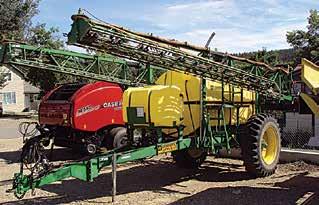
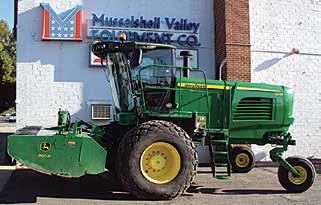
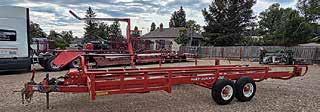

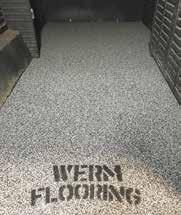
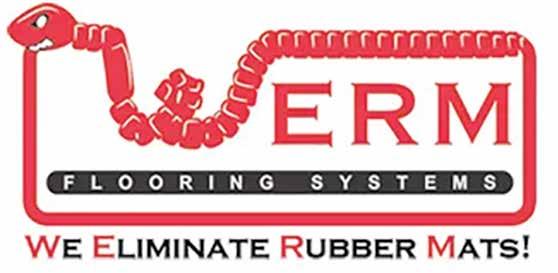
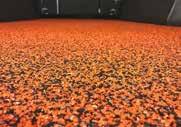
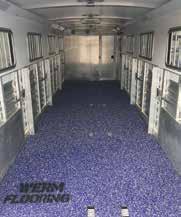
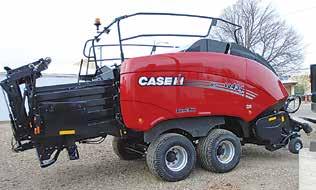
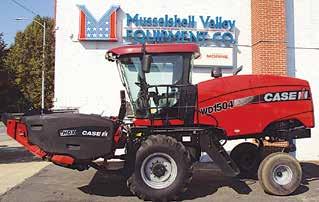
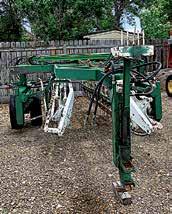
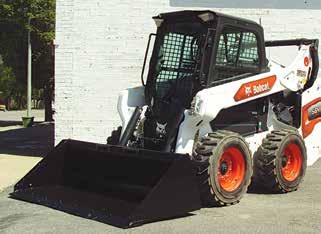
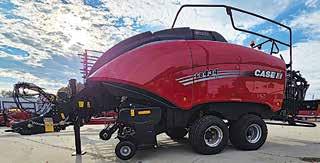


Neal Hay Sales
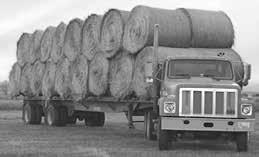
#####
There are many medicinal applications for Chrysanthemums. Among the uses: it fights cancer, treats chest pain, colds, fever, and flus. Also, it is an anti-inflammatory agent.
#####
A child of the age of six years laughs about three times more than an adult.
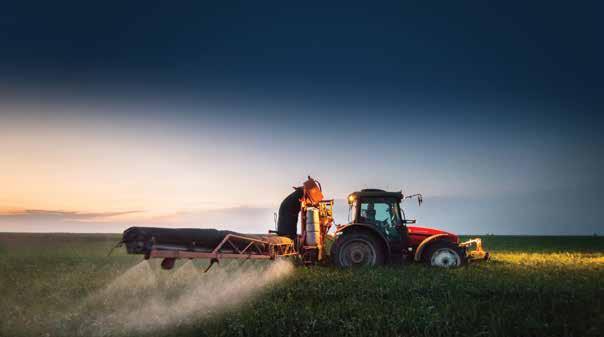
27th annual Dakota Feeder Calf Show and Feedout
The 27th Dakota Feeder Calf Show and Feedout is set for October 18 in Turtle Lake, North Dakota.
Interested consignors will deliver 500- to 700-pound steer calves before 10 a.m. CST on the day of the show. Each producer can consign one or two pens containing three or four calves. The calves are exhibited and evaluated that afternoon and then shipped to the NDSU Carrington Research Extension Center feedlot to be fed to finished market weight.
“After 26 years of comparing calf performance, North Dakota cattle ranchers are finding superior growth and carcass characteristics,” says Karl Hoppe, North Dakota State University Extension livestock specialist at the Carrington Research Extension Center. “Since cow herd genetics can change over time via bull and heifer selection, sending cattle to the Dakota Feeder Calf Show and Feedout gives the rancher information on how their selections are advancing their herd.”
NDSU Extension and the Carrington Research Extension Center partner with the Dakota Feeder Calf Show to provide producers an opportunity to experience retained ownership of calves beyond the cow-calf segment of cattle production.
“There are several ways to collect growth performance carcass data from your calves,” says Colin Tobin, animal scientist at the Carrington Research Extension Center. “The best is to feed out your entire calf crop, but that takes considerable time, effort and funds.
“An alternative,” continues Tobin, “is to consign a group of calves to a feedout project. Your risk is less, and a feedout project provides a substantial amount of information about the calves.”
Darwin Chesrown, Dakota Feeder Calf Show chair, has been consigning calves since the feedout started.
“I still enjoy comparing my weaned calves in October to the finished calves in May,” says Chesrown. “The calves really grow, and I do see differences in herd sires.”
During the 2024-25 feedout, the calves gained an average of 830 pounds in 242 days, with a total feeding cost (excluding interest) of $0.90 per pound of gain. The average sale weight was 1,460 pounds. The calves were fed with a market weight break-even point of $175.88 per hundredweight.
“It’s the variation among cattle that makes this project educational and a real eye-opener,” Hoppe says.
In the 2024-25 feedout, the spread in net return per head between the average of the top and bottom five herds was $376.95. The spread between the top and bottom herd was more noticeable ($660.65 per head). Average daily weight gain in the feedlot was 3.95 pounds for the top-profiting herd and 3.34 pounds for the bottom herd.
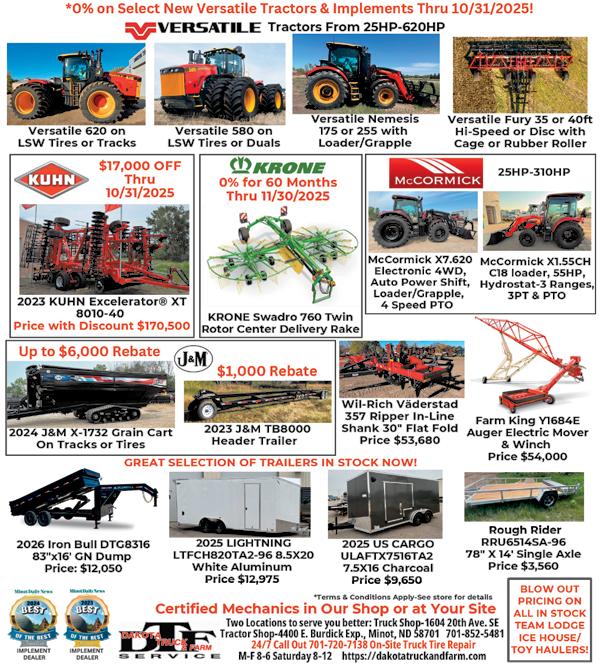
“Small differences in production have a huge impact on profit,” Hoppe says.
Feedout project staff will gather data on the rate of gain, feeding costs and other characteristics during the trial. After the calves are marketed, the staff will collect and provide information to the entrants on carcass weight, meat quality, feeding expenses and value.
Calves should be prevaccinated for BVD, PI3, IBR and BRSV, Mannheimia, Clostridials and Histophilus somni. Booster vaccinations will be administered upon delivery to the show.
Producers will be assessed an entry fee of $20 per calf. Dakota Feeder Calf Show officials will present awards to producers at the end of the trial.
For more information or to preregister calves, visit ndsu. ag/ndfeedout, contact Hoppe or Tobin at 701-652-2951 or karl.hoppe@ndsu.edu or contact Chesrown at 701-448-9286.
Weird Energy: Sewage
You are practicing good hygiene when you flush your toilet. You’re right to want to dispose of your body’s waste products as quickly and efficiently as possible. But you poop might have incredible economic and environmental value. Feces is a key resource in obtaining methane, a natural gas that could be used for heat and energy, similar to natural gas. Park Spark in Cambridge, Massachusetts, along with Norcal Waste in San Francisco, is testing out pilot programs designed to extract as much usable methane as possible from (for now) dog poop. The companies provide dog owners with biodegradable dog waste bags. The doggies provide the waste, the owners fill the bags, and then the energy companies feed the bags into a machine called a “digester,” where microorganisms process the dog poop. The byproduct: methane.


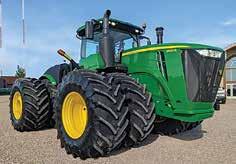
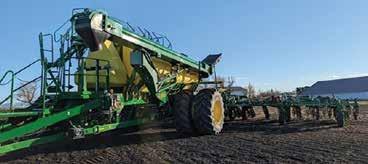
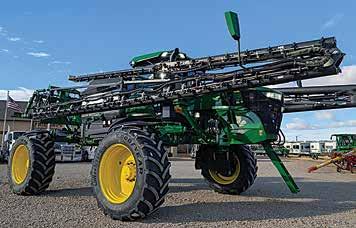
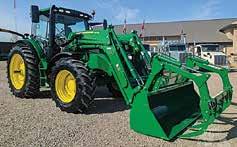
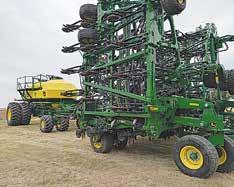

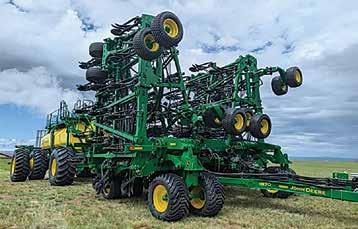
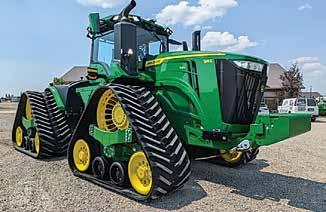
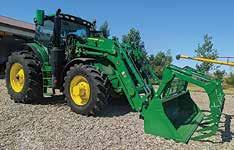

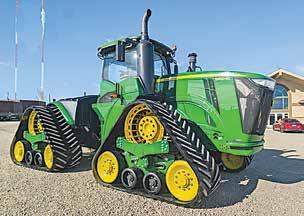
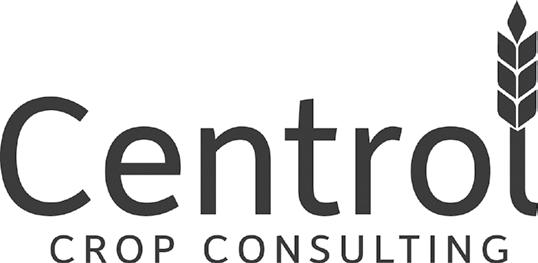
www.centrol-llc.com
Budgets tight? Did you sign up for a fertility ehnhancement program? Contact us today!
Know exactly what nutrients are in your soil and where with soil sampling from Centrol.
0-6 inch, 6-24 inch & 24-42 inch depths Composite or Zone Sampling with prescription writing. 3 GPS guided trucks available.
Standard Analysis, Complete Analysis, Soil Health and more
Independently owned, serving the Golden Triangle since 1985.
Jeff Farkell CPAg/CCA
406-788-4875
Joel Farkell CCA
406-581-6243 centrol_llc@outlook.com
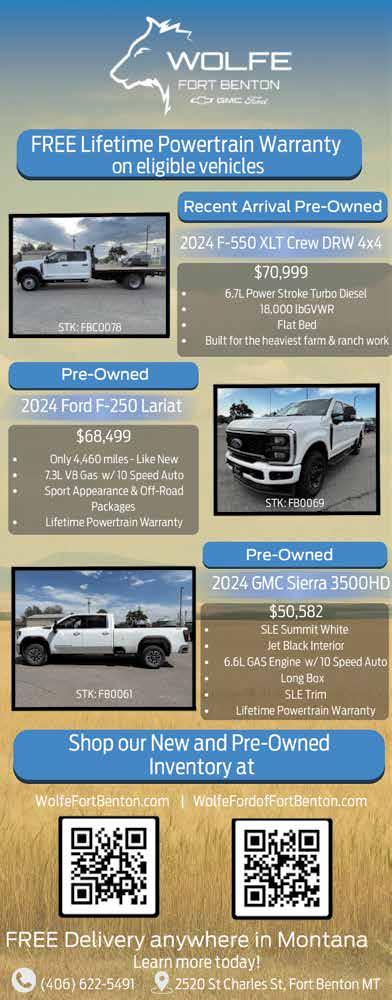
Phragmites revisited
By Jane Mangold, Montana State University Extension Invasive Plant Specialist
Introduction Phragmites australis was featured in the 2014 September Weed Post and this post revisits the species to provide additional identification information and an update on its status in Montana. Two lineages of P. australis occur in Montana – one native (sub-species (ssp.) americanus) and one introduced and invasive (ssp. australis). Native and introduced Phragmites habitats overlap and include wetlands (both freshwater and brackish), along lakes, streams, and rivers, and near springs. Invasive Phragmites may be more likely to occur in disturbed sites like roadsides and railways, construction sites, and near agricultural fields.
Status in Montana The first populations of Phragmites were found in Hill and Blaine Counties in 2014. At that time, Phragmites was under review for listing as a noxious weed and was subsequently added to the statewide list in 2015. Since then, the populations in those counties have been managed with fire and herbicide and have decreased from about 4 acres to 0.2 acre (~200 stems). In more recent years additional populations have been found in the following counties: Missoula (2020), Gallatin (2023, 2025), Lincoln (2025), and Flathead (2025, 3 populations). These infestations have been or will be managed and are being monitored annually for regrowth and retreatment.
Identification Distinguishing between native and invasive Phragmites is difficult, and multiple traits
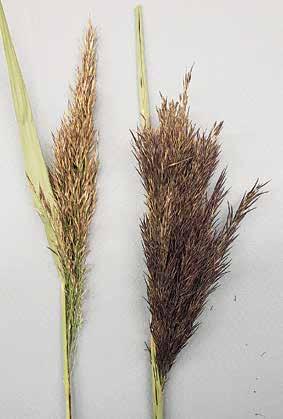
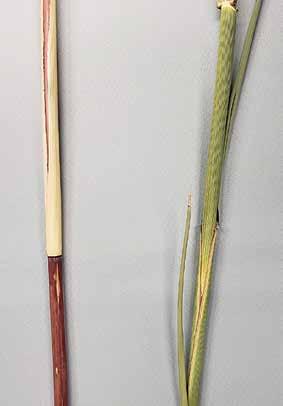
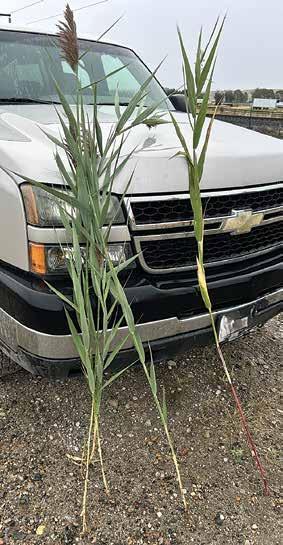

should be considered. The September Weed Post from 2014 includes a table that lists key features to examine to differentiate between native and invasive Phragmites. This post focuses on comparisons of leaf sheaths and inflorescences of the native and invasive sub-species. The leaf sheath on native Phragmites is loose and tends to fall away from the stem while those on invasive Phragmites adhere tightly to the stem. Once the leaf sheath falls away, the stem may turn a reddish color, therefore stems on the native are inclined to be redder than the invasive. The stem is smooth on the native while it is ridged on the invasive, but this is most easily noted by touching versus looking at the stem.
The leaves of native Phragmites are generally light, yellow-green while those on the invasive are dark green. Inflorescences of the invasive are denser than the native and may be a different color. Colors of leaves and inflorescences change over the course of a growing season. Differentiating between the native and invasive is easiest after midsummer and into winter.
Invasive (left) and native (right) Phragmites found in Gallatin County in 2025. Photo: Noelle Orloff, MSU.
Leaf sheaths and stem of native (left) and invasive (right) Phragmites. Photo: Jan Mangold, MSU.
Inflorescences of native (left) and invasive (right) Phragmites. Photo: Jan Mangold, MSU.
Leaves of native (left) and invasive (right) Phragmites. Photo: Jan Manbold, MSU
lemons and limes ready for export
By Jessica Ryan, ARS Researchers from
the USDA’s Agricultural Research Service are opening new markets for America’s fruit growers. Fruit flies are major economic and quarantine pests that impact fresh fruit production and impede international trade. Flies lay their eggs on fruits, making the infested fruit their host, resulting in millions of dollars in damage annually. For international trade, fruits must undergo quarantine treatment or other mitigation measures to control possible infestation by fruit flies and other high-risk pests.
In Hawai’i, ‘Lisbon’ lemons and ‘Persian’ or ‘Tahiti’ limes, both commercially popular cultivars, are new crops recently planted on the rich-soil island of Maui. Currently, the fruit is being sold locally, but harvest volumes may eventually surpass local demand. Export from Hawai’i is an option to best utilize production of high quality lemons and limes.
ARS researchers evaluated whether the Hawai’igrown lemons and limes can serve as hosts for Mediterranean fruit flies, Oriental fruit flies, and melon flies. In the studies, host status testing was conducted using nochoice laboratory and field cage tests as well as field collection of fruits. Their research findings show promise in the safe overseas export of commercial quality and non-damaged Lisbon lemons and Persian limes.
“We inspected the fruits and found that the nondamaged fruits are natural non-hosts of fruit flies and pose a low risk of moving fruit flies during overseas export,” said Peter Follett, a research entomologist at the Daniel K. Inouye U.S. Pacific Basin Agricultural Research Center in Hilo, HI. Follett added that Hawaii may be able to develop an export protocol based on non-host status or a systems approach to reduce the pest risk to an acceptable level for trading partners.
As beloved citrus fruits with several nutritional benefits, lemons and limes are in demand worldwide. These research findings should make it easier and more economically beneficial for growers to export these fruits to a multitude of markets.
#####
“The great thing about animation–you don’t have to pay the actors squat.” – Homer Simpson

#####
Rule of Yellowknife Golf Club, Canada: “No penalty assessed when ball is carried off by raven.”



##### Hogwarts motto: Draco dormiens nunquam titillandus (“Never tickle a sleeping dragon”).
##### Sylvester Stallone’s first acting role: the lower half of Smokey Bear in a Cub Scouts play.






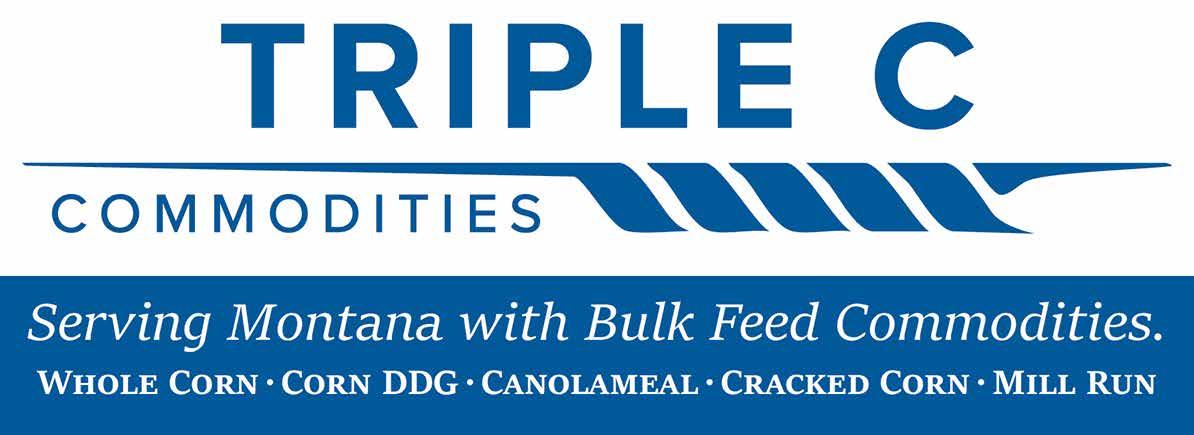
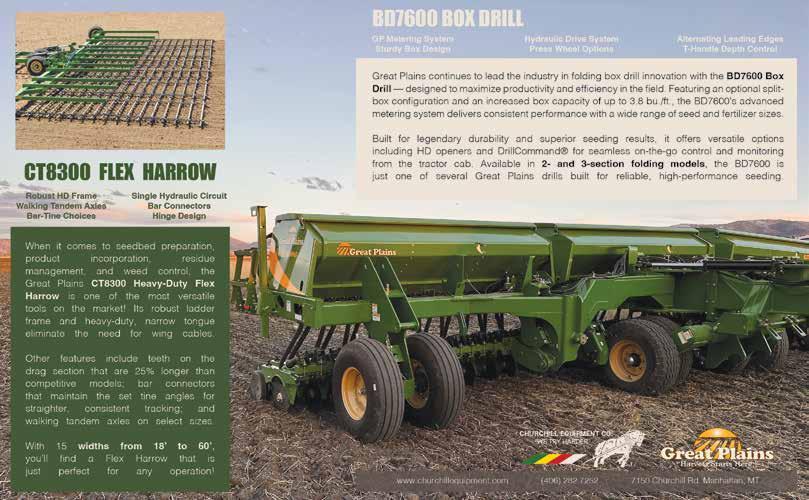


DRUM ROLLER FOR SALE
• Brand New - Low Hours
• 2024 Cat CS5 vibratory single drum smooth roller (SN 73200110)
• 10,000 pound machine • 50” drum
• 125 hours. Comes with 3 year 6000 hour warranty. Expires 5-14-2027.
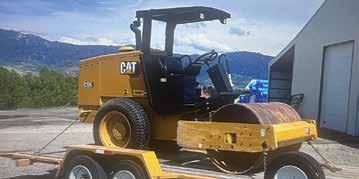

McMURRY CATTLE


Genetic Balance Trait And Carcass Value
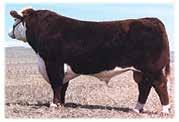
Fred & Doreen McMurry 2027 Iris Lane Billings, MT 59102 Phone 406-254-1247 Cell 406-697-4040
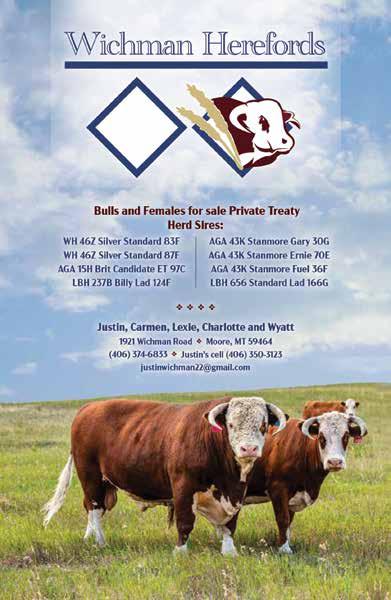
Early frost has damaged many acres of corn in North Dakota. The stage of maturity of the corn and the intensity and duration of the freeze will directly impact corn grain yield. In some cases, the severity of the damage may have growers looking for options to salvage what is left of the crop.
James Rogers, North Dakota State University Extension forage crops production specialist, says that growers might consider haying their corn, but this may not be the best option for some.
Corn hay, on average, will contain approximately 8%-10% crude protein and 65% total digestible nutrients.
“The main issue with turning corn into hay,” says Rogers, “is the moisture content of the corn and getting it to dry down to a moisture point where it can be put into a bale.”
Plant maturity has a major impact on corn moisture content. The more immature the corn is at the time of frost, the higher the moisture content of the plant.
Frost-damaged corn can have a moisture content of 70%-80% and must be dried down to below 20% moisture to be suitable for baling. Ideally, the moisture content should be dried to 15% for baling. Baling at high moisture content can result in mold development, binding of protein and reduced dry matter, Rogers warns.
Another consideration with harvesting corn for hay is the potential for elevated levels of nitrate. If the corn plant was still taking up nitrates before and after frost, these will remain in the plant. Unlike silage, where nitrate levels can decrease through the ensiling process, nitrate levels do not decrease with the hay curing process. The majority of nitrates will be in the lower portion of the plant and the stalk.
“If you’re harvesting for hay, elevate the cutting height and leave as much stalk as possible,” advises Rogers.
Taller residual stalk height will reduce nitrate levels, reduce the amount of material to dry for baling and improve snow catch over the winter.
Corn stalks and cobs contain high levels of moisture, and with modern hybrids, there is a lot of plant material to handle through a harvester and baler. Rogers recommends

using a mower conditioner that will crimp stalks and increase the rate of drying.
Salvaging frost-damaged corn for hay is an option, but getting the corn to dry to a moisture content suitable for baling is difficult. It can also be tough on baling equipment due to the large amount of volume and stalk material to process.
Haying corn with cobs and grain creates a bigger challenge in dry down because the grain and cob will tend to retain moisture and dry very slowly. The larger the ear, the longer the time needed to dry. This also creates an opportunity for mold to grow in ears that may be crushed or damaged during the mowing, swathing or mower-conditioner process.
Rogers offers a less expensive option to hay or ensiling frost-damaged corn: grazing it.
A big draw for farmers to graze frostdamaged corn is the large amount of nutrients recycled back to the soil, as well as ground cover remaining following grazing. If frost-damaged corn is chopped for silage or hayed, all the nutrients in the bale and organic material are removed.
Major drawbacks to grazing corn are the availability of livestock to graze the corn, fencing and water. The volume of forage biomass that corn produces can extend the grazing season significantly into the fall and early winter. Strip grazing of corn will increase forage utilization. Cattle will consume leaves and ears, and then they will consume stalks.
Be aware of plant maturity and corn ear development. Corn ears that were in the milk or dent stage at the time of frost can contain high levels of starch.
Watch for bloat or signs of acidosis if cattle are consuming large amounts of developed cobs. To manage this issue, gradually adapt cattle to grazing corn by limiting access for a couple of weeks to allow for rumen microorganisms to adjust to higher levels of starch. Cattle that have grazed on ear corn previously will preferentially and aggressively consume the ears, which can lead to acute acidosis and death. Providing several days of unlimited hay consumption can help reduce acidosis risks upon grazing a corn field.
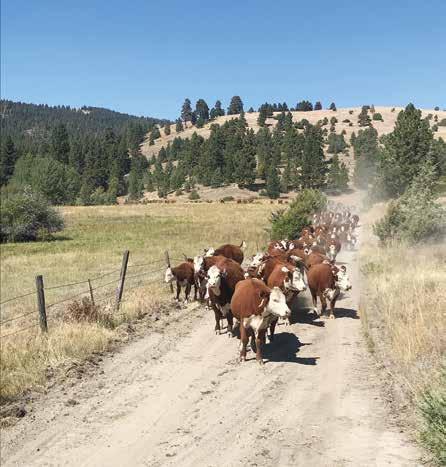
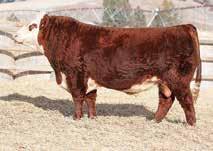
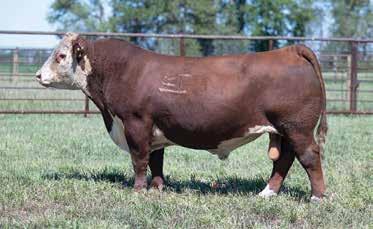
Phone Chris Hafer, Butte, MT
Cattle Chat: Importance of clean water in cattle production
By Chevy-Lynn Vaske, K-State Research and Extension news service
There’s nothing more refreshing than an ice-cold drink of water after spending time in the Kansas heat in August. According to Kansas State University beef cattle experts, cattle feel the same — and clean water is the most critical nutrient for the animals’ health and performance.
“Water is the most important nutrient that animals are going to get, and they have to have enough of it,” K-State veterinarian Scott Fritz said.
While many producers might assume all water is created equal, experts warn that not all sources are suitable for livestock. They note that total dissolved solids, nitrate and sulfate levels and pH (acidity) can significantly impact animal health and productivity.
“Cattle nearly double their water intake (when temperatures rise) from 40 degrees to 90 degrees (Fahrenheit),” Fritz said. “This increase underscores the importance of understanding water capacity and quality, especially during intense summer heat.”
Wells and ponds present different challenges.
“We’ve seen wells that were normal for 10 years, then all of a sudden the water contains as much sodium as sea water,” Fritz said.
Key factors ranchers should monitor include total dissolved solids — which should stay under 3,000 parts per million — as well as sulfate and nitrate concentrations. The veterinarians noted that water hardness typically has minimal impact on livestock.
Fritz and others agreed it’s good practice to test water sources periodically, particularly after drilling a new well or during significant seasonal changes. The goal is ensuring livestock have access to clean, abundant water that supports their health and productivity.
#####
Four pieces of bacon has approximately 800 mg of sodium. The recommended daily allowance is 2,000 mg of salt.



RESOLUTEST ALFALFA

is a
Seed Only variety. By purchasing seed, grower agrees to use seed of the variety only for the production of a commercial grain or forage crop. Using certified seed every season ensures the best stewardship, end use functionality, and opportunity to maximize yield potential of the variety. Resale of this seed, or supply of saved seed derived from this seed, to anyone including purchaser for planting is prohibited.

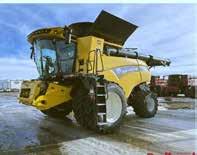
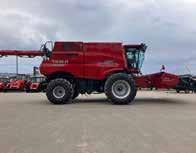
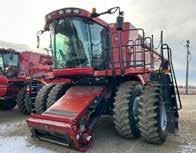
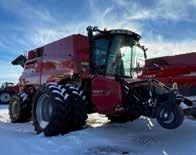

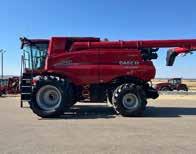
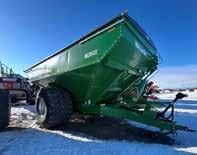
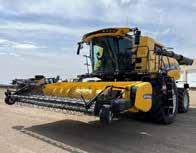
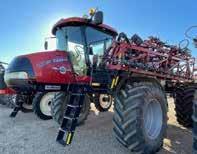
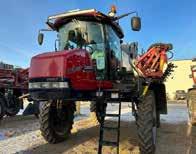
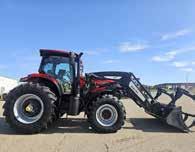
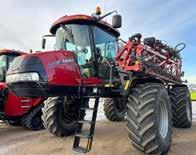
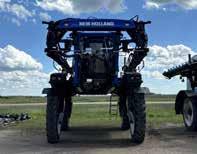
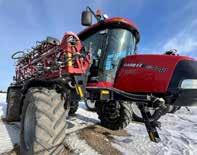
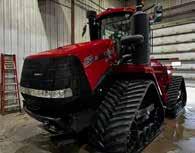
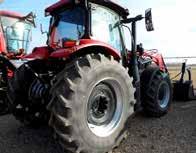
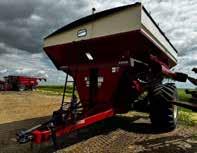
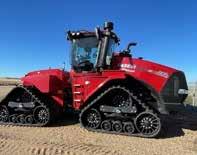
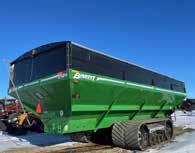
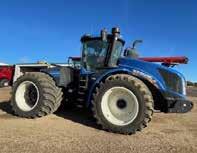
2 W Spreading, Choteau MT C43
3V Distributing, Conrad MT B6
7 W Enterprises, Inverness MT C38
A-Plus Auto, Great Falls MT A40
Abilene Machine Inc, Abilene KS A42
Accelerated Metal Solutions, Glendive MT C24
Acciacca Agriculture Repair, Fairfield MT C35, C36
Acciacca Sales and Service, Fairfield MT A36
Action Toys, Billings MT B8
Affordable Construction Equipment, Billings & Bozeman MT C21
Ag Trucks & Equipment, Great Falls MT C19
Ag Wise, Kremlin MT A39
Badland Truck Sales, Glendive MT B5
BC Trucking & Livestock, Milt Hartman, Highwood MT C32
Ben Taylor, Valier & Shelby MT C33
Big Equipment Co., Havre MT B15
Big Sky Equipment, Conrad MT C27
Big Sky Mahindra, Great Falls MT A18
Big Sky Pipe, Great Falls MT B8
Big Sky Sawmill & Wood Products, Vaughn MT C12
Big Sky Wholesale Seeds, Shelby MT.....A14
Billings Farm & Ranch Supply, Billings MT A42
BTI Feeds, Cut Bank MT C33
Bull Mountain Fencing, Yoder, Dan, Roundup MT B13
Carbon County 4-H/FFA, Red Lodge MT C41
Cascade Machine & Supply, Great Falls MT A2
Cen-Dak Sales & Leasing, Billings, MT C19
Central Heating & Air Conditioning, Billings, MT A11
Centrol Crop Consulting LLC, Brady & Conrad MT A44
Churchill Equipment, Manhattan MT A45
Churchill Trailer, Co., Belgrade MT C41
Circle S Farm Market, Vaughn MT A6
Circle S Seeds of Montana, Three Forks MT B8
Cobett, Josh Wenger, Loma MT A24
Crown Agro, Dust Helmet, Center ND A4
Cut Bank Tire, Cut Bank MT C36
D & S Auto & Trailer Sales, Mandan ND.....B4
Dakota Truck & Farm, Minot ND A42
David Steed Company, Idaho Falls, ID A3
DBL Sales & Service, Coffee Creek MT.....C4
Doane Western of Montana, Bozeman MT A19
Double Diamond Truck & Equipment Sales, Missoula MT C18
Dry Fork Ag, Ledger MT A45
Equipment
Share, Billings, MT A28
Exchange Services, Inc, Whitefish MT.....B18
Fisher Metal Products, Fort Benton, MT....C4
Flaman Rentals, Power MT A36, C42
Fort Benton Realty, Fort Benton MT A12
Fox Ford, Wolf Point MT A34
Fraser’s Oil Inc., Inverness MT C8
Frieling’s Agricultural Equipment, Great Falls MT A29, A43, B1, C11, C29, C45
Frontline Ag Solutions Dillon, Dillon MT...A23
Frontline Ag Solutions, Multiple locations MT A26, A27
Glass Trucking, Denton MT B16
Gordon Repair, LLC, Miles City MT A32
Greyn Fertilizer, Choteau, Dutton, Valier MT C7
Grossenburg Equipment, Multiple Locations SD, Multiple Locations NE, Sundance WY C3
Hamilton Systems, Inc. Hamilton ND A16
Heartland Cabin Co., Moore MT C18
Heartland Seed Company, Moccasin MT B4
Hedman, Inc, Grass Range MT C9
Helfert’s Helena Farm Supply, East Helena MT B17
Henke Enterprises, SprayFlex & Big Dog Mowers, Chester MT A16
Highline Communications, Cut Bank MT A14
Hill County 4-H, Havre MT B2
Holst Truck Parts, Ucon, ID C35
Hotsy Wy-Mont, Great Falls & Billings MT A26
Hoven Equipment Co., Great Falls & Lewistown MT C37
Hwy 12 Equipment & Repair, Baker MT...A32
I-State Truck Center, Missoula A37
Ideal Equipment, Belgrade MT B14
Irvine’s Trailers, Crossfield AB Canada....C34
J & M Truck Sales, Inc., Fargo ND C48
J & T Equipment Sales, Stevensville MT A38
J Carter Trucking, Conrad MT A10
Jamieson Motors, Inc., Chinook MT A28, C24
Jim Nielsen Trucks & Parts, Butte MT A18
Johnsen Trailer Sales, Inc., Bismarck & Fargo ND C16
Johnson Distributing, Great Falls MT B7
Keith Kessel Construction, Chinook MT..C16
KG Septic, Conrad MT A37
Krogmann Mfg. C40
Lakeland Feed & Supply, Dillon & Hamilton MT C22
Lattin & Sons, Power MT A36, C42
Laurel Trading Post, Laurel MT B19
Livingston Motor Company, Livingston MT C2
M & M Auto, Trailers, & Welding, Stevensville MT C28
M & W Machine, Three Forks MT C20
M Rush Construction, Great Falls, MT.....C28
Mahindra, Big Sky Harley, Great Falls MT A18
Marks Lumber, Clancy MT C10
Meridian Seeds, Casselton ND C30
Mineral Tub Lifter, Malta MT B12
Montana Ag Safety Program A8
Montana Farrier Supply, Livingston MT...C23
Montana Fiberglass Inc, Lewistown MT C29
Montana Metal Fabrications, Great Falls MT C2
Montana Shed Center, Great Falls MT.....A47
Montech Seed Group, MT A47
Mountain View Canvas, Fairfield MT C22
Mountain View Metalworks, Wilsall MT....A35
MT Tractors, Matt Pendergast, Stevensville MT B6
Muddy Creek Truss, Fairfield, MT A2
Muggli Bros, Inc., Miles City, MT B3
Musselshell Valley Equipment, Roundup MT A41, C17
Neal Hay Sales, Augusta MT A42
North Star Equipment, Great Falls MT.....C13
Northern Ford, Cut Bank MT C1
Northern Prairie Auto Sales, Wolf Point MT B12
Oxbow Engineering LLC, Randy Pierce PE Three Forks MT A9
Pedigree Truck & Trailer Sales, New Salem, ND A35
Pete’s Auto Sales, Great Falls MT B11
Platinum Auto Center, Big Timber MT......B16
Precision Truck & Trailer, Havre MT C47
Price Truck & Equipment Sales, Missoula MT C36
Pro-Tech Steel LLC, Great Falls MT C43
Quality Custom Sheds, Moore MT C44
Quality Sales, Great Falls MT C26
R & L Seed & Machine LLC, Geyser MT...A32
R & M Exterminators, Cheney WA C39
RDO Equipment, Kalispell, MT C44
RDO Equipment, Missoula MT C44
Reddig Equipment & Repair, Kalispell MT C6
Redhead Equipment, Regina SK Canada A48
Reinke, RPH Irrigation Services, Choteau MT C5
Rocky Mountain Radiator, Helena MT A46
Roger Rader, Inc, Sun River MT A37
Roosevelt Service, Inc., Chester, MT A10, A22
Rowse Farm Equipment, Avon MT C12
RPH Irrigation Services, Reinke, Choteau MT C5
Safflower Technologies International, Fairview & Billings MT B3
Severinsen Irrigation, Zimmatic & RMB Bins, Fairfield MT C15
Shortline Ag, Scobey MT C14
Signature Auto & Equipment, Spearfish & Belle Fourche SD B10
Sod Buster Sales, Polson MT C20, C29
SprayFlex, Henke Enterprises, Chester, MT A16
Spring Creek Industries, Taylor ND C44
Steel Etc, Great Falls MT A33
Stokes Contracting, Conrad MT B9, C14
Sullivan Brothers Construction, Conrad MT A18
Sunrise Hoppers, Bow Island AB Canada A34
T & S Sales, various locations MT A22, C38
T & T Farm Supply, LLC, Chester M C15
Taylor Farm Store, Shelby MT C33
Taylor Transportation, Great Falls, MT....C42
TCB Transport LLC, Geyser MT C6
The Fagenstrom Co. Great Falls MT C40
The Gear House, Helena MT C19
Tilleman Equipment Company, Havre, Great Falls, Fort Benton MT A19
Tom’s Shop, Grass Range MT B18
Torgerson’s Applications - formerly Heartland Ag Systems & Titan Applications,Great Falls MT C39
Torgerson’s LLC, Multiple Locations MT, Multiple Locations WY, Dreary ID A15, C25
Treasure State Seed, Fairfield MT B13
Treasure State Wood Boilers, LLC, Bigfork, MT C34
Tri-County Implement, Sidney MT C23
Triple C Commodities, Manhattan, MT....A45
Triple T Sales, Chinook MT C30, C31
TT&E Inc, Victor MT & Spearfish SD C10
Vaughn Truck, Havre MT B14
VW Mfg, Chester MT C26
Weaver Grain Bins, Power MT C12
Westwood Pallet, Moore MT C5
Wichman Ag Supply LLC, Hilger MT A32
Wolfe of Fort Benton, Fort Benton MT.....A44
XB Trailer Sales, Great Falls MT A41, B2
Zimmatic, Severinsen Irrigation, Fairfield MT C15
Zimmerman Manure & Silage Hauling, Fairfield MT C25

#####
Bees actually have knees. The expression comes from the fact that they store large build-ups of pollen in hairy baskets on their knees.
Collaboration grows success with dry bean breed ‘Kikatiti’
By
Chabella Guzman, PREEC communications
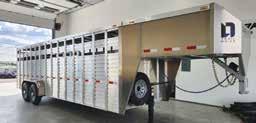








Hill County Montana 2025
4-H Livestock Sale Buyers
Thank you for your continued support of the Hill County 4-H program.
40 Below Public House
AgWest Farm Credit
Ag Performance & Repair
Ag Wise – Kremlin
Aquatana
Baltrusch Land and Cattle
Bear Paw Livestock
Bear Paw Meats
Bear Paw Veterinary Services
Bergren Transmission
Ceres Ag —Jason Myers
CHS Big Sky
Clyde and Gina Merwin
Curt and Mary Kay Rambo
Double R Inc
Duchscher Kapperud Insurance
Ervine Hamblock
Ezzie’s Wholesale
Family of Larry Sasaki
Fleet Wholesale Supply
Fraser’s Oil, Inc.
Frontline Ag Solutions
Golden Harvest Seeds
Golden Triangle Seeds
Havre Distributors
Havre Lions Club
Hi Line Insurance
Hill County Title Company
Independence Bank
JS Livestock – Jeff Solomon
KC Auto Paint and Supplies
Korb Construction
Les Schwab Tire Centers of Montana
Loch Electric
Lodestar Land and Home
Miller Simmental
Montana Premium Processing Coop
Nault Plumbing
Pacific Steel and Recycling
Pasco Ready Mix
Peterson Grain & Cattle
Preputin Inc – Shawn and Dominique
Rambo Grain and Cattle
Red’s Auto
SW & Crew – Steve and Wanda McIntosh
Stockman Bank
Stokes Market
TP Construction, Inc.
The Boardroom
Tilleman Equipment
Tilleman Motors
Torgerson Equipment
Triangle Communications
Western Nebraska, unlike its eastern half, is very arid. The University of Nebraska-Lincoln (UNL) Panhandle Research Extension and Education Center (PREEC) in Scottsbluff is an ideal location for researching drought-tolerant crops, such as dry edible beans. While dry edible beans may not be a staple in many Western diets, it is a staple in East African cities like Burundi and Rwanda, where bean consumption per person is 120 to 140 pounds per year. The desire to produce a better bean for consumption and as a cash crop led to the dry bean breeding programs at UNL and the Alliance of Bioversity C/AT in Africa to collaborate.
“They gave us game-changing pinto beans, and we took it from there, and we tested in Tanzania, and we released it officially,” said Teshal Mamo, Alliance of Bioversity C/ AT, dry bean breeder, in Arusha, Tanzania. The pinto bean is called “Kikatiti.”
“It is a variety with exceptional performance and was first identified by evaluation of the Durango Diversity Panel (DDP), which consisted of 200 accessions in on-station trials conducted in Arusha and Mbeya,” said UNL Bean Breeder Carlos Urrea at the Panhandle Research Extension and Education Center in Scottsbluff. Kikatiti took many years to develop, with the final cross being made in the greenhouse at the University of Nebraska during the winter of 2003. The initial single cross was made in 2002. “The variety was bulk tested in regional trials in Colorado, Idaho, Michigan, Nebraska, North Dakota, and Washington in 2007 and 2008, and in advanced yield trials in Scottsbluff and Mitchell, Nebraska.”
Kikatiti is especially adapted to low soil fertility, high temperatures, and drought. Mamo said two weeks ago he traveled to Nairobi, Kenya. “It is very dry, very low rainfall, and infertile soil, and Kikatiti performed well. A big farmer (in the area) he’s really happy with that, and the pinto type is replacing the old pinto variety (which had) very low yield and was susceptible to drought.” The dry bean also has disease resistance to common bacterial blight, angular spot, and matures quickly.
Before Kikatiti could become a cash crop in Africa, there was more collaboration with training, especially in breeding. Shida Nestory, a short-term scholar from Tanzania, joined Urrea’s breeding program in 2024 in Scottsbluff to study dry beans. He is a crop research officer at the Tanzania Agricultural Research Institute (TARI). “He is back in Tanzania and is a self-confident breeder, after his experience here (PREEC). He is sharing with other colleagues and has trained another team. His experience grew his thinking,” Mamo said.
Kikatiti will be grown in regional nurseries in 10 African countries CMit, where they will evaluate the bean in their environments this coming season, which starts in September or March, and in two to five years, see them growing in those countries. “This would be for more than 200 schools that have started eating beans during their lunch time. The (African) government really has a 10-year plan. To really cover the whole elementary and the junior school. Kids should eat beans, because beans have iron and zinc, which is good for really reducing anemia,” Mamo said.
The Nebraska Dry Bean Commission and the University of Nebraska-Lincoln donated the drought-tolerant dry bean, Kikatiti.
Mamo and Urrea are also part of the GEMINI Project, which stands for G, genotype, E, environment, M, management, IN, innovation, and I, intelligence.

They are part of a collaboration of universities in California, Puerto Rico, Uganda, Washington, and Senegal. The group is planting interspecific breeding lines under very dry and stressed heat environments. The beans will then be selected for regional nurseries. Focusing on small reds and dark purple and black, but in Africa, small red is preferred and is highly drought-tolerant. “We are going to check nutrition quality, iron and zinc, cooking time, important as using firewood and market acceptability. Farmer will produce more if consumer demand is high,” Mamo said.
The Gemini Project’s first phase will end this year, but Gates has made a promise for the next four years. Urrea and Mamo are making a joint project proposal for developing drought and heat-tolerant varieties.
#####
Father, when I walk with you I don’t trip or lose my balance. You are my solid rock–the One on whom I can always rely. Thank you for putting Psalm 18:2 in the Bible so I know that for sure.
Cattle Chat: Reducing the risk of pinkeye
By Chevy-Lynn Vaske, K-State Research and Extension news service
Dusty pastures, tall summer grasses and buzzing flies aren’t just seasonal annoyances for cattle producers — they’re risk factors for pinkeye, one of the most common and costly eye diseases in beef herds.
In a recent episode of the Beef Cattle Institute’s Cattle Chat podcast, Kansas State University veterinarians and researchers shared practical steps producers can take to reduce the spread of the disease.
“Certain breeds, like Herefords, are more susceptible to pinkeye,” K-State veterinarian Brad Gunderson said. “But because it’s a multifactorial disease, it would be almost impossible to breed cattle in a way that prevents pinkeye entirely.”
Gunderson emphasized that no single management decision guarantees success. “All components have to be working together for an operation, and every operation is different,” he said. “Selecting genetics doesn’t necessarily mean you’ll significantly lessen the chances of pinkeye in your herd.”
Beef cattle nutritionist Phillip Lancaster pointed to pasture conditions as a key factor. “Tall, mature grass can cause eye irritation, which increases risk,” he said. “That’s why it’s important to manage grazing so forages stay in a vegetative state.”
Veterinarian Bob Larson noted that flies play an outsized role in spreading the disease. “A single face fly bite can move the germs from one animal to another,” Larson said. “It goes back to basic fly control to limit that ability.”
K-State experts stress the importance of spotting symptoms early. Signs such as tearing, squinting, swelling or cloudiness in the eye should prompt quick action. They recommend fly control, grazing management and having approved treatments ready when problems rise.
“Early detection remains critical,” Gunderson said. “Once corneal ulcers or scarring begin, the damage — both to vision and to animal value — is much harder to reverse.”
For more information on this topic, along with others, check out the recent BCI Cattle Chat episode.

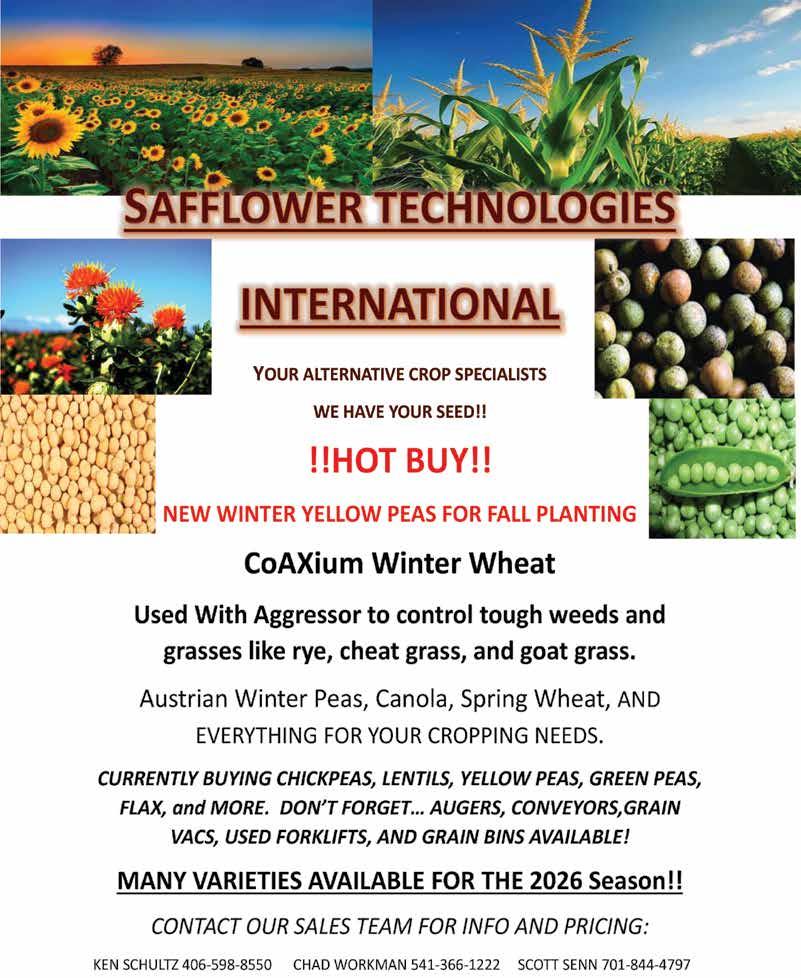
Book Your Fall Seed
Forage Matters: Plants and bears
By James Rogers, Forage crops production specialist, NDSU Extensio
My mind was wandering the other day as I was enjoying one of our beautiful North Dakota summer days, and I started thinking about how we are in August. How many more of these nice warm days do we have before we start making preparations for winter? I found myself thinking about bears and how they prepare for winter by consuming all the food they can during summer and fall to build up the fat (energy) reserves that keep them alive during hibernation.
As my mind continued to wander, it struck me that perennial forage plants and bears have a lot in common with getting ready for winter.




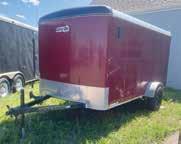










Both need an opportunity to build and store food reserves prior to winter. Both survive winter by invoking a mechanism for avoiding the harshness of winter — hibernation for the bear and dormancy for the plant. Both have seasonal cycles. How both survive winter and thrive in the spring is based on how successful they were in storing food reserves the previous fall.
As days get shorter and we approach the end of the growing season, what are some considerations for preparing perennial forage plants for winter survival and spring growth?
Seasonal cycles
Photosynthesis is the plant process of converting solar energy into sugars used by the plant. Some of the sugars are used immediately, and if there is an excess of sugars, they are stored as carbohydrates in plant storage organs for regrowth and other functions. For alfalfa, carbohydrate reserves are stored in roots, and in grasses, storage is primarily in the leaf sheaths and stem base.
In spring, forage plants use stored carbohydrates to initiate growth until leaves are developed to the point that energy from photosynthesis is fueling plant growth. Any excess fuel is stored. If the plant is left undisturbed, it will continue to increase stored carbohydrates till it reaches maturity.
Forage plants are seldom left undisturbed; they are either grazed or cut and harvested as stored forage. When grazed or cut, the plant uses stored carbohydrates to initiate regrowth till leaf growth again reaches the point that photosynthesis generates an excess of sugars that are stored as carbohydrates. Through the growing season, there is a cycle of carbohydrate storage-use, storage-use. This continues to frost and plant dormancy.
The amount of reserves used for regrowth depends on the CONTINUED ON PAGE B5
Fall thistle control
By Jerry Volesky, UNL
Did you spray thistles this past spring and summer? If so, it would be a good idea to revisit those areas as there are likely some remaining or new growth that has occurred. Late September through early November is a key time to control thistles in pastures and hayland.
There are several biennial thistles, but musk, plumeless, Scotch, and bull thistles are our most problematic. Biennials require portions of two growing seasons to flower/reproduce. They develop from seed the first season into a flat rosette. When trying to control biennial thistles, destruction of rosettes prior to flowering (bolting) is an effective means of preventing seed formation and subsequent spread.
Another thistle to look out for is Canada thistle. Canada thistle is a creeping perennial that can be controlled with fall spraying, in conjunction with other management options in the spring.
While in the rosette stage, thistles are more effectively controlled using herbicides. It is important to note that fall spraying of thistles is not a silver bullet and effective control often needs repeated applications. It will take several years of timely control before the soil seed bank is reduced. There are many herbicides labeled for thistle control. Take care when purchasing products and always read/follow label directions before use.
GrazonNext® HL, Milestone®, Chaparral®, Graslan® L, Stinger®, Overdrive®, and Tordon 22K® are all products that are labelled for use on biennial thistles as well as Canada thistle. 2,4-D mixed with dicamba is also an effective option but should be sprayed when temperatures are warmer for the highest efficacy. When using Tordon 22K® or Graslan® L, both products are restricted use and contain picloram. Use extreme caution around other vegetation, especially trees, as both products will kill woody plants.
Forage Matters: Plants and bears
CONTINUED FROM PAGE B4
the amount of leaf area remaining after grazing or cutting and the frequency of this occurrence. If the last use of stored carbohydrates for regrowth occurs so late in the season that reserves are not replenished, then we have potentially hurt capacity for spring growth and plant persistence. This is a manageable situation, and here are some thoughts on how to manage carbohydrate storage for long-term perennial plant health and persistence.
Alfalfa
A common question that comes up this time of year is this: How late can I harvest alfalfa and not hurt my stand from winter kill? Alfalfa needs 500 growing degree days or five to six weeks prior to a killing frost for carbohydrate reserves to build up, which for many areas will be early to mid-September. If this is an old alfalfa stand that will be coming out of production, then harvesting late does not really matter if the stand is going to be terminated in the spring. If forage is needed, delay harvest to a point where little regrowth will occur due to cold temperatures. This will be around mid-October when temperatures are consistently averaging 41 degrees Fahrenheit.
Another option would be to delay harvest until after frost. Alfalfa can also be grazed late in the season to extend the grazing season, but be cautious, as there is an increased risk of bloat with freeze-damaged alfalfa. Allow alfalfa time to dry down following a killing freeze prior to grazing to reduce bloat risk. If harvesting alfalfa late, leave 4-6 inches of stubble height for crown insulation and snow catch.
Perennial pasture
Research has shown that the intensity of grazing perennial grasses prior to winter dormancy does have an effect on their spring production. This effect is delayed spring growth and reduced forage biomass. This effect is much easier to manage if you are in some type of rotational grazing system.
If a paddock or pasture is intensely grazed late in the season prior to frost, then delay grazing this same paddock in the spring until it has adequate time to recover. This might mean delaying grazing that paddock until the plants are approaching maturity. This effect is much more difficult to account for in continuous grazing systems, as cattle are selective grazers and tend to select the same plants repeatedly if allowed.
Much like a bear storing food, our forage systems need winter preparation as well.





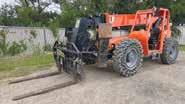


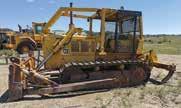
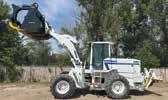
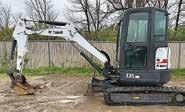
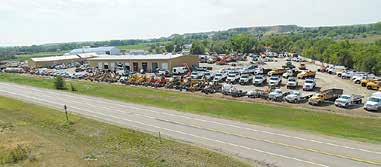

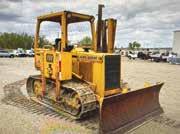













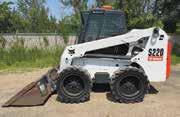





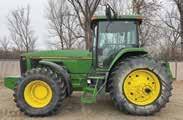



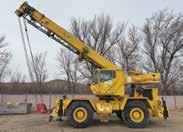

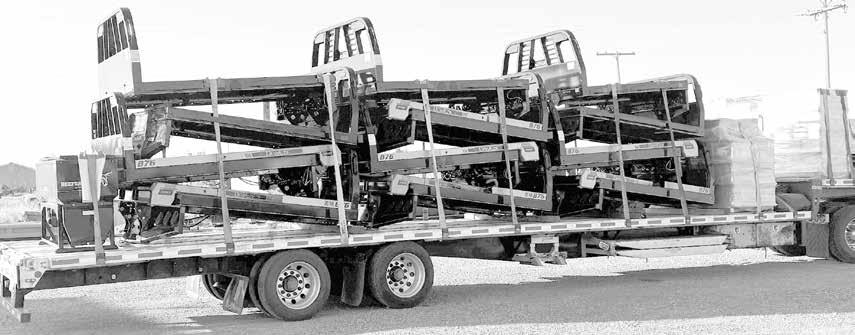
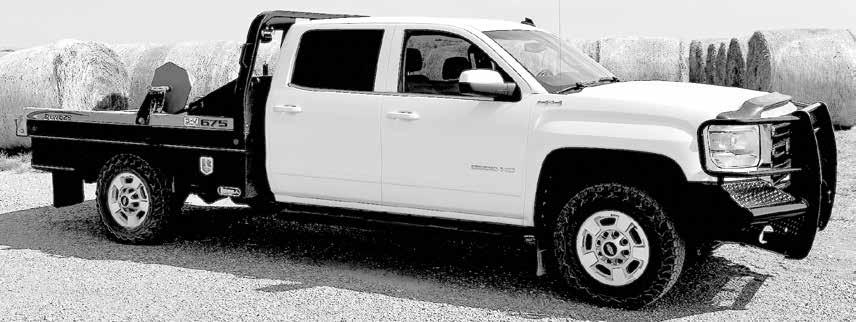
Last alfalfa cutting
By Ben Beckman, UNL
Timing the last fall alfalfa cutting can be a difficult thing to plan for and varies among growers. A balance between stand health, yield and quality must be maintained.
For much of the state first week of October is the average first killing frost (28°F) for alfalfa, so targeting September 1 as the last alfalfa cutting would allow plants 6 weeks to store root carbohydrates prior to the killing frost.
This is important as last cutting timing decisions will potentially impact your crop’s winter survival and vigor next spring. For example, in five-cutting irrigated system, research has shown that the next spring first cutting yield will be lowered by approximately the same amount as the yield from a late-fall last cutting.
During dry weather, cutting schedules can be pushed back or more forage may be needed. In these cases, what may be the risk if these producers seek yet another cutting during this growing season?
If the first fall frost occurs earlier than normal, then winter injury is a risk. However, conditions vary from year to year; and plant winterizing generally begins about three weeks before the first frost date with the “ideal” being six weeks of uninterrupted growth in the fall to become well winterized.
Winter survival of later cuttings will improve with younger stands (except new stands); winterhardy varieties and disease-resistant varieties. For those needing extra cash or forage this fall, the higher dairy quality forage values may off-set the financial risk of needing to re-establish alfalfa stands next year which winterkill.
For most producers, the best strategy is to avoid harvesting alfalfa (Sep. 1 to Oct. 15) during the critical fall period 6 weeks before the first killing frost. This allows plants to enter winter with higher root carbohydrates.
Making the most of summer annuals this fall
By Ben Beckman, UNL
As we move into fall, many producers may be looking at harvesting forage from summer annuals like sorghum-sudan or other large-stemmed crops. While these can provide a valuable feed source, making dry hay this time of year comes with some real challenges.
Cooler days and nights, heavy dew sets, and fewer daylight hours all slow the drying process. Add in thick stems and reduced sunlight intensity, and getting hay down to a safe storage moisture becomes difficult. Pushing hay harvest late into the season without good drying weather can increase the risk of mold, heating, or even spontaneous combustion in the stack.
If dry hay is still the goal, there are a few steps to improve curing. Mechanical conditioning, like crimping stems, can speed drying. Spreading hay into wide windrows helps capture more sunlight and airflow. And leaving a taller stubble gives the windrow space off the soil surface, reducing moisture wicking from the ground and allowing better air movement underneath.
Even with these adjustments, weather windows can still be tight. Alternatives such as silage or baleage may be a better fit when moisture is high and stems are slow to cure. Stockpiling growth for grazing later in the fall is another option that reduces harvest risk and provides valuable feed, though quality may drop as plants mature.
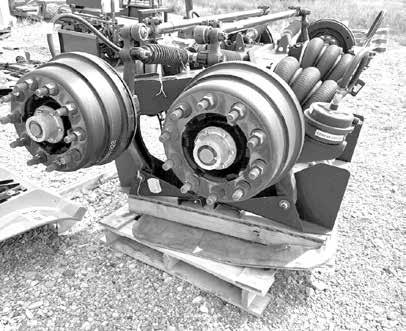
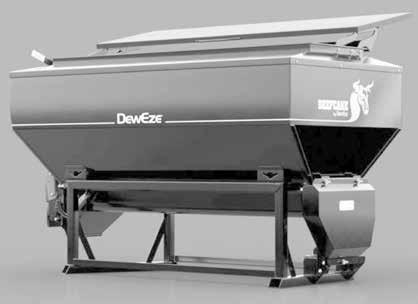
As you plan fall forage harvest, weigh the risks of slow drydown against the flexibility and feed quality benefits of ensiling or wrapping, or even stockpiling. A little planning now can help protect both forage quality and safety.
#####
The Lamaze class was full of pregnant women and their partners. When the class was coming to an end, the instructor said, “Remember ladies, exercise is good for you. Don’t forget to take a walk as often as possible. And gentlemen, it wouldn’t be a bad idea for you to go walking with your partners. Are there any questions?” A hand went up from the back of the room. “Yes,” replied the instuctor. “Is it okay if my wife carries a golf bag while we walk?”
#####
A woman is at the club with her family when she notices her baby swallowing her golf tees. She immediately calls her pediatrician and screams, “My child just ingested my golf tees.” The concerned doctor says ‘Don’t worry, I’ll be there at once.” “What should I do until you get here, doctor?” the worried woman asks. “Practice your short game.”
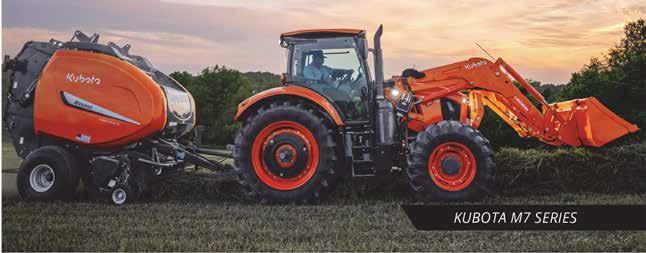
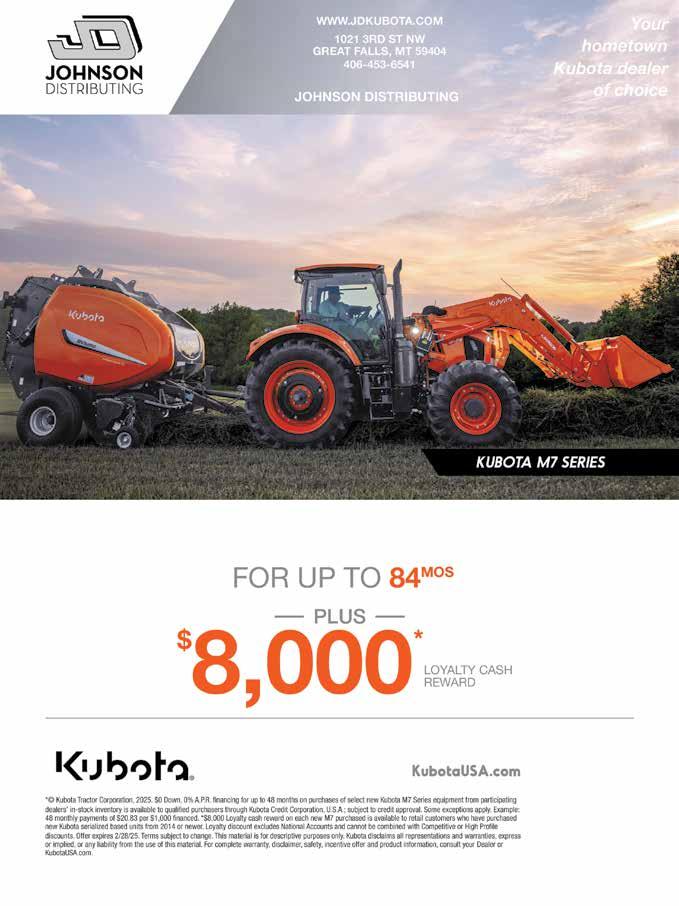

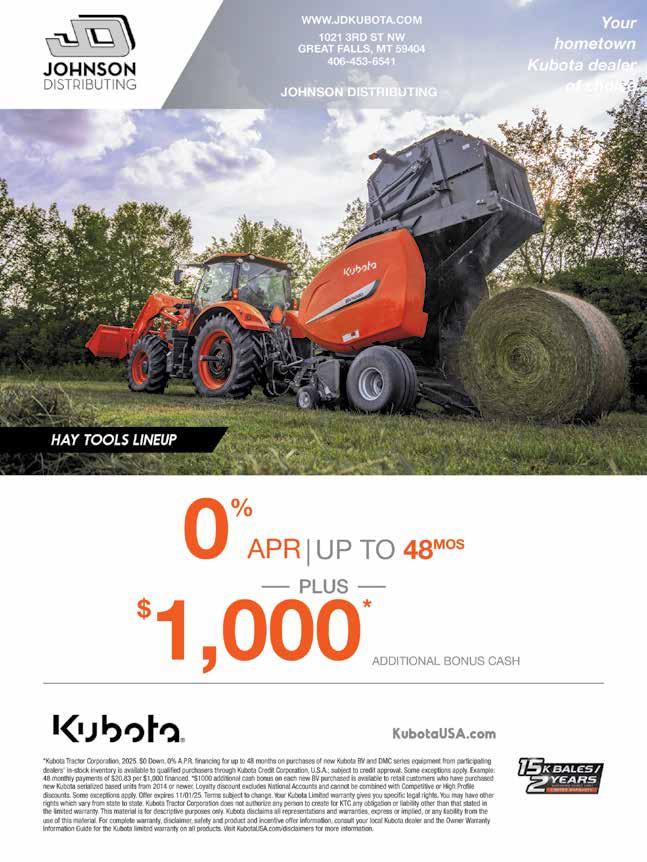

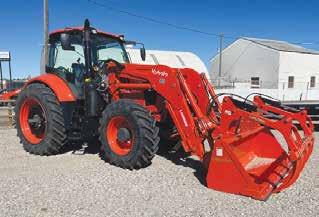
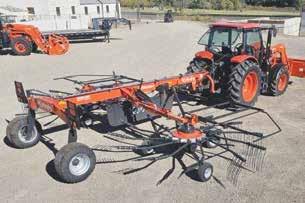
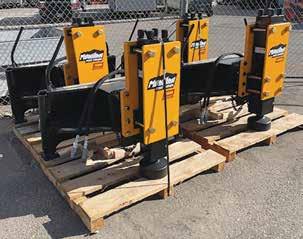
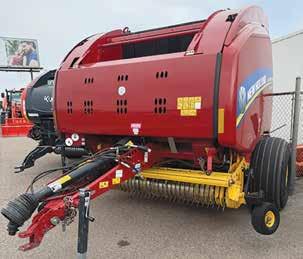

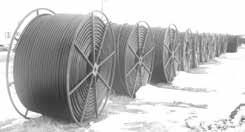
Use for irrigation, stock water or drinking water. Red stripe for electrical use. Yellow stripe for natural gas use. Also available 3/4” to 2” SIDR TURF/IRRIGATION HDPE pipe 3/4” - 4” orange smooth wall HDPE conduit HDPE pipe available in 20 to 50-ft. lengths from 6” to 66” diameter Pipe is available by the stick - coil - reel - truckload Call Ed at Big Sky Pipe – Great Falls, MT Delivery available 406-453-7299 Veteran Owned or Email: ed.bigskypipe64@hotmail.com – www.bigskypipeandsupply.com

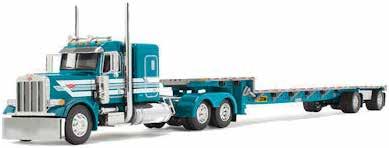
North Dakota growers should consider planting a cover crop this fall
With favorable soil moisture conditions this year, growers across North Dakota have an excellent opportunity to establish a fall-seeded cover crop, says Victor Gomes, NDSU Extension cropping systems specialist at NDSU’s Dickinson Research Extension Center (DREC).
Cover crops provide continuous living cover and roots, armor the soil, improve soil carbon and nutrient cycling, reduce erosion and runoff, help retain snow and can suppress weeds through competition.
For the first time since 2022, North Dakota is officially not in a drought, according to the U.S. Drought Monitor. Since May 1, much of southwest North Dakota has received close to 15 inches of precipitation, with some areas receiving more than an inch in the last 30 days. Localized areas of south-central North Dakota (Logan, McIntosh, LaMoure, and Dickey Counties) have received more than 9 inches in the past month.
“This is a sharp contrast to fall 2024, when drought left soils dry and delayed germination of fall-seeded cover crops,” shares Gomes. As a result, many winter-hardy cover crops did not emerge until spring 2025. This fall’s moisture offers a much better chance for strong establishment ahead of winter.”
Broadcasting may work in the wetter eastern part of the state this season, but for quicker germination and better seed-to-soil contact, drilling remains the preferred method—especially in western North Dakota—so that cover crops can make the most of available moisture.
NDSU Extension specialists offer these recommendations for farmers considering planting a cover crop:



Choose the right cover crop
“Before seeding, consider what you want the cover crop to accomplish,” says Carlos Pires, NDSU Extension soil health specialist. “Cover crops are service plants, and their benefits depend on your goals.” Cover crops can provide:
Winter soil cover and erosion protection
Nitrogen fixation to boost soil fertility
Nutrient scavenging after harvest
Weed competition and suppression
Fall or early-winter forage options
Keep your crop rotation in mind, says Gomes. Some species can act as a bridge for insects and diseases. For example, cereal rye should not be planted ahead of wheat or barley, since it can host Hessian fly.
Timing matters
Most species germinate at soil temperatures above 38 to 40 degrees Fahrenheit. For cereal rye, the optimal planting window is late Au-
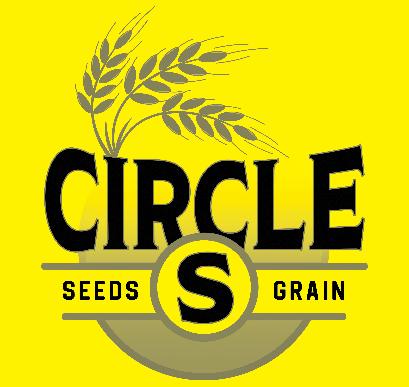
gust through early October.
Late-summer planting (after corn silage, canola, pulses or small grain harvest) provides strong potential for biomass production, nutrient capture and soil health improvements, provided that cover crops are well-established.
Early-fall planting slows erosion and scavenges nutrients, though options are usually limited to grasses and non-legume broadleaves.
Interseeding into corn or soybeans can extend the growing window but timing may be past optimal this year.
Dormant seeding (when soils stay below 35 degrees Fahrenheit) shifts all growth to spring, but doesn’t take advantage of fall moisture. For cereal cover crops intended for forage, there’s also a risk of poor vernalization and reduced grain yield.
Winter-hardy and frost-tolerant options
North Dakota winters are harsh, so selecting species that can survive overwinter is crucial. Winter-hardy options include cereal rye, winter camelina, hairy vetch, triticale and winter wheat.
“Growers who prefer quicker soil warmup in spring may choose frost-tolerant, nonwinter-hardy species like oats, turnips and radishes,” says Chris Augustin, NDSU DREC director. “These extend photosynthesis late into the fall and then winterkill. Low C:N ratio crops like turnip and radish also decompose quickly in spring.”
Cost-share opportunities
Cover crops are an input cost, but programs exist to help offset expenses. Farmers for Soil Health offers financial support for adoption. Learn more at https://farmersforsoilhealth. com/. The U.S. Department of AgricultureNRCS also provides cost-share opportunities. Find your local service center at: https:// www.nrcs.usda.gov/contact/find-a-servicecenter?state=38&county=.
“This year’s statewide moisture conditions create an excellent window for establishing cover crops,” concludes Gomes. “Whether drilled in the drier western part of the state or broadcast in wetter eastern regions, cover crops can provide lasting benefits to soil health, nutrient cycling, and erosion control. Choosing the right species and seeding soon will help position fields for success going into 2026.”
For more photos and illustrations detailing cover crop recommendations, see this article on page 10 of the September 11 edition of NDSU’s Crop and Pest Report available at ndsu.ag/cpreport.
The birth of email
Ray Tomlinson was just goofing off at work one day when he created the way a lot of us communicate these days. After graduating from MIT in 1965, he went to work at Bolt, Beranek and Newman, the company that had contracted with the U.S. government to build ARPANET– the experimental military communications system that would later become the Internet.
In 1971 Tomlinson was trying to figure out a way to send messages to other engineers on the project. He knew of a program that could send messages between users of the same ARPANET machine, but he also knew of another program that could send files from one remote computer to another–so why not messages? He tinkered some more and figured out how to use them both to get what he wanted. And he chose a symbol for message address lines to denote mail sent through ARPANET to remote
machines: today’s ubiquitous @. Electronic mail caught on like wildfire. It wasn’t the programming that was the breakthrough, it was the idea. Suddenly two users could send terse, informationfilled messages to each another without the need for social niceties or for both to be available to chat at the same time. The number of e-mail messages sent grew by leaps and bounds on ARPANET. By 1973 a study found that 75 percent of all traffic on ARPANET was e-mail. Today we send millions of e-mails every day–it’s changed the way we do business, talk to one another and even the way we think.
Tomlinson didn’t consider these messages to be a big deal; in fact, as Forbes reported in 1998, a BBN coworker said that when Tomlinson showed him his work, he said, “Don’t tell anyone! This isn’t what we’re supposed to be working on.”

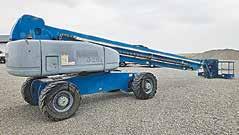
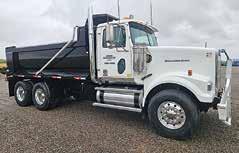

Chevrolet 3500 Pickup, Duramax diesel engine, Allison automatic transmission, dual rear wheels, CM bed sprayed with LineX, 9-ft. 2” Boss V plow, extra set of studded tires, 24,000 miles, one owner, excellent condition. $86,000
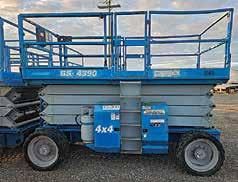
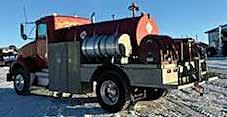
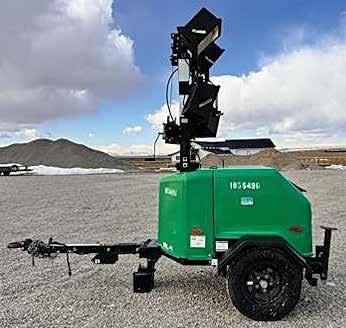
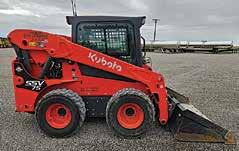
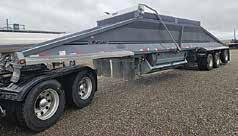
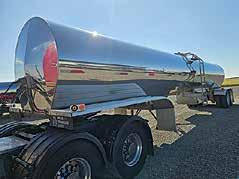
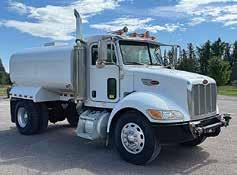
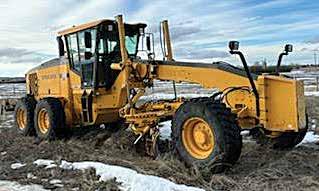
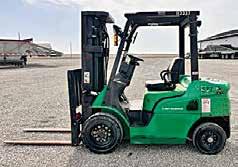


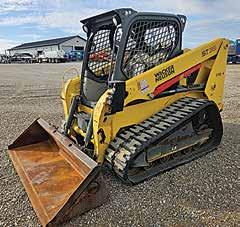
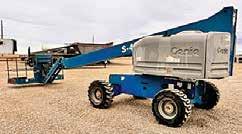
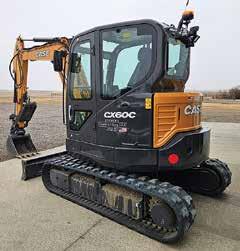
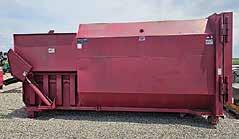
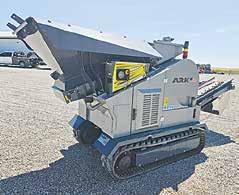
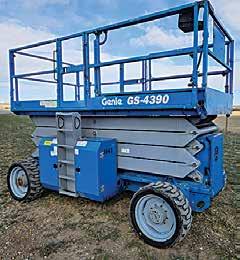
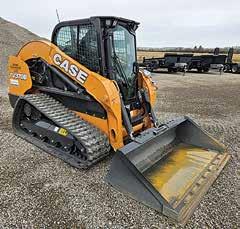
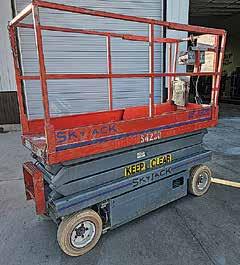
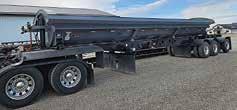
3220 Scissor Lift, electric, non-marking tires. Good machine $4995
Marathon Ram Jet Garbage Compactor, 3 dumpsters, power unit, very nice. $6950 2001 Polar Stainless Steel Tanker trailer, 2 compartments, 6700 gallon, 2 axle, toolbox, aluminum wheels,
lent condition.
1999 Kenworth W900L Caterpillar
hp engine, jakes, 18 speed, pusher axle, 2 line wet kit, lots of history $85,000 Peterbilt Water Truck, Caterpillar C7 engine, automatic transmission, 2500 gallon tank, hose reel, nice setup $50,000
2024 Kubota SSV 75 Skidsteer/Loader, cab, heat, a/c, auxiliary hydraulics and electrical, hydraulic coupler, 300 hours, one owner, excellent condition $47,500
Genie GS 4390 Rough Terrain Scissor Lift, gas/propane power, 4x4, good lift $12,500
Genie S125 Boomlift, 125-ft. reach, Cummins diesel engine, good machine. $28,500
2022 Ark Jaw Crusher, self contained on tracks, diesel engine, remote controlled, 51 hours, excellent condition. $76,900
1993 Eager Beaver Tag Trailer, tilt deck, 12 ton capacity, nice trailer. $11,000
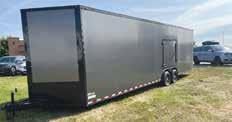
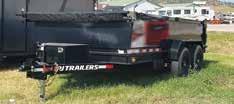
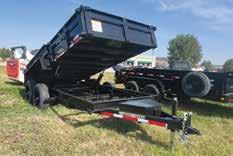
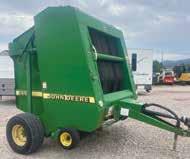


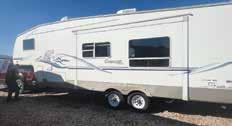

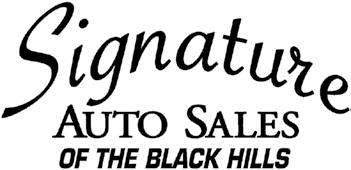
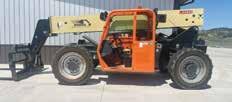
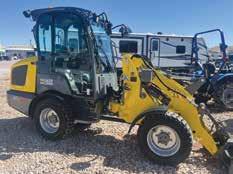
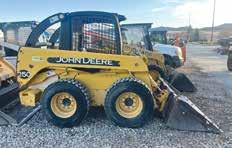
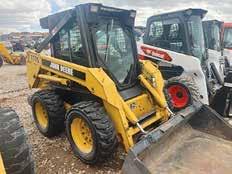
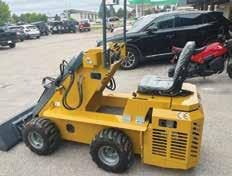
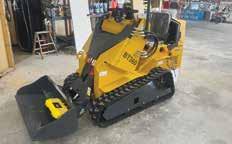

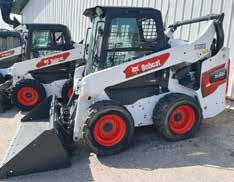
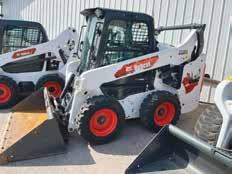
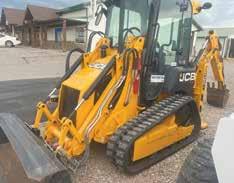

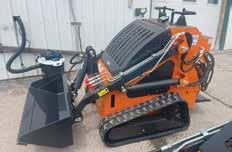
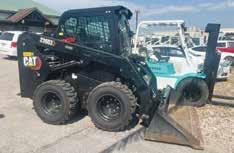
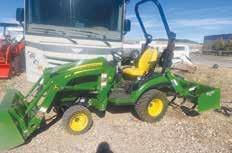
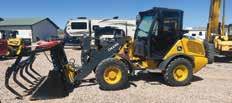
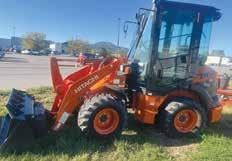
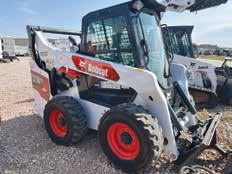
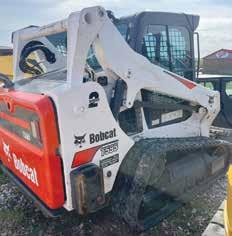
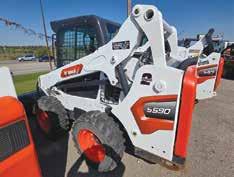
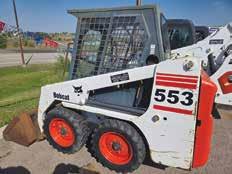
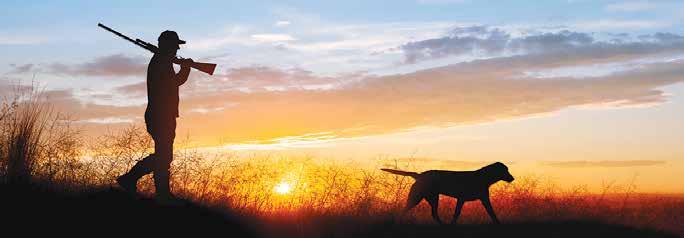





























































Mineral Tub Lifter Work Smart...Not Hard
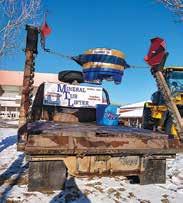
We make it easier for you to handle your Mineral Tubsplastic, metal & biodegradable! Can be used with all bale beds. Purchase a Mineral Tub Lifter TODAY!!!
Purchase directly from a dealer in your area or purchase on our website www.mineraltublifter.com
406- 390-0826 • Shyla 406-390-1339 email: shyla@mtintouch.net Malta, Montana

Farmers should assess corn and soybeans for frost and freeze damage
Many areas of North Dakota experienced their first fall frost of the season the weekend of September 5-7. While most North Dakota Agricultural Weather Network (NDAWN) stations stayed close to a minimum temperature of 32 degrees Fahrenheit, a few stations recorded lower temperatures with some upper 20s observed. The Dickinson NDAWN station fluctuated between 32 and 33 degrees Fahrenheit for five hours between 3 and 7 a.m. the morning of September 6. The Hettinger station ranged between 32 and 30 degrees Fahrenheit for four hours early Saturday morning.
“Today marks five days out from the frost and freeze events of last weekend,” says Clair Keene, NDSU Extension small grains agronomist. “Based on the temperatures observed, farmers should assess their crops for damage now in order to make timely harvest and marketing decisions going forward.”
Corn assessment
Corn can be killed at 32 degrees Fahrenheit if the temperature stays at freezing for a few consecutive hours, usually thought to be three to four hours, says Keene.
Corn plant death occurs more quickly at colder temperatures, with exposure at 28

degrees or less for just 15 minutes being sufficient to kill most tissues. When temperatures are just above freezing, 33 to 40 degrees Fahrenheit, for multiple consecutive hours, damage is likely to be highly variable and strongly influenced by the topography of the field. Cold air is heavier than warm air, and as air cools, it flows to lower positions on the landscape. If a corn field has rolling hills or is adjacent to a low creek bed, farmers should expect to find more damaged plants in the swales or along the drainage points.
The weather the day before and after the frost occurs also influences the extent of damage, shares Keene. If it was warm and sunny the day before the frost and also warms up quickly with sunny conditions the morning after the frost, the corn is less likely to sustain as much damage than if conditions were cloudy and cool, with highs less than 50 degrees before and after the frost.
The tops of corn plants are the most likely to be damaged by frost. When checking corn fields for frost or freeze injury, it is helpful to delay assessment for five to seven days after the frost event so that tissue that was
International Gin and Tonic Day

Celebrated on: October 19th
As a staple among the list of amazing cocktails out there, gin and tonics have a high bitterness to it, but it dies down with lime and sugar to make it palatable for most people. Whether you order it at a bar or make it at home, gin and tonics deserve their day to be celebrated.
History of International Gin and Tonic Day
The cocktail idea began during the reign of the British East India Company in India during the 1700’s. Malaria had been roaming around in India and became a problem. To treat malaria, George Cleghorn, a Scottish doctor, discovered that quinine, a flavor component of tonic water, could be used to treat malaria. However, not many liked the taste. So, British officers in India in the early 1800’s began adding water, sugar, lime, and gin to the tonic water, and thus a gin and tonic was born. While tonic water isn’t used as an antimalarial treatment, tonic water contains less quinine and is sweeter. As for the gin component of the cocktail, gin is made explicitly with juniper berries and was sold in 17th century Holland as a cure for medical issues like gout, gallstones and stomach problems.
From there, gin and tonic became a popularized British drink, one that would even transcend into popular culture. One of the most famous references for this drink was in the movie Dr. No from the James Bond series. Bond talks about one of these drinks in Jamaica, a recipe where you would squeeze a whole lime into the drink itself, making the drink tart and refreshing. While there are other references in popular culture, gin and tonics are considered to be a classic cocktail. Thus, the day was formed back in 2011 to celebrate the history of this new drink.
International Gin and Tonic Day is an opportunity for regular drinkers to find out more about their favorite drinks. For instance, sloe gin – one of the all-time classics – is made by soaking the fruits of the blackthorn tree in sugar water for several months. Harvesters pick the sloes off the trees following the first frost of winter, usually in October or November, and then submerge them in spirits. They then leave them to steep, imparting their flavor to the rest of the gin over the following months.
How to celebrate International Gin and Tonic Day
If you’re looking for a great way to celebrate this cocktail, then why not follow this James Bond gin and tonic recipe, the one he ordered on the balcony overlooking Kingston Harbour. Take either Beefeater or Gordon’s gin, add any tonic that you prefer, and then add plenty of Angostura bitters and the juice of whole fresh lime if available. The limes add a unique tartness to the drink that distinguishes itself from any other normal gin and tonic.
Those wanting to explore the world of gin flavors should attend a gin tasting tour. You can either go to a distillery (of which there are many) or order a tasting kit via the internet, complete
Farmers should assess corn and soybeans
injury, it is helpful to delay assessment for five to seven days after the frost event so that tissue that was killed has time to turn brown and dry out.
“If assessing fields less than five days after the frost, farmers may underestimate the damage because tissue might still look green when it is actually dying,” says Keene.
The severity of the frost and the corn’s developmental stage are key factors in determining potential yield losses. The following estimates can help farmers assess risk and make informed decisions:
R4 (soft dough stage):
Killing frost (leaves and stalk dead): Up to 55% yield reduction
Light frost: Around 35% yield reduction
R5 (dent stage):
Killing frost: Up to 40% yield reduction
Light frost: About 25% yield reduction
R5.5 (50% milk line):
Killing frost: Up to 12% yield reduction
Light frost: About 5% yield reduction
R6 (black layer/physiological maturity):
Killing or light frost: 0% yield reduction
Soybean assessment
“Research shows soybean yield losses are most severe when frost occurs before plants reach full seed (R6) stage,” says Ana Cardedo, NDSU Extension broadleaf crops agronomist. “At R7, when one normal pod on the main stem shows mature color, yield impact is minimal. Once soybeans reach physiological maturity (R8), when 95% of pods have turned their mature color, frost will not reduce yield, though harvest timing remains important.”
Farmers can estimate possible yield reductions due to frost based on soybean
maturity stage:
R5 (beginning seed): 75%-80% yield reduction
R6 (full seed): 20%-40% yield reduction
5 (late seed fill): 10%-20% yield reduction
R7 (beginning maturity): 0%-5% yield reduction
R8 (mature): 0% yield reduction
Soybeans killed at R6 or R7 should be left in the field to dry and harvested along with mature soybeans once seed moisture is at the desired level, recommends Carcedo.
Weather conditions during the fielddrying period strongly influence the color of the seed coat. R6 soybeans dried under sunny, dry conditions developed a goldenyellow seed coat similar to that of mature soybeans (R8). However, when plants are exposed to freezing temperatures, snow or rain without sufficient sunlight, beans often retain a greenish cast caused by chlorophyll.
“Green soybeans are discounted at elevators because chlorophyll removal adds cost to processing, although oil quality is usually less affected,” shares Carcedo. “Even under poor weather conditions, frost-damaged soybeans left in the field may continue to ripen naturally. Research has shown that frost-damaged plants often mature and change color more quickly than undamaged plants.”
The September 11 edition of the NDSU Crop and Pest Report, available at ndsu.ag/ cpreport, shares detailed information to help farmers estimate corn and soybean yield loss based on growth and/or maturity stage at the time of frost.



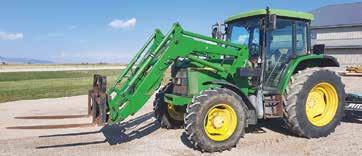
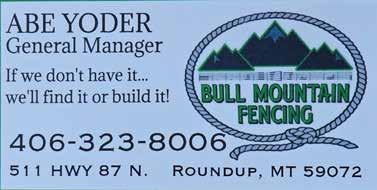

WANTED TO BUY:
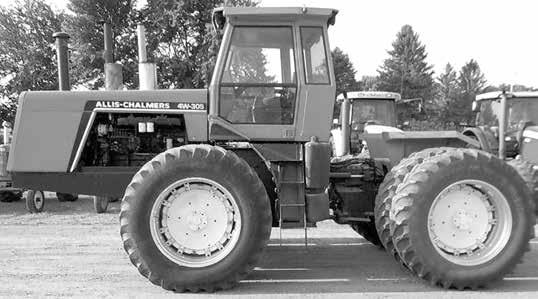
Allis Chalmers tractors 4W305, 4W220, D21, 220, 8010-8070 mfwd
Any condition considered Phone Nathan at 701-240-5737 or 1-800-735-5846, email: swensonrv@srt.com
SKID STEER FOR SALE
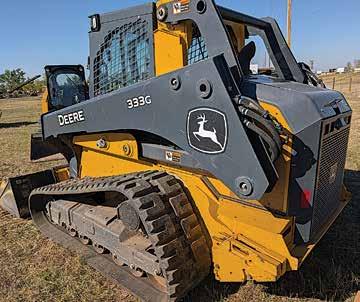
2023 John Deere 333G skid steer, 968 hours, every option minus the Hi-Flow. New tracks, 84” bucket. Warranty until April of 2028 or 2000 hours. Ready to work. $67,500
Phone Brad @ (406) 551-0867


Navigating farm succession without a family heir: Right of first offer and right of first refusal
By Jessica Groskopf, Nebraska Extension Ag Economist
In my work with agricultural families, I’m seeing a growing and difficult reality: many farms and ranches today don’t have a successor within the family. While this absence can simplify parts of estate planning, it often creates deeper, more emotional challenges, especially when legacy and identity are tied to the land.
This article is the eighth in a series supporting farm and ranch owners facing this transition. If you’re just joining, I recommend reading the earlier pieces at cap.unl. edu for helpful background.
In the first article, I encouraged you to think differently about your legacy. It doesn’t have to end with your family. Helping someone outside the family doesn’t mean shortchanging your heirs. Often, this means creating an agreement that allows someone, like an employee, tenant, or neighbor, to buy assets from your heirs, trust, or company. As discussed in the previous article, using an option to buy agreement can unintentionally force your heirs to sell property, which may not be your intent. Instead, you might prefer to offer someone the chance to buy only if your heirs choose to sell. These types of arrangements are known as preemptive rights, and they come in two main forms: Right of First Offer and Right of First Refusal. This article explores both in more detail.
ing the sale price.
It should be noted that someone can hold both the Right of First Offer and the Right of First Refusal, giving them two chances to buy the property.
Right of First Offer and Right of First Refusal agreements are different from option to buy agreements, because they do not force the sale, and the price is not defined within the agreement. As discussed in the previous article, the agreement will still outline who can hold the right, a description of the property, the timeframe, when the agreement applies, and how the agreement will be funded. neither a Right of First Offer nor Right of First Refusal guarantees the holder the property. These agreements only create opportunities for the holder.
Where do these agreements come into play? It depends on what other estate and transition tools (wills, trusts, companies, etc.) you are using. I implore you to have a professionally drafted agreement, and review it with your heirs. Make sure the holder knows how to exercise their rights to comply with the terms. Additionally, if this agreement is for real estate, it should be recorded with the county register of deeds.
While these agreements can be useful, they can come with additional challenges. First, if there is a delay between your death and when the property actually sells, your heirs will need to have the resources to maintain the property. The cost of property taxes, insurance, irrigation maintenance, etc. should not be taken lightly. Moreover, your heirs need to have the business acumen to be able to manage the property. It should be your top priority to make sure they are prepared for this role. If no one is prepared for this responsibility, consider the use of a farm management company.

Ideal Equipment Belgrade, Montana 59714 Havre, MT 59501 406-265-6387 jim@vaughntrucksales.com Website: www.vaughntrucksales.com
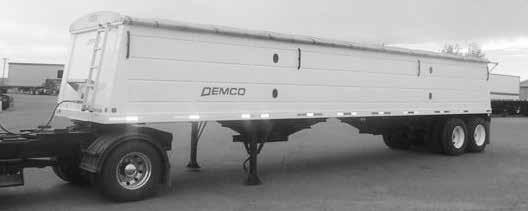


A Right of First Offer gives someone the first opportunity to purchase the property if the owner decides to sell. There are two common ways this can be structured: either the owner initiates the offer to the holder, or the holder makes the first offer to the owner. If the holder makes an offer that the owner considers too low, the owner is free to pursue a sale on the open market. However, a typical condition of the agreement is that the property cannot be sold to a third party for less than the holder’s offer.
A Right of First Refusal gives someone the right to match any third-party offer before the sale is finalized. This right must be disclosed during a sale or auction, and it may discourage buyers, potentially lower-
When there’s no family successor, your legacy can still live on through thoughtful planning. Tools like these allow you to support someone else in farming or ranching while providing an opportunity for your heirs to receive an inheritance.
Prairie Fare: Does an apple a day really keep the doctor away?
By Julie Garden-Robinson, NDSU Extension food and nutrition specialist casional treat.
“Are there any apples on our tree this year?” my older daughter recently asked.
“There are lots of ripe apples high in the tree,” my husband responded.
I thought about past autumns when she and our other two kids used an apple picker to harvest apples from our Haralson tree. Our excited dachshunds attempted to nab the ones that hit the grass.
One year, we attempted to make perfect apple pies with various types of crust recipes. The flakiest crust came from oldfashioned lard. Yes, you read that correctly.
We used an apple peeler-corer-slicer device to prepare the slices. My daughter always enjoyed any type of garden or kitchen tool. I’d buy them to keep her interested in helping me.
We needed to start freezing the extra pies.
“You can have as many apples as you’d like,” I responded after my wave of nostalgia subsided.
Apples are a frequent symbol of good nutrition. Apple pies are not the healthiest food, but a slice certainly is a delicious oc-
We have more than 2,500 cultivars of apple trees in the U.S., and they vary in their skin color, texture and flavor. Some are better for eating fresh, while others are more suited to sauces or pies.
But do apples really keep the doctor away? No food, by itself, is a miracle, but apples certainly contain several healthpromoting components.
Apples contain soluble fiber (pectin) that may lower our blood cholesterol. Apples also contain antioxidant components that may help fight cancer, and these natural components may help keep our lungs healthy.
Eating more apples can also help with weight management and diabetes management.
In one study, 40 women ages 30 to 50 (all overweight, all with high blood cholesterol) participated in the study for six weeks, and 35 women participated for 12 weeks. The participants were provided a
-New-
X
2025 Demco 40’, spring suspension, steel wheels, 11-24.5 tires, catwalk front and back, ag hoppers
2019 Merritt hopper 42’ X 67”, air ride, ag hoppers, Shurco electric tarp and traps, aluminum wheels, 11-24.5 tires $32,750
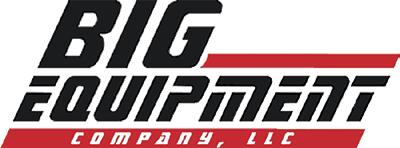
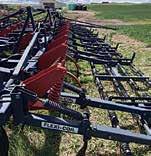
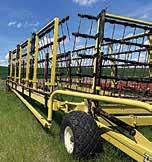
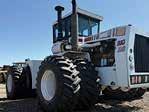

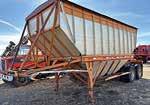

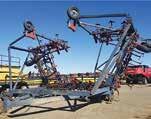
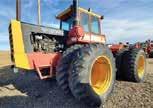
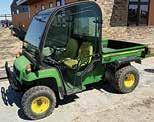
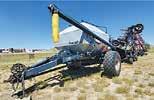
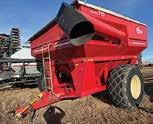
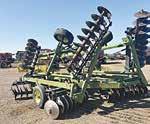
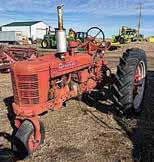
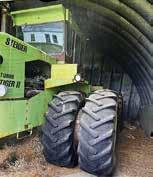
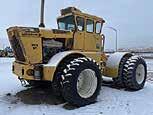
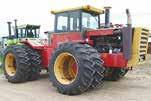
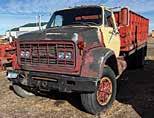
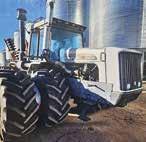
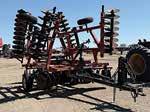

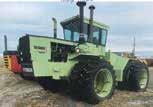

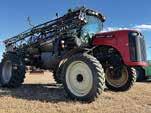


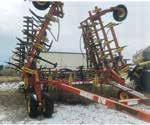
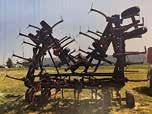
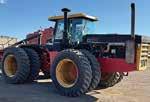
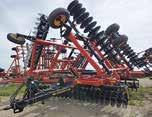

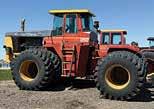
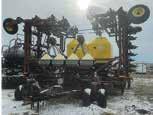


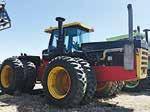


GLASS TRUCKING, INC.

Grain, Liquid, Hay & Livestock Hauling • In business since 1960 • Visit us at www.glasstrucking.com Denton, MT 406-567-2232 800-325-8859
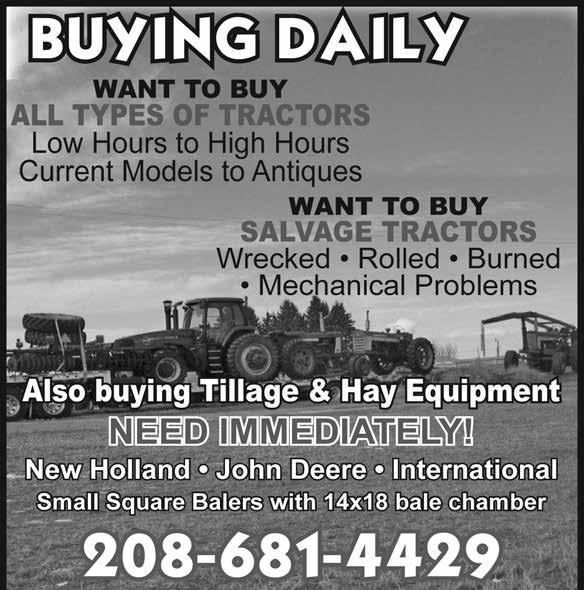
TO BUY: New Holland bale wagons. Model 1032, 1033, 1036, or 1037.
Prairie Fare: Does an apple a day really keep the doctor away?
CONTINUED FROM PAGE B14
diet that included three apples or pears per day or an oat cookie with added fruit fiber. The diets were energy-controlled so they would lose weight. The researchers reported that their weight decreased and blood glucose decreased significantly among the women who ate fruit, but not among those who ate the oat cookies.
If you are hungry for a crisp, juicy apple, look for fruit with shiny, smooth skin and the typical color of that variety. Avoid fruit with bruises or punctures, or at minimum, cut away those parts
A 3-inch apple has about 100 calories and 4.4 grams of fiber, and it contains potassium, vitamin C and other nutrients. Apples have very little fat and almost no sodium.
Before eating or preparing apples, be sure to rinse them thoroughly under cool, running water. For longer-term storage, keep apples in a higher humidity section of your refrigerator in a plastic bag to avoid their absorption of flavors from other foods.
Apples can be frozen, canned, dried or made into jams, jellies and relishes. Apple muffins, pancakes, salads and crisps are a welcome treat at this time of the year. Try making apple nachos by drizzling apple slices with a mixture of peanut butter and honey warmed in a microwave oven.
Try making apple fruit leather, which is perfect for snacks, or apple butter, which is delicious on whole-wheat toast or English muffins.
If you would like to try your hand at making canned apple pie filling, see “Let’s Preserve Fruit Pie Fillings” on the
North Dakota State University Extension website.
For more recipes and apple information, visit www.ag.ndsu.edu/fieldtofork and click on “Field to Fork Resources,” then “Apples,” and you will find bountiful resources to inspire your menus.
See Table 1 in “From Orchard to Table: Apples” to learn about various apple cultivars, hardiness zones, flavor and use.
For more information about canning, freezing or drying apples and a variety of other produce, visit www.ag.ndsu.edu/ food and check out the “Food Preservation” materials.
Most of us have a slow cooker or two (or three), so here’s an easy way to fill your home with the delicious autumn aroma of warm apples and cinnamon. Maybe the old saying about apples isn’t too far off — especially if you enjoy apples in some delicious, nutritious ways.
Slow Cooker Applesauce
4 large apples
Juice from one lemon ½ teaspoon cinnamon
1 tablespoon brown sugar
¼ cup water
Peel and core apples; cut into quarters. Add apples, lemon juice, cinnamon, brown sugar and water to a slow cooker, then stir well. Cover and cook on low for 4 to 6 hours, until apples are very tender. Mash with the back of a fork or a potato masher.
Makes four servings. Each serving has 130 calories, 0 grams (g) fat, 1 g protein, 35 g carbohydrate, 6 g fiber and 0 milligrams sodium.
October is Black Cat Awareness Month
A whole host of superstitions surrounding the feline with sable fur have been developed over time, and the one stating that your luck is going to have a downward turn if you have one walk in front of you is the most prevalent.
History of International Black Cat Awareness Month
EQUIPMENT
Quality 7x14+8, 14k, tilt. Was $7995 NOW $7575
Sure Trac 7x16+4, 14k, hyd. valve NOW $8395
Sure Trac 7x17+3, 14k $7395 – 3-ft. flip over ramps
Sure Trac 7x16+6 ProSeries tilt, 17.6 GVW, spare. Was 12,595. NOW $12,395
DUMP
Sure Trac LoPro 6x12, 10k. Was $8495 NOW $7995
Sure Trac LoPro 7x14, 14k. Was $10,495 NOW $9995
Sure Trac LoPro 7x16, 14k. Was $11,795 NOW $11,395
Sure
UTILITY
Sure Trac 7x12, 3k ATV. Was $2995 NOW $2595
Sure Trac 7x14, 7k. Was $4595. NOW $4395
Sure Trac 7x16, 7k. Was $4795. NOW $3995
Sure Trac 7x12, 3k. Was $2995. NOW $2495
Sure Trac 6x12, 3k. Was $2995. NOW $2655 RHI 78”x12, 3K, toolbox. Was $2995 NOW $2695
Besler
FLATBEDS
ENCLOSED CARGO
Wells Cargo FT 7x14, 7k. $7495
Wells Cargo FT 81/2 x16, 7k. Was $9995 NOW $9495
Wells Cargo FT 7x16, 7k.Was $7995 NOW $7595
Pace Outback DLX 6x12, 3k. Was $5195 NOW $4995
Pace Outback DLX 6x10, 3k. Was $4595 NOW $4395
Pace Outback DLX 5x10, 3k. Was $3795 NOW $3495
Pace Journey SE 81/2x20 - 10k $10,895
CAR HAULER
RHI 7x18, 7k, manual tilt. Was $5995 NOW $5595
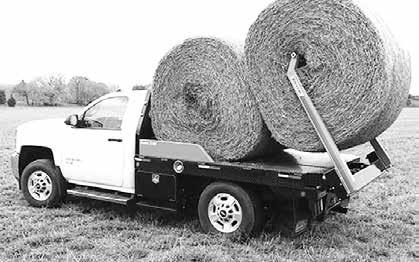
The superstition about black cats being bad luck is believed to have started sometime around the Middle Ages in Europe through folklore. Some people think black cats are a sign of death, others believe that they are witches in disguise. An association with the color black probably comes from the same ideas that relate black crows and ravens with things of the darkness. The creation of International Black Cat Awareness Month came about after its creator, Layla Morgan Wilde, noticed that while there are two days dedicated to black cats in the world (one in the UK, one in the US) there wasn’t anything dedicated to them on a national level. Wilde realized that such an observation was desperately needed. This was because superstitions surrounding black cats had gotten so out of control that shelters wouldn’t even adopt them out during October any longer! Too often the cats were being adopted as part of the Halloween holiday mystique, and would later be abandoned (or worse) after the holiday passed. Black cats are adopted at a rate 50% lower than any other color of cat, which is very difficult for a cat lover of any sort to understand at all.
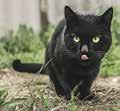
How To Celebrate International Black Cat Awareness Month
Consider these ideas for celebrating Black Cat Awareness Month on your own or with a group of cat lovers:
• Dispel Myths About Black Cats
• Adopt a Black Kitten from a Shelter
• Volunteer at an Animal Shelter
• Raise Awareness for Black Cat Awareness Month
Scientists can only estimate the number of varieties of creatures in the waters of our planet. They estimate between 100, 000 and 200,000 varieties.
Dakota Gardener: Conversations with a gardener
By Emily How, Horticulture agent, NDSU Extension – Ward County
Working with gardeners, I get to have a lot of different conversations about gardening trends. Some of my favorites are with people about the obscure and strange trends that float around social media or topics from old wives’ tales. So, I asked a fellow gardener what their thoughts were on some of these topics.
I asked, “What do you think about dandelions in your garden?”
Their response was, “Keep them out, but I do hear that they are good for aeration.”
This is true. A dandelion’s taproot system penetrates deep into the soil and breaks up compacted areas. This allows for more water and air to move through the soil and benefits soil health.
I asked, “How do you feel about some of the new garden technology?”
“I like my garden tech-free,” was the reply. Technology has started to grow in the gardening world. Some people find it useful to have additional technology in their garden; some do not. Technology can come in different shapes and forms. Evolving technology advancements make gardening more accessible to different individuals. When asked, “What do you think about some of the new techniques, like straw bale gardening?”
Their response was, “Interesting, but weird. Also, loose straw would be everywhere.”
Straw bale gardening allows for planting without soil. There are several types of plants that grow well in a straw bale, including tomatoes, peppers and squash. A successful straw bale garden needs to receive plenty of light and consistent moisture.
“What do you think about some of the fertilizing techniques, such as buried fish heads or diluted urine as a fertilizer?” I asked
“Gross and no,” came the reply.
Instead of fertilizing with fish heads, try using fish meal. The nutrients are comparable, and you will have fewer critters trying to dig out a fish head from the garden. Even though it’s already being used around the world as a fertilizer, diluted urine is still being researched. The big questions regarding this topic are how to do this on a large scale and how to make sure that the produce is safe for consumption.
“How do you feel about chaos gardening, when people just throw seeds on bare soil and walk over it?” I asked. “What? No! There’s no rhyme or reason, or plant labels,” my gardening friend replied.
This can be a fun, carefree way to plant a garden, but if you prefer a nicely manicured garden and, at least, a semi-organized garden where you know where things are growing, this method is not for you. Also, I would not recommend chaos gardening for the novice gardener who may still be learning to identify what certain crops look like.
I asked my fellow gardener, “What are some of your favorite garden tips?” Here’s what they recommended: Take time to enjoy your garden.
Never give up on a plant as it may just surprise you. Nature happens. Brace yourself for deer, birds, bugs, bunnies, rodents and weather to derail your plans and hard work.
Sharing is caring. Share your produce, your seeds, your knowledge and passion with others.
Try new things; you might stumble upon something good.
I recommend chatting with your fellow gardeners to find out what is working for them. The opportunity to learn and laugh is priceless. How do your conversations with other gardeners sound?
The Tropics
The Tropics is a band between two imaginary lines that circle the Earth, parallel to the equator. The Tropic of Capricorn is 23° south of the equator, and the Tropic of Cancer is 23° north of it. The distinguishing characteristic of the region is that the Sun is directly overhead at least once a year. This makes for very warm climate in locales like Brazil, Polynesia, and northern Australia. The two Tropic are named after the constellations where the Sun was positioned, in ancient times, during the summer solstice.
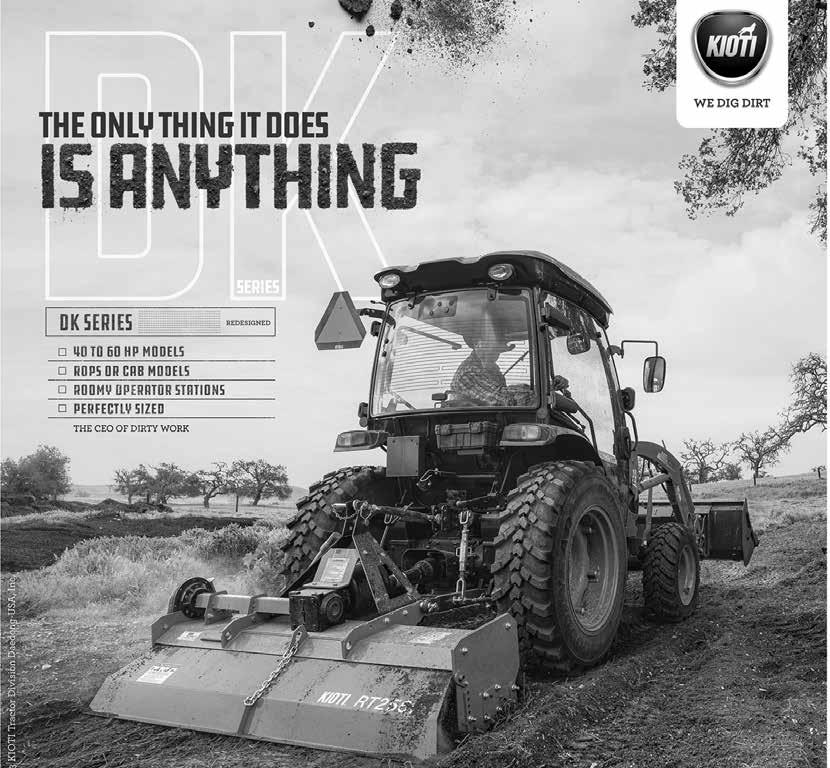

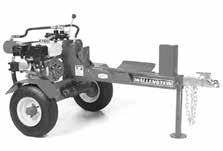

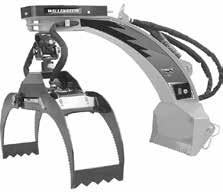
Kioti DK4720SEHC tractor with KL5521 loader, cab, heat, A/C, HST transmission, Cat I 3-point, 540 PTO, 47 hp. 1 in stock
Kioti DK5320SEHC tractor with KL5521 loader, cab, heat, A/C, HST transmission, 4WD, 3-point, PTO. 1 in stock
Kioti DK4720SEH tractor, KL5521 loader, 4WD, HST transmission, Cat I 3-point, 540 PTO. 1 in stock
Kioti CK3520H tractor with KL4030 loader, 4WD, HST transmission, Cat I 3-point, 540 PTO. 1 in stock
Kioti CK2620H tractor with KL4030 loader, 25 hp, tier 3 diesel engine, HST transmission 1 in stock
Kioti CX2510H tractor with KL5510 loader, 25 hp, 4WD, Cat I 3-point, 540 PTO, HST transmission 1 in stock
Kioti CS2210H tractor with SL2410 loader 2 in stock
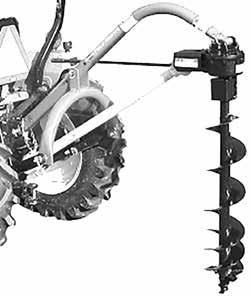
Kioti
Cat I 3-point, 22 hp, 42 hours and 5 year warranty Comes with 50” back blade. $12,000 Farmall 504 tractor with Ford HD post pounder. $5500 Oliver 88 project tractor. $1000
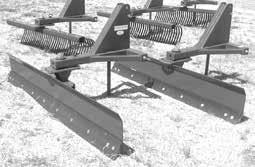





KIOTI TRACTORS
CS2210H with SL2410 loader, 50” SSQA bucket, 4WD, 540 PTO,
Bald and Free Day

Date When Celebrated: Always celebrated on October 14th Bald and Free Day honors those of us with a beautiful, shiny top. You don’t have to be bald to celebrate this day. But, it helps. People who are married to, or related to, a bald headed person can celebrate with the honoree.
Enough with the bald jokes. There will be zero tolerance for them today. Rather, today is a day to cherish and appreciate the freedom that comes with being bald. While the rest of us are spending money on hair cuts, hair shampoo, hair sprays, combs, and such, the bald guys is smiling as he saves money and time.
Upon becoming a lucky bald guy, you are finally freed of the worry and fret that other guys have, as they wonder for years:
“Will I lose my hair?”
Is my hair turning grey?
Better still, as a bald guys are much happier. In addition to saving money on haircuts and hair accessories, they never had a “bad hair day”.
So, if you are bald, enjoy your freedom, as you celebrate Bald and Free Day.
Today’s Quote: “We’re all born bald, baby.” - - Telly Savalas
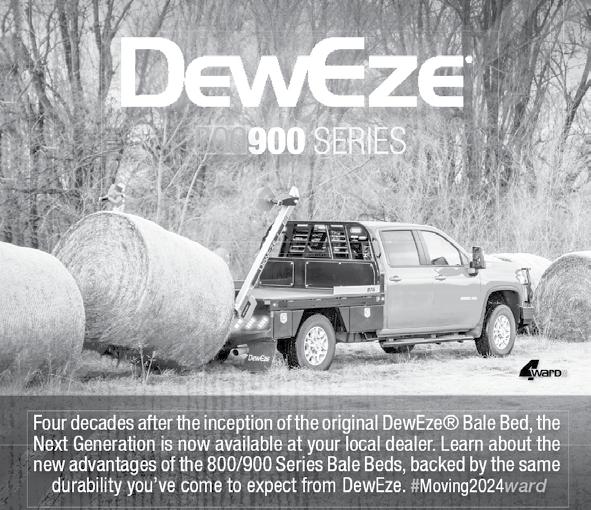
SERIES
Navigating farm succession without a family heir: Option to buy agreements with non-related parties
By Jessica Groskopf, Nebraska
In my work with agricultural families, I’m seeing a growing and increasingly challenging reality: many farms and ranches today lack a successor within the family. While this absence can simplify parts of estate planning, it often creates deeper, more emotional challenges, especially when legacy and identity are tied to the land.
This article is the seventh in a series supporting farm and ranch owners facing this transition. If you’re just joining, I recommend reading the earlier pieces at cap.unl. edu for helpful background.
In the first article, I encouraged you to think differently about your legacy. It doesn’t have to end with your family. You might consider offering opportunities to employees, tenants, or neighboring producers.
Helping someone outside the family doesn’t mean shortchanging your heirs. Often, this means creating an agreement that allows someone, like an employee, tenant, or neighbor, to buy assets from your heirs, trust, or company. In order to ensure that your wishes are carried out, you might consider an option to buy agreement as a part of your estate and transition plan.
Extension Ag Economist property? Second, how long do they have to pay for the property?
What is the price? The option to buy agreement must specify the price or include a formula for determining it. Avoid vague terms like “book value” or “fair value,” as they can lead to disputes. Instead, consider using more concrete valuation methods such as tax-assessed value or appraisals. You may also choose to include a discount as part of the pricing structure, if appropriate.
When does the agreement apply? Often, in the context of estate and transition planning these agreements trigger at your death.
How will the transfer be funded? Possibilities here include cash, an installment note, or life insurance. Life insurance backed buy-sell agreements are discussed in detail here: https://go.unl.edu/tc8y
(406) 428-2272 TOM’S SHOP Grass Range, MT
2-2025 GMC 3500HD double cab, SRW, 6.6l gas, 4x4 with DewEze 876P.
2025 Ford F350 SRW, super cab, 7.3l gas with DewEze 876P.
2021 GMC 3500HD double cab, SRW, 6.6l gas with a new DewEze 876, 46,000 miles. 800900

IS A 1031 EXCHANGE RIGHT FOR YOU?
Determine if you qualify for and would benefit from a 1031 Exchange
Are you selling an investment property?
Are you seeking tax deferral?
Can you meet the strict deadlines?
Do you want to reinvest in another like-kind property?
In an option-to-buy agreement, the person you want to have the option (i.e. an employee, tenant, or neighbor) is referred to as the “holder.” This agreement grants the holder the right, but not the obligation, to purchase the property. If the holder fulfills the terms outlined in the agreement, they can force the property’s owners (i.e. your heirs) to complete the sale. If you wish to prevent your heirs from being legally required to sell the property, be sure to read the next article in this series, which covers preemptive rights, including First Right of Offer and First Right of Refusal agreements.
Here are the six basic terms that should be included in an option to buy agreement.
Who has the option? First and foremost, the agreement must identify the holder. Often, this is a single person.
Exactly what can they buy? Include a legal description of the property.
What is the timeframe? There are two critical time-related elements that must be addressed. First, how long does the holder have to decide if they want to purchase the
Where do these agreements come into play? It depends on what other estate and transition tools (wills, trusts, companies, etc.) you are using. I implore you to have a professionally drafted agreement and review the agreement with your heirs. Make sure the holder knows how to exercise the option to comply with the terms. Additionally, if this agreement is for real estate, it should be recorded with the county register of deeds.
While these agreements can be useful, they can come with additional challenges. First, if there is a delay between your death and when the property actually sells, your heirs will need to have the resources to maintain the property. The cost of property taxes, insurance, irrigation maintenance, etc. should not be taken lightly. Moreover, your heirs need to have the business acumen to be able to manage the property. It should be your top priority to make sure they are prepared for this role. If no one is prepared for this responsibility, consider the use of a farm management company.
When there’s no family successor, your legacy can still live on through thoughtful planning. Tools like these allow you to support someone else in farming or ranching while providing an opportunity for your heirs to receive an inheritance.
Prairie Fare: Sweet corn and summer flavors — A recipe and a memory
By Julie Garden-Robinson, NDSU Extension
“No playing with your food, please,” my mom said.
I had been caught.
I looked up from my plate and grinned. I had capped most of my teeth with corn kernels, giving myself a golden smile.
I was very young at the time, I will add.
I think everyone at the table laughed. I quickly swallowed the corn kernels.
That day, we had harvested and husked tubs of sweet corn to freeze. The adults cut the corn from the cobs. We had some left to enjoy for dinner.
Corn on the cob, or off the cob, was a treat in late summer — cooked and served with butter, salt and pepper.
Sweet corn is especially appealing because of its naturally sweet flavor. It is very different from dent corn, which is used for animal feed.
Corn or “Zea mays” can be considered a vegetable or a grain. Nutritionists consider
food and nutrition specialist corn a starchy vegetable. Dried corn kernels can be processed into cornmeal for use in muffins and bread.
Sweet corn contains the B vitamin, folate, and the mineral, iron — nutrients that can help reduce the risk for anemia and other issues. Folate helps prevent birth defects.
Sweet corn is high in insoluble fiber, which feeds your beneficial gut bacteria, aiding digestion and promoting regularity.
Corn is a member of the grass family, making it a cousin to rice, wheat and sugar cane. We eat the seeds, or grain, of this family.
Locally grown sweet corn is available at farmers markets, roadside stands and grocery stores during summer. We might see fields of corn with brownish husks indicating it is ready to be picked. If you peel back the husk, look for plump milky kernels to gauge ripeness.
A tomato line that’s ripe for the picking
By Jessica Ryan, ARS
Researchers from USDA’s Agricultural Research Service (ARS) and their university partners are helping U.S. tomato growers fight a devastating crop disease. Researchers found that a tomato line developed 30 years ago is showing good resistance to the emerging tomato brown rugose fruit virus (ToBRFV), a virus that has the potential to cause billions of dollars in damage to the tomato industry in the United States and worldwide.
ToBRFV infects tomato, pepper, and similar crops by distorting leaves and discoloring fruit, resulting in yield loss. The virus is seed-borne and overcomes the resistance genes in current commercial cultivars. It can easily spread when healthy plants come in contact with contaminated equipment, hands, clothing, or infected plants or plant parts. The most effective way for farmers and growers to manage the virus is through prevention of contact with the virus, including cleaning, sanitizing, disinfecting, and maintaining clean growing areas.
“To minimize the impact of ToBRFV, it is crucial to identify new sources of genetic resistance that can be used to breed virus-resistant tomato cultivars,” said Kai Ling, an ARS research plant pathologist at the U.S. Vegetable Laboratory in Charleston, SC. “While prevention is important, deploying cultivars with resistance genes is the criticalstrategy to combat tobamoviruses.”
According to a recent study published in Plant Biotechnology Journal, Ling and his research team found that a tomato line (tomatoNN) expressing the tobacco N gene that was developed in the 1990s shows resistance to ToBRFV. The tomatoNN line was created by ARS plant molecular geneticist Barbara Baker and her colleagues at the Plant Gene Expression Center in Albany, CA.
She and her team isolated the N gene from a wild tobacco relative that confers resistance to the tobacco mosaic virus (TMV) and developed the TMV-resistant tomatoNN line.
Ling and his colleagues discovered that the tomatoNN line is resistant to ToBRFV at 22°C (71.6°F), but the resistance decreases at higher temperatures, such as 30°C (86°F), which is characteristic of several resistance genes, including N-mediated TMV resistance.
“As we look at the possible virus-resistant tomato cultivars, it is important to understand the role that temperature plays in production,” said Ling. “Temperature is a significant environmental cue that greatly influences host-pathogen interactions. Further study is needed to identify the role of temperature in the genetice resitance to tomatoNN.”
The study’s findings bring researchers one step closer to controlling ToBRFV.
“The results described in this paper highlight the significant potential of using the tomatoNN line to breed tomato cultivars resistant to ToBRFV and offers a new approach to managing this important disease for a beloved food staple,” said Ling.
The research was done in collaboration with the University of California, Berkeley; University of California, Davis; and Iowa State University.
Another virgin birth
Who? Sungai, a Komodo dragon
Where? The London Zoo, England
What? Born and raised in captivity, Sungai had not interacted with a male Komodo dragon in more than two years. Even so, she laid a clutch of 22 fertilized eggs in 2005. Four of the eggs hatched, all male, and did not contain DNA that would have come from a daddy dragon. The birth stunned scientists, who had not known Komodo dragons, could reproduce asexually. It is unclear whether this occurred through cloning–which, researchers note, should have produced all females, not males or perhaps a process called selfing, in which an animal’s body stores some cells that act like sperm and others that behave like eggs.
Why? Here’s what the scientists think: Komodo dragons are the biggest lizards on earth, but in the wild, they are confined to one small part of the world–a few volcanic islands in Indonesia. They are also endangered. All this makes survival a tricky business. But with his unique reproduction ability, females could produce offspring all on their own–even colonize a new island if necessary–all without the help of a partner and perhaps saving the species from total extinction.
Prairie Fare: Sweet corn and summer
While corn might be dismissed as “just a starch,” it provides valuable plant pigments — lutein and zeaxanthin — that are notably good for eye health. They may reduce our risk for age-related macular degeneration, a leading cause of blindness.
Spinach, romaine lettuce, bell peppers, parsley, egg yolk and other foods also contain lutein or zeaxanthin.corn is not a highcalorie food. A 6-inch ear of corn (about ½ cup of kernels) without added toppings has 60 calories, 0.5 gram (g) fat, 2 g protein, 14 g carbohydrate, 1.5 g fiber and just 2 milligrams of sodium.
Corn can be frozen, canned or dried.
Corn can be frozen on or off the cob. To freeze corn on the cob, be sure to blanch (or heat treat) the corn on the cob in boiling water, with the time dependent on the size of the cob. To blanch, bring water to a boil, add the cobs and then begin the timing process when the water begins boiling again.
Water blanch small ears (1¼ inches or less in diameter) for seven minutes, medium ears (1¼ to 1½ inches in diameter) for nine minutes and large ears (more than 1½ inches in diameter) for 11 minutes. Cool promptly and completely in ice water. Drain and package; press out air from the bag. Seal and freeze.
If you’d like to freeze corn kernels and
other vegetables, check out “Freezing Vegetables” from North Dakota State University Extension. Click on the publication file, which is a printable PDF.
If you decide to preserve your food in jars, be aware that whole kernel corn is a low-acid food that must be pressure-canned for safety. See “Home Canning Low-acid Vegetables” from NDSU Extension for details on canning corn.
To dry corn, see “Food Preservation: Drying Vegetables” from NDSU Extension. Sweet corn is more than a tasty summer treat — it’s rich in fiber and eye-healthy nutrients. Don’t miss your chance to enjoy it fresh, such as in this recipe filled with seasonal garden bounty.
Fresh Corn Salsa
4 ears fresh corn, kernels removed 1 cup green bell pepper, chopped ½ cup red onion, chopped
2 tomatoes, chopped
2 garlic cloves, chopped
2 tablespoons lemon juice, fresh or bottled
½ teaspoon black pepper
¼ teaspoon salt
Prepare ingredients as directed. Combine all ingredients in a large bowl. Refrigerate for at least 1 hour before serving. Enjoy with crunchy tortilla chips or crackers.
LARGE INVENTORY OF GOOSENECK STOCK TRAILERS ON HAND!
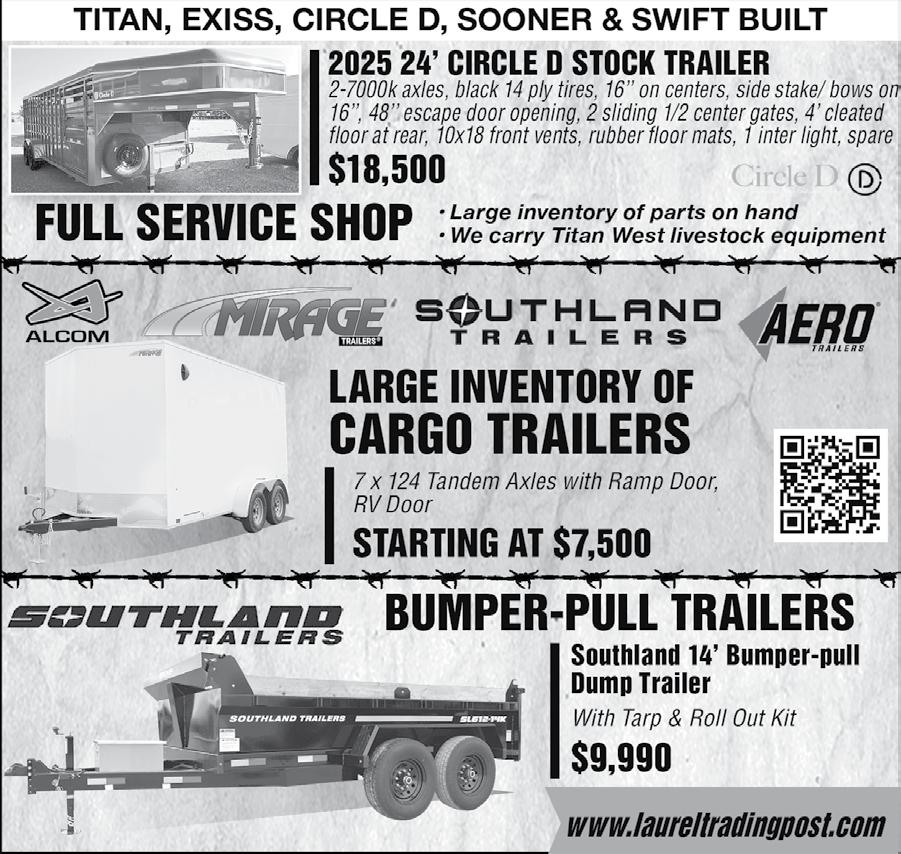
Southland Dump Trailer
7-ft. x 14-ft., tarp kit, spare, 110 and solar charger, ramps, D-rings, stabilizer jacks,14,000 lb. GVW, scissor hoist $9990
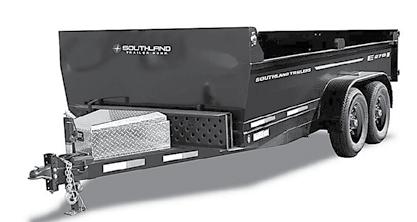

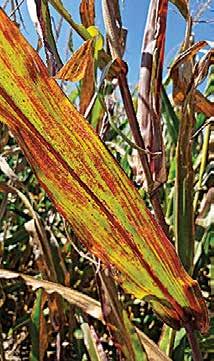
insect vector. (Ashleigh Faris | Oklahoma State University)
rived late in the season.
Presence of corn leafhoppers confirmed in Southeast Nebraska
By Tamra Jackson-Ziems
- Extension Plant Pathologist, Kyle Broderick - Extension Educator and Coordinator of the UNL Plant and Pest Diagnostic Clinic, Julie Peterson - Extension Entomologist, Kyle Koch - Assistant Extension Educator, Talon Mues - Extension Educator, Ron Seymour - Extension Educator, Marina de Val-Hilden - Extension Educator, David Wangila - Extension Educator, Robert WrightExtension Entomologist, Abigail Lyons - Research Technician, Pin-Chu Lai - Extension Entomologist
Key Takeaways
• Corn stunt disease and corn leafhopper were first reported in 11 new states in 2024 including Nebraska, Kansas, Oklahoma and more, marking a northward expansion of both the insect and pathogen.
• Nebraska confirmed corn stunt disease in two Jefferson County fields and one Burt County field in 2024 but has not detected the pathogen yet in 2025.
• Corn leafhopper presence has been confirmed in multiple Nebraska counties over two growing seasons, with continued monitoring underway.
• Economic damage is unlikely so far because the pest and pathogen have ar-
• Management focuses on cultural practices such as early planting and volunteer corn control, as insecticide options remain limited and thresholds are still being developed.
A new corn pest is creeping into the Midwest, and Nebraska growers may soon have to contend with its arrival.
In 2024, corn stunt disease and its insect vector — the corn leafhopper (Dalbulus maidis), which transmits the pathogen — were reported for the first time in Oklahoma and Kansas. Scouting efforts in Nebraska intensified during the 2024 and
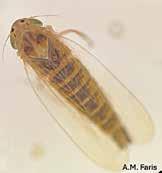
2025 growing seasons in response to these detections.
Eleven symptomatic corn samples from Nebraska fields were submitted for testing in 2024, with two Jefferson County samples testing positive by initial PCR tests for corn stunt. An additional sample submitted from Burt County, Nebraska tested positive for corn stunt spiroplasma (CSS) (by DNA sequencing analysis), one of the pathogens responsible for causing the disease.
Scouting for the corn leafhopper also expanded, leading to confirmation of the insect’s presence in late summer and early fall 2024 in Adams and Clay counties in southeast Nebraska, Burt County in northeast Nebraska, and Dawson County in central Nebraska (Figure 2).
Sampling during the 2025 growing season confirmed the presence of corn leafhopper in Kansas and, on August 18, in a single field in Clay County, Nebraska (Figure 3). To date, CSS has not been detected in Nebraska this year.
A Nebraska county map showing scouting results for corn leafhopper (CLH) and corn stunt spiroplasma (CSS) in 2025. Counties shaded green indicate CLH found, blue indicates CLH scouted but not found, and orange indicates corn samples tested negative for CSS. All other counties are white, indicating they were not scouted.
The Bottom Line
So far, the arrival of corn leafhopper and the corn stunt pathogen(s) it carries has occurred late enough in the 2024 and 2025 growing seasons that economic damage in Nebraska is unlikely.
We encourage stakeholders to reach out to their local extension office and submit suspicious samples to the Plant and Pest Diagnostic Clinic if they suspect the presence of this disease or its insect vector in their fields. We will continue to monitor and update the sampling map.
Symptoms
The earliest symptoms of corn stunt disease are leaf yellowing (chlorosis) or reddening of leaf tips (Figure 1a). If plants are infected during vegetative stages, the stalk internodes may be shortened, causing plants to be stunted
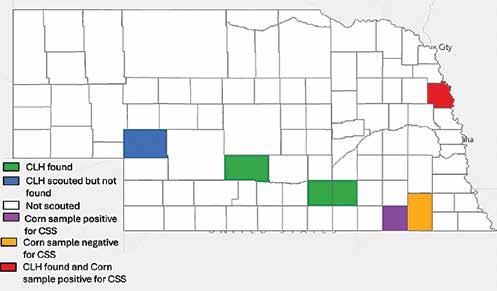
in appearance. Corn stunt disease may also lead to development of multiple ears or shortened, stunted ears, or the production of tillers.
Hybrid genetics and timing of infection can impact the symptoms and their severity, with infections starting later in the growing season generally being less severe. Symptoms may resemble those caused by several other crop issues, such as loss or damage to the ear, senescence of hybrids with high anthocyanin pigmentation, nutrient imbalances and/or drought conditions.
Some corn hybrids have a tendency to be discolored more than others due to natural plant pigments, making this disease difficult to identify and requiring laboratory confirmation.
Pathogen(s) and Vector
The corn leafhopper, Dalbulus maidis, is the only known pathway for transmission of corn stunt spiroplasma. This small (⅛-inch long), light brownyellow insect can be distinguished from the many other common species of leafhoppers by the presence of two dark spots between its eyes (Figure 1b).
The corn leafhopper feeds on corn, preferring the whorl and shaded parts of leaves to eat and rest. This insect feeds by piercing the leaf surface and sucking up plant liquids. While very high numbers can cause direct injury through feeding and interfere with photosynthesis if their waste promotes the growth of sooty mold, it is their ability to transmit disease through the act of feeding that is of most concern.
Corn stunt disease can be caused by one (or a combination of) pathogens — mollicutes, spiroplasma, phytoplasma or viruses. Historically, Spiroplasma kunkelii is the most common causal agent initiating corn stunt in the southern United States. Corn stunt spiroplasma is efficiently transmitted by corn leafhopper and was confirmed in 11 new U.S. states in 2024.
It’s important to understand that not all corn leafhoppers are carrying the spiroplasma (or one of the other pathogens). The spiroplasma can be quickly taken up by the corn leafhopper when it feeds on infected plants and replicates within the insect, which the insect can transmit to new plants about two to three weeks later during feeding. Plant symptoms aren’t visible until about 30 days after the corn leafhopper transmits the spiroplasma, which travels to the actively growing parts of the plant, including roots, leaves, flowers, ears, etc.
Distribution
Native to Central America, the corn leafhopper has expanded its range south into Brazil and Argentina, where it can be a significant problem, and north into the southern United States, including Texas. In 2024, the insect advanced further north into the Great Plains, including Oklahoma, Kansas and Nebraska, likely due to changing weather patterns and cropping systems.
Management
Managing corn leafhopper populations is currently the most effective strategy for reducing corn stunt disease. Due to its very recent documentation in the Midwestern U.S., management plans and economic thresholds are still being developed for the corn leafhopper. However, there are some steps that can be taken:
Early planting of corn can allow the plants to be at a more advanced stage by the time the insect vector and disease arrive, which should decrease impact on yield.
Management of volunteer corn, particularly avoiding the presence of volunteer corn after harvest to remove potential overwintering sites for the leafhopper.
Management of other residues — particularly grasses — in and around crop fields, although this approach needs further study.
Currently, chemical management is not considered to be an economically viable approach, as many insecticide active ingredients have not shown high efficacy against the leafhopper, and applications would likely need to be repeated frequently to have a significant impact on their populations. There is some evidence that neonicotinoid insecticide seed treatments can protect early growth stages (up to V3) of corn; however, we do not yet know enough about the patterns of corn leafhopper populations in Nebraska to determine whether this is a critical window for this pest. Insect vector pest management is an area where we should be able to gain more insights as we learn more about the system in Nebraska and the Midwest.
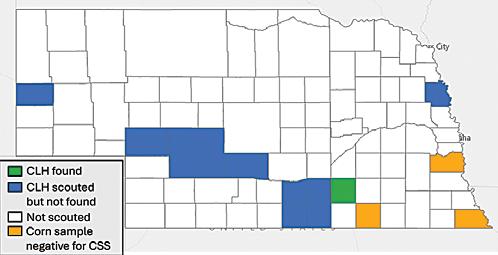
Figure 1a. Corn stunt symptoms can include reddening/purpling of corn leaves, in addition to stunting, caused by the corn stunt spiroplasma pathogen transmitted by the corn leafhopper
Figure 1b. An adult corn leafhopper. (Ashleigh Faris | Oklahoma State University)
Figure 2. County-based corn leafhopper and CSS sampling results in 2024.
Figure 3. County-based corn leafhopper and CSS sampling results as of August 25, 2025.
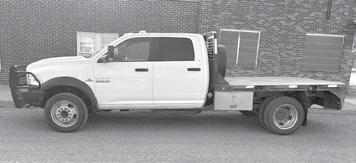







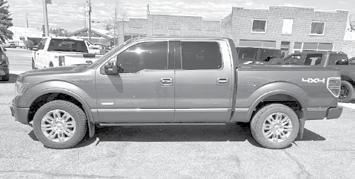
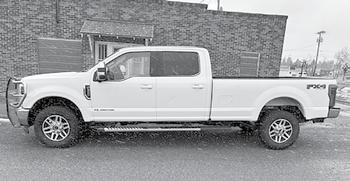



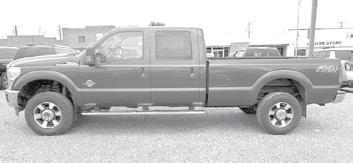

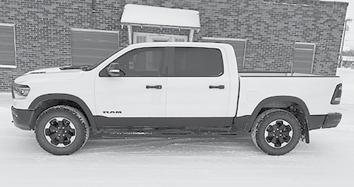




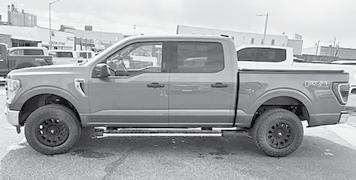

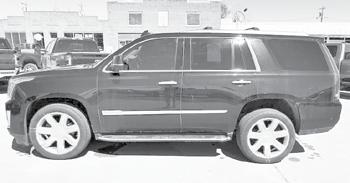
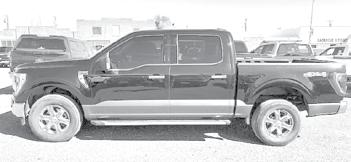


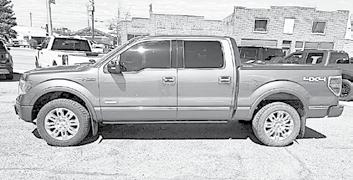


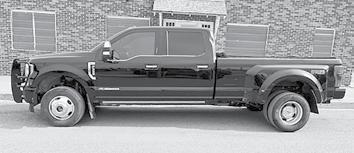

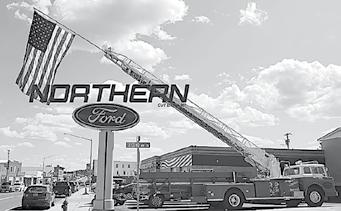




CATTLE HANDLING EQUIPMENT FOR SALE



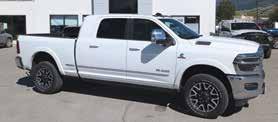



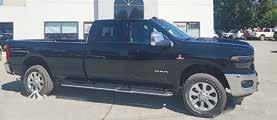

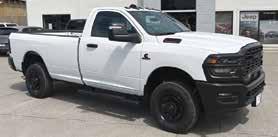


#####
A singing birthday card has more computer power in it than the entire Allied Army of WWII. I bet Hitler, Churchill, Stalin, and Roosevelt would have killed to get their hands on one of those cards! The computer chip within them was so powerful by comparison that it would be inconceivable to the leaders of that time how we simply throw them away!
#####
Mount Rushmore cost less than one million dollars to construct. It took 14 years to build – from 1927 to 1941 and took 400 workers.
Strategies to consider when culling cows in 2025
By Brock Ortner, Aaron Berger, Nebraska Extension Livestock Educators, and Rick Rasby, Nebraska Extension Specialist
Following a spring with below-average precipitation for much of Nebraska, early indicators signal that drought is likely to persist. With limited forage production likely, producers should begin planning now for potential forage shortages. Producers can ease pressure on feed resources by developing a strategic cowherd depopulation plan.
Identify prime culling candidates first:
Only take cow/calf pairs to grass. Non-pregnant cows or cows that have lost calves need to be culled.
Sell cows that have been identified as poor mothers, have unsound udders, teats, feet, and legs, bad disposition, and other physical problems (early stages of eye cancer, etc.). Check older cows for sound mouths to ensure productivity.
Use herd production records for data-driven decisions if more cows need to be culled:
Identify nonproductive females in the herd. Use the last two to three years of information to identify cows that rank in the bottom 10-25 percent in weaning weight, and put these cows on the potential cull list. First and second-calf females will usually wean the lightest calves. Use caution when considering placing these cows on a potential cull list.
Utilize pregnancy diagnosis to provide additional information:
Check cows for pregnancy soon after the breeding season. Experienced rectal palpators can detect a fetus between 45 and 60 days old. Accuracy is critical, as you do not want to sell a pregnant cow that was palpated as not pregnant. It is worth double-checking the pregnancy status of cows identified as non-pregnant to ensure pregnant cows aren’t missed. To increase the accuracy of pregnancy determination, consider experienced ultrasound technicians. An experienced ultrasound technician can be quite accurate on a 30-to-35-day-old fetus.
Early weaning can save forage for the cow herd:
Consider early weaning calves (60-90 days of age) from cows designated for culling after weaning if forage resources are limited. Consider also strategically early weaning calves from first-calf females. Every 2.5 days the calf is weaned equates to one more day of grazing for the cow. Nonlactating cows consume 20 percent less forage than lactating cows, and calves consume about 1 to 1.5 percent of their body weight on a dry matter basis in forage. Nebraska Extension Educators can assist in developing growing rations for early-weaned calves that are retained.
Leverage calving distribution when deeper cuts are necessary:
Use calving records over the last two calving seasons to identify mature (4-year-old and older) cows that continually calve late in the calving season. These cows often wean lighter calves, and their daughters are less likely to be retained as replacements.
Final Considerations:
With summer precipitation indicators signaling persistent drought, herd depopulation can be approached with a plan rather than a reaction. If a significantly larger number of cows are to be sold than is typical, consult your tax preparer or accountant to understand the potential tax consequences.

Navy Day
This holiday is always observed on October 27th
Today is in honor of the men and women who serve in the U.S Navy, the mightiest naval force sailing the seven seas.This date was selected as it was the birth date of President Theodore Roosevelt, an avid supporter of the U.S. Navy. In the 1970s, research determined that the birthday of the U.S. Continental Navy was October 13, 1775. At the time, efforts were made to move Navy Day to this date. However, Navy Day in the United States is still largely recognized as October 27th.
Today’s Quote
“Those who served, and those who continue to serve in the Army, Navy, Air Force, Marines, and Coast Guard took an oath to uphold and protect the Constitution against all enemies foreign and domestic, and we can never forget the importance of their commitment to our Nation.” – – Robin Hayes History and Origin of Navy Day
The Navy League for the United States created the first Navy Day in 1922. this day has been celebrated yearly ever since. Certainly, there is a rich naval history to honor and appreciate.
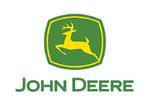


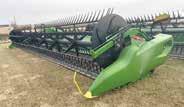
Platform:
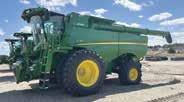
S780 (BE), Stk #88046, 396 Engine/322 Separator Hours, Ultimate Tech Package with G5Plus CC with AT & Row Sense
$555,000 $530,000
2022 John Deere S790 (WA), Stk #88617, 547 Engine/402 Separator Hours, Extended Wear, Big Tires, Leather, Powerfold Extension $454,500


2021 John Deere HD40R (WI), Stk #66041, Demo Head, Flip Reel, For “S” Series 2020+, Gauge Wheels, Grain Saver Belts $99,000 Corn:
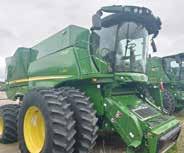
$546,000 $529,000
2024 John Deere S780 (WA), Stk #87677, 463 Engine/318 Separator Hours, Extended Powertrain Warranty Until 6-2-27 OR 1500 Hours, 2WD, Premium Cab, Duals
2023 John Deere S780 (WI), Stk #85007, 771 Engine/578 Separator Hours, ProDrive Transmission, 5 Speed Feederhouse, Premium Cab, 4WD, 28.5 Unload Auger
$509,900 $475,000
2023 John Deere S780 (WI), Stk #88047, 546 Engine/406 Separator Hours, Ultimate Tech Package, 4600 CC with AT & Row Sense, Premium Cab $475,000
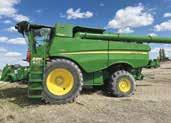
2022 John Deere S780 (WI), Stk #85006, 1000 Engine/798 Separator Hours, ProDrive Transmission, 5 Speed Feederhouse, Premium Cab, 4WD $392,500 $385,000 2021 John Deere S770 (HA), Stk #90327, 1,108 Engine/915 Separator Hours, 2WD, Extended Wear Package, 26-ft. Unload Auger, Demco Tank Ext, 3 Speed Transmission, Standard Light Package $295,000
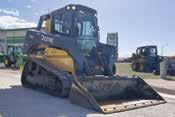

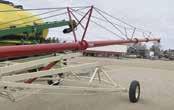
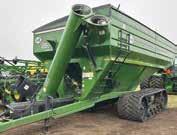
2018 J & M 1312-20T (BE), Stk #81399, Tracks, Good Augers, Electric Tarp, Scale, Very Nice Shape, 1300 Bushel $97,500 $94,900
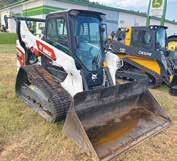
2024 John Deere RD40F (WA), Stk #87684, Lankota Brushes & Shark Fin, Flip Over Reel, Course Knife with Spare, 1,500 Acres
$127,500
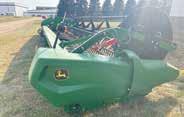
2023 John Deere RD40F (BE), Stk #85020, Be About 3000 Acres On Unit, Off Ground Header Height Sensor & Flip Over Reel
$109,900 2023 John Deere HD45F (WA), Stk #83634, Hinged Draper Flex Platform, Short Long No Till Sickles with Spares, Shark Fin $138,500 $119,500 2023 HD45F (WA), Stk #83802, Hinged Draper, Spare Knife, Wing Leveling, Flip Over Reel, 1 Season Of Soybean Use $138,500 $119,500
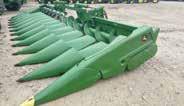
2024 John Deere C12F (WA), Stk #87680, 12R30, Intermeshing Rollers, Row Sense, HHC, Only 1 Season Use $147,000
2024 John Deere CF12 (WA), Stk #85917, 12R30, Used For Demo In Fall 24, Active End Fenders, Stalk Stompers On All Rows, 9 Pin Connector, Folding $195,000 2023 John Deere C16R (WI), Stk #76389, 16R30, Stalkmaster Chopping, New Never Used, S Series Frame, Stalk Deflectors On All Rows, Very Nice $219,900
2022 John Deere C12R (BL), Stk #85617, 12R30, Intermeshing Rollers, Active End Fenders, Dryland Country $97,500
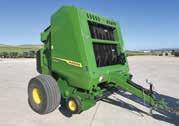
2021 John Deere C16R (WI), Stk #85021, 16R30, Stalkmaster Unit, AutoTrac Row Sense, Active End Rolls, Used Only 2 Seasons $139,900
$118,900
2022 John Deere HD50F (WA), Stk #71825, Demo Head In Near New Condition!! Flip Over Reel, For An “X” Series Combine, Grain Saver Side Belts
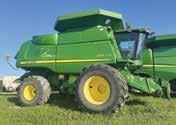
2015 John Deere 612C (WA), Stk #90440, 12R30, Header Height, Rowsense, Opposed Stalk Rows, Wear Parts In Good Condition $39,500
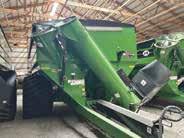
2023 J&M RX 1432 (WA), Stk #90033, Righthand Unloading, Scale, Roll Tarp, Firestone 1250/50/R32 Tires $105,000
2023 Brent GT757Q (BL), Stk #88101, Gravity Wagon, LH Hydraulic Door, Roll Trap, 460/65R22.5 Tires, Rear Hitch with 7 Pin Connector $29,500
2023 J&M 1326-22S (HA), Stk #77370, New Unit, Roll Tarp, Single Axle, 1250/50R32 Lug Tires, 1,300 Bushel Cap, 22” Unload Auger $98,000
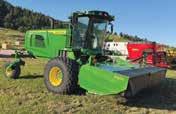
2023 Brent V1100 (WA), Stk #85451, New Unit, 20” Corner Auger, Scale, Tarp Kit, Boards Up Config, 1100 Bushel, Single Track Axles $95,500 2020 Brent 1596 (WI), Stk #89523, Equalizer 42”x148” Tracks with Hydraulic Tension, 4 Bogie Wheels, Uharvest Pro Scale, Auto Grease & Hydraulic Jack $139,000
2018 Brent 1396 (WA), Stk #88065, 36” x 146 Tracks, 520 Scale, Tarp, 3 Function Joystick, Overall Nice Cart $117,500
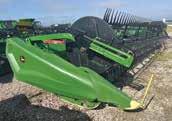
254-3908
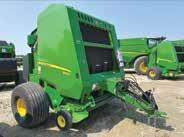
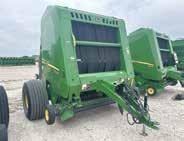
Why Advertise in the Trader’s Dispatch?
Reason #8: Our graphic designers are available to help you with the creation of your ad, and those ads are built in offices in Montana! We have never outsourced our ad design to foreign countries, and don’t ever plan to.
Watch for wheat diseases during harvest
As wheat harvest progresses across Montana, it’s important to keep an eye out for diseases that may have developed late in the season or become noticeable at harvest that can still impact yield, grain quality or seed viability. Identifying disease issues now can help in making post-harvest decisions, planning seed for next season, and understanding potential impacts on grain quality.
Keep in mind: Scouting fields before harvest is a good way to spot sections with visible disease symptoms. Fields--or even patches within fields--showing signs of the following disease may be worth harvesting separately to prevent mixing lower quality grain with healthy grain

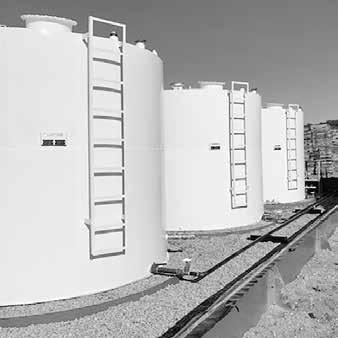
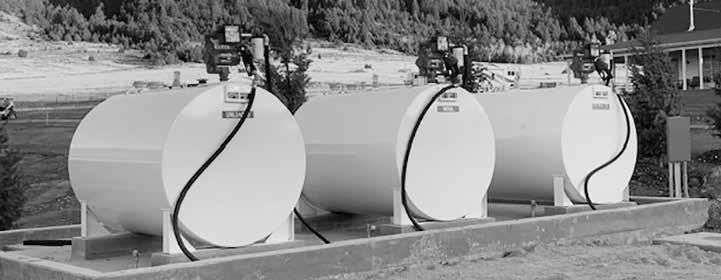
Double or Single Rollers


Here are some common issues to watch for as you combine:
1. Sooty Molds and Black Point
What you might see
Ever notice a dusty coating on the heads just before harvest or a dark stain at the tip of the grain? That could be sooty molds (Figure 1) or black point (Figure 2) showing up late in the season. Sooty molds are usually more of a cosmetic issue, with dark fungal growth showing up on the surface of the glumes and chaff (Figure 1). But if rain hits during the final stages of kernel development, those molds can start to colonize the outer layers of the wheat kernel. That’s when you might see black point (Figure 2)--a gray to black discoloration, often at the embryo end of the kernel. In more severe cases, the entire kernel can turn gray or black.
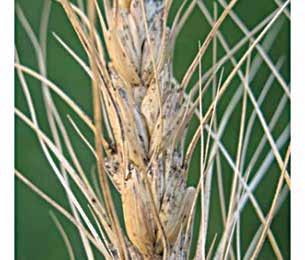
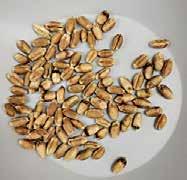
protectionnetwork.org/encyclopedia/black-point-of-wheat
Why it matters
While these molds aren’t aggressive pathogens, they can still impact grain appearance and potentially affect seed quality. When black point is severe, it may reduce germination and seedling vigor.
What you can do
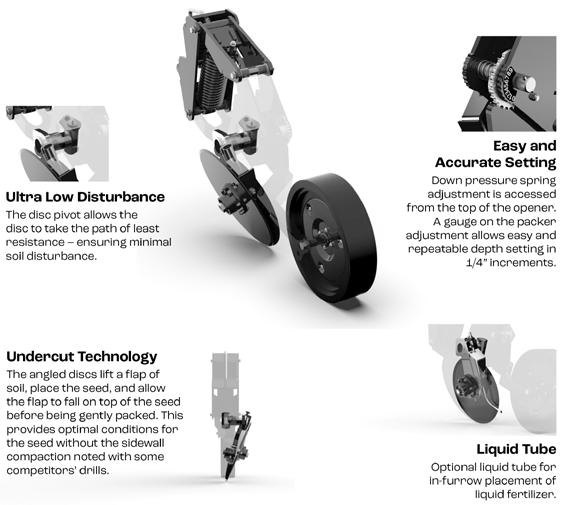

There’s no in-season treatment-- fungicides are long past their labeled application windows. If you plan to save seed from affected fields, seeds should be tested for germination. In cases where germination is reduced, fungicide seed treatments can help improve stand establishment next season.
2. Fusarium Head Blight (Scab)
What you might see
Fusarium head blight (scab) can be found in fields where wet weather was present during and after flowering. Scab can cause bleached or tan spikelets, sometimes with pinkish fungal growth near the base of the glumes (Figure 3). At harvest, infected plants produce lightweight, shriveled, chalky kernels--often called “scabby” grain (Figure 4). These kernels may carry the mycotoxin DON (vomitoxin), which affects feed and food safety.
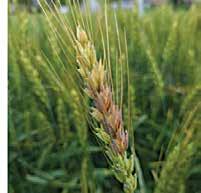
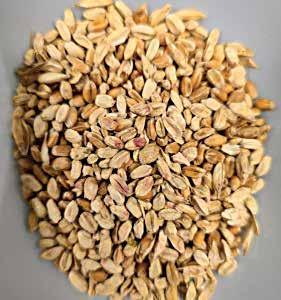
Why it matters
Scabby grain lowers test weight and quality, and high DON levels can lead to price discounts. Fields with notice
Figure 1. Wheat head with symptoms of sooty mold. Photo by Crop Protection Network: https://crop-
Figure 2. Symptoms of black point on wheat kernels. Photo by Raissa Debacker Moura, Montana State University, MT.
Figure 3. Symptoms of Fusarium head blight (head scab). Bleached spikelets on the wheat head, orange-colored fungal structures can be seen in some infected heads.
Photo by Raissa Debacker Moura, Montana State University, MT.
Figure 4. “Scabby” wheat kernels after infection of Fusarium head blight. Photo by Raissa Debacker Moura, Montana State University, MT.
International Sloth Day
Celebrated on: October 21st

Over the centuries, people have derided sloths for being either stupid or lazy or a combination of both, but have you ever thought they might just be onto something? After all, they always kind of look like they’re smiling. Don’t you wish you could have that serene expression on your face every now and then?
Everyone deserves to relax every now and then. International Sloth Day is in fact about two things: learning to take a lesson or two in being as cool as a cucumber from the sloths of the world, and raising awareness about the many sloths that get get injured, captured to be sold as pets, or even killed by humans.
The History of International Sloth Day
International Sloth Day was created by AIUNAU, a non-profit foundation dedicated to protecting all forms of wildlife. The AIUNAU members in Columbia have been working with sloths since 1996, as they became appalled to find out how many sloths every year were being killed by cars or power lines, and how many other were being captured to be made into household pets.
Once they rescue a sloth, they nurse it back to health, and then proceed to release it back into the wild, where it belongs. International Sloth Day was established in November 2010 as a way of helping people get to know a little more about these shy, quiet creatures that are known for their tenderness for one another and keep them from going entirely extinct, as several species of sloth have already.
How to Celebrate International Sloth Day
There are several ways you could celebrate International Sloth Day, depending on which aspect of the day you’d like to concentrate on more—learning to slow down and enjoy the little things in life, or help the sloths of South America.


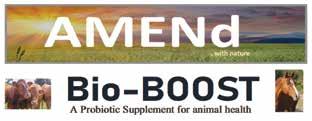
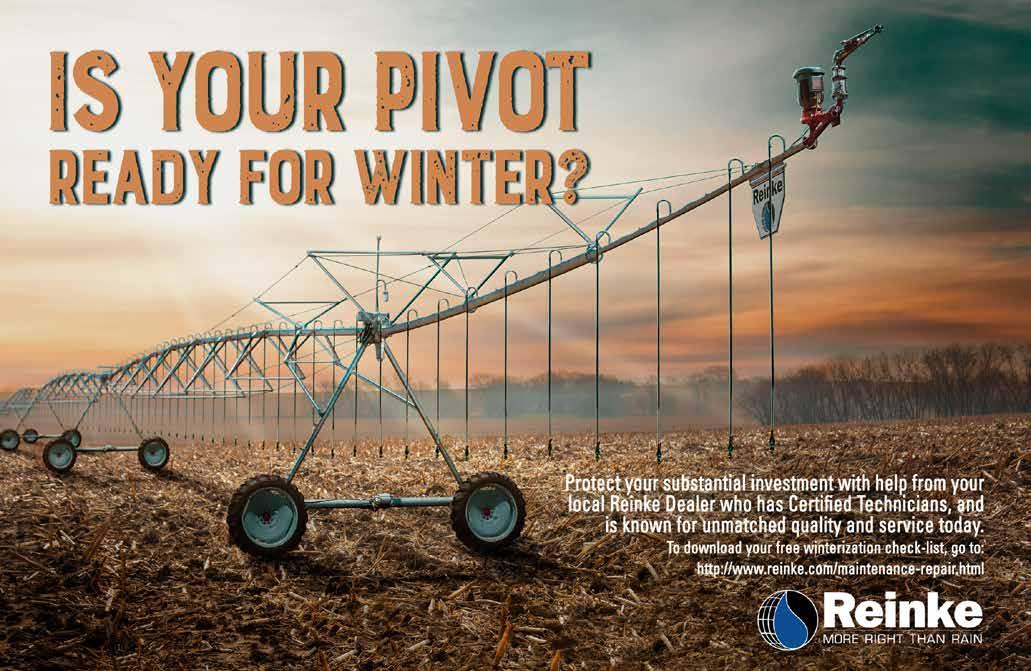

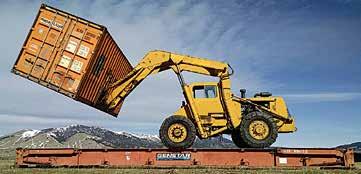
##### In the Ancient Olympics, athletes performed naked. The athletes did this to imitate the Gods but also to help them easily clear toxins from their skin through sweating after each attempt at a sport. In fact, the word “gymnastics” comes from the Ancient Greek words “gumnasía” (“athletic training, exercise”) and “gumnós” (“naked”). This translates as “to train naked.”
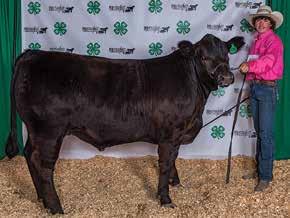

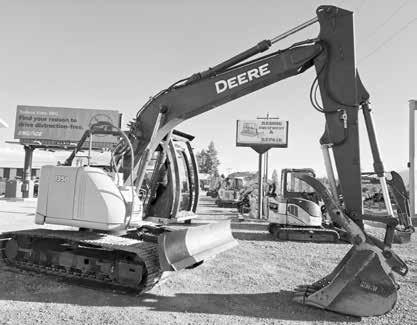
coupler
2011 Deere 135D 6700 hours, front blade, hydraulic thumb, wedge coupler, nice cab guard
2007 Cat 321D hydraulic pin grabber coupler, long undercarriage $49k
2004 Deere 200 CLC 12k hours,
Watch for wheat diseases during harvest
able infection should be handled with care to avoid contaminating clean grain.
What you can do
Harvest affected fields separately when possible and consider cutting them early to avoid further DON buildup. Producers should carefully consider whether they want to blend seed from infected and uninfected fields, as this may result in reduced quality of uninfected grain. Adjusting combine fan speeds may help remove lighter, damaged kernels--but don’t overdo it, or you risk losing good grain and increasing volunteer wheat. Grain from scabby fields can have germination issues and cause seedling disease. If saving seed, have it professionally cleaned and treated with fungicide to help improve emergence. It’s important to know that planting infected seed won’t lead to fusarium head blight next season, but it can impact early stand health and vigor.
3. Common Bunt (Stinking Smut)
What you might see
Common bunt is usually first noticed at harvest when the grain has a black, dusty look and a distinct fishy odor. Infected kernels are dark, discolored, and filled with black spores called teliospores (Figure 5). When the combine hits heavily infected areas, it can release a black cloud behind it. Infection actually occurs after planting, when wheat seeds infested with spores germinate; however, symptoms are not present until the dough growth stages.
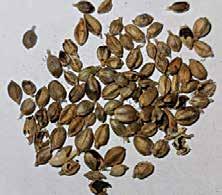
Why it matters
Even small amounts of bunt can reduce grain quality and lead to discounts at the elevators. In severe cases, the grain may be rejected. Fields with high infection levels may also suffer yield losses.
What you can do
There’s no in-season control for common bunt. The best strategy is prevention: plant certified, fungicide-treated seed, or have saved seed professionally cleaned and treated. Skipping seed treatment in bunt-prone areas can lead to serious problems down the road.
4. Loose Smut
What you might see
Loose smut shows up right after heading as black, powdery masses of spores replacing what should be healthy spikelets (Figure 6). By the time harvest rolls around, most of the spores have blown away with the wind, leaving behind a bare central stem (rachis) with no grain. Affected heads are easy to miss at harvest but are completely unproductive.
Why it matters
Although loose smut won’t affect grain quality in this season’s harvest, it can quietly carry over into next year’s crop. Infected kernels may look normal but can carry the fungus internally, leading to infections next season if used for seed. Cool, wet weather during flowering increases the risk of disease spread.
What you can do
If you’re saving seed, this is where fungicide seed treatment really pays off. Make sure seed is thoroughly treated-good coverage is essential to stopping the disease from reappearing next season.
5. Ergot
What you might see
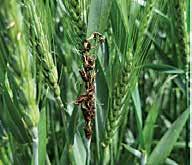
Ergot is caused by a fungus that replaces the grain with a hard, dark structure called sclerotia (Figure 7). These structures are usually longer--about 1/2 to 3/4 inch--and more pointed than normal kernels, making them easy to spot in the head or in harvested grain. Inside, sclerotia are white,
Figure 5. Wheat kernels infected with common bunt.
Photo by Raissa Debacker Moura, Montana State University, MT.
Figure 6. Loose smut symptoms on wheat heads. Photo by Raissa Debacker Moura, Montana State University, MT.
GREYN FERTILIZER
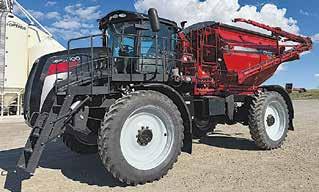
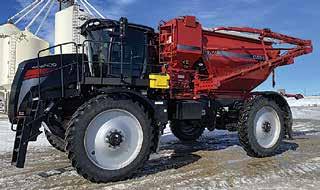
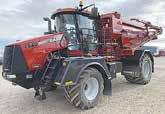
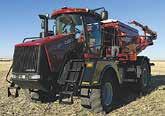
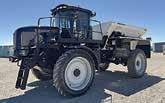

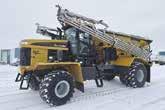
2019 TerraGator TG8400C 2656 hours, diesel engine, CVT trans, Viper4 monitor, auto steer, Airmax Precision 2 bed, 70-ft. stainless steel booms, micro bin, auto greaser, electric roll tarp.$178,000
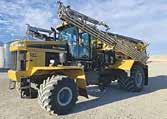
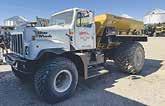



Low Hours! 2017 RBR Venturi 350, Cummins diesel engine, Allison automatic transmission, Case IH 810 Flex Air dry air flow system, triple bin, 70-ft. boom, electric roll tarp, Raven Viper IV, 1895 hours. $147,500
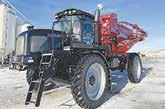
2017 RBR Venturi 350 Dry Machine, Cummins diesel engine, Allison automatic transmission, Case IH Flex Air 810 dry air flow system, 70-ft. boom, Agri-Cover electric roll over tarp, fenders, cab camera, lightbar, Raven Viper 4 monitor, 4951 hours. $109,000

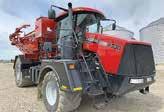
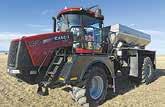
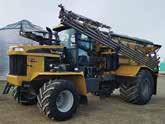
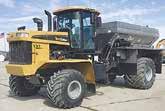

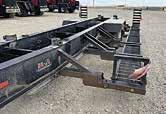

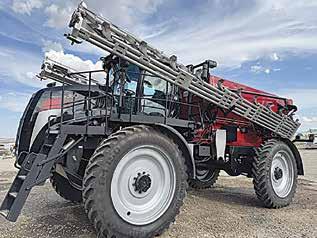
bed, 72-ft. spread width, electric roll over tarp, Alliance flotation tires, fenders, lightbar, Raven Viper4, 2724 hours $153,000
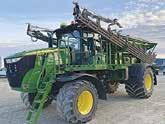
2018 John Deere F4365 with AB485 Twin Bin Air system, 70ft. booms, 4740 Gen 4 Integrated display, tarp, Lincoln lube system, premium cab and radio, LED field lights, beacon light. New fan & housing, 2724 hours. $199,500


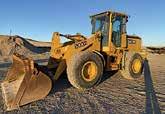
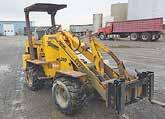
NMC 240 loader, John Deere diesel engine, single speed hydrostratic drive, OROPS canopy, self leveling bucket, joystick controls. Year is unknown but believed to be a late 90’s. $22,000

1990 International 9400 dry fertilizer tender truck, 3406 Cat diesel, 10 speed trans, tandem axle full screw, air ride suspension, Willmar stainless steel hydraulic dry rear auger tender box, odometer reads 472,304 miles.$23,000 16-ton Wilmar self contained trailer $21,000 Sold separately or together



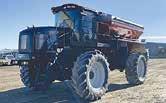



1986 Grove 50’ ton capacity, 39ft. Minimum boom length, 96-ft. Maximum boom length, Deutz lower and upper engines, manual trans, 8x6, carrier heater, upper heater load block, Load Moment Indicator, 6 spare tires. $42,000
Fraser’s Oil Inc.
Watch for wheat diseases during harvest
CONTINUED FROM PAGE C6
Figure 7. Ergot symptoms on wheat heads, showing a dark fungal structure known as sclerotia. Photo by Crop Protection Network: https:// cropprotectionnetwork.org/encyclopedia/ergot-of-wheat

• Increased early season vigor
• Phosphorus and Zinc to drive rooting & cold start the crop.
• Zinc to help with early season hormone production, ie. Auxin for root and shoot growth.
• Convey Technology to help with early season stresses, such as cool soils and excess moisture. It also improves nutrient use efficiency.
• Other essential nutrients target at each specific crop, ie. Boron for cell wall strength; Manganese for efficient photosynthesis.

• Second chance for a starter fertilizer
• Formulations are targeted at early season root growth (more root = more efficient moisture and nutrient uptake).
• Proactive way of managing the crops nutritional requirement.
• Convey Technology helps with early season stresses such as cool soils, excess moisture, and drought. Also improves nutrient use efficiency.
• Speeds up recovery from herbicide hangover - the correct supply of nutrients helps the crop metabolize the herbicide more quickly.

• Contains novel Phosphorus nutrition, providing increased nutrient uptake and movement within the plant.
• Targeted at the reproductive phse of the plant.
• Proactive way of managing the crops utritional requirement
• Contains other essential nutrients targeted for each specific crop, ie. Boron to aid pollen tube growth, Zinc to help produce Auxin, to ensure healthy pollen tube growth.


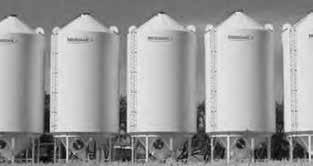
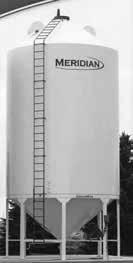
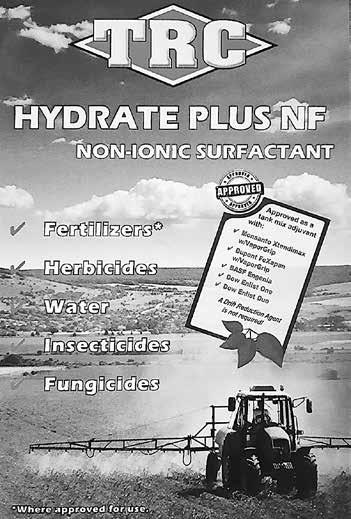
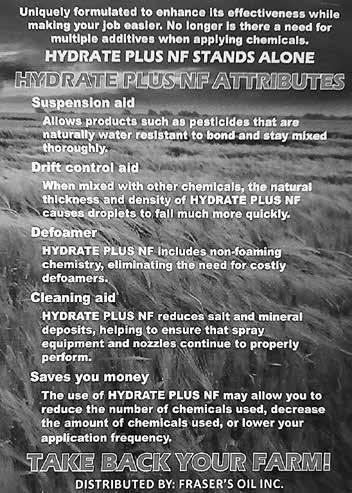

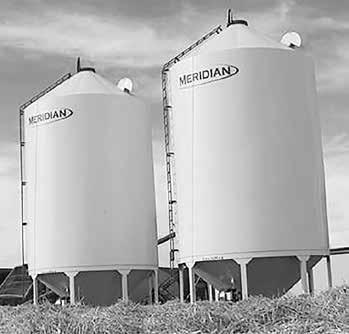
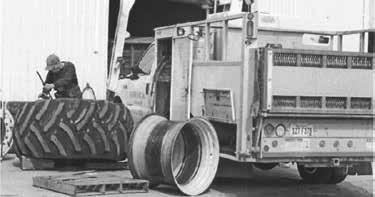


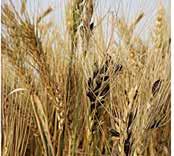
cream, or gray in color. Ergot bodies can drop to the ground before harvest or be collected with grain.
Why it matters
Ergot alone does not typically cause significant yield loss, but even small amounts of ergot can cause grain to be rejected at elevators due to contamination limits. Sclerotia contain toxic alkaloids that can harm livestock and humans if consumed in large amounts. This disease is most common in areas with prolonged cool, wet weather during flowering, which encourages infection.
What you can do
Avoid using ergot-contaminated grain as seed, as sclerotia can survive in the soil and cause problems in future crops. Some fungicide seed treatments may reduce sclerotia viability. Crop rotation and controlling grassy weeds can also reduce ergot risk, since many grasses serve as hosts and can provide inoculum. Resistant wheat varieties can also help where ergot has been problematic.
More Information
Guide to Head Diseases of Wheat and Barley in Montana: https://www.montana.edu/extension/plantpath/ resources/2009-guide-head-disease.html
Seed Treatments: https://apps.msuextension.org/montguide/guide.html?sku=MT199608AG, https://store. msuextension.org/Products/Small-Grain-Seed-TreatmentGuide__MT199608AG.aspx
Montana State Seed Testing Laboratory: https://plantsciences.montana.edu/seedlab/
Common bunt: https://cropprotectionnetwork.org/encyclopedia/common-bunt-of-wheat
Fusarium Head Blight: https://cropprotectionnetwork.org/encyclopedia/fusarium-head-blight-ofwheat, https://apps.msuextension.org/montguide/guide. html?sku=MT199608AG
Loose Smut: https://cropprotectionnetwork.org/encyclopedia/loose-smut-of-wheat
Ergot of wheat: https://cropprotectionnetwork.org/encyclopedia/ergot-of-wheat
Reach out to the Extension Team if you have questions: Raissa Debacker Moura, Extension Plant Pathologist, raissa. debackermoura@montana.edu, 406-994-7621.
National Seafood Bisque Day

This holiday is always celebrated on October 19th Seafood bisque was first created in France in the 1700s. French fishermen based in ports in the Bay of Biscayne on the western shores of France were the first to create and enjoy it. The words “Seafood Bisque” comes from the French words “bis cuites”. It means “twice cooked”. It is aptly named, as the soup is first heated to make the stock from shellfish in their shells. Then, after straining the broth, it is heated a second time to add the other ingredients and the cream. The resulting fish soup is a culinary delight.
About Seafood Bisque
Seafood bisque is a rich and creamy fish soup. Every spoonful is flavorful. The best seafood is made fresh on the docks of virtually any port in the world, where it is made from any fish caught that day. As a result, on the docks and wharves, the flavor of the soup varies somewhat each day.
There are countless seafood bisque recipes. While similar, no two restaurants or manufacturers have the same recipe. It begins with a shellfish broth. Most often, it is made with crab, crayfish, lobster, and shrimp. But, you can use literally any kind of fish. Tomato paste is added and gives the soup its orange color. Then, a variety of spices and other ingredients are added making each recipe unique from another. Wine or cognac are common ingredients, too. Cream is one of the last ingredients added to the soup. Finally, a variety of garnishes are placed on top of the soup, making it irresistible.

AG & STEEL SUPPLY



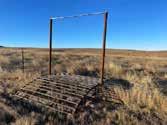
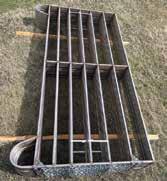
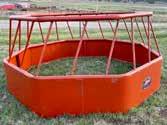




CATTLE HANDLING & LIVESTOCK EQUIPMENT































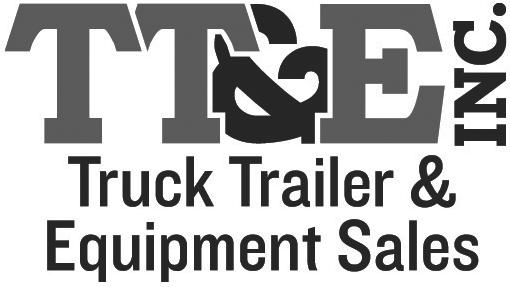
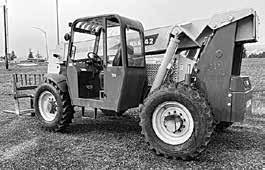
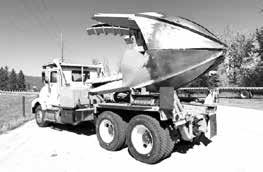
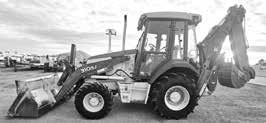
2013 Gehl RS6-42, 2760 hours, OROPS, work light package, 3-way steering, frame tilt, 60” fork carriage, 54” forks, new tires, 6600 pound lift capacity, 42-ft. reach, job site ready. Located in Victor, MT
$46,900
1989 International Eagle with 90D Big John tree spade, Cummins Big Cam 3, 13 speed transmission, Hendrikson walking beam suspension, excellent tires all around, tree spade is in good condition. Located in Victor, MT $47,500
2008 John Deere 310SJ 6245+/hours, enclosed cab with heat and air conditioning, cloth air ride seat, Power Shift transmission, 4x4, Extend-A-Hoe, switchable pilot controls, new rear tires, 24” backhoe bucket, diff lock, has been very well maintained, has been through the shop, recent service, excellent condition. Located in Spearfish, SD $52,500
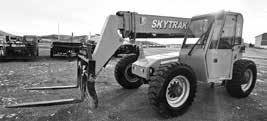
2014 SkyTrak 6042 3225 hours, enclosed cab with heat, auxiliary hydraulics, manual coupler, 48” forks, 74” carriage, nice foam filled tires, 3-way steering, hydraulic frame tilt, 6000 lb lift, 42-ft. reach, has been through the shop all repairs have been made, just serviced, telehandler is in excellent condition. Located in Spearfish, SD $44,500
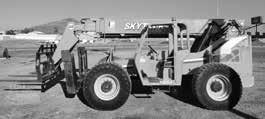
2012 SkyTrak 10054 telehandler, 3785+- hours, 72” carriage, 60” forks, 3-way steering, stabilizers, frame tilt, foam filled tires, 10,000 pound lift capacity, 54-ft. reach, recent service, excellent condition, job site ready. Located in Spearfish, SD $62,900 $46,500
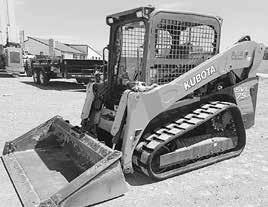
2019 Kubota SVL75-2, 995 hours, enclosed cab heat and AC, hydraulic coupler, 78” bucket with bolt on edge, 75 hp, 6570 pound tip load. Very nice condition. Located in Spearfish, SD $61,000
Farmers should be aware of unique dangers when haying ditches
As the 2025 haying season is in full swing, producers are reminded of measures to reduce the risk of injury.
Angie Johnson, North Dakota State University Extension farm and ranch safety specialist, urges farmers and ranchers to put safety first when haying ditches.
“Precipitation in some areas has greatly improved the 2025 hay crop, but in some areas, excessive moisture has been a challenge,” says Johnson. “The increase in surface and subsoil moisture means producers who cut, rake and bale road ditch hay have to watch out for water in the ditches that could lead to dangerous washouts, exposed culverts and soft spots.”
Before haying, Johnson recommends that farmers and ranchers inspect road ditches and take the following actions:
Mark out areas where culverts are present but may be tough to see while cutting hay.
Plan for road signs, mailboxes, power poles and unusual obstructions, such as stakes, wire flags or other markers that may have been placed by county and state highway departments in anticipation of road maintenance.
Check for standing water and steep embankments to avoid areas where there is a high potential to get equipment stuck or the potential to roll the tractor in an area that is too steep.
Walk through ditches to pick up any litter, tires or other items discarded or lost by motorists to help avoid equipment damage and garbage in your hay.
Haying ditches has unique safety concerns any year due to the highly variable sloped surfaces of ditches. Unsafe practices or conditions can create wear and tear on machinery, damage equipment, cause injuries or even death.
Johnson says that a producer’s first line of defense while haying ditches needs to be the use of a tractor that has a fully enclosed cab or rollover protection system (ROPS) bar and seat belt.
“In an open cab tractor, a ROPS bar in combination with a seat belt can protect you from being thrown and becoming pinned underneath tractor tires in the event the tractor tips or rolls due to the steep conditions of a ditch,” says Johnson.
The National ROPS Rebate Program may help recover the costs of purchasing and installing a ROPS bar. Visit www.ropsr4u.org/national-rebate-program.php for more information.
Other important safety practices related to equipment include the following:
Utilize dual rear wheels on the tractor to add balance and stability.
Use the right-sized baler for the size and power of the tractor. Most round balers have a high center of gravity, increasing the chance of tipping over, especially if one of
the baler’s tires drops into an unseen hole or culvert.
Grease the baler’s bearings and lubricate chains.
Check for any belt tears, missing pickup teeth and bands, discoloration of paint near the roller bearings (a sign of heat damage, which could mean a faulty bearing needs to be replaced), wrapped-up twine or net wrap in rollers and any additional preventative maintenance steps your baler’s operator manual provides.
Keep an eye on the baler’s knotters while square baling, and never attempt to work on the baler while the power takeoff (PTO) is engaged or when the flywheel is still in motion.
For all balers, ensure all safety shields are in place, the PTO is disengaged (with tractor off) and safety locks are applied when performing maintenance and repairs.
Johnson urges producers to keep the following safety concerns in mind when haying:
Be visible. Before haying, make sure you are using hazard lights and turn signals to let motorists know where you are going.
Have a slow-moving vehicle sign on your tractor and baler that is visible to motorists behind you.
If you have to weave onto the road to avoid hitting road signs or mailboxes while haying ditches, stop, watch for traffic and only approach the road when no motorists are present.
When picking up small square bales of ditch hay off the shoulder of the road to be loaded and stacked onto a trailer, wear safety clothing so you are visible to motorists and trailer drivers at all times.
Use an air compressor to blow dry matter such as leaves, dust and plant stems off the baler after every 50 to 75 round bales made to help reduce the risk of fire.
Check the operator’s manual to determine how often you must grease and lubricate your baler for routine maintenance.
Have a working fire extinguisher with you, and take a cellphone in case you need to call for help.
Bring plenty of water to stay hydrated.
Let someone know where you are and how long you plan to be haying.
“Ditch hay is expensive enough as it is due to the amount of equipment, labor, time and hazardous conditions that are present with each ditch,” says Johnson. “Take time to plan and evaluate the risks versus benefits of baling ditch hay. The bales produced from it are not worth losing a life. Safety precautions can help prevent a tragic incident from occurring while making hay this summer.”
For more farm and ranch safety tips, visit www.ndsu.edu/agriculture/ and enter “Farm Safety” in the search bar.



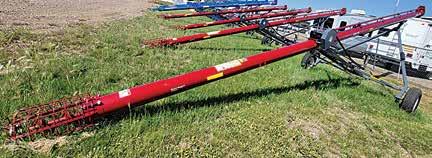

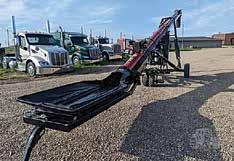

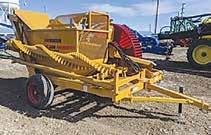

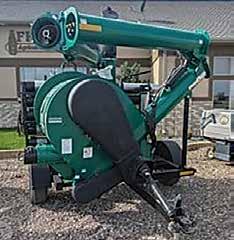

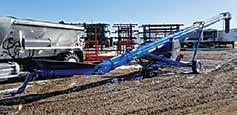
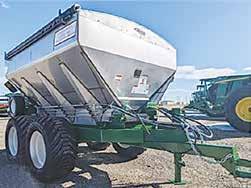





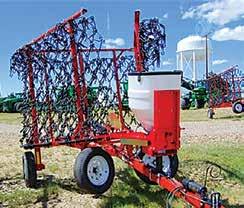

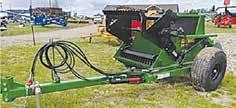

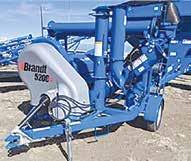

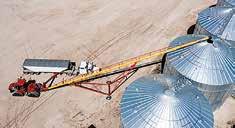
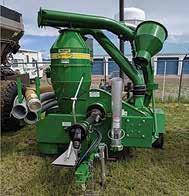

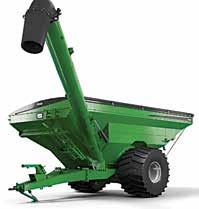

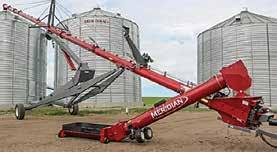
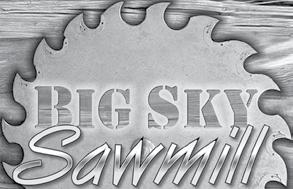
780 1st Rd. S - Vaughn, MT
• Custom sawing
• Beams
• Wood siding Driveway arches
• Bridge planks
• Fireplace mantels
• And much more.....
Call The Weaver Family (406) 788-7989
www.bigskysawmill.vpweb.com e-mail: bigskysawmill@gmail.com
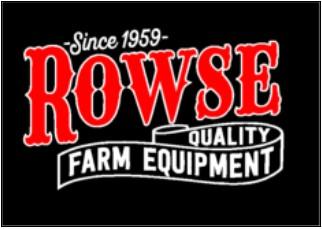
Multi-site Extension study provides new data on soybean pests
By Thales Rodrigues da Silva - MSc Graduate Student, Justin McMechan - Crop Protection and Cropping Systems Specialist, Dylan Mangel - Extension Plant Pathologist, Wayne Ohnesorg - Extension Educator, Travis J. Prochaska - Extension Educator, Ron Seymour - Extension Educator, Aaron Nygren - Extension Educator, Matheus Ribeiro - Assistant Extension Educator, Ritika Lamichhane - Extension Educator, John Nelson - Extension Educator
Soybean gall midge, Dectes stem borer and plant diseases are key threats to soybean production in Nebraska. In early July and August, we provided updates across nine sites in the state regarding soybean gall midge larval abundance, Dectes stem borer adult activity, and plant diseases.
In this article, we provided an update on data and observations of these pests collected August 11-25 at nine sites in Nebraska.
Highlights
• Soybean gall midge larvae counts declined at all sites, which is expected at this point in the season.
• Wilted and dead plants from soybean gall midge increased at most sites.
• Dectes stem borer punctures declined at all sites except Crete; larval counts increased at five of the nine sites.
• Phytophthora was found only at two sites and in lower rates.
• Co-occurrences of these pests within the same plant occurred at four sites, even on sites with lower pest and disease pressure.
NEW IH MOWER PARTS
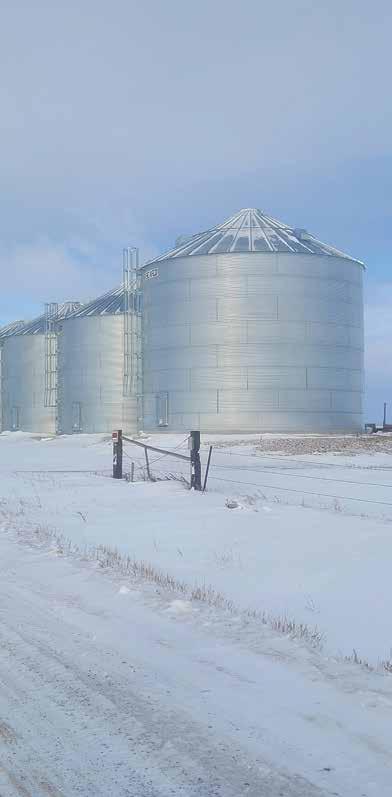
Grain bin parts Grain bin construction Unload tubes
Aeration floors Ground opening grain bin lids
owned business since 2007 in Power, MT weavergrainbins.com Lee Weaver (406) 750-9780 Serving - Montana, Idaho, Wyoming, Oregon, (Texas Panhandle Area)
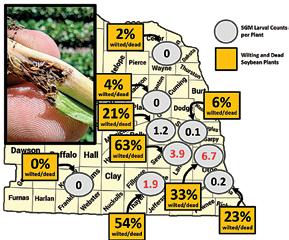
Soybean Gall Midge
• Larvae were found in all sites except for Adams County, like the last report (Figure 1).
• Southeast Nebraska sites had the highest larvae/plant counts, although they are very low when compared to July’s numbers.
• At least 20% of the plants were wilted or dead in central and southeastern Nebraska (Figure 1).
• Larval counts are expected to drop later in the season as harvest approaches.
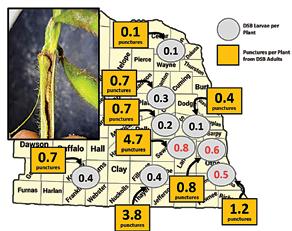
Dectes Stem Borer
• Punctures are small grooves made by the female Dectes beetle on the petiole for both feeding and egg-laying purposes.
• Not all punctures result in eggs.
• Adult activity was detected in all sites (Figure 2), following the pattern observed in the last report.
• Southeast and south-central portions of the state had higher incidence of larvae averaging 50%, while north sites averaged 18%.
• Most of the larvae moved from the petiole to the main stem.
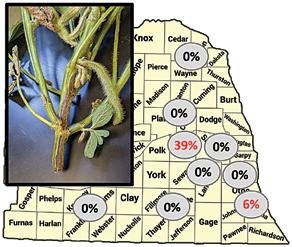
3. Incidence of Phytophthora from observations in mid- to late August.
Plant Diseases
• Phytophthora (Figure 3) was present at two sites.
• Soybean sudden death syndrome, downy mildew, frogeye leaf spot and white mold were also found but in low frequencies.
• The frequency of plants with Phytophthora did not increase at any of the sites.

Figure 4. Soybean branch infested with soybean gall midge larvae, likely as a result of the leaf drop caused by Dectes stem borer larvae activity.
Co-Occurrence of Pests
• In this collection, fewer soybean gall midge larvae were found associated with Phytophthora symptomatic plants.
• Dectes and soybean gall midge were found in the same petiole, and in some cases, in the same stem gallery (Figure 4) on all sites except Adams and Colfax counties.
• More soybean gall midge larvae were found in the Dectes galleries than July’s observations.
#####
It is believed that there are more than 500 different breeds of chickens throughout the world!
##### The Mum flower symbolizes optimism and joy. There are over 1,000 varieties.
##### Japanese imperials called their throne the “Chrysanthemum Throne”.
Figure 1. Soybean gall midge larval counts per plant (grey circle) and the percentage of wilting and dead plants (yellow square) collected in mid- to late August for each of the nine sites.
Figure 2. Dectes stem borer larval counts per plant (grey circle) and number of punctures from adult females (yellow square) collected in mid- to lateAugust for each of the nine sites.
Figure










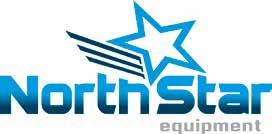










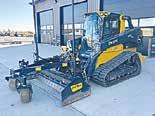









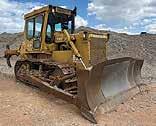
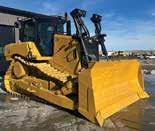








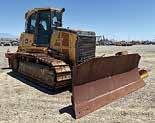


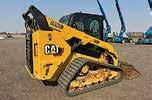
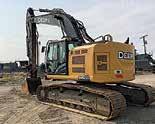
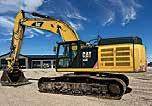
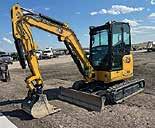

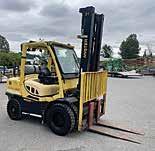
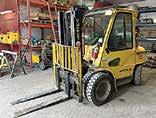
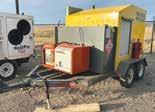


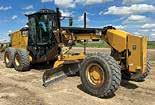


2012 Wacker Neuson E3000 Ground Heater, Kubota
2015 Freightliner Coronado Detroit DD16 600hp (new in 2022), 13 speed, steerable lift axle, lockers, 36” bunk, 25” WB. $47,500
If
Stokes Contracting, LLC
Trucking:
• Equipment Transport
• Gravel & Dirt Hauling • Hay Hauling • Water Hauling Construction: •
Operated Equipment For Hire:
• Belly Dump Trailer
Side Dump Trailer
Step Deck Trailer
• Gooseneck Flatbed Trailer
• Dump Trailer
End Dump Truck • Water Truck
• Service Truck
Skidsteer Loader • Roller
Loader
• Telescoping Forklift
Excavator
Boom Lift • Road Grader
Mobile Pressure Washer
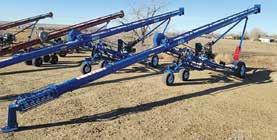
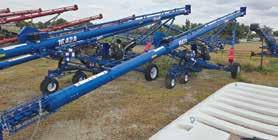
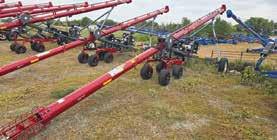
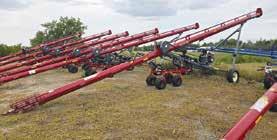
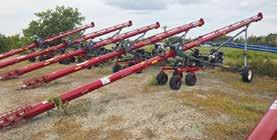


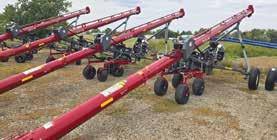
Battling BRD on cattle ranches for greater performance
From Boehringer Ingelheim
For nearly 30 years, Kevin Fenton, DVM and rancher, from Stigler, Oklahoma, has been battling bovine respiratory disease (BRD) to help advance cattle health and performance.
Since graduating from Oklahoma State University in 1995, he has specialized in large animal care, with a focus on cow-calf and stockers. Today, he owns a mixed animal practice with his wife, Jennifer Fenton, DVM, called Fenton Animal Clinic and their ranch, Fenton Cattle Company.
“The main thing we try to emphasize with our cattle clients is to be in control of the situations that we can actually be in control of, whether it’s biosecurity or implementing a proactive preventive-medicine protocol,” said Dr. Fenton.
BRD is one of the top health issues that impact the finances of Fenton Animal Clinic’s cattle clients.
“When we’re dealing with BRD, we have to all realize it’s a syndrome of a lot of different events that come to one disease complex,” explained Dr. Fenton. “Fortunately, there are many resources out there to manage BRD, whether those are testing, antimicrobials or vaccinations.”
Jody Wade, DVM, Boehringer Ingelheim, also sees BRD as a major issue for the wider cattle industry.
“It costs us more money than any of the other animal health diseases that we deal with, as far as the beef cattle segment is concerned,”1 related Dr. Wade. “What we’re trying to figure out are the best ways to battle against bovine respiratory disease, so that we can actually stay ahead of it.”
Establishing immune support
Setting cattle up for success starts with building a robust immune system that can respond to disease challenges. “The immune system, whether that’s humans or cattle, is very complex and unique,” said Dr. Fenton. “As veterinarians, I feel like we really need to be aware of its ability to protect an animal.”
Building immunity starts the day a calf is born. There needs to be passive immunity transferred down from the cow via colostrum. If it doesn’t happen, that calf is already set back on its performance potential.
“Making sure we get good colostrum in calves provides antibodies against those diseases that we’re going to battle,” noted Dr. Wade. Calves should receive colostrum within four hours of being born to get enough nutrients and antibodies at the start of their lives.2
Vaccination’s role in immunity
As passive immunity from colostrum begins to wane, vaccinating calves against BRD is the next step in ensuring the health of your future herd.
“From a veterinary standpoint, we must do what we can to minimize morbidity and mortality through vaccination protocols,” asserted Dr. Fenton. “We have the opportunity to provide those animals with the recipe for success, through exposing them to antigens or disease pathogens that they may be faced with in the future. With PYRAMID® vaccines, we can safely and effectively vaccinate younger calves without the interference of maternal antibodies.”
Following initial vaccination, a preweaning and postweaning vaccination protocol to administer boosters can be implemented.
“The pressure we put on cattle to achieve our end goals faster means they need to be primed to perform,” related Dr. Fenton. “The beauty of that is we can do it not only with good efficacy, but we can improve the calf’s productivity on out to weaning.”
Testing and treating
Another management practice Dr. Fenton advises his clients to utilize is testing for bovine viral diarrhea virus (BVDV) persistently infected (PI) cattle.
“We can add value not only to those cattle, because we’re going to ensure that they’re not immunocompromised, but as those cattle are migrated through the market chain, it adds value by guaranteeing those cattle to be free of persistent BVDV infections,” said Dr. Fenton.
If a PI calf does occur, it should be removed from the herd to reduce the risk of other cattle being exposed and leading to issues, such as BRD.
“Early detection of BRD is one of the key factors in making sure that we try to keep it at bay,” Dr. Wade stated. “Unfortunately, when you talk about diseases like BVDV and persistent infection, some of the research that’s been done shows that damage can happen really quickly.”
Battling BRD on cattle ranches for greater performance
CONTINUED FROM PAGE C14
Transmission of BVDV can take as little as an hour of exposure, so identifying PI cattle quickly is crucial.
“Testing is probably one of the most influential things that we have done to maximize our vaccination protocols,” Dr. Fenton pointed out. “We’ve tried to convey to our clients that a BVDV-PI-free group of calves allows you to know everything works. You can vaccinate those cattle with the intent and expectation that your vaccine is going to work, rather than hoping it might work.”
When BRD strikes, early intervention makes all the difference. “Finding sick calves early and getting them to the chute quickly helps them mount an immune response sooner,” said Dr. Wade. “I recommend a broad-spectrum, fast-acting antibiotic, like ZACTRAN® (gamithromycin), to give them the best chance at recovery.”
Dr. Fenton agreed and added, “I think we have to realize that the bovine species may be one of the toughest, most resilient animals on earth. Sometimes, those animals can be sick longer than we realize before we pick up the clinical signs. The quicker we can get them treated, the better they respond.”
Sub-
Saharan Africa
The Sahara Desert stretches across the northern third of Africa through Algeria, Libya, Egypt, Sudan, Niger, Chad, Mauritania, Morocco and Tunisia. These nations, some of which have oil-based economies, are largely made up of Muslim Arabic peoples. Nations south of the desert, in subSaharan Africa (“below the Sahara”), are inhabited mostly by non-Arabic people. The climate is much hotter and there’s little oil.
#####
My wife and I laugh about how competitive we are. But I laugh more.
#####
Where does a sheep go to get a haircut? The baa baa shop!





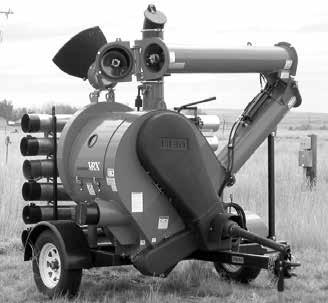

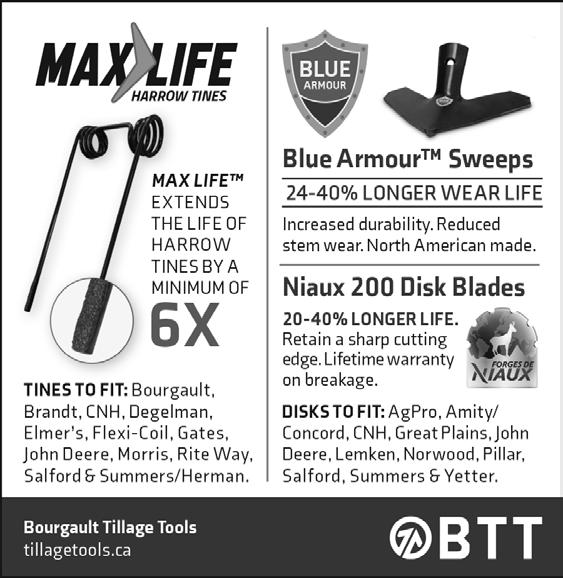

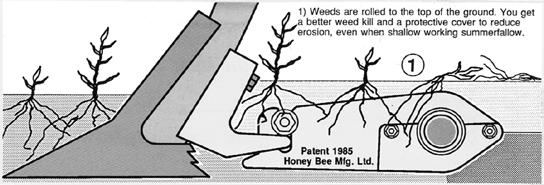
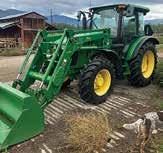
#####
If you chew on roasted coffee beans, it can help prevent the bacteria that cause bad breath.
##### Ears can be found on the thorax, abdomen, legs, wings, and mouths of different insects.
#####
In scientific measurement, a unit of beauty is called a millihelen.

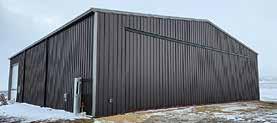
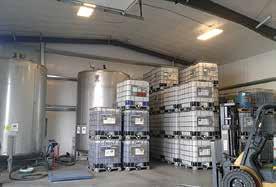

MDA confirms new rush skeletonweed sites in Western Montana
The Montana Department of Agriculture (MDA) confirmed rush skeletonweed (Chondrilla juncea) in recent weeks at several sites outside its historic invaded range in the state.
These include two plants in the I-90 median west of Three Forks, a few plants at two locations south of Dillon on I-15, and individual plants located where recent forest fires occurred near Wise River and Wisdom.
Rush skeletonweed, a Montana Priority 1B Noxious Weed, has limited presence in Montana and if found requires eradication or containment and education. Following these new sightings, county weed districts, Montana Department of Transportation, and MDA staff partnered to survey hundreds of miles of roadside looking for additional plants. Any plants found were mapped then all possible flowering parts were clipped, bagged, and incinerated. The remaining living plant material was treated with herbicide. Follow-up will be continued as long as necessary.

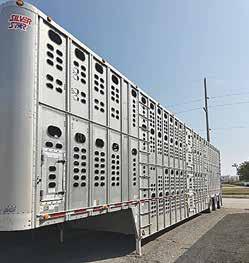
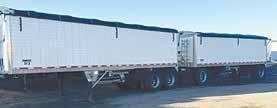
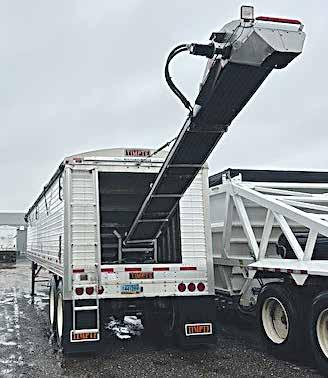






Rush skeletonweed is already present in western Montana, but it is increasing along I-90 in Missoula and Mineral counties. This summer, significant new infestations have been found and treated in Ravalli, Missoula, Flathead, and Lincoln counties, primarily in rangeland, open forests, and other natural areas. It has never been found in small grain fields in the state, but in Australia rush skeletonweed has reduced crop yields by as much as 70 percent once established due to strong competition for nitrogen and water, making establishment prevention in central and eastern Montana even more critical.
The easiest time to spot rush skeletonweed is September into October as the plant is flowering and producing seed. To learn more about identification, biology, and ecology, see the MontGuides - Rush skeletonweed.
To report a suspected rush skeletonweed plant, submit a sighting on EDDMapS or take multiple pictures and record accurate GPS coordinates, then submit to your local county weed coordinator, Montana State University Extension agent, and the Montana Department of Agriculture Noxious Weed EDRR Program at MTEDRR@mt.gov.
For additional rush skeletonweed resources and contact information, visit the MDA Early Detection, Rapid Response webpage here: agr.mt.gov/Noxious-Weeds.
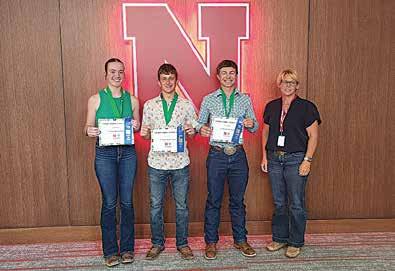
2018 Wilson livestock trailer, 53-ft. tri axle, 11-ft. nose, 16ft. rear, 26-ft. belly. Air ride with rear axle lift, crank up nose deck and tube gates, floors are 75%.
Rush skeletonweed pictured in Lewis & Clark County. (Photo by Lori Leaf, MDA)
Earning the Championship in the Senior Division of the Quiz Bowl Team competition were: (front row, left to right) Greta Rickertsen, Lexington; Carson Reiman, Cozad; Samual Winter, Cozad; and Shannon Peterson, Gothenburg who helped coach the team. They won a spot at the National competition in the fall.
Harvesting and roasting sunflower seeds
By K-State Extension news service
It is sunflower season in the Sunflower State and harvest is just around the corner, starting mid-September into October.
As seed heads begin to ripen, protecting them from birds is essential. said Kansas State University horticulture expert Cynthia Domenghini, who recommends covering the heads once the petals begin turning brown with a paper sack or cheesecloth and securing the cover with a rubber band.
“This will not only help keep the birds out, but will prevent ripened seeds from dropping out of the head,” she said.
Maturity is indicated by shriveled florets in the center of the flower disk, the backside of the head turning a lemon-yellow color and heads facing down. “The ultimate check is to pull a few seeds to see if they have turned black with white stripes, the typical color,” Domenghini said.
If there are empty shells, this usually indicates a lack of pollination earlier in the year, she added.
To harvest the seeds, cut the heads and place them in a paper sack, or leave a foot of stem attached and hang the heads upside down to dry. Cover the heads to prevent seeds from dropping as they dry. Once the heads dry, seeds can be removed by rubbing gently.
Roasting
Prepare the seeds for roasting by removing the shell and covering with salted water (2 quarts of water to one-fourth to 2 cups salt). Then, bring them to a boil and simmer for two hours, or soak in the salt solution overnight. Then, it is important to drain and dry the seeds on absorbent paper.
To roast the seeds, spread them in a shallow pan in a 300 degree Fahrenheit oven for 30-40 minutes, stirring occasionally. Remove the seeds from the oven when they appear golden brown, according to Domenghini.
Domenghini and her colleagues in K-State’s Department of Horticulture and Natural Resources produce a weekly Horticulture Newsletter with tips for maintaining home landscapes and gardens. Interested persons can subscribe to the newsletter, as well as send their garden and yard-related questions to Domenghini at cdom@ksu. edu, or contact your local KState Research and Extension office.
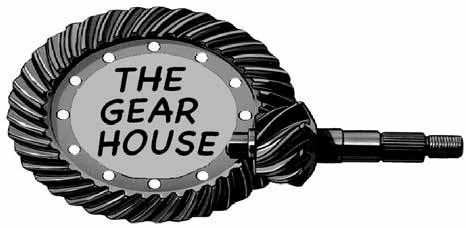
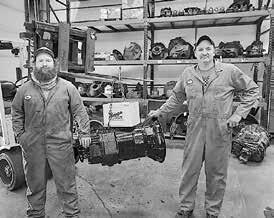


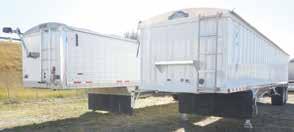
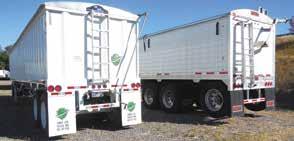







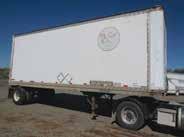
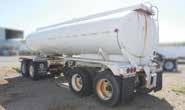











#####
Know why skeletons are so calm? Because nothing gets under their skin.
#####
Why can’t skeletons play church music? Because they have no organs.








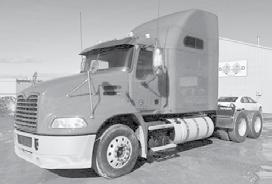
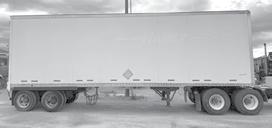
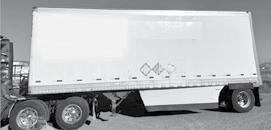

series to focus on range and pasture management
Nebraska Extension will host a six-part webinar series this fall to help landowners and livestock producers better understand how to identify, grow and manage grasses in pastures and rangelands. From the comfort of your computer, interact with participants and presenters and gather information specific to your pasture’s location.
The Knowing, Growing and Grazing Grass webinar series will run Monday and Thursday evenings, October 13 through October 30, from 6:30 to 7:45 p.m. MT (7:30 to 8:45 p.m. CT). Two optional sessions will also be held on October 21 and 28. The course is limited to 30 participants.
“This series will give producers a solid foundation in range and pasture management,” said Aaron Berger, Nebraska Extension educator and program coordinator. “Whether it’s plant identification, understanding stocking rates or using drought insurance tools, participants will leave with practical, usable information.”
Topics covered in the series will include:
• Plant identification and learning to recognize desirable grass species
• Management practices to improve forage production and plant vigor
• Understanding and calculating stocking rates
• Using tools like USDA Web Soil Survey and Rangeland Analysis Platform to estimate forage production
• Developing grazing plans and managing drought risk through Pasture, Rangeland and Forage (PRF) insurance Participants are invited to submit their plant photos for identification. All webinars will be interactive and recorded for later viewing.
The registration fee is $100 per person and includes a copy of Grassland Plants of South Dakota and the Northern Great Plains and a printed resource notebook featuring Nebraska Extension NebGuides and Circulars. Materials will be mailed ahead of the course.
To register, visit: https://go.unl.edu/Knowing_Grass A computer and internet connection are required to participate.
For more information, contact Aaron Berger at 308-2353122 or aberger2@unl.edu.
Fall alfalfa irrigation
By Todd Whitney, UNL
Irrigating alfalfa now through November until the soil freezes can protect plants and improve fall yields. However, adjust irrigation rates compared to in-season watering. During the hot growing season, alfalfa water usage may exceed 0.30 inch per day versus fall cooler days water usage dropping to 0.10 inch per day. As a perennial plant, alfalfa growth extends longer into the fall and does not have specific critical growth stages for water stress like most traditional annual crops. So, when moisture stressed, the plant will slow growth; go dormant; and then resume growth once conditions become favorable again. Generally, maximum alfalfa forage growth requires 5 to 6 inches of water per cutting.
The main advantage of fall irrigation is lower evaporation compared to summer; thus, improving irrigation efficiency. Further, most irrigated alfalfa fields never get much water stored below 4 feet depth although alfalfa plants can grow roots down 8 feet or more. Since roots will not grow through dry soil to reach wet soil, deep soil water storage reserves may be lacking if field soil wetting does not leach below 4 feet.
To reduce field compaction, pause irrigating 2-3 days before cutting the alfalfa; and irrigate again when alfalfa regrowth begins. Irrigation scheduling efficiency can be improved by using ET (evaporation & transpiration) measurement gages or soil moisture monitoring.
Review your local NRD irrigation district water usage restrictions; since potential total supplemental water applications per year may have limits, and alfalfa usage could exceed irrigation allocations. Conversely, building deep stored water reserves in the fall can help your alfalfa next summer during rapid growth when it may be difficult to keep up with peak plant water usage demands.
Finally, some fields have lower water infiltration rates, so irrigating now through November may be the right time for building water reserves. Our UNL NebGuide, G1778, “Irrigation Management and Crop Characteristics of Alfalfa” provides more details at: https://cropwater.unl.edu or https:// water.unl.edu
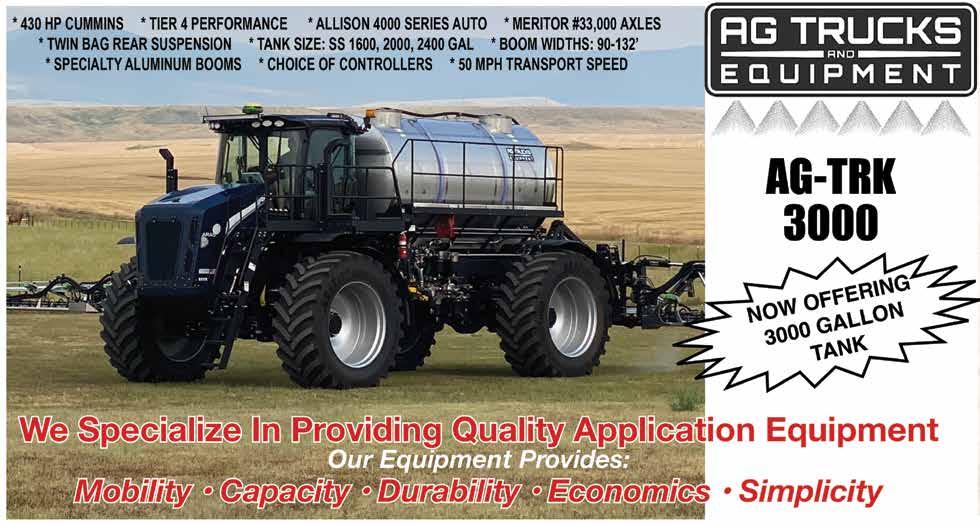
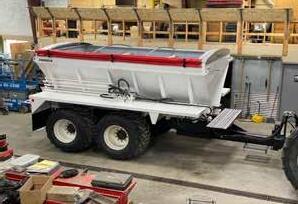
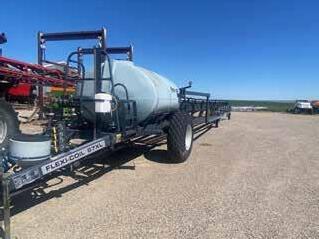
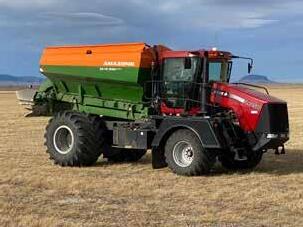

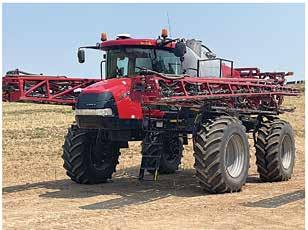
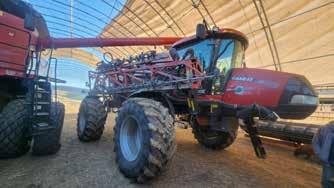
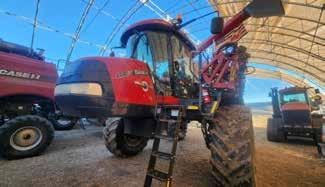
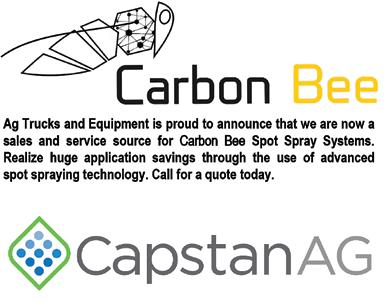


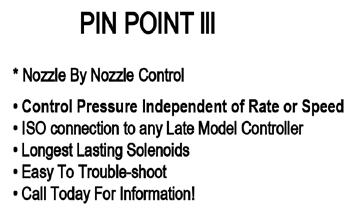
Local MT private collector in search of 1967-1979 Ford F250 4x4. Prefer a nice original, but will consider others. If you’ve got one sitting in the quonset or out on the back forty, give me a call or text on 4O6-465-71O2 and let’s talk. Will pay top dollar for the right truck.
Fall armyworms in pastures, alfalfa, small grains, cover crops and lawns
Authored By Jenny Brhel - Extension Educator, Robert Wright - Extension Entomologist, Melissa Bartels - Former Extension Educator, Nathan MuellerUSDA NRCS, State Soil Health Specialist, Ben Beckman - Extension Educator, Brad Schick - Former Extension Educator, Daren Redfearn - Associate Professor Agronomy Updated By: Matheus Ribeiro - Assistant Extension Educator, David Wangila - Extension Educator, Jenny Brhel - Extension Educator
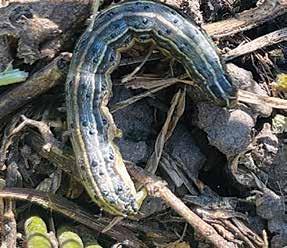
Unusually high fall armyworm pressure is prompting questions statewide — this Q&A offers scouting tips, treatment thresholds and reseeding guidance.
With fall armyworms at unprecedented levels in Nebraska this season, many growers have questions about how to manage this pest. Fall armyworm (Spodoptera frugiperda) is a migratory pest that does not overwinter in our region; moths move north from the southern U.S. each summer and can build quickly in late summer and early fall. In alfalfa, forage, and hay systems, risk is highest in new seedings and tender post-cut regrowth, and infestations often expand from field edges or adjacent small grains and pastures.
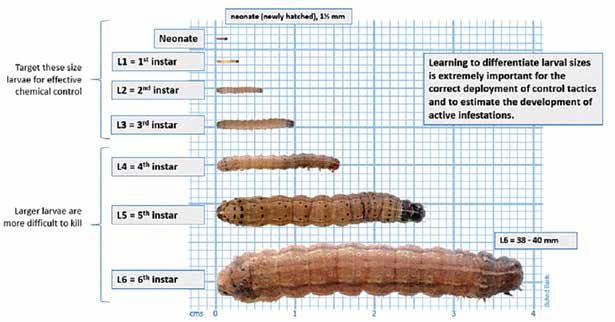
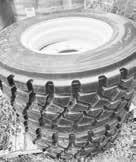
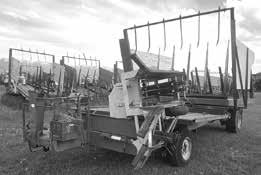
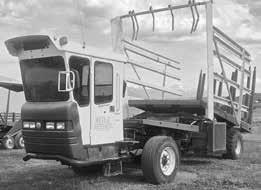
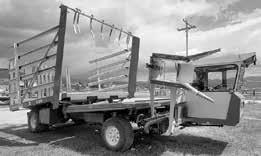
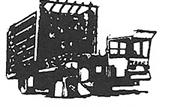
Polson, MT 59860 406-249-8565 or 406-883-2118
Parts Line 406-309-1453 newhollandbalewagonparts.com
The following Q&A addresses the specific questions we’ve received.
Q: I’m seeing browning in my crop, pasture, or lawn situation that happened within the past few days, but I don’t see any insects. Could this be fall armyworm?
A: Yes — rapid browning over just a few days with no insects on the plants is an expected fall armyworm (FAW) scenario. Larvae feed mostly near dusk, night and dawn, hiding in the low canopy, or at the soil line during the day. Here’s how to confirm (and avoid false alarms). Check at first light or near sunset. Part the canopy and inspect the soil surface, crowns and thatch. Focus on the transition zone where brown areas meet green growth; FAW often advances using visual cues. In pastures/hay, scout field edges, waterways, irrigated spots and along adjacent crops/turf (common starting points).
When scouting, it helps to shake plants over a white tray or paper to dislodge small larvae. In forage/alfalfa, use a sweep net and take sweeps in both damaged and green areas ahead of the damaged wave. The University of California recommends for turf/lawn to do a simple soap-flush test (1 to 2 tablespoons of dish soap in 1 gal water, poured over ~1 sq yd.). Larvae surface within a few minutes if present and will facilitate accurate larval counts.
Q: What is the threshold for fall armyworm?
A: A reasonable treatment threshold is finding three or more caterpillars per square foot within a field, pasture or lawn. When considering a chemical treatment option, keep in mind caterpillars ¾-inch or longer are close to maturity and can be harder to
control with an insecticide.
In alfalfa (by stand stage):
New seedings: 1–2 larvae/ft² can destroy seedlings; treat or consider an early cutting if close to harvest.
Established (≈12–14 in.) stands: 10–15 larvae/ft² can defoliate rapidly; intervene before most larvae exceed ¾ inch.
Pastures/hayfields (cool-season grasses, mixed forages): Use a working threshold of ≥3 larvae/ft², adjusting lower if you’ve got tender regrowth or newly established fields. Border/edge infestations can justify spot or border sprays if a “front” is moving in.
Lawns/turf (for comparison): The generic action threshold is 2–3 larvae/ft²; a quick soapy-water flush can help confirm presence before treating.
Q: My new seeding of alfalfa looked amazing and now it’s essentially gone. What should I do?
A: We’ve heard a number of these reports and it’s hard to see this happen. If the armyworms are still present and feeding, there are several control options: active ingredients including the pyrethroids, Alphacypermethrin, Beta-cyfluthrin, cyfluthrin, Gamma-cyhalothrin, Lambda-cyhalothrin, permethrin and Zeta-cypermethrin, organophosphates, chlorpyrifos, and carbamates, carbaryl and methomyl.
Organic/softer options (best on small larvae): Spinosad (e.g., Entrust SC), Bt products, azadirachtin (Neemix), and Beauveria bassiana can suppress small larvae but act slowly and require good coverage and favorable conditions for optimal control. They also are less likely to impact beneficial insects.
Fall armyworm in mixed brome/alfalfa pasture. Notice the Y shape on the headcap. (Matheus Ribero | Nebraska Extension)
Figure 1. Fall armyworm larvae progress through six growth stages, or instars, reaching 38–40 mm at maturity. Early detection and treatment at smaller instars are key to effective control. (Suhrid Barik | Corteva)
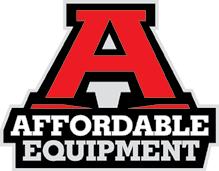
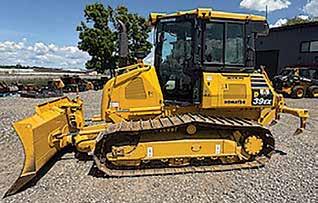
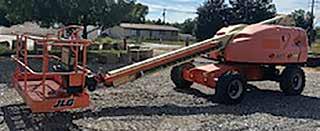

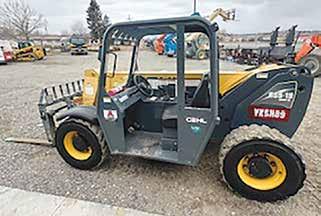
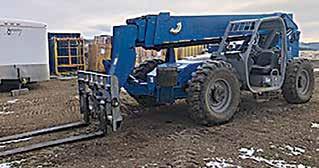
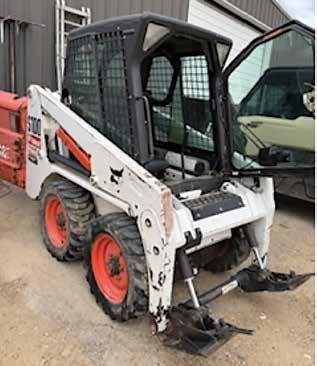
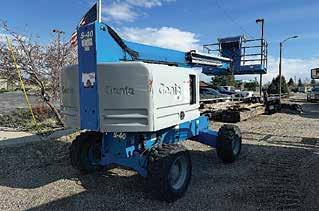
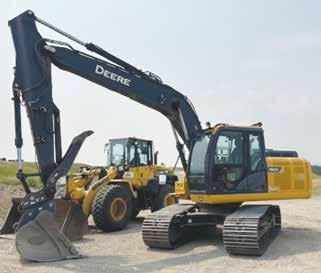
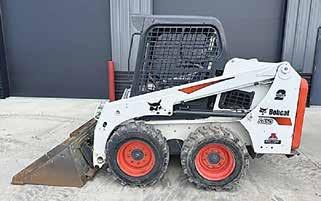



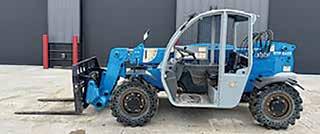
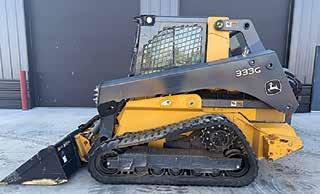
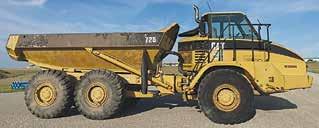
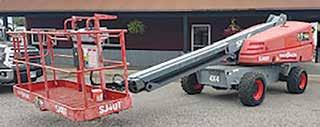

2025 HAY FOR SALE
* Barley hay * Rye hay * CRP hay
* 2024 Haybet Barley net wrapped, big round bales, low nitrates, high protein
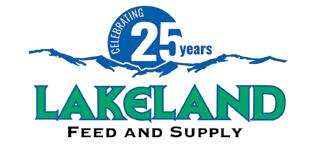
Lakeland Feed and Supply is a full-line feed manufacturer, fertilizer blender and supplier of agriculture goods and services. We also blend lawn, pasture, reclamation and wildlife seed mixes on site and we stock a wide selection of pet foods & animal health products. Utilizing local grains and supporting area growers allows us to create a circle of sustainable agriculture, while providing the highest quality products. We welcome you to stop at either store location for more
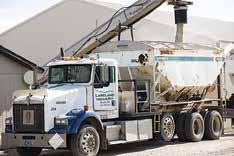
Lakeland
&
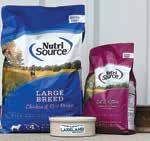
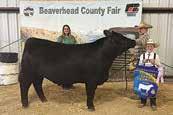

Fall armyworms in pastures, alfalfa, small grains, cover crops and lawns
CONTINUED FROM PAGE C20
Chlorpyrifos note: Federal tolerance and label status have been in flux. EPA reinstated tolerances in December 2023 after a court ruling and has proposed limiting most food uses to 11 crops (including alfalfa). States may impose additional restrictions. Always verify current labels and state guidance before considering use.
It’s important to watch regrowth — if you still have live crowns and can suppress small larvae quickly, many seedlings will rebound. If reseeding is necessary, it may be wise to wait for reseeding until the spring with it being so late in the season.
Q: My established alfalfa stand is now sticks due to fall armyworms. I plan to get it cut off now, but should I also treat it?
A: We’ve heard several reports where the alfalfa was cut but the armyworms survived and are feeding on regrowth. Scouting is important to prevent this from happening in the future. Fall armyworm migrates in late summer and outbreaks can strip seedlings within a few days. Scouting is best done in late July, August and September.
Cutting a “stick” stand is appropriate as long as it’s not too late in the season (late September) that plants cannot winterize properly. Cutting a stick stand won’t remove the pest pressure by itself. Protect the next seven to 10 days of regrowth — that’s where your yield and stand vigor are made or lost. Re-scout promptly; if live larvae are still present, treat to save the regrowth with products listed in the previous question if necessary.
Q: In the past few days, I’ve gotten brown patches in my pasture. I’ve found armyworms and I currently have cattle grazing. Is there a product I can use that will save my pasture and not hurt my cattle?
A: Warrior II, Mustang Max, Beseige, Prevathon have 0-day grazing restrictions. You can see additional active ingredients, grazing, and haying restrictions at this website from Auburn Extension.
Q: I plan to plant wheat, rye, triticale for grain or a cover crop this fall. Should I seed now or wait to seed?
A: We’d recommend waiting to seed wheat until after the Hessian fly-free date for your area. With the cooler weather, our hope is the armyworms will begin moving
Montana
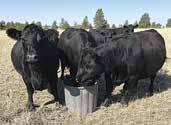
&

south. We unfortunately don’t know for sure when this will happen. One could wait until early October to seed small grains for grain or cover crop if you’d like to take a wait-and-see approach for the armyworms.
If you’d prefer seeding sooner, be sure to scout newly emerging plants. Insecticide options include products with active ingredients including pyrethroids, alphacypermethrin, beta-cyfluthrin, cyfluthrin, gamma-cyhalothrin, lambda-cyhalothrin, permethrin and zeta cypermethrin, organophosphates, chlorpyrifos and carbamates, carbaryl and methomyl.
Organic options include products with Bt.
Q: My cover crop was obliterated due to armyworms. What can I treat it with and should I reseed?
A: This is the harder question to answer as cover crops aren’t listed on many insecticide labels. One approach is to look at a product you’re considering and see if any of the species in the mix — such as small grains — are listed on it. Also look for any grazing restrictions if you plan to graze the cover crop.
Regarding reseeding, at this point in the season, we wouldn’t recommend anything other than small grains, such as rye, wheat, triticale or barley, for seeding due to the length of time the cover has before establishment and fall frost.
Q: My fescue lawn has rapidly turned brown and I’m finding armyworm in it. What can I use to treat it?
A: There are a number of products available in lawn/garden/farm and box stores. Read the label to see if fall armyworms are listed for control. Sevin is a commonly used product that is becoming harder to find in towns where fall armyworms are more severe. Organic options include products with Bt such as Dipel.
Products should be watered into lawns to move the granules off the leaf surface down to the soil. Fescue lawns may need to be reseeded in the impacted patches. In lawns that are solely bluegrass or a bluegrass/fescue mix, the bluegrass should spread to help cover the impacted areas, so reseeding may not be necessary depending on the severity.
Youth Agricultural
Literacy
Contest “Ag in Color” Drawing Contest
The 2025 M.Y. (Montana Youth) Agricultural Literacy drawing contest has opened for students across Montana. The “Ag in Color” contest is open to any Montana student enrolled in kindergarten through 6th grade. Entries will be accepted from classroom teachers, homeschool educators or parents. Entries must be submitted to the County Farm Bureau by December 5, 2025. County Farm Bureau will submit the local winners to the Montana Farm Bureau for statewide consideration by December 19, 2025. Drawings are judged by the Montana Farm Bureau Women’s Leadership Committee on agricultural content, originality, neatness and reproducibility.
There will be seven total state winners, one from each grade level. Judges will choose one drawing from the winners to receive the “Farm Bureau Proud” designation. Winners will be notified in February, and winning entries will be printed and distributed on usable items and other educational materials.
Cash prizes will be awarded to the student winners and the classroom teacher. Kindergarten- Farm Animals in Montana
Grade 1- Grown in Montana
Grade 2- Grains of Montana
Grade 3- Cattle in Montana
Grade 4- Noxious Weeds in Montana
Grade 5- Safety on Montana Farms and Ranches
Grade 6- Agricultural Careers in Montana
For rules and more information visit mfbf.org/Programs/Montana-Youth-AgLiteracy.
#####
“Will is the root, knowledge is the stem and leaves and feeling is the flowers.”
#####
May 1937 the German automobile manufacturer, Volkswagen, was founded.
#####
Scientific term for foul-smelling breath (worse than “bad” breath): ozostomia.
21ft with hrs,
Is your hay supplying enough Vitamin A this winter?
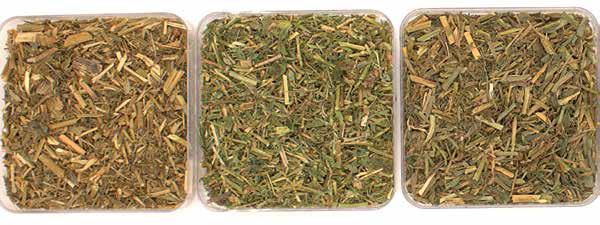
The color of hay can be an indicator of the amount of vitamin A.
Vitamin A plays a critical role in young calf health. Calves are born with very limited vitamin A stores because little transfers from the dam during gestation. Newly born calves rely heavily on colostrum for their supply of vitamin A, making the cow’s late-gestation diet critically important. Milk is a poor source, so calves depend on the colostrum for their Vitamin A supply for the first few months of life.
2429 W HOLLY STREET SIDNEY, MT 59270 TRI-CNTY.COM
New Haying Equipment
For most herds calving in late winter or spring, cows are fed stored or stockpiled forages during their last trimester. Recent research suggests that late gestation cows need 75,000 to 90,000 IU/d of vitamin A, but the amount of vitamin A in hay varies
Case IH RB 565 Premium New Coming Soon Farmall 75L, 40C & 25C Case IH WD 1505 Windrowers
Used Harvest 2014 Case IH 9230 1750 sep hrs, $125,000 2020 MacDon FD 145, case adapter $95,000 Freeform Plastics Canola Roller, MAcDon M150 $2,500 2015 FD75-45, $75,000 (2) 2023 FD245, $135,000
New Tractors

Case IH Puma 240
Lavender Livestock for purchasing my market lamb. We appreciate all of the support that you give us.
Beau Dagel
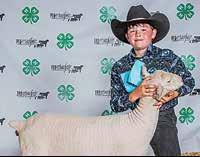
widely. Factors such as forage type, maturity at harvest, haying and storage conditions, as well as how long hay has been stored influence vitamin A levels. This can mean supplementation needs range from none at all to nearly the full requirement coming from a supplement.
Color Can Be a Clue
Greener hay generally contains more beta-carotene, and therefore more vitamin A, than bleached or weathered hay. It’s not a perfect measure, but it can give you a quick indication.
New Track Loaders
Wacker Neuson ST45
#####
Wacker Neuson SM120
New Wheel Loader
2429 W HOLLY STREET SIDNEY, MT 59270 TRI-CNTY.COM
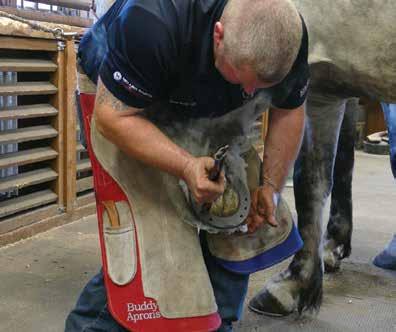
New Compaction
Wacker Neuson RTLX-SC3 Trench Roller
In addition to pork, bacon is also made from beef, chicken, lamb, goat, and turkey.
Wacker Neuson WL38

Used Ag 2010 Haybuster 2650 Processor, $15,000
Case IH Puma 185
New Tractors
Case IH Maxxum 150 New Tillage
Case IH 475 Speed Tiller, 27ft
Case IH 475 Speed Tiller, 21ft
Used Tractors
2429 W HOLLY STREET SIDNEY, MT 59270
New Tractors
Case IH Puma 240
Wacker Neuson BS62 Rammer
WAcker Neuson WP1550 Plate Compactor
New Excavator
Wacker Neuson ET42
New Track Dumper
Wacker Neuson DT12
New Telehandler


W
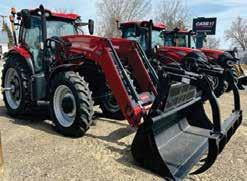
2012 Case IH Puma 185 CVT with loader, 3072 hrs, $138,000
2020 Case IH Puma 165 with loader, 1075 hrs, $165,000
2012 Case IH Puma 185 CVT with loader, 3072 hrs, $138,000
Consigned AG
2020 Case IH Puma 165 with loader, 1075 hrs, $165,000
New Tractors
Case IH Puma 185
• 2011 Case IH 1210 3-pt 123R22, $35,000
2019 John Deere 1023E, 117 hrs, loader, Back Blade, $15,500 New Harvest Case IH 8250 AFS MacDon FD2-40
Case IH Maxxum 150
Used Tractors
Case IH Puma 185 Case IH Maxxum 150 New Tillage
New Haying Equipment
Wacker Neuson TH627
New Track Loaders
Case IH Farmall 25SC with cab, mower and loader.
• H&S 14 Wheel Rake, $15,000
• 2007 Case IH SRX 100, 90ft Booms, $15,000
2019 John Deere 1023E, 117 hrs, loader, Back Blade, $15,500 New Harvest Case IH 8250 AFS MacDon FD2-40
New Tillage
• 2012 Case IH RB 564, 20,000 Bales, $12,000
Case IH 475 Speed Tiller, 27-ft. Case IH 475 Speed Tiller, 21-ft.
• Case IH 1200 Planter 12R30, $50,000
New Harvest
Case IH 8250 AFS
• 2007 Drago 1230 Cornhead Case Adapter
New Haying Equipment
New Misc AG
Case IH RB 565 Premium
• Parma 30ft Mulcher
Case IH WD1505 windrower
• Unverferth 1020 Seed Tender
New Misc AG
• Grasshopper Mowers
New Skidsteer
• Parma 30ft Mulcher
2025 Case IH SV280B
• Twin Star G3-7 Rake
• Unverferth 1020 Seed Tender
• Westfield 8-36 Auger
New Miscellaneous AG
• Grasshopper Mowers
• Parma 30-ft. Mulcher
• Morris Hayhiker 1400
• Twin Star G3-7 Rake
• Unverferth 1020 Seed Tender
• Great Plains 1006 NT Drill
• Grasshopper Mowers
• Westfield 8-36 Auger
• Morris Hayhiker 1400
• Morris Hayhiker 1400
• Morris Hayhiker 900
• Great Plains 1006 NT Drill
• Great Plains 1006 NT Drill
• Great Plains BD7600-30
New Haying Equipment Case IH RB 565 Premium New Coming Soon Farmall 75L, 40C & 25C Case IH WD 1505 Windrowers Used Harvest
New Track Loaders
Wacker Neuson ST45 Wacker Neuson SM120
2021 John Deere 1025 RCab loader & mower. $24,000
Case IH 475 Speed Tiller, 27ft
2011 Case IH Magnum 340, Power Shift, 2100 hours. $180,000
Case IH 475 Speed Tiller, 21ft
New Haying Equipment Case IH RB 565 Premium New Coming Soon Farmall 75L, 40C & 25C Case IH WD 1505 Windrowers Used Harvest 2014 Case IH 9230 1750 sep hrs, $125,000
2014 Case IH 9230 1750 sep hrs, $125,000
Used Tractors
1991 Case IH 5130 with loader. $28,000
Case IH RB 565 Premium New Coming Soon Farmall 75L, 40C & 25C Case IH WD 1505 Windrowers Used Harvest
New Telehandler Wacker Neuson TH627 Wacker Neuson TH412
New Compaction
Wacker Neuson ST45 Wacker Neuson SM120
Wacker Neuson BS62 Rammer
New Wheel Loader Wacker Neuson WL38 Wacker WAcker
2012 Case IH Puma 185 CVT with loader, 3072 hrs, $138,000
2014 Case IH 9230 1750 sep hrs, $125,000
New Track Loaders
New Wheel Loader Wacker Neuson WL38
Wacker Neuson SM100
New Compaction Wacker Neuson RTLX-SC3 Trench Roller Wacker Neuson BS62 Rammer WAcker Neuson WP1550 Plate
Wacker Neuson WP1550, Plate Compactor
Wacker Neuson ST31
2020 Case IH Puma 165 with loader, 1075 hrs, $165,000
Massey Ferguson 50 utility tractor. $5000
New Excavator
2020 MacDon FD 145, case adapter $95,000 Freeform Plastics Canola Roller, MAcDon M150 $2,500
Used Haying Equipment
2014 John Deere 569, monitor, 19,000 +/-bales. $20,000
2020 MacDon FD 145, case adapter $95,000 Freeform Plastics Canola Roller, MAcDon M150 $2,500 2015 FD75-45, $75,000 (2) 2023 FD245, $135,000 Used Ag
2019 John Deere 1023E, 117 hrs, loader, Back Blade, $15,500 New Harvest
Wacker Neuson ET42 Wacker Neuson EZ36
New Misc Construction
Case IH 8250 AFS MacDon FD2-40
2015 FD75-45, $75,000 (2) 2023 FD245, $135,000 Used Ag
2010 Haybuster 2650 Processor, $15,000
2013 MacDon M155, 1100 hrs, 35-ft. D650 triple delivery draper. $95,000
Morris Hay Hiker 1400. $35,000
New Light Towers Wacker Neuson LTT6
• Danuser Pallet Forks (48ft, 4000lb), Hydraulic Post Hole Digger & Augers, Hammer Post Pounder, T3, T7, & T8 Hornet Post Pounder, Intimidator Tree & Post Puller, Mega Mixer
2010 Haybuster 2650 Processor, $15,000
• Jenkins Hydraulic Forks (4ft, 5ft & 6ft Length & Widths)
2020 MacDon FD 145, case adapter $95,000 Freeform Plastics Canola Roller, MAcDon M150 $2,500 2015 FD75-45, $75,000 (2) 2023 FD245, $135,000 Used Ag 2010 Haybuster 2650 Processor, $15,000
Used Harvest
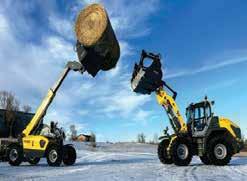
2023 FD245, Case IH adapter. $140,000
• 3-pt Skidsteer Trailer Spotters
• Grabtech Skidsteer Grapples
• Garfield EDS10-T Box Blade
2016 MacDon FD75, 40-ft., Case Adapter. $45,000
• Case IH Snow Pushers & Buckers
Used Ag
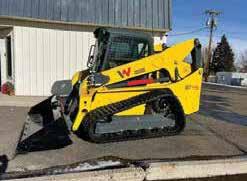
Danuser, Legend, Haugen & Jenkins Attachments Available For Order!
New Misc AG
Consigned AG
2010 Haybuster 2650 Processor $15,000
• Parma 30ft Mulcher
Consigned AG
Used Trackloaders
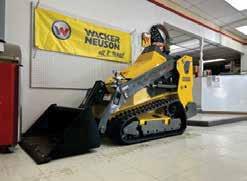
New Misc Construction
New Misc Construction
Consigned AG
• Unverferth 1020 Seed Tender
• 2011 Case IH 1210 3-pt 123R22, $35,000
Consigned AG
2021 Bobcat T740, 1500 hours, $49,000
• 2011 Case IH 1210 3-pt 123R22, $35,000
• 2021 New Holland Roll Belt 560 baler, 3300 bales. $45,000
• H&S 14 Wheel Rake, $15,000
• Grasshopper Mowers
• Twin Star G3-7 Rake
• 2007 Case IH SRX 100, 90ft Booms, $15,000
• Westfield 8-36 Auger
• H&S 14 Wheel Rake, $15,000
• Danuser Pallet Forks (48ft, 4000lb), Hydraulic Post Hole Digger & Augers, Hammer Post Pounder, T3, T7, & T8 Hornet Post Pounder, Intimidator Tree & Post Puller, Mega Mixer
• 2011 Case IH 1210 3-pt 123R22, $35,000
• Morris Hayhiker 1400
• 2012 Case IH RB 564 baler, 20,000 bales. $12,000 • 2004 John Deere 9660STS Combine, 1300 separator hours with Mac/Don 973, 35-ft. header. $89,000
• 2012 Case IH RB 564, 20,000 Bales, $12,000
• Great Plains 1006 NT Drill
• 2007 Case IH SRX 100, 90ft Booms, $15,000
• Case IH 1200 Planter 12R30, $50,000
• 2020 Brent V1100 Grain Cart with scale. $70,000
• 2012 Case IH RB 564, 20,000 Bales, $12,000
• 2007 Drago 1230 Cornhead Case Adapter
2014 Case TR270 Trackloader, 622 hours. $45,000
• Case IH 1200 Planter 12R30, $50,000
2006 Case IH 2042 36-ft. header. $10,000
• 2007 Drago 1230 Cornhead
• H&S 14 Wheel Rake, $15,000
2015 Cat 299D Trackloader, 550 hours. $60,000
New Misc Construction
• Danuser Pallet Forks (48ft, 4000lb), Hydraulic Augers, Hammer Post Pounder, T3, T7, Intimidator Tree & Post Puller, Mega Mixer
• Jenkins Hydraulic Forks (4ft, 5ft & 6ft Length & Widths)
• 2007 Case IH SRX 100, 90ft Booms, $15,000
• Danuser Pallet Forks (48ft, 4000lb), Hydraulic Post Hole Digger & Augers, Hammer Post Pounder, T3, T7, & T8 Hornet Post Pounder, Intimidator Tree & Post Puller, Mega Mixer
• Jenkins Hydraulic Forks (4ft, 5ft & 6ft
New Miscellaneous Construction
• 2012 Case IH RB 564, 20,000 Bales, $12,000
• 3-pt Skidsteer Trailer Spotters
• Grabtech Skidsteer Grapples
• 3-pt Skidsteer Trailer Spotters
• Grabtech Skidsteer Grapples
• Jenkins Hydraulic Forks (4ft, 5ft & 6ft Length & Widths)
• Garfield EDS10-T Box Blade
• Danuser Pallet Forks (48-ft., 4000 lb.), Hydraulic Post Hole Digger & Augers, Hammer Post Pounder, T3, T7 & T8 Hornet Post Pounder, Intimidator Tree & Post Puller Mega Mixer.
• 3-pt Skidsteer Trailer Spotters
• Case IH 1200 Planter 12R30, $50,000
• Case IH Snow
• Garfield EDS10-T Box Blade
• Jenkins Hydraulic Forks (4-ft., 5-ft. & 6-ft. Lengths & Widths)
• Case IH Snow Pushers & Buckers
• 2007 Drago 1230 Cornhead Case Adapter
• Grabtech Skidsteer Grapples
• 3-pt. Skidsteer Trailers Spotters • Grabtech Skidsteer Grapples
• Garfield EDS10-T Box Blade
• Garfield EDS10-T Box Blade • Case IH Snow Pushers and Buckets Danuser, Virnig, Legend, Haugen & Jenkins Attachments Available For Order!
• Case IH Snow Pushers & Buckers
Danuser, Legend, Haugen & Jenkins

















Prussic acid poisoning
Written collaboratively by Ruth Beck, former SDSU Extension Agronomy Field Specialist; Warren Rusche, Assistant Professor SDSU Extension Feedlot Specialist; and Sara Bauder, SDSU Extension Forage Field Specialist
As the first frost date approaches, producers often have concerns about the risk of prussic acid poisoning in livestock. Certain forage plants, especially sorghums and related species are associated with an increased risk of death loss because of prussic acid poisoning. Understanding how poisoning occurs and what factors are involved in contributing to those conditions will help producers take management steps to minimize their risk.
What is Prussic Acid and How Does Poisoning Occur?
Prussic acid, also known as hydrocyanic acid or cyanide, is a rapidly acting, lethal toxin. Prussic acid inhibits oxygen utilization by the animal at the cellular level resulting in suffocation. Ruminants are more susceptible because the rumen microbes have enzymes that release the prussic acid in the digestive tract. Death often occurs within minutes of exposure.
Some plants, particularly sorghums and sudangrass, accumulate cyanogenic (prussic acid producing) glucosides in the outer tissue layers of the plant. The enzymes that would trigger the prussic acid production and located in other plant tissues, specifically the leaf.
Under normal conditions these is no contact between these compounds and therefore no risk of poisoning. However, any factor that causes the plant cells to rupture and these compounds to combine can lead to prussic acid release. The damage could be caused by frost and freezing, or anything else that leads to cell rupture such as crushing, trampling, chewing, or chopping.
What Factors Increase Risk?
Cyanogenic glucosides that can lead to prussic acid formation are found in the greatest concentration in the leaf portion of young, rapidly growing plants. New regrowth following drought, grazing, or any other form of environmental stress is often dangerously high in prussic acid. Plants grown in soils with high levels of nitrogen, but low levels of phosphorus and potassium are also a greater risk.
Cyanide is a gas and will gradually dissipate as frosted tissues dry. Waiting seven days or more for gases to completely leave plant tissues greatly reduces the risk of loss under grazing conditions. Prussic acid content also decreases greatly during hay curing or the ensiling process. Most losses in grazing conditions occur when hungry or stress animals consume young plants or regrowth.
What Levels Are Safe to Feed?
It is difficult to give precise answers as to what levels might cause problems due to variation between areas of a field, from one sample or plant to another, and because of differences in amount (and speed) of forage intake. These values should be interpreted as general guidelines.
Table 1. Level of prussic acid in forage (dry matter basis) and potential impact on livestock.
HCN, ppm (dry matter basis)
0 - 500
600 – 1000
Greater than 1000
Effect on Livestock
Generally safe
Potentially toxic, should not be the sole source of feed
Dangerous to cattle, do not feed
How Can I Reduce the Risk of Loss?
Here are some suggested management steps to reduce the risk surrounding grazing or feeding forages with the potential for prussic acid production.
Do not graze sudangrass, sudangrass hybrids, or sorghum until the plants are at least 18 to 24 inches tall.
Be especially cautious grazing short regrowth that occurs after grazing, harvesting, or a light frost.
Never turn out cattle that are hungry.
Do not graze susceptible forage crops following a series of light frosts. Wait 7 to 10 days (or longer) before grazing under those conditions.
Defer grazing after a killing frost until the plant has dried, usually about about 7-10 days.
Harvesting as hay or silage usually results in lower concentrations of prussic acid compared to fresh samples. Test any suspect hay or silage samples before feeding.
#####
Are you afraid of clowns? If so, you’re coulrophobic. (Famous coulrophobe: Johnny Depp.)
Safety and efficient drying procedures are key to basement water damage recovery
To address water-damaged basements, Ken Hellevang, professor emeritus and retired North Dakota State University Extension agricultural engineer, recommends a multistep approach that includes water removal, cleaning, drying and preventing mold growth.
Safety first
Water conducts electricity, says Hellevang, so care is required if materials are wet. If someone does not have the expertise to determine if it’s safe to be in the basement, they should call a licensed electrician to determine if there is a safety hazard. All circuits being used should be protected with a ground fault circuit interrupter (GFI). Some extension cords include a GFI. This is for personal protection.
All electrical equipment that has been submerged needs to be reconditioned by the original manufacturer or its approved representative, or it needs to be replaced. Electrical wiring that has been submerged may require replacement depending on the type of wire.
“If the water might have chemical or biological contaminants, wear protective gear and handle it appropriately,” says Hellevang.
Water removal
Use pumps, if necessary, and then a wet/dry vacuum or call a professional cleanup service
to remove water. Move furniture, belongings and other items to a dry area. Use dry airflow around objects to assist with rapidly removing any dampness.
Cleaning
Scrub surfaces with hot water and a heavy-duty cleaner. Then, sanitize with a solution of ½ cup of chlorine bleach per gallon of water, keeping the surface wet for a few minutes, according to the label, or use a product that is labeled as a sanitizer to kill germs, especially after biological pollutants. Don’t mix cleaning products. A combination of chemicals can give off toxic fumes.
Hellevang recommends thoroughly cleaning concrete walls and floors. Some carpet that is made to be exposed to the weather can be cleaned and dried. Remove materials like carpet with padding, since it is extremely difficult to adequately clean and dry them unless it is a small area. Lift the carpet and pad so fans can circulate air on both sides of each. The exposed surface of drywall may be cleaned, but because it is porous, moisture will move through the drywall if exposed to water; the inside of the drywall may mold before it dries, leading to a health hazard. Rapid drying of an uninsulated wall cavity may prevent mold growth.
Drying and ventilation
Open windows (if the weather is dry) and use fans to increase airflow, both circulating within the basement and exhausting from the basement. Remember that for moisture removal, there must be an air exchange — both an inlet and an exhaust are needed. Place one fan exhausting air from the basement and another drawing in dry air. Dry airflow must circulate over all surfaces
and be exhausted to the outdoors to ensure rapid drying.
Run a dehumidifier to lower humidity if the outdoor air is humid.
“Much more moisture can be removed using ventilation than with a dehumidifier,” says Hellevang. “Once materials are nearly dry, a dehumidifier can be used for the final drying.”
Mold prevention
Monitor humidity: Keep humidity levels below 60% to limit the potential for mold growth.
Act quickly: Dry materials within a few days, preferably 2-3 days.
Isolate: If mold is present, isolate affected items to limit the spread of fungal spores, and remove the moldy material.
Homeowners should review their insurance policy to understand coverage for water damage, including groundwater seepage or sewer backups. Keep a list of the damage, and take photos or video while cleaning.
“Complete records are needed for insurance claims, disaster assistance applications and income tax deductions,” reminds Hellevang. If the damage is extensive or the proper remediation process is unclear, consider contacting a professional water damage restoration company.
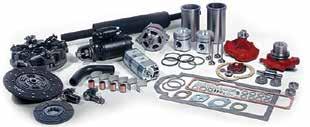

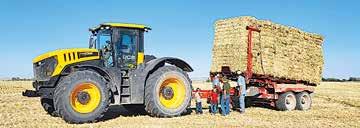
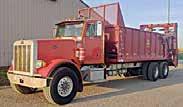


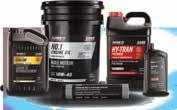


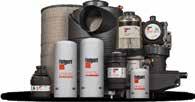







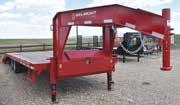
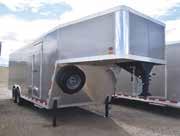
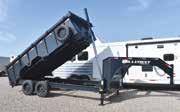


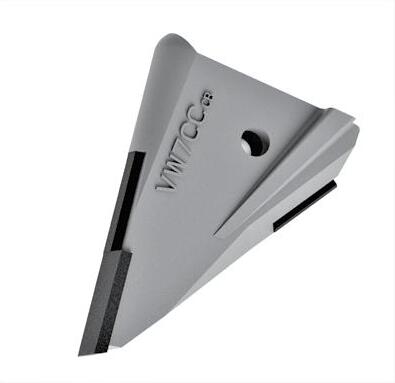
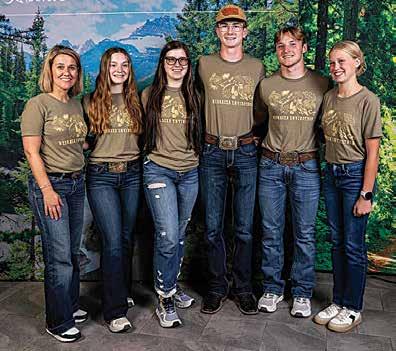
Nebraska team performs well at 2025 NCF-Envirothon
Five Dawson County youth travelled to the 2025 NCFEnvirothon July 20-26, at Mount Royal University in Calgary, Alberta, Canada to share their knowledge of Natural Resources and finished 25th out of 50 teams representing several states in the United States, Canadian provinces, and China. The Nebraska team had a top 10 oral presentation score placing No. 8 with 177.3 points out of 200! Parker and Paige Walahoski, Overton; Brooklyn Reiman, Cozad; Casey Wahlgren, Gothenburg; and Jaelin Wolfinger, Lexington; earned the honor of representing Nebraska at the Envirothon because of winning first place at the State Envirothon.



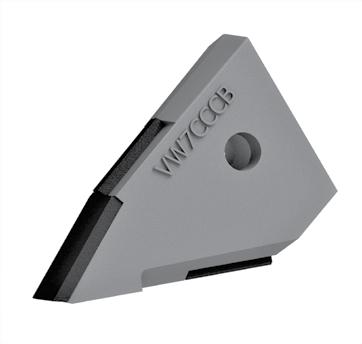


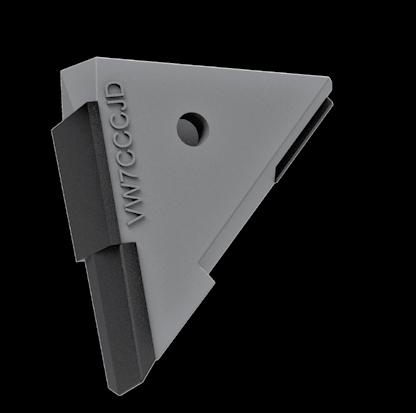


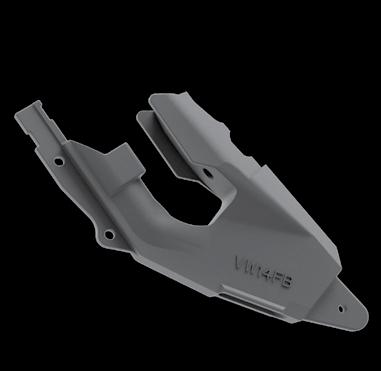

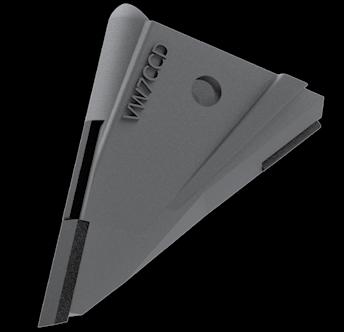

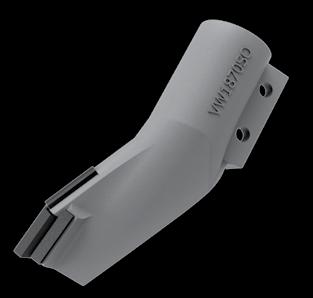


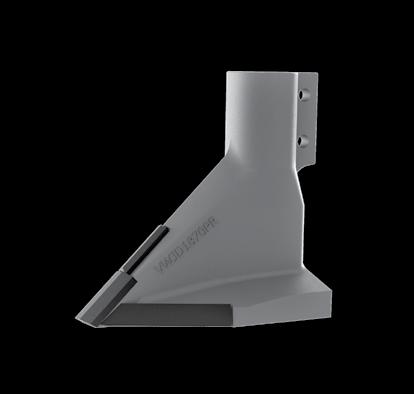



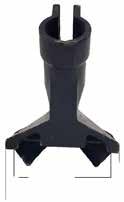

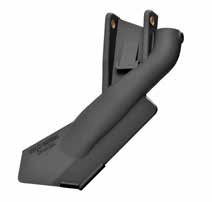


“My trip to Alberta, Canada, with the Dawson County Envirothon team was nothing short of extraordinary,” said Jaelin Wolfinger. “We explored the vital connection between the environment and production agriculture and how these two must work hand in hand to help feed the world. Throughout the experience I gained valuable presentation skills, including how to effectively communicate technical information to a variety of audiences, especially environmentalists, and how to collaborate under pressure. Travelling across the country with this team was not only educational but also incredibly fun. From sightseeing and learning in an unfamiliar landscape to spending six hours together crafting a presentation, every moment was a memorable and meaningful experience.”
According to Megan Grimes, Nebraska Natural Resources District Public Relations Director and Nebraska Envirothon Representative, between January 30th and March 11, 2025, Nebraska high school students competed around the state during regional Envirothon competitions. In 2025, there were 70 teams competing at regionals for a chance at the State Envirothon. The winning teams from each Envirothon region as well as eight wildcards were selected based on their competition scores qualify to compete at the National Envirothon.
Students compete as teams of five students. Some of the teams are formed through taking the natural resources course, or FFA chapter. Other teams are formed as clubs like Envirothon club, Environmental Science, or 4-H clubs. Parker learned about the Envirothon through coach Janice Wolfinger, who was a former Agricultural Sciences teacher. Janice added this about her experience coaching this team. “One of the rewarding aspects of coaching was witnessing how each student brought their unique strengths and perspectives to the table. Together, they formed a remarkably talented team that bridged their backgrounds in production agriculture with environmental science, conservation, and sustainable practices. Their ability to connect to dots between raising crops and livestock and solving real-world ecological challenges was truly impressive.”
Parker earned a trip to the National event with different team members and didn’t perform well. It was Parker’s goal to earn another trip and to make the top 10 teams. To make that happen he personally recruited his team members. He wanted members who were willing to put in the work and study. And he knew if he had other youths with 4-H experience they would have those abilities.
“Envirothon has taught me so much about tying production agriculture and the environment together. Being exposed
Janice Wolfinger, coach, Lexington; Paige Walahoski, Overton; Jaelin Wolfinger, Lexington; Casey Wahlgren, Gotnenburg; Parker Walahoski, Overton; and Brooklyn Reiman, Cozad; represented Nebraska at the NCF-Enfirothon in Calgary, Alberta, Canada
Big Sky Equipment Co.

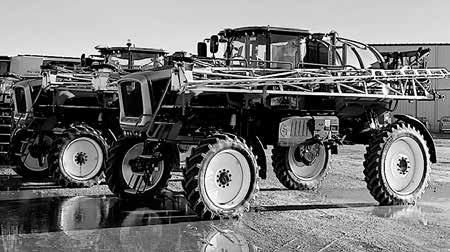
AS1250 Sprayer
gallon poly tank, 100-ft. aluminum booms, Raven Viper 4 monitor with Raven Product control
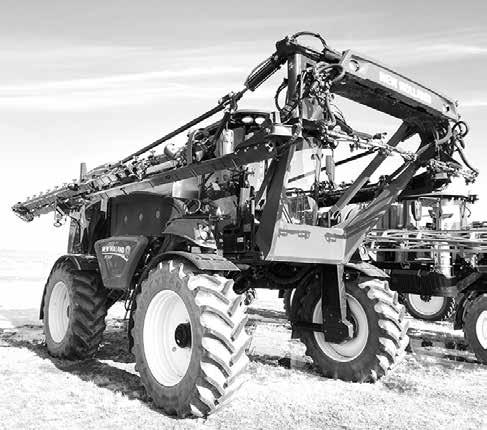
USED COMBINES
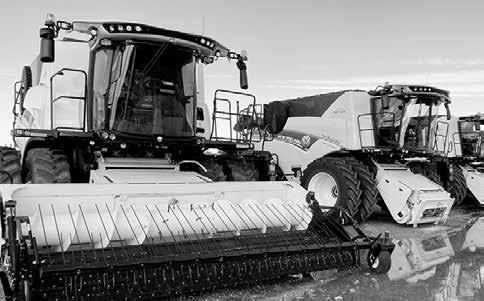
2024 New Holland CR8.90 combine, full guidance and machine automation, 209 sep. hours. Just traded 2023 New Holland CR8.90 combine, full guidance and machine automation, 660 sep. hours. Just traded 2023 New Holland CR8.90 combine, full guidance and machine automation, 594 sep. hours. Just traded 2022 New Holland CR8.90 combine, full guidance and machine automation, 508 sep. hours. Just traded 2019 New Holland CR8.90 combine, full guidance and machine automation, 497 sep. hours. Just traded 2022 New Holland CR8.90 combine, full automation, autoguidance, chopper & spreader, electric folding grain tank cover, DFR rock trap, twin pitch rotors, Sunnybrook concaves, 501 sep. hours. $469,900 2006 John Deere 9760 STS combine. AUCTION PRICING $19,900
USED HEADERS
2022 MacDon A40D windrower sickle header, 16-ft. double knife drive.
2024 Highline BP660 round bale processor.
2022 New Holland 790CP combine pickup header.
2023 New Holland E26C mini excavator.

USED AIR DRILLS
Case IH Flex Hoe 700 air drill with Precision Air 3430 TBT cart, 70-ft., 10” spacing single shoot, walking beam rubber tire packers, 4” spread carbide opener. Just Traded
Morris Contour II drill with tow between 8450 cart, 61-ft., 10” spacing, precision (independent hydraulic trips), single shoot, 3 tank, 450 bushel, variable rate, TopCon X35 monitor. $89,900
2014 John Deere 1890 disk drill (no tank), TBT configuration, 60-ft. 10” spacing, Needham spoked closing wheel, Needham packing wheels, John Deere all-run blockage sensors, hydraulic down pressure. Just In
2021 New Holland SP310F self-propelled front boom sprayer, 120-ft. steel mono boom, 1200 gallon stainless steel tank, 650 tires, Intellispray individual nozzle control, Raven Viper 4 display, stainless steel inductor, XRT auto-boom, auto rinse, premium lighting, low hours.
MacDon D65D 35-ft. draper header, double knife drive, triple delivery (deck shift). $47,900 2010 MacDon D60 45 ft. draper header with pickup reel, transport. Reduced $39,900 2009 MacDon D60-45 draper header, slow speed transport, upper cross auger. Just Traded 2012 Honeybee GB40 combine header with CNH adapter, transport, pickup reel, double knife driver. Just Traded
$429,900
2011 Apache AS1020 self-propelled sprayer, 1000 gallon poly tank, 100-ft. boom, Raven Envision Pro monitor with full guidance, powerglide autoboom, powershift. Just Traded
2011 Apache AS720 750 gallon poly tank, 60x90-ft. booms, auto-boom height control, auto-rate. $79,900
USED SWATHER
2008 MacDon M200 swather, R85 16-ft. rotary disc header included, header tilt. $54,900
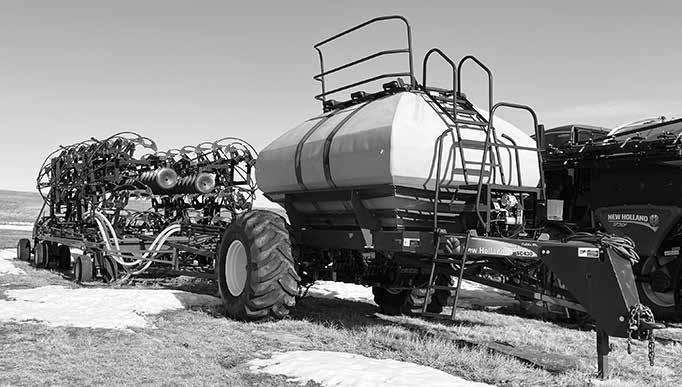
2008 New Holland SD550 drill with SC430 tow-between cart, 12” spacing, 60 ft., single shoot, 4.5” steel packers. $39,900
2001 Flexi-Coil 5000 57-ft.,


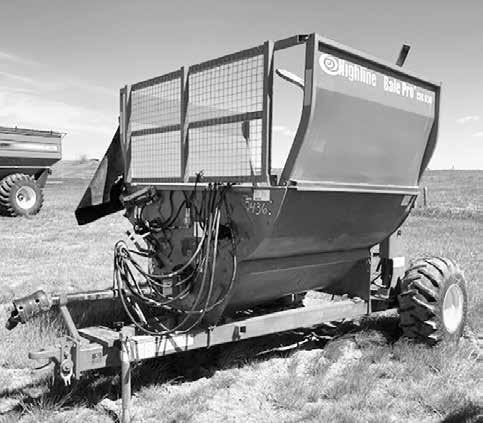

ISO 2026 SUMMER PASTURE
Our operation is searching for a 2026 summer pasture lease. We’re open to however many head of cows and how long they stay for. We will pitch in and help with fencing or any projects if need be. Looking around NW Montana or central MT areas. We are easy to get along with and so are our cattle. Thanks. Leave a voicemail or text if you can’t reach me. Phone Cole at (406) 770-9604
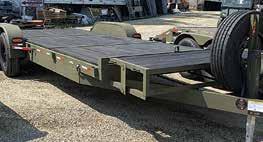

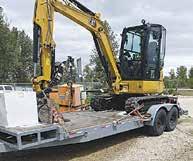
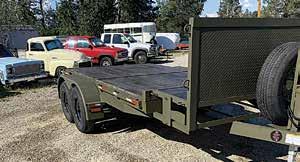

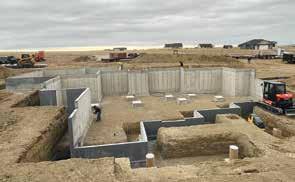
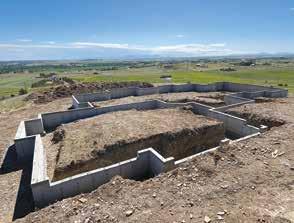
Nebraska team performs well at 2025 NCF-Envirothon
to different sustainable practices from other parts of the world has allowed me to connect with other future leaders in the agricultural and environmental fields. I’m extremely grateful for the opportunities I’ve had through Envirothon, and I’m especially grateful for all the support the team has had from our different sponsors and community members,” Parker Walahoski said.
Grimes said Nebraska’s Natural Resources Districts organize and host the regional and state Envirothon competitions. The State Envirothon prize money is provided by the Nebraska Association of Resources Districts Foundation. The NARD Foundation also pays the National Envirothon registration fee to send a team to compete. The local NRD (Central Platte NRD) provided some funding for the team to offset their travel expenses. “To those who sponsored, mentored or coached these students: your time, talent, and generosity made this journey possible. Your investment in these young minds is helping shape the future of agriculture and environmental leadership,” Janice Wolfinger added. Some of those other sponsors were Aurora Cooperative, Heartland Bank, Overton Veterinary Services, Gothenburg Chamber of Commerce and Platte Valley Auto provided a van to travel to Canada.
“Envirothon gave us the chance to apply what we know from ag to real world environmental challenges, like managing soil, protecting water, and understanding how land and wildlife all fit together. It was hands-on, practical, and gave us a bigger view of how agriculture connects to conservation. We’re grateful to our sponsors for making the trip possible and appreciate the guidance we got from our coach, Janice Wolfinger. It was an honor to represent Nebraska with teammates from three different Dawson County schools,” Paige Walahoski added.
Natural Resources District sends a Nebraska team every year to the National Envirothon. According to Grimes, Nebraska has been participating in the Envirothon since 1992. The Dawson County team placed 8th in the oral presentation portion of the contest this year and Grimes said that is the highest she is aware of for Nebraska in that category.
“The Dawson County Envirothon Club showed incredible dedication and teamwork throughout the competition,” said Grimes. “Their top 10 finish in the oral presentation is a testament of the time, research, and passion they poured into preparing for this year’s challenging forestry theme. We’re proud of how they represented Nebraska on an international stage.”
In addition to eight-hour training days at such locales as Banff and Glacier Bay National Parks, Yellowstone, Alberta, and the Boreal Forest, plus two-hour study sessions the Nebraska team were tested on their knowledge of aquatics, forestry, soils, wildlife, current environmental issue, and oral presentations. “From sight and sound to touch and smell, the students engaged with the forest ecosystem in ways that deepened their understanding and sparked lasting curiosity,” Janice added. The current environmental issue changes every year and is selected by the national host. The 2025 topic was “Roots and Resiliency: Fostering Forest Stewardship in a Canopy of Change”.
According to coach Janice Wolfinger, the team prepared for their oral presentation by going in the day before and getting their presentation topic and listening to the speakers about the topic. Then they were sequestered for six hours building a twenty-minute presentation with no Internet, a packet given to them and a laptop to build a PowerPoint presentation with a file of about 15-20 photos.
Brooklyn Reiman of Cozad, who had the honor of being the Nebraska flag bearer, shared “Highlights of the Envirothon competition included meeting new friends with similar interests, learning more about plants, wildlife and land use and getting to travel with my group from Dawson County. But more importantly, I got to experience different environments and how we can tie that back to production agriculture in Nebraska.”
Casey Wahlgren from Gothenburg added “I had a really great time in Alberta. We got there on Sunday for the opening ceremony where they had the introduction and an indigenous dance which was fun to see … I enjoyed meeting new people and connecting with the world around us.”
Nebraska has hosted the National Envirothon two other times. In 1996 the competition happened at Mahoney State Park and in 2021 it was hosted virtually due to the global pandemic. The Envirothon is an academic environmental competition for 9th to 12th grade students and is North
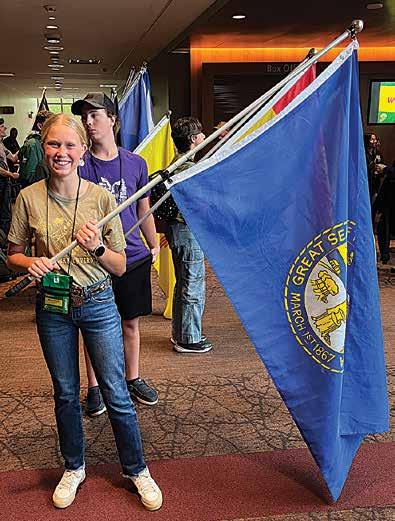
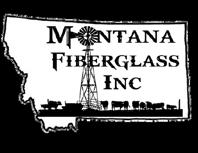
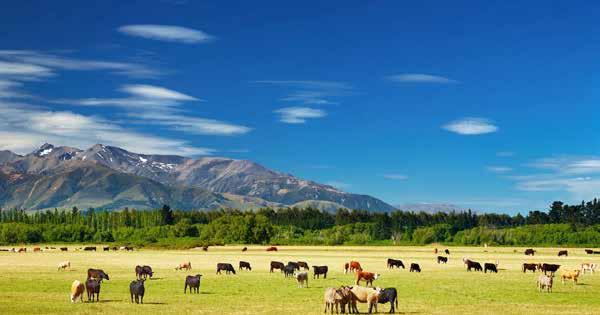

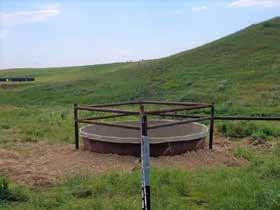
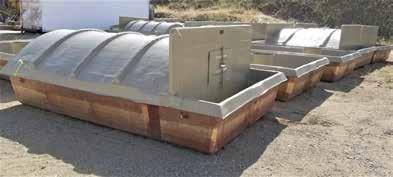
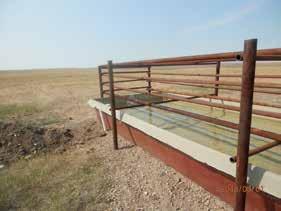
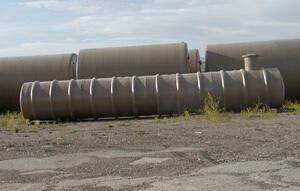
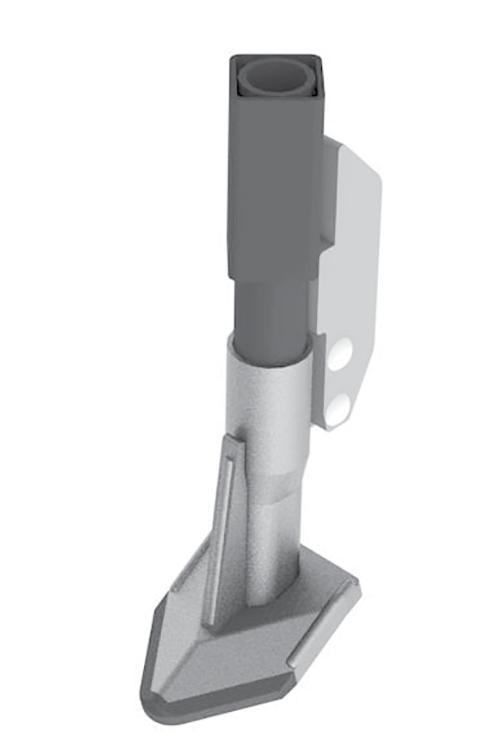


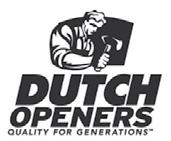
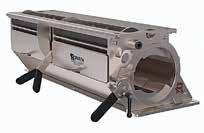
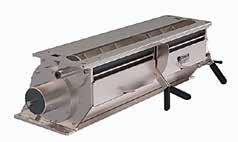
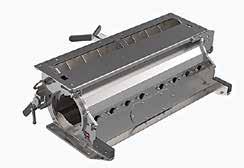
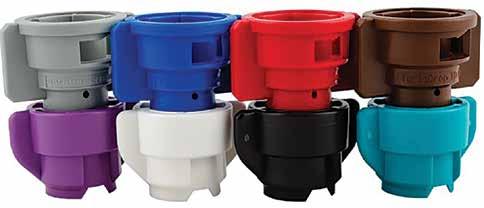


Brooklyn Reiman of Cozad had the honor of presenting the Nebreaska flat at the beginning of the NCF-Envirothon in Calgary, Alberta, Canada.


IAHL joins NAHL Network
The Idaho State Department of Agriculture (ISDA) announced that its Animal Health Laboratory (AHL) has officially been accepted as a member of the National Animal Health Laboratory Network (NAHLN), becoming the first laboratory in Idaho to earn this designation.
The Animal Health Laboratory passed a U.S. Department of Agriculture NAHLN audit in June 2025, following several years of preparation and the opening of the new facility in 2022. This recognition is an advancement in Idaho’s animal disease diagnostic capabilities and highlights the state’s commitment to protecting animal health and agriculture.
“Being part of the NAHLN is a major step forward for Idaho,” said ISDA Director Chanel Tewalt. “It reflects our commitment to providing essential animal health services right here at home, because no one cares more about Idaho agriculture than Idaho. This designation means faster answers for producers, efficient responses to disease outbreaks, and a stronger, more secure future for our agricultural industry backed by in-state expertise.”
The NAHLN is a nationally coordinated system of 60 federal, state and universityaffiliated laboratories. These labs support
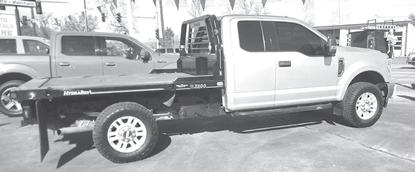
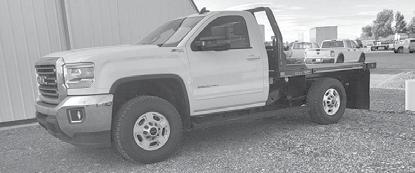

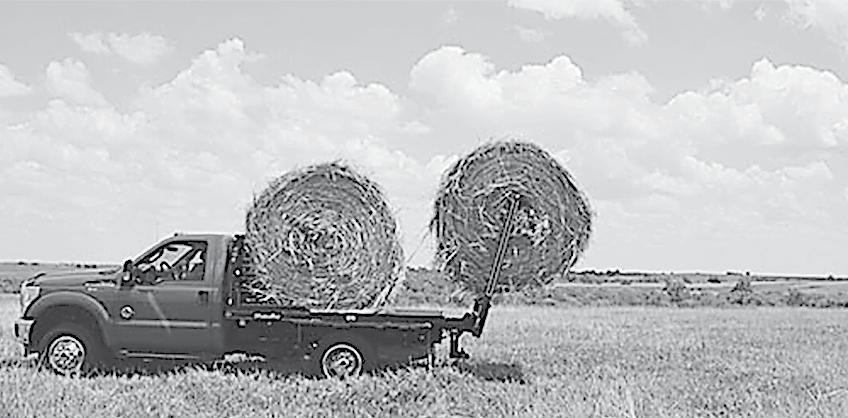
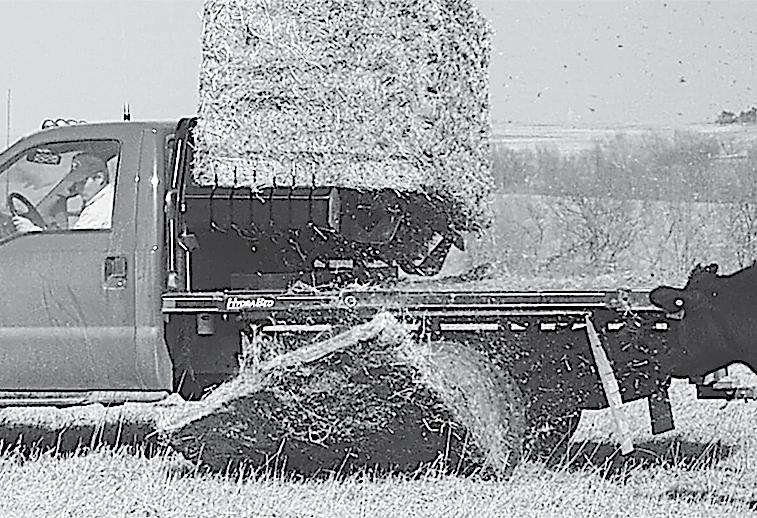
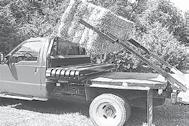
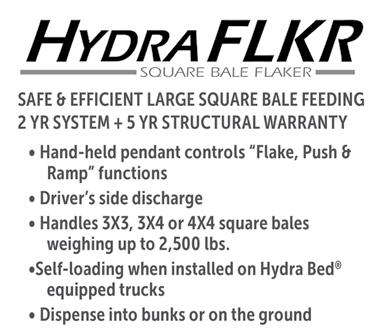
conduct early detection testing, enabling rapid response, and aiding recovery from high-consequence animal diseases. NAHLN laboratories are essential for disease surveillance, outbreak response and protecting the nation’s food supply and public health.
As a NAHLN-certified lab, ISDA’s Animal Health Laboratory is now authorized to conduct avian influenza testing on milk samples collected in Idaho. Previously, those samples had to be sent to out-of-state laboratories, often delaying test results and response times.
ISDA plans to expand its NAHLNauthorized testing to include additional high-consequence animal diseases in the coming months. As a NAHLN member, the laboratory is also eligible for increased federal funding to support operations and further development.
ISDA will host a media tour of the Animal Health Laboratory on Tuesday, July 29 at 1:00 p.m. Media is invited to attend, meet with lab staff, and learn more about the laboratory’s capabilities. Please contact Sydney Kennedy at media@isda.idaho.gov or (208) 986-1566 to RSVP.
For more information on ISDA’s Animal Health Laboratory, visit agri.idaho.gov/ laboratories/animal-health-laboratory/
UW Extension releases new publications on Growing Native Plants in Wyoming
By Brooke Ortel
The University of Wyoming Extension has released two free online resources for Wyoming gardeners interested in growing native plants.
These companion publications offer an introduction to the types of native plants that grow well in Wyoming, considerations to keep in mind when selecting plants, and the steps required to successfully start seeds at home.
The publications are designed as resources for both those who are new to gardening in Wyoming and long-time residents interested in modifying an established landscape.
Author Jennifer Thompson, who serves as a horticulture specialist for UW Extension, has raised native plants in Wyoming for nearly two decades. She encourages fellow Wyomingites to experiment with native plants in their own gardens and backyards.
“Plants native to our region can be used successfully in Wyoming landscapes—whether one is interested in having a tidy group of landscape beds, a free-flowing naturalistic planting, or something in between,” she comments.
The first publication, titled “Native Plants for Wyoming Landscapes: Herbaceous Perennials,” provides tips on plant selection as well as detailed descriptions and photos of 40 native wildflowers suitable for Wyoming conditions.
The descriptions are designed to help readers envision how different options might fit into their landscapes and the potential pros and cons of each, including whether the plant is commonly available in nurseries. To view the publication, visit https://bit.ly/wy-herb-perennials.
Especially for plants that aren’t readily available in most nurseries, Wyoming gardeners may be interested in germinating their own seeds at home. The second publication, “Growing Wyoming Native Plants from Seed at Home,” provides practical advice on pre-treatment methods like scarification and stratification as well as tips on planting and potting seedlings, both indoors and outdoors.
To access the publication, visit https://bit.ly/wy-nativeseeds.
“Growing native plants from seed is a learning experience,” Thompson observes. “Take notes on what does or doesn’t work for you, learn from your mistakes, and share them and your successes with others…If you keep at it, you will soon have a yard full of native plants you can enjoy for years to come.”
For more information on growing native plants in Wyoming, email planthelp@uwyo.edu or contact a local UW Extension office. Contact information can be found at https:// bit.ly/uwe-counties.

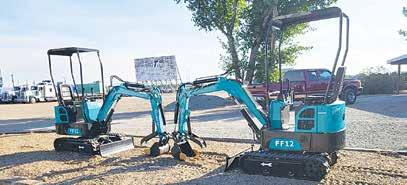



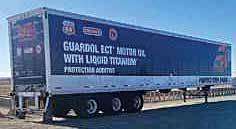
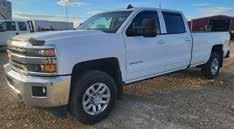









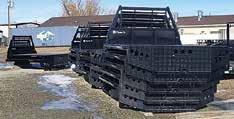



Highwood,
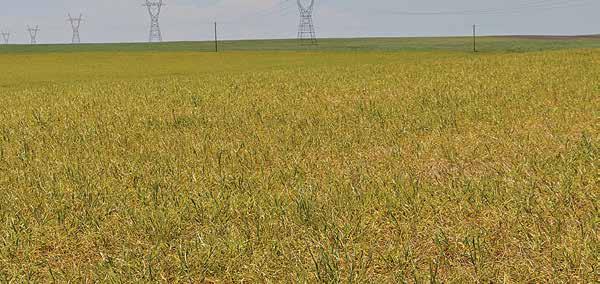
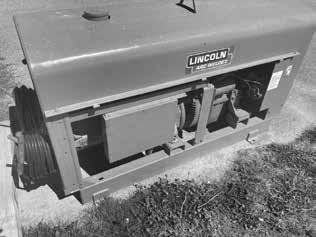
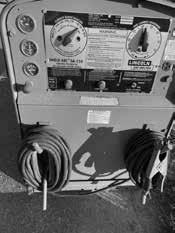
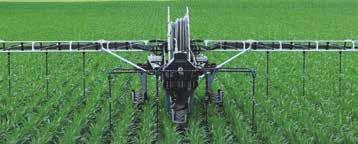

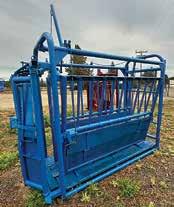





High risks of wheat streak mosaic disease complex from hailstorms: Control volunteer wheat before planting wheat
By Pin-Chu Lai - Extension Entomologist, Eric Hunt - Agricultural Meteorology and Climate Resilience Extension Educator, Gary Hein - Former Director of the Doctor of Plant Health Professional Program
Throughout June and July 2025, many areas in the Panhandle experienced severe hailstorms before wheat harvest. It is highly likely that some of these hailstorms have created high-risk situations for the development of serious wheat streak mosaic disease (WSMD) infections in the wheat crop that will be planted soon.
Figure 2 shows approximate locations where hail was reported. It is likely that this is an underestimate of where hail actually fell, and it is possible some of those hail swaths are continuous.
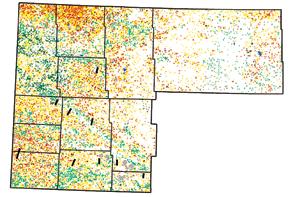
to hail reports submitted to the Storm Prediction Center’s storm report database between June 25 and July 12. (Map courtesy Eric Hunt)
Wheat growers in areas where hailstorms occurred during the critical pre-harvest window (three weeks prior to harvest) are encouraged to scout for volunteer wheat. If volunteer wheat resulting from these preharvest hailstorms is present, it is imperative that farmers control that volunteer wheat
before emergence of the new wheat crop to reduce the risk of severe WSMD outbreak in the next wheat crop.
Herbicide options to control volunteer wheat and annual grasses can be found in the “Guide for Weed, Disease, and Insect Management in Nebraska”1 (Nebraska Extension NebGuide EC130).
A recent UNL study2 reinforced the significant impact of well-timed hailstorms that occurred within the three weeks before harvest on the following wheat crop in the region. The key player here is the pre-harvest volunteer wheat induced by the hailstorms, which can serve as a “green bridge” for the WSMD viruses and their vector — wheat curl mites — to survive between harvest and planting.
Significant losses of the next wheat crop will occur if volunteer wheat infested with mites and infected with the viruses is not well controlled, because mites carrying WSMD viruses can easily spread to the new wheat crop from this pre-harvest volunteer wheat (Figure 3).
A Nebraska wheat field showing yellowed plants symptomatic of a severe virus infection. Inset photo shows a hand holding a small wheat clump with stunted, discolored leaves.
There are more advantages of controlling volunteer wheat in addition to WSMD management, such as reducing soil water loss and risks of other diseases or insect infestation.

Figure 1. The wheat-mite-virus complex has extreme potential to impact yield the following year if high-risk volunteer wheat situations are not managed well. (Gary Hein | Nebraska Extension)
Figure 2. A map of the Panhandle region marked with areas of hail occurrences (black bars) according
Figure 3. Volunteer wheat, like that illustrated in the inset image, due to a widespread hail event that occurred prior to harvest in 2016 resulted in widespread yield loss to mite-transmitted viruses in Deuel and Garden counties in 2017. (Gary Hein | Nebraska Extension)

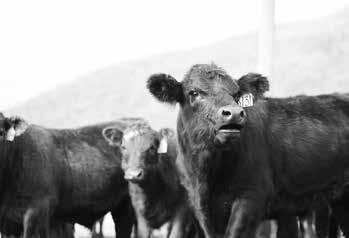


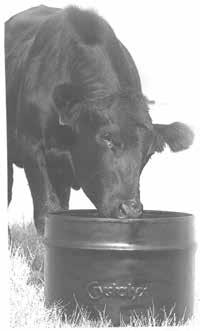
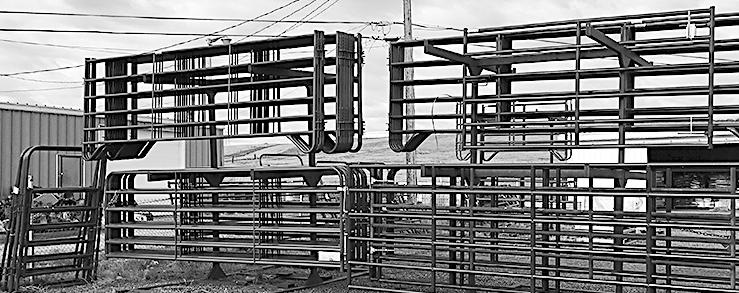

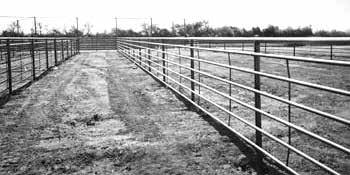

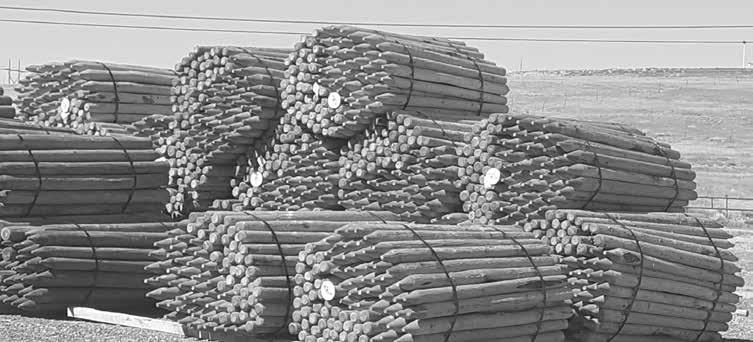
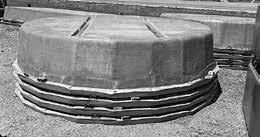
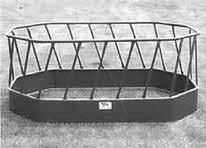
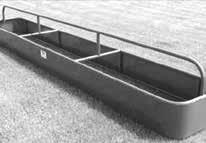
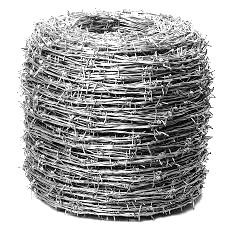
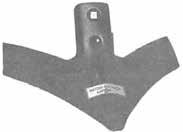


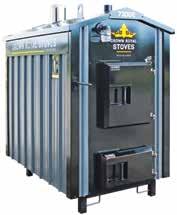

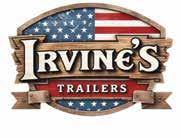
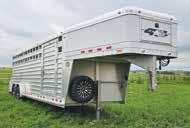
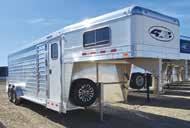
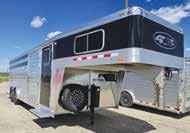
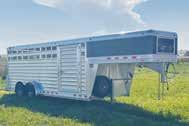
Asian Longhorned Ticksspreading west towards Nebraska
By Dave Boxler, Nebraska Extension Educator
The Asian Longhorned Tick (ALHT) is an invasive species native to China, Japan, and Korea, and has also been introduced to New Zealand, Australia, and several Pacific islands. This tick can transmit multiple bacterial, viral, and protozoan pathogens, including Theileria orientalis Ikeda, a protozoan debilitating cattle disease associated with anemia and abortion.
Heavy infestations can cause severe blood loss, weakness, and death. In New Zealand and Australia, ALHT infestations
have been linked to reductions in dairy production of up to 25% (Hoogstral et al. 1968; Heath 2016).
ALHT was first detected in the United States in New Jersey in 2017 and has since spread to more than 20 states. The most recent confirmed detections were in Iowa and Michigan in 2025 (Figure 1). While ALHT has not yet been reported in Nebraska, livestock producers should be aware that it is present in nearby states and could eventually be found here.

A unique concern with ALHT is its reproductive capacity. Females can reproduce either sexually or asexually, but only the asexual form has been identified in the U.S. In this form, all offspring are female, allowing populations to reach extremely high densities in just a few months.
A single female can lay 900–3,000 eggs in one event before dying. Development from egg to adult averages 89 days, with feeding stages active for about 57 days (Hoogstral et al. 1968).
ALHT is a three-host tick, meaning each life stage—larva, nymph, and adult feeds on a separate host before dropping off to
molt to the next stage. However, if hosts are limited, all life stages may feed on the same animal, such as pastured cattle (Rainey et al. 2018). Feeding to full engorgement typically takes 3–6 days.
In the U.S., ALHT has been found in warm, humid habitats such as tall grassy areas near forests and meadows. The ticks are light brown and very small, about the size of a sesame seed or smaller (Figure 2) and can be mistaken for other species. They have been collected from numerous domestic animals (sheep, goats, dogs, cats, horses, cattle, chickens), wildlife, and people.
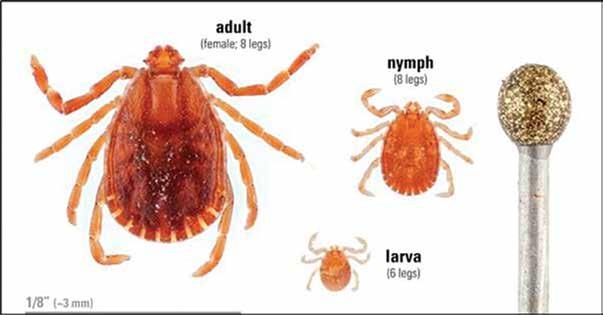
Monitoring and Identification
Livestock producers should routinely check animals, especially around the eyes, ears, limbs, tail, and udder.
Cattle should be inspected during handling events such as vaccinations, ear tagging, pregnancy checks, or artificial insemination. Collected ticks should be placed in alcohol and taken to a veterinarian or extension office for identification.
Young animals (under six months) and pregnant cows are particularly vulnerable. Cow-calf producers should be especially cautious when introducing naïve animals into pastures where ALHT is present.
Once infected with Theileria, cattle remain carriers for life and may relapse during stressful periods. There is currently no direct treatment for Theileria infection.
Management and Control
ALHT is highly susceptible to synthetic pyrethroid insecticides. The best control is achieved with whole-animal sprays or pour-ons, or oilers/backrubbers. Additional management practices include:
Maintaining short grass along tree lines. Fencing livestock away from wooded areas.
Implementing pasture rotation to break the tick life cycle.
Figure 1: Status of Asian Longhorned Tick. Data: Oklahoma State University
Figure 2: Asian Longhorned Tick life cycle.
Master Gardener: For fall color consider the mum
By Katie Markheim, Nebraska Extension Master Gardener
Have you run across the latest mum meme on social media? It states, “Finally time to go pick out which mums to put by my front door and kill this fall.”
If you’re on the hunt for mums, I hope you find the right ones, but I really hope they stay alive and last in your garden as a hearty perennial. Chrysanthemums are one of the most popular plants for late summer and fall flower gardens, added for quick color in the landscape. Coming in a wide array of colors and sizes, mums are extensively sold as flowering potted plants for landscape beds or outdoor containers. Be aware, though, many chrysanthemum cultivars are not reliably winter hardy in Nebraska and, therefore, are used more as fall-flowering annuals. Before you go shopping for mums, know the difference. There are varieties that are considered annual and are used mostly as cut flowers in arrangements sold by retailers. There are varieties that are meant to be perennials planted in the landscape, offering color and texture year-round, returning year after year. A couple recommended cultivars for planting zones 3-5 are Mammoth Mums or Igloo Mums.
You may wonder why mums bloom in the fall. The plants are photoperiodic, which means they respond to changing day length in the fall. So, when our days begin to shorten in fall, that is their cue to start flowering. “Short-day” plants, like mums, flower when day length is less than 12 hours, and some varieties have been developed to flower earlier or later in the fall based on their genetics. This is typically identified on plants for sale in garden centers, with wording like “early season” or “late season.”
It’s no secret, though, that late-season mums are often overlooked by gardeners because they appear somewhat bland at the garden center. While they are full of green flower buds waiting to burst open when days are short enough, they don’t have the showy, brilliant color of earlier varieties that are in full bloom right now. It’s hard to resist the urge to buy a plant filled with flowers, but to enjoy the entire bloom in your home garden, purchase the less showy, later-season varieties. In fact, for an easier transplanting transition, it’s best to select a plant with unopened buds or just starting to flower.
When placing your perfect mum, choose a planting spot that receives about six hours of full sunlight per day. If your plant is potted, consider a planting depth that is set with the upper surface of the soil ball slightly below ground level. Be sure to add any necessary organic matter to your soil prior to planting and space plants adequately. Newly set mum plants should be kept uniformly moist, not wet. One good watering a week (about one inch) usually is adequate. Be sure to pinch, or deadhead, any fading flowers, discolored foliage, or damaged stems. Plants can be fertilized with a complete garden fertilizer four weeks after planting. Mulching and leaving on the tops are best practices to capitalize on the greatest chance to overwinter your mum, giving you late summer or early fall color next year.
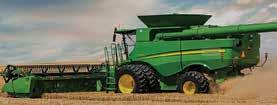
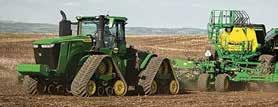





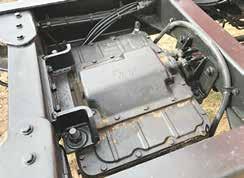
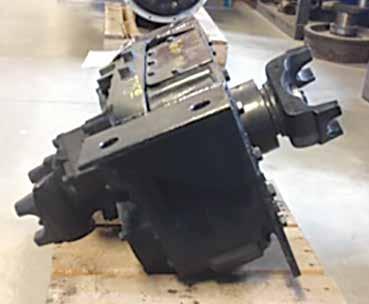
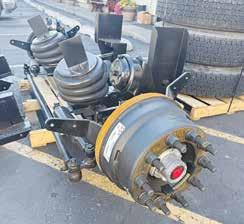
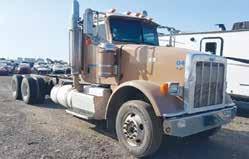
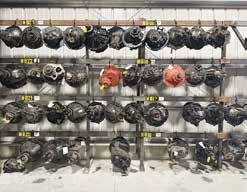
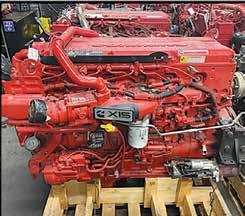
MOBILE AG REPAIR

Cut Bank Tire ALIGNMENT
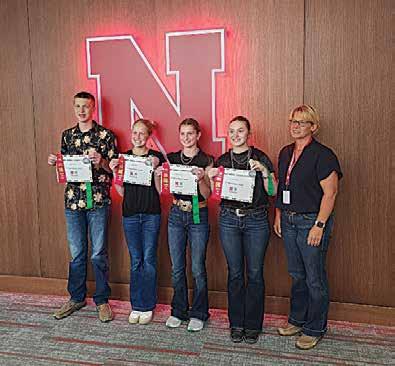

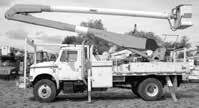




1996 Ford F350, V8, automatic, 13-ft. flatbed, 5000 lb crane, outriggers $8000
1989 Ford F450 utility truck, 11-ft. bed, 460, auto..$2500
1999 Ford F550 4x4 flatbed, V10, automatic. $10,000
1999 Ford F550 diesel, automatic, flatbed with lift gate $9000
1985 Ford F600 service truck, diesel, 5+2 speed, 8000 lb Auto Crane, compressor $11,000
1994 Ford F600 service truck, diesel, 5+2 speed, 6200# IMT crane, compressor, hydraulic outriggers $12,500
1985 Ford F700 4x4 service truck, IMT 5000 lb crane, underhood air compressor, outriggers $15,000
1992 Ford F700 diesel, 8 speed, 13.5-ft. flatbed, 5000 lb crane, outriggers $10,000
1986 Ford F800 National 228 37-ft. crane, 14-ft. dump bed
1989 International 41-ft. bucket truck, diesel, automatic $10,000
1981 International 1800 4x4 flatbed, 14,000 lb knuckle boom $12,500
2006 Ford F650 ladder truck, needs a generator. $17,500 12-ft. flatbed, 3200 lb. IMT crane, air compressor.$5000 (11) 20-ton 24-ft.
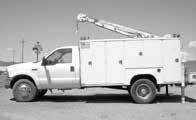

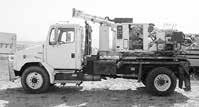

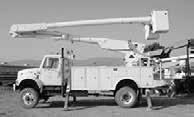
Cutline Senior Quiz Bowl Team 2.jpg: Winning Reserve Champion honors at PASE in 2025 were the members of the Dawson County Senior Quiz Bowl team 2: (from left to right) Matthew Rhoades, Cozad; Brooklyn Reiman, Cozad; Bristol McConville, Lexington; Paige Walahoski, Overton; and Shannon Peterson, Gothenburg; who was one of the coaches.





CONSTRUCTION & ATTACHMENTS

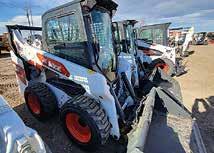
2023 Bobcat S66 Skidsteer SJC, HVAC, vinyl suspension seat, auto ride control, reversing fan, PWR BOB, 7-pin, 2 sp, dual bucket position. stk# 29382. CALL (G)
2023 Bobcat S66 Skidsteer CLR side, HVAC, heat cloth air ride seat, auto ride control, reversing fan, PWR BOB, 7-pin, 2 sp, dual bucket position. stk# 29381 CALL (G) Bobcat 763 Skidsteer, engine hours 3946, loader. stk# 32669 $17,900 (L) Bobcat 873 Skidsteer, 73 hp, 3200 pounds, 16.5 GPM, 1500 lbs. lifting capacity. stk# 32964. $17,900 (G)
2023 Bobcat E20 Mini Excavator. stk# 30610. $42,500 (G)
2022 Bobcat E42 Mini Excavator, 403 engine hours. stk# 29370. $69,900 (G)
2022 Bobcat E35 Mini Excavator, 33 hp, 414 engine hours. stk# 29371. $59,900 (G)
2022 Bobcat E35 Mini Excavator, 25 hp, 403 engine hours. stk# 29373. $55,900 (G)
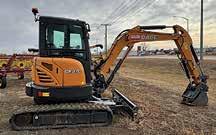
2024 Case CX37 Mini Excavator, New trade-in! Excellent condition, 200 hours. stk# 32270. $54,900 (G)
2022 Bobcat T740 Compact Track Loader, 448 engine hours, Power Bobtach, 7 pin, dual direction bucket positioning, ride control, reverse fan. stk# 29376. $69,900 (G)
MISCELLANEOUS
Manitou 96” grapple bucket. stk# 22839. $5888 (G) 72” bucket. stk# 26358. $700 (G) Howard M100 rotavator, 3-pt., 100” tiller. stk# 32199. $4000 (L) 2014 Danuser F8 3-pt. post hole digger with 12” bit. stk# 18366. $1200 (G) 2019 Danuser 200173 18” rock auger bit with 2” hex head. stk# 29016 $1800 (G) Danuser 48” pallet forks. stk# 29525.$1400 (G) Woods Euro bale spear. stk# 23716. $600 (G) 2022 Salt Dogg SHPE0750 Sand/Salt spreader, stainless steel auger and frame. stk# 32348. $2850 (G) Lan SPL10 72” snowpush. stk# 32537. $1395 (G)
MTD snowblower, 22” 2-stage blower, no reverser. $400 (G) Toro snowblower. stk# 5810. $225 (G)
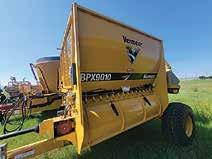
2023 Bobcat T64 Compact Track Loader. stk# 30714. Call (G)
2022 Bobcat T64 Compact Track Loader, cab AC/heat, Bobtach-bucket positioning, Touch display-rear cam, heat seat, auto ride-high flow-rev fan. stk# 29311 CALL (G)
2022 Bobcat MT100 Track Loader. stk# 29374. Call (G)
2021 Bobcat 5600 Toolcat, Brand-new engine with 0 hours and warranty! Deluxe cab & high flow. stk# 32095. $69,000 (G)
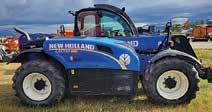
2017 New Holland LM7.42 Elite telehandler, 460/70R24 Mich., reverse fan, rear hydraulic coupler, exterior tool box, continuous flow auxiliary hydraulic, bluetooth and auxiliary radio work, SO station. stk# 22833
$95,000 (L)
Bobcat HB980 breaker. stk# 24408.$10,036 (G)
2011 Bobcat 80 dozer blade. stk# 31340. $5965 (G)
Quick Attach 68” angle blade. stk# 32129. (G)
Bobcat 68” angle broom. Good bristles. stk# 32128. (G)
Bobcat 74” bucket. stk# 29864. $1800 (G)
High Volume 66” bucket, skid steer attachment. stk# 29035. $650 (G)
Bobcat 18” bucket for excavator with bolt on teeth. stk# 22333. $399 (G)
2014 Bobcat drop hammer. stk# 17553.
$5900 (G)
Bobcat 15C auger. stk# 23364. $2750 (G)
Bobcat 6B landrake. stk# 29484. CALL
Bobcat 72” root grapple. stk# 29486. CALL
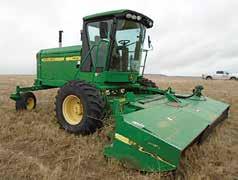
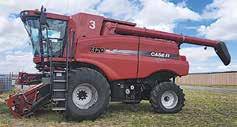
HEADERS
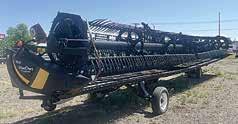




TRACTORS
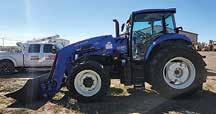



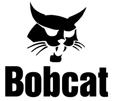
SPRAYER
Let us show you what we can do for your bottom line with this NH 310 sprayer fully equipped with a nearly new $230,000 Weed-It system! Spray weeds, not dirt.
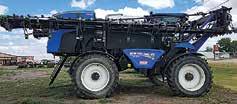
$96,000 (G)
New Holland TS6.110 340/85R28, 460/85R34, 16x8 power shuttle, loader, HI-VIZ roof, 110hp engine, 92 PTOhp, 540/1000, 3 remotes, air seat, loader, skid. SN: NT04187M. stk# 32900
New Holland TS6.110 HI-VIZ roof, 110hp engine, 92 PTOhp, 340/85R28, 460/85R34, 16x8 power shuttle, 540/1000, 3 remotes, air seat, SN: NT04184M. stk# 32901.$82,666 (L)
2000 New Holland TM150 tractor, Newly rebuilt engine, remanufactured transmission, SuperSteer, 112 bar axle, full PS, 184R38 60%, cab suspension, 22 front weights, wheel weights 540/1000 PTO, no loader. stk# 29559.
$58,000 (G)
RAKES
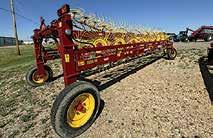
$47,000 (L)
New Holland TS135A deluxe cab, supersteer, 98” bar axle, 18.4xR38, 540/1000 PTO, 4 rear remotes, semi powershift, loader/grapple. stk#22849.
Case MX285 MFD tractor, 18 powershift, STD flow, 540/1000, wheel weights, 4 remotes, INT seat, power beyond. stk#32945.
$39,900 (G)
Steiger PT225 tractor. stk# 20554.$25,000 (G)
2023 Bobcat CT5550E HST compact tractor. stk# 32344. CALL (G)
2022 Bobcat CT2025 HST tractor, 56 engine hours. stk# 29350. $24,000 (L)
ROUND BALERS
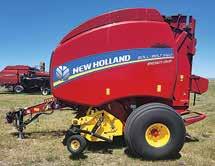
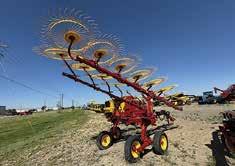
New Holland RB560 laced belt, net/twine, 1000 PTO, caster, standard density, manual hydraulic pickup, 21.5LX16.1, roller windguard, extra wide pickup, declutcher, deluxe wrap monitor. stk# 29809.
$35,200 (L)
2018 New Holland RB560 laced belts, ISO monitor, net only, hydraulic ramp, 1000 PTO with cut out clutch, bale count of 10,479. stk# 22242. $34,900 (L)
Case IH RB564 baler, X-wide pickup, net/twine, 1000 PTO. stk# 32786. Call For Price (L)
John Deere 568 shed kept, great condition, laced belts, monitor included, single axle, wrap/twine, 1000 PTO, wide pickup, tires 21.5L-16.1 SL. stk# 32789. $13,900
2010 John Deere 568 baler, twine, 1000 PTO, roller windguard, large float tires, 19,886 bales. stk# 31510. $9900 (G)

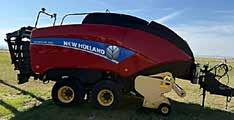
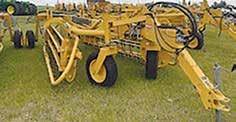
TILLAGE & HARROWS
2018 Gates 84-ft. Magnum 5 bar harrow, 26x9/16 teeth with carbides, hyd tine adjust., excellent condition. stk# 31435.$59,900 (G)
McFarlan 36 36-ft. harrow, 16 bar spike tooth, hydraulic fold & lift. stk# 32307. $44,500 (L)
McFarlan 32 32-ft. drag harrow, 16 bar spike tooth harrow, hydraulic wing & fold. stk# 32308. $42,000 (L)
Maybridge 26 26-ft. chain harrow with cart hydraulic lift, manual lift. stk# 31172. $16,895 (G)
Maybridge 26 26-ft. chain harrow with cart hydraulic lift, manual lift . stk# 31173. $16,895 (G)
Maybridge 24 includes bars 5/8 chain 2X blue and white 4-ft. stk# 29012. $4000 (L)
Maybridge 15 green, bar included 15-ft 5/8 chain drag. stk# 30510. $2250 (G)
Ogden HC36 36-ft. chain drag harrow, 5/8 chain, 6-ft. deep, hydraulic wing. stk# 32451. $21,300 (L)
2023 NEW Kirchner 8-ft plow, Cat II, 3-pt. unit with 16” sweeps. stk# 30802. $7090 (L) John Deere 18-in. planer, 14 pin control, carbide teeth, high flow. stk# 31623. $9900 (G)
2019 New Holland SP310F New 520/85R42, Mono Boom, 120-ft., 10 SEC.. stk# 24818. $374,900 (G)
UTV VEHICLE
Mavrick CanAm turbo engine, Smart Lok, harness, 200 hp, Piggyback shocks, Trac Force tires. stk# 32272. $21,900 (G)
2022 NEW New Holland 1631 rake, 16 wheel high capacity, single side opening, 60”, rear tandems,
(L) 2013 Vermeer R2300 hydraulic 23-ft. rake. stk# 25560. $19,000 (L)
2011 Vermeer R2300 rake, hydraulic basket. stk# 32831. $23,000 (L) 2008 Vermeer R2300 hydraulic basket rake. stk# 31803. $19,000 (L)
2014 New Holland 340 square baler, density control, tandem axle, ISO INTELLVIEW, large 1000 PTO, 500/50 Alliance, roller chute, roller windguard. stk# 30935. $89,900 (G)
SQUARE BALERS
New Holland 340 P 3x4 square baler, roller chute, tandem axle, ISO, color monitor, work lights, density control, packer. stk# 28453. $43,000 (L)
2023 Vermeer BPX9010 R&S processor, 1000 PTO, right hand discharge. stk# 29565. $29,900 (L) 2016 Haybuster 2665 processor, round bale only, fine cut. stk# 32154. $18,000 (L)
HAY FOR SALE
#####
What’s it like to be kissed by a vampire? It’s a pain in the neck.
#####
Over 1.5 billion pounds of pumpkins are grown every year in the United States.
Minimizing shrink to maximize profit
By Chevy-Lynn Vaske, K-State Research and Extension news service
Every pound counts at the sale barn — and sometimes, the weight loss happens long before calves ever hit the scale.
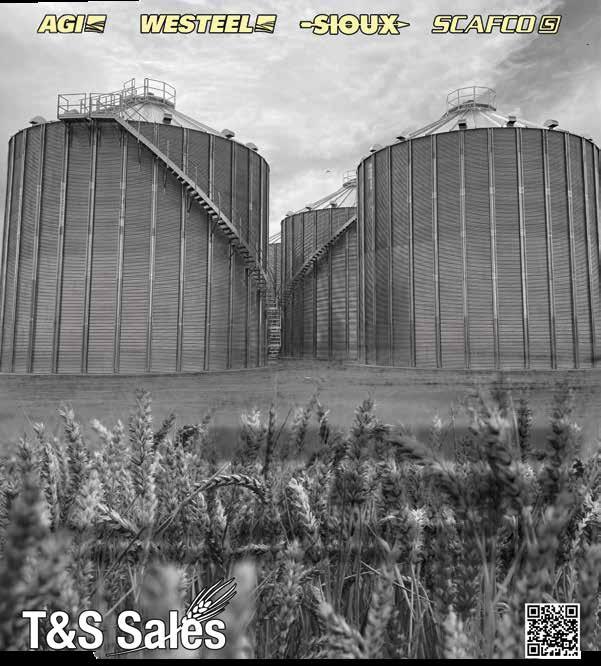






For cattle producers, shrink isn’t just a biological response to stress; it’s an invisible drain on profit margins that can be managed with the right timing and techniques, according to K-State beef cattle experts.
K-State veterinarian Brad White explains “shrink” as the weight loss that occurs between gathering calves at home and their final weigh-in at the scale.
“In general, I expect calves to lose weight if they’re sitting in a new environment, new water source, just transported and everything else,” veterinarian Bob Larson said. “So even though it might be easiest for me to take calves on the day that’s most convenient for me, in order to address shrink, I think it’s better to move that transport to the sale as late as possible.”
There are also economic implications associated with shrink.
“You think about a 500-pound steer; you know, every 1% difference in shrink is 5 pounds,” Larson said. “And so you add a couple more percentages of shrink, and the amount of money we are talking about is easily offset by hiring somebody to help me gather them.”
Proper cattle handling techniques play a critical role in minimizing weight loss during the marketing process, the experts emphasized.
“We feel stressed because we have things to do, and we start rushing and pushing the cattle harder. We start losing those low-stress handling principles in the process,” beef cattle nutritionist Phillip Lancaster said.
“Now that they are stressed, they have an increase in urination, defecation, and they start losing fluids and losing weight quicker,” Lancaster said.
For producers concerned about shrink, online auction platforms may offer a useful alternative.
“One tool that producers have is methods that limit the amount of time the calves spend in the marketing system, such as marketing online,” Larson said.
The specialists concluded that shrink represents an invisible cost that doesn’t appear on invoices but significantly impacts producer profitability, making proper management essential for maximizing returns.
Soil management conference
North Dakota State University Extension and the University of Minnesota Extension are partnering to present a collaborative 2026 Soil Management Summit (SMS) and Dakota Innovation and Research Technology (DIRT) Conference. The conference will take place January 14-15, 2026, at the Delta Marriott Hotel in Fargo, North Dakota. The conference will also offer a virtual option.





Attendees of the SMS and DIRT Conference will have the opportunity to learn about many aspects of soil health from 18 concurrent sessions on cover crop management, reduced and alternative tillage practices, understanding and harnessing soil biology, economics of soil management practices, integrating crop and livestock systems and more. Continuing Education Units (CEUs) will be available for the sessions.
A unique aspect of the SMS and DIRT Conference is the focus on learning and relationship building among attendees of all backgrounds.
“When you put farmers, ranchers, agencies, industry and Extension in the same room, the ideas really start to flow,” says Carlos Pires, NDSU Extension soil health specialist. “It’s about building a future where agriculture thrives, while soil and water are protected for generations.”
Another highlight of the conference is the range of session formats, including slide presentations, panel discussions, interactive table talks and dedicated networking time. This mix gives participants the flexibility to engage in the style that best suits their learning and connection preferences.
The registration fee for the in-person conference is $150 before December 22, 2025, and increases to $190 on December 23. The in-person registration fee includes refreshments, lunch on both days, breakfast on Thursday, and appetizers and one beverage at the Beer and Bull social. The virtual conference registration fee is $150.
For more information and to register, visit the conference website at z.umn.edu/SMS-DIRT .
By Anita Gall, Nebraska Extension Master Gardener
Fall is the best time to aerate and overseed your lawn. Aeration relieves soil compaction caused by foot traffic, pets, and irrigation. All of these things often press the soil tightly and limit root growth. By pulling out small soil plugs, aeration opens channels for water, air, and nutrients to penetrate deeply into the root system. Overseeding after aeration ensures good seed-to-soil contact, helping thicken thin spots and improve overall turf density before winter.
The cooler weather also means it’s time to clear off vegetable gardens to prevent the buildup of viral, bacterial, and fungal diseases. Leaving old vines, stems, and foliage in place provides shelter for microorganisms and pests to overwinter, creating problems for next year’s crops. After removing debris, lightly cultivate the soil and add a fresh layer of compost. This restores nutrients, improves soil structure, and prepares the garden for early spring planting of cool-season vegetables. After the cleanup, consider cover crops for your garden. Planting cover crops in the fall, such as rye, clover, peas, or vetch in open garden areas, is an effective way to protect the soil from erosion and enrich it with organic matter. Cover crops will help support soil health by feeding beneficial microorganisms through the winter, and in the case of legumes, they fix nitrogen, improving fertility for the next growing season.
Fall is also one of the best times to plant trees, shrubs, and perennials. Instead of directing energy into top growth, plants focus on root development, establishing a strong foundation before waking up in the spring. Trees and shrubs can be planted until the ground freezes. Be sure to water newly planted trees, shrubs, perennials, and all evergreens throughout fall and even during dry spells in winter to prevent stress and ensure healthy establishment. For your established trees, prune out dead, damaged, or diseased branches to reduce stress on plants and prevent the spread of problems. However, avoid heavy pruning of trees and shrubs at this time. Significant cuts stimulate new growth that won’t have time to harden off before winter, leaving plants vulnerable to cold damage. The best time for structural or rejuvenation pruning is late winter to early spring, when plants are dormant and energy reserves are ready to support vigorous new growth.
While tidying up in the fall, balance is the key. It’s widely agreed that some plant material should be left standing. Hollow stems, seed heads, and leaf litter provide essential winter habitat for pollinators, birds, and other beneficial wildlife. However, diseased plant material infected with powdery mildew, black spot, fire blight, or rust harbor disease pathogens that can multiply under the right conditions and overwinter to reinfect plants next year. Clearing away this material helps break the disease cycle and promotes healthier growth in spring.
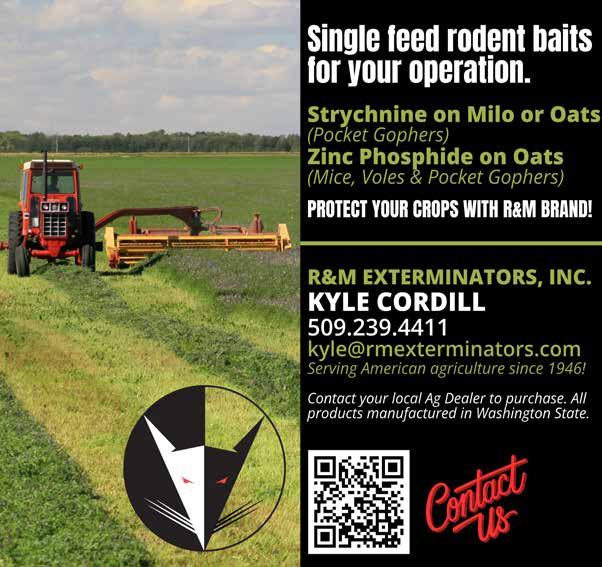
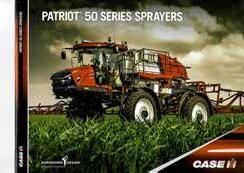











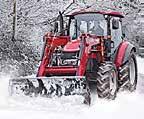
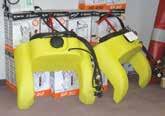


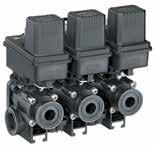

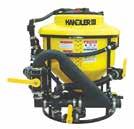





HAY & STRAW FOR SALE
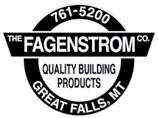

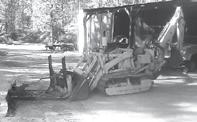
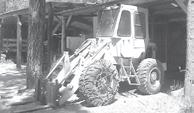

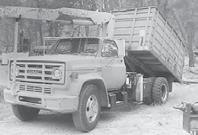
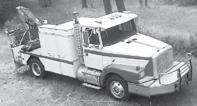
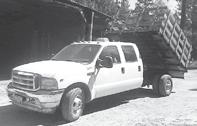
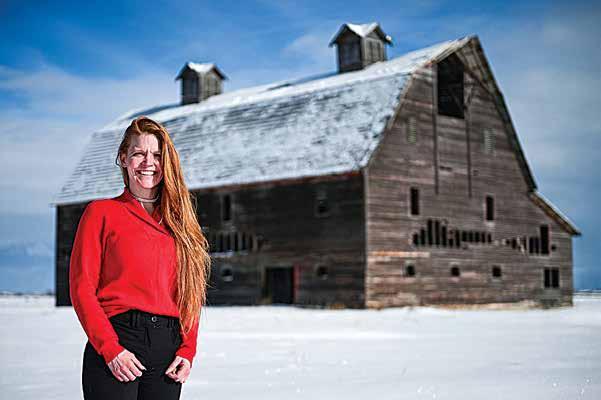
Blasdel Barn Family fundraising to save historic Flathead landmark
By Ryan Hall, Rural Montana editor
A well-known barn with suspected nefarious beginnings is now facing an unknown future.
The Blasdel Barn near Somers has been a Flathead Valley staple for 117 years, but it is becoming dilapidated as weather and people have contributed to its deterioration.
Shelbey Blasdel hopes to save the former family barn, now owned by the federal Fish and Wildlife Service — and the history tied to it.
Nefarious beginnings
The Blasdel Barn started out as the Porter Ranch Barn. It was built in 1908 by Frank W. Porter. That much everyone agrees on. Where the money and/or lumber to build the barn came from is less clear, but all of the theories agree there was some criminal aspect to it.
“Nobody could ever give us a definite answer,” said Don Blasdel, 91, a Flathead Electric Cooperative member who grew up on the farm and is Shelbey’s grandfather.
cated in the Somers stagecoach robbery. His sister, Susie O’Neil, who was a bookkeeper at the butcher shop, was quick to work to prove her brother’s innocence.
On July 1, 1906, as Susie O’Neil closed in on proving her brother didn’t hold up the stagecoach, she struck up a conversation with Frank Porter and requested that he take her to Holt in his buggy the next day. This was according to Porter’s account told later, and Shelbey said it draws red flags for her as the two had never spoken prior to this conversation.
The trip to Holt was uneventful, Porter drank at the Holt Saloon while O’Neil visited a friend nearby. However, when Porter returned to Somers, he was alone.
Porter claimed that while crossing the calm river waters on the ferry, the horses spooked and bolted off the ferry, plunging them, the buggy and O’Neil into the water. Porter, who somehow returned to town unscathed, said that he saw the silhouette of O’Neil’s dress as she sank to the bottom of the river.
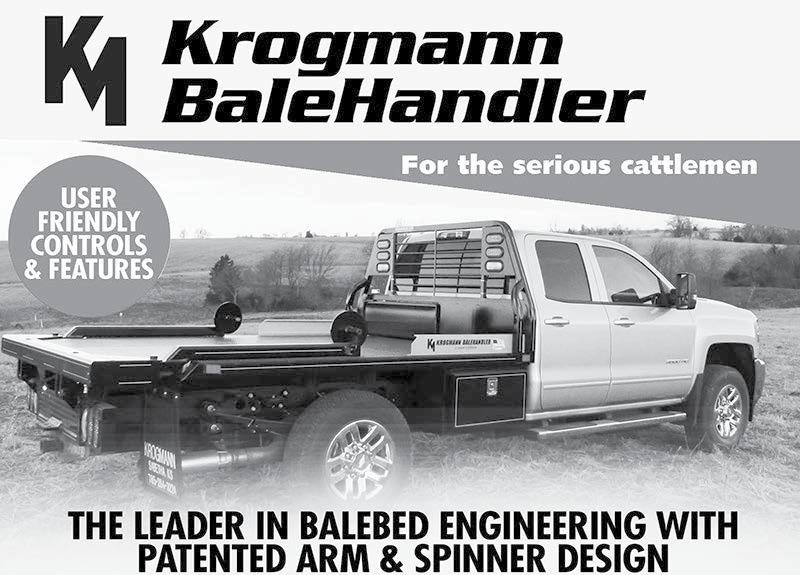
He said one theory is that the lumber came from Somers Lumber company. The guys scaling the lumber had the scales off just enough for some wood to go missing unnoticed.
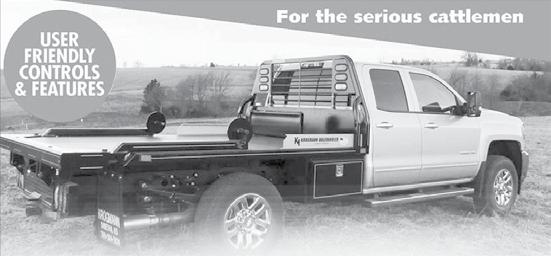
Shelbey believes the other common story of the barn’s beginnings, one involving a stage-coach robbery and murder.
According to Shelbey, Jack O’Neil — a butcher in Somers at the time — was impli-
During the testimony at Porter’s trial, he testified that O’Neil had given him her watch and that he did not know what became of the apparent $300 in butcher shop funds O’Neil was carrying at the time of her death. In 1906, it was an odd gesture for a woman to give a married man her watch.
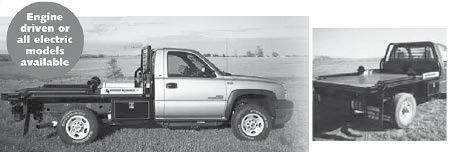
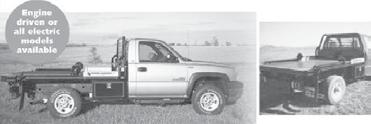



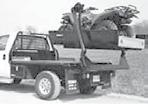
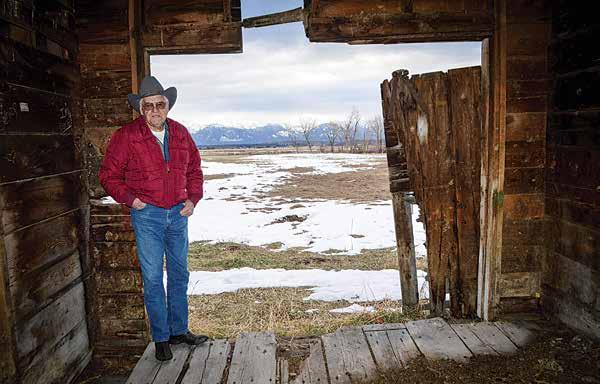
Shelbey Blasdel stands in front of historic barn
Don Blasdel stands in historic barn.
SBARE announces input sessions
The North Dakota State Board of Agricultural Research and Education (SBARE) is seeking public input on agricultural research and North Dakota State University Extension needs in the state. SBARE provides the legislature and governor with recommendations on how NDSU Extension and the North Dakota Agricultural Experiment Station can address critical needs and maximize the return on the state’s investments.
SBARE is initiating the process of preparing recommendations by receiving input from stakeholder groups and individuals in planning for the 2027 legislative session. All North Dakotans are invited to provide thoughts on critical needs and concepts for solutions.
One way to provide input is to present 10-15 minutes of testimony. Stakeholders are encouraged to provide input at an earlier session to ensure availability. Those interested can request a time slot at www.ndsu.edu/vpag/ sbare/stakeholder_input.
The dates to provide inperson input are the following:
November 13: North Central Research Extension Center; 5400 Highway 83 S, Minot (limited virtual testimony slots available)
December 10-11: NDSU Peltier Complex; 1300 18th Street, Fargo
Another way to participate is to provide testimony online through a submission portal also found at www. ndsu.edu/vpag/sbare/stakeholder_input.
Interested people can also mail written testimony to SBARE at the following address: NDSU Dept. 7520, PO Box 6050, Fargo, North Dakota 58108-6050.
Participants are urged to describe their agricultural research or NDSU Extension needs, potential solutions and an explanation of how this solution can bring added value for North Dakota.
Examples of past priorities can be found at www. ndsu.edu/vpag/sbare/research_and_extension_priorities.
#####
Quesadillas are on the menu at virtually every Mexican and Tex-Mex restaurant, and many other restaurants.
Has
helped you find what you were looking for?
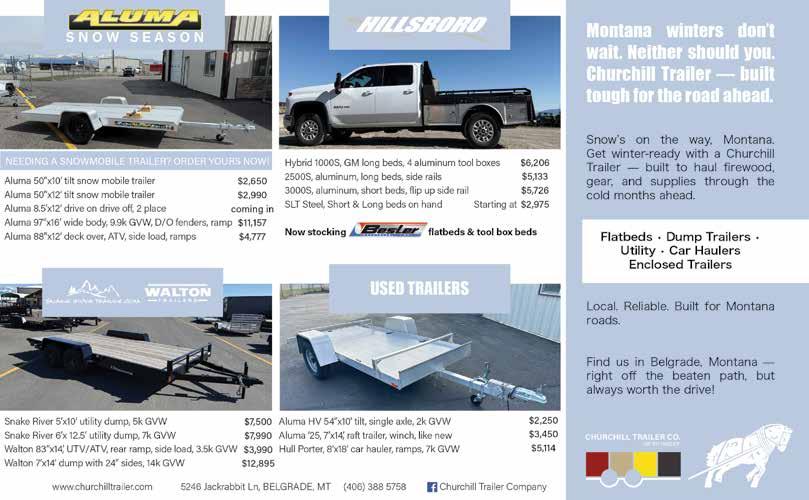
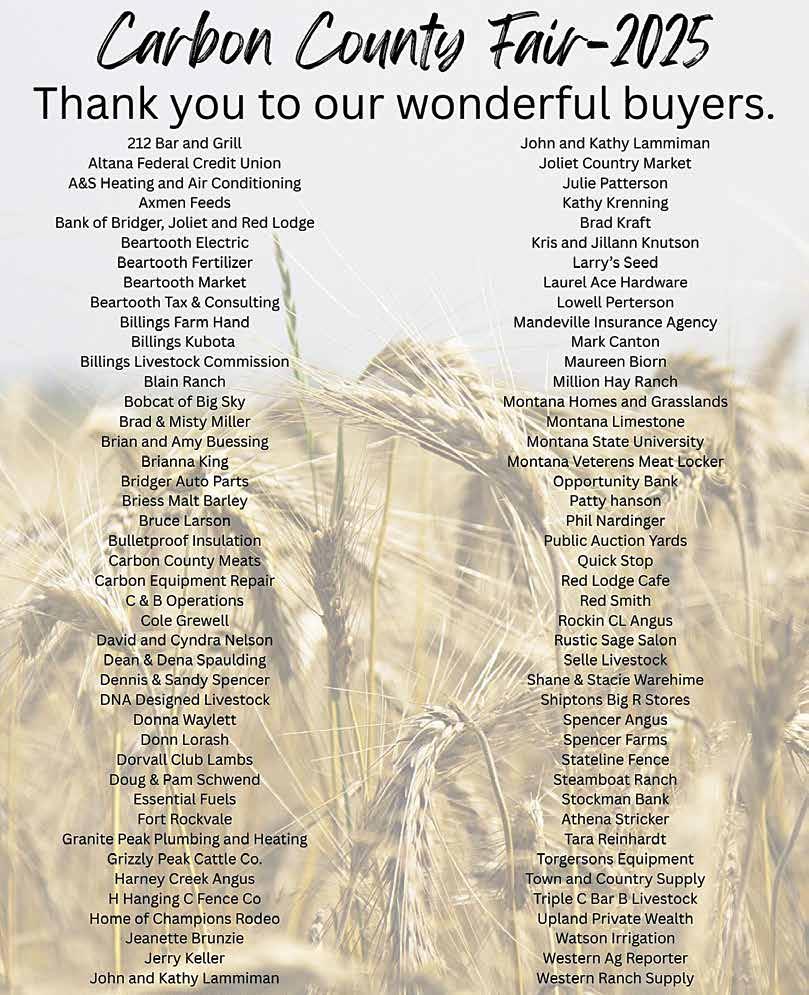


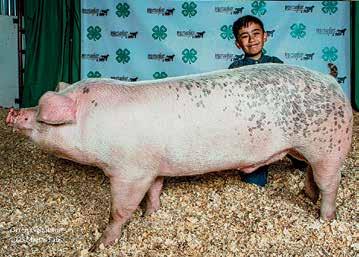
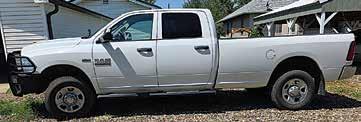
Blasdel Barn
At the time of the incident, Jack O’Neil was in prison for the stagecoach robbery. Shortly after his sister’s death, he was bonded out by… Frank Porter. Shelbey said she is pretty sure that this is where the $300 went.
Many believe the massive Porter Ranch Barn, the biggest red barn in western Montana at 92 feet long, 60 feet tall and 66 feet wide, was built with funds taken from the stagecoach robbery.
Family history
Don Blasdel and his son Larry, Shelbey’s father, remember the barn well. They both spent their youth throwing hay into it.
“I put over 100 ton of hay in it myself,” Don said.
In addition to hay, the family had six dairy cows housed in the barn that they would milk, then separate the cream out and take it to town to sell.
“That’s what you bought your groceries with,” Don said.
The family also housed two work-horse teams in the barn.
“The whole barn was used all the time,” Larry said. “We’re very proud of that barn. I spent a lot of time at that barn, putting hay in and out of that barn.”
Falling apart
The Blasdels bought the ranch and barn in 1945, and sold it the U.S. Fish and Wildlife Service’s Creston Fish Hatchery in 1987, according to an article in the Flathead Beacon.
Since that time, Montana’s weather and people wanting to grab a piece of history have led to the barn deteriorating. Though it is still a popular spot for senior photos and wedding photographers, it is far from its glory days.
“When I go there and see the barn is so dilapidated, it bothers me,” Shelbey said. “I want my son, who is 2½ years old, to see it the way I did.”
“I kind of hate to go down there prit near anymore,” Don said.
“That poor old barn is in really sad shape,” Larry said. “It’s very, very upsetting to watch the (Fish and Wildlife Service) let it go to pot.”
Saving the barn
Shelbey has founded Blasdel Barn Reclamation, a nonprofit that is attempting to raise the money needed to go through the state and federal environmental review process and then restore the barn.
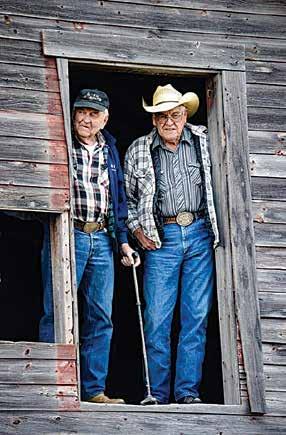
She estimates it will take about $100,000 to get through the environmental processes, but the restoration will be much more costly.
Shelbey said the barn only has a foundation around the edges of the structure, while Larry noted there are some pillars below the dirt, but they are few and far between. An engineering marvel, built with few supports and no screws or nails on the interior, the barn is held together with notched wood and a few wooden pins.
Shelbey said that the barn needs to be lifted so that a proper foundation can be poured. Additionally, the barn is on the National Register of Historic Places, so all restoration work must conform with rigorous historic guidelines.
“(If it isn’t saved) it’s one more piece of history nobody will know about,” Shelbey said. “To me, devastated isn’t the right word, but it’s the only feeling I can match to it. It’d be horrible, it’d be absolutely horrible to see another piece of history be demolished.”
HOW TO HELP:
To donate to the effort to restore the historic Blasdel Barn, go online to www. blasdelhq.com, or send donations made to Blasdel Barn Reclamation to Blasdel Barn Reclamation PO Box 534 Fort Lupton, CO 80621.
Timing last alfalfa harvest with GDD
By Ben Beckman, UNL
Allowing for alfalfa to winterize before dormancy is a key factor preventing winter kill across a stand. Traditionally, my recommendation has been to time the last cutting for roughly 6 weeks before the first frost. While this general guideline has proven its worth over the years, many producers would love to have a bit more accurate method to time last cuttings. One way to narrow the noharvest window down is by utilizing growing degree days (GDD). Work from Dr. Dan Undersander with the University of Wisconsin calculated winterkill risk looking at GDD at a base 41°F accumulating until a killing frost of 24°F. The two GDD levels of importance for alfalfa stands were 500 and 200. By providing at least 500 base 41°F GDD after harvest, research trials showed that there was sufficient time for alfalfa to winterize. If harvest occurred with under 200 GDD left,
alfalfa plants did not have sufficient time to regrow and deplete carbohydrate reserves to a level that would negatively impact winterization.
While other factors like ground cover and stress of the stand over the course of the year need to factor into the decision for a late cutting, this gives us a more accurate calendar point to shoot for if forage is needed. We also need to keep in mind that late cuttings may have a difficult time drying down in a timely fashion.
Most of the state is right at the edge of our 500 GDD threshold. To decide where you stand, the High Plains RCC CLIMOD can be used to look at past years GDD. Using accumulated 41 GDD for past years and your expected first freeze dates, we can avoid the 500-200 GDD no harvest zone and plan a late alfalfa cutting if needed.
Wahl Farms for buying my pig “Eli” at the Marias Fair Orren Gustafson
Larry and Don Blasdel look out over the landscape from the doorway of the barn.
Master Gardener: Fall care grows a lot of spring beauty
By Cynthia Brown, Nebraska Extension Master Gardener
Every garden tells a story of successes, surprises, and lessons learned. As the season winds down, take time to reflect. Keeping a simple record will guide your choices for next year, saving time, money, and effort. Which plants thrived? Which struggled? Keep notes on what worked well, pests or weather challenges, and soil conditions. Speaking of soils, fall is the perfect time to prepare for a greener lawn next year. When temperatures stay around 50 degrees, mow your grass one last time, leaving it slightly taller than normal for root protection. Rake away leaves to prevent mold, then aerate the soil for better airflow. Apply a slow-release fall fertilizer to strengthen roots and finish with a deep watering before the ground freezes.
With freezing temperatures, keep in mind that September and October are the best months to plant spring-flowering bulbs, like tulips and daffodils, for a colorful display next spring. Fall is also the perfect time to divide crowded perennials—giving you healthier plants and more blooms. Before the ground freezes, be sure to clear weeds, add compost, and apply mulch to protect and enrich your soil. Spread a one- to two-inch layer of compost over your garden beds in spring or fall. Lightly mix it into the soil or use it as mulch around established plants. Compost enriches your soil, retains moisture, and provides essential nutrients—without chemicals. A little compost goes a long way toward stronger roots, greener leaves, and more blooms.
Garden into the winter, by leaving some of your spent annuals in place through winter to help your garden. They give beneficial insects a cozy home for the cold months, enrich your soil as their roots decay, and help prevent erosion by holding soil in place. Just remember—if a plant shows signs of disease or insect damage, remove it to keep problems from overwintering.
This winter, protect your garden and let nature lend a hand.
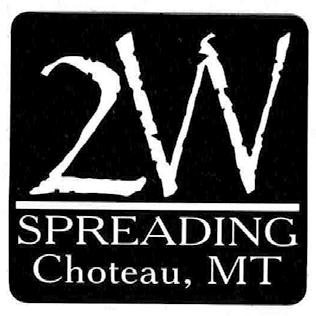
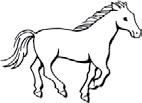
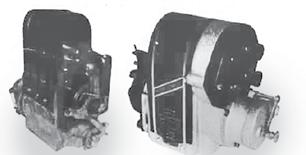
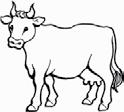
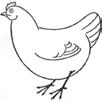

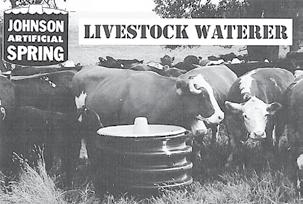

#####
Not all countries view Mums as a symbol of joy and happiness. In France, Belgium, Spain, and a few other European countries, it is a symbol of death. Funeral floral arrangements include them. And, they are placed on coffins and gravesites to honor the dead.
Fall migration brings increased risk of avian influenza
As wild birds begin to migrate during the transition into fall, the risk for transmission of highly pathogenic avian influenza (HPAI) to domestic birds will increase.
In early September, a turkey flock in Dickey County, North Dakota, was confirmed to have HPAI.
Now is the time to review and implement biosecurity protocols to reduce disease transmission from wild to domestic birds or livestock, according to North Dakota State University Extension specialists.
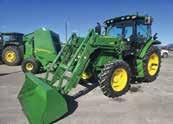
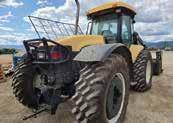

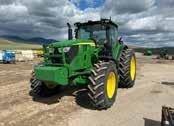
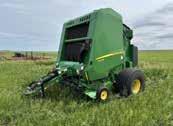
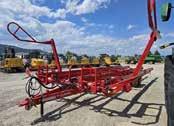

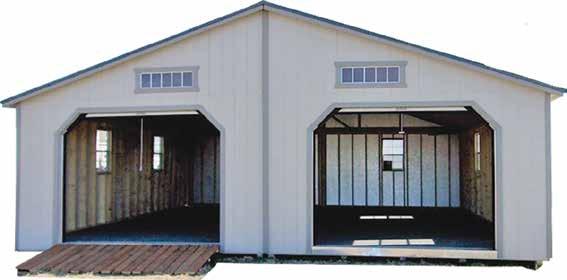
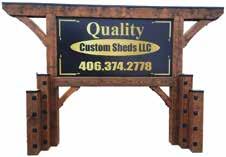

HPAI is a disease carried by wild birds that can affect domestic birds and livestock, explains Dr. Jake Galbreath, NDSU Extension veterinarian. Avian influenza is caused by the influenza Type A virus (influenza A). The virus is shed in the feces and respiratory secretions of infected birds and is able to survive for weeks in cool, damp environments. Migration can be followed via BirdCast (https://birdcast. info/), an online real-time migration prediction tool.
The majority of cases in domestic animals have been in poultry and dairy cattle. However, cases have been documented in cats, goats and a pig.
NDSU Extension specialists have developed tips for reducing transmission of HPAI:
Reducing transmission between wildlife and domestic birds
If possible, keep poultry or livestock housed until the risk for transmission has decreased. Nonlethal methods to deter wildlife are available on the U.S. Department of Agriculture Wildlife Service’s nonlethal initiative webpage: https://www. aphis.usda.gov/wildlife-services/about/nonlethal.
Reduce the attractiveness for wildlife to visit the property by cleaning up litter and spilled feed around domestic flock housing.
After coming in contact with or handling wildlife, change into clean clothes, wash hands and disinfect footwear before contact with domestic animals.
Report sick or deceased wildlife to the North Dakota Game and Fish Department at https://bit.ly/mortality-report. In the event of carcass disposal or handling to reduce potential interactions, be sure to follow the appropriate procedures: ag/ndsuHPAI.
The best defense against HPAI is having a biosecurity plan in place, according to Mary Keena, NDSU Extension livestock environmental management specialist.
“It is your job as an animal owner to create a line of separation between your clean animals and the potential unclean issues that wildlife or visitors may bring,” says Keena. Reducing transmission between domestic animals
Restrict access to property and animals. Allow contact from people who care for the animals, but minimize visitors.
After being near other animals or animal owners — such as at feed stores — clean and disinfect the vehicle and its tires. New animals should be kept separate from the flock or herd for at least 30 days.
Do not share lawn and garden equipment, tools or supplies with a neighbor or other flock/herd owners.
More information about biosecurity can be found on the U.S. Department of Agriculture’s H5N1 Influenza page: https://www.aphis.usda.gov/h5n1-hpai.
While the transmission rate from animals to humans is low, it is a zoonotic disease.
Miranda Meehan, NDSU Extension livestock environmental stewardship specialist and disaster education coordinator, reminds owners that animals testing positive for HPAI are prohibited by law from entering the commercial marketplace.
“Avian influenza is not a food safety issue when consuming properly cooked meat and eggs and commercial dairy products, which are pasteurized,” says Meehan. “However, there is a risk to individuals consuming raw milk, raw milk cheese and other raw dairy products from cattle that have been exposed to HPAI.”
To date, there have been four positive HPAI cases in domestic poultry or birds and no cases in dairy in North Dakota in 2025. Report sick birds or livestock to a local veterinarian, or contact the North Dakota state veterinarian’s office at 701-328-2655.
#####
Cold showers have more health benefits than hot or warm showers. These include improving circulation, stimulating weight loss, and easing depression.

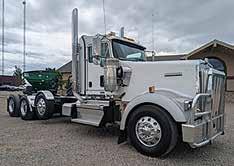
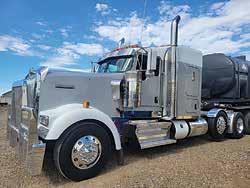

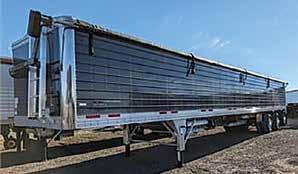

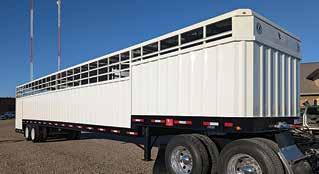
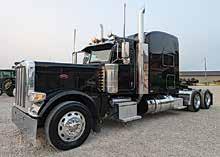









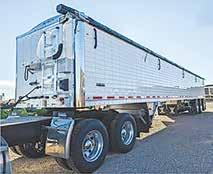

CATTLE HANDLING EQUIPMENT FOR SALE
Hydraulic squeeze chute
8-ft. alley
Round tub
Loading chute
$13,075
$2300
$4600
$4725
(406) 531-1036
Saint Ignatius, Montana --- Delivery available
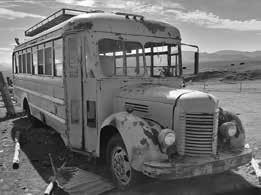
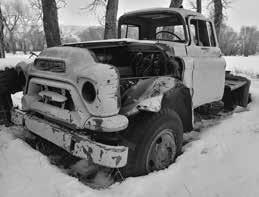
MISCELLANEOUS ITEMS FOR SALE - MAKE OFFER
1972 Ford 2-ton truck. 360 engine. 1,000 miles on pro overhaul. 14-ft. bed w/steel floor and hoist. 28” grain sides and stock rack.
16-ft. truck bed w/hoist. 40” grain sides. Fold down stock rack.
13-ft. 6” truck bed w/double action hoist. 40” grain sides and stock rack.
32-ft. Anhydrous plow
12-ft. one way disc w/20” discs.
3000 gallon fuel tank
1955 Cat D4, 5815 hours. Loader w/bucket, log forks, silage forks.
Heavy duty rear winch.
1945 Cat D8 w/cable dozer. Starts easy and runs great. Weak clutch.
1935 Cat 40 diesel, w/dozer.
12-ft. Brush blade.
Older D8 U frame and dozer.
Letournea 4-yard cable scraper.
65) 4”x30-ft. hook and latch aluminum irrigation pipe, half w/ openers.
6 cylinder International? engine w/ Berkeley pump. 5” inlet, 4” outlet. Propane powered. 6-ft. wide rock forks bucket.
Clam bucket. 7-ft. wide x 3-ft. high x 3-ft. 6” deep.
Older grain augers. 6”x55-ft. 6”x30-ft., 5”x12-ft.
Westgo hydraulic drill fill auger. 4”x10-ft. pencil auger w/electric motor.
Bale elevator, 20” wide x 25-ft. long
Slide in pickup stock rack.
Older 20-ton press.
Ford 292 engine.
1962 Starcraft 16-ft. fiberglass boat and trailer. 40 hp Johnson outboard.
Culverts - 24”x16-ft., 24”x14-ft. w/connector. 18”x17-ft. 6” w/ connector. 75-ft. of 12” plastic culverts in 8-ft.-12-ft. lengths w/ connectors.
11-ft. long x 4-ft. wide PTO drive manure spreader.
International 12-ft. side delivery rake.
Old ground drive manure spreader. 1950s GMC 630 truck w/5th wheel plate 1940s? bus. All or parts. Buggy? axles.
John Deere 273 plow & cultivators
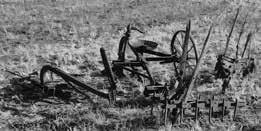
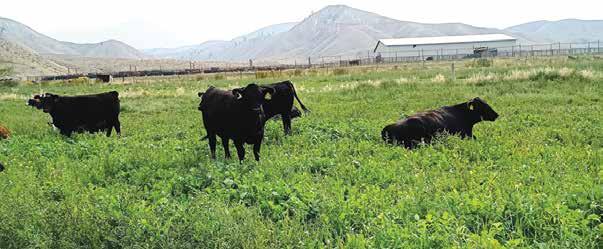
UI Extension study shows promise for raising, grazing cover crops after grain harvest
By John O’Connell
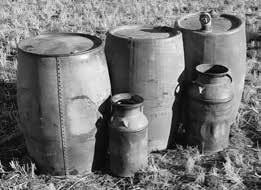
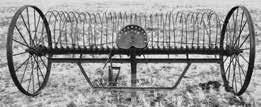
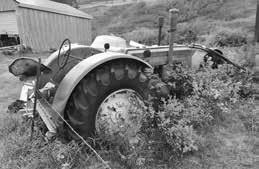
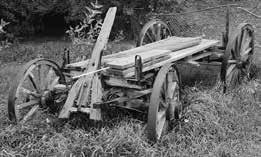
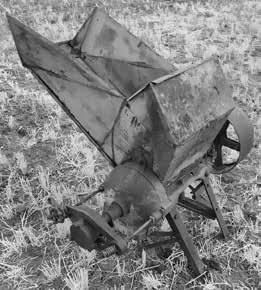
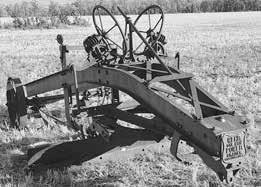

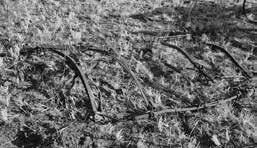
An ongoing University of Idaho Extension trial shows early promise for east-central Idaho farmers and ranchers hoping to raise two forage crops from a single field within the region’s short growing season.
The trial is in its second growing season at U of I’s Nancy M. Cummings Research, Extension and Education Center in Salmon and will continue for another one to three years. Led by Extension beef specialist John Hall, the project entails planting fall triticale, swathing and baling it as hay in June, applying herbicide to prevent regrowth and then planting a multi-species cover crop mixture.
Cover crops are generally planted primarily for soil-health benefits — such as fixing nitrogen, improving soil porosity and boosting soil organic matter — and often offer the farmer no direct commercial benefit. Hall and his colleagues, however, chose to graze their cover crops in the fall, prior to planting another triticale crop, to capture the value of the forage, while also returning nutrients and minerals to the soil through cow manure.
Dual-crop strategy
The team showcased the cover crops trial on Sept. 9, 2025, during a field day at the research facility.
“Our main objective last year was to demonstrate we could use cover crops in this area of the state, graze with cattle and get good weight gains,” Hall said. “We were also demonstrating fencing systems and what’s entailed with grazing cover crops.”
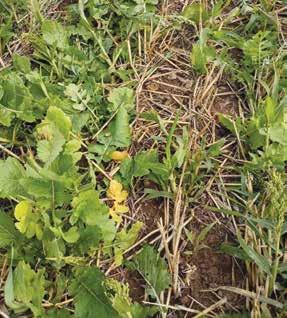
Throughout the trial, the experimental field will not be tilled — saving fuel by reducing equipment use, preserving soil carbon that would otherwise be released as greenhouse gases, and maintaining soil structure and living roots essential for soil health.
Hall knows of one area ranch that raises annual forage mixes as cover crops and grazes them, but few, if any, area producers
have tried raising and grazing cover crops in the same growing season following a commercial crop — convinced the season would be too short. Though Hall and his team have yet to calculate their economic returns, they’ve demonstrated cover crops planted in Salmon can yield significant forage in a short timeframe. In fact, last fall they struggled to keep up with the rapid growth of their cover crop when they grazed 30 yearling heifers across a 29-acre field divided into 15 paddocks, rotating the livestock to a new paddock every two days.
Grazing management
The team used management intensive grazing, setting up temporary electric fences to graze cattle at a high density and short duration to evenly consume forage and distribute manure while minimizing soil compaction. Hall believes grazing cover crops would allow yearling heifers to gain sufficient weight to be ready for sale by early fall, before increasing supply leads to lower prices.
His team will measure yield and forage quality of both the triticale and the cover crops.
“We have a short season, so if we put out a cover crop are we going to have enough time to get benefits as far as cattle growth?” Hall asked. “It looks like we are getting 60 to 70 days of grazing, and sometimes more, before we have to go back in with our other crop.”
In the initial year, the team planted several grasses as cover crops, and certain species in that mix produced prussic acid, which is toxic to cattle, following an early season frost. They had to suspend grazing for about two weeks amid the experiment due to the acid formation, and they’ve removed plants that could contribute to the same problem from this season’s cover crop mix, which includes peas, radishes, turnips, millet, oats, barley and rye.
Soil
health and emissions
Gwinyai Chibisa, with the Department of Animal, Veterinary and Food Sciences, will record greenhouse gas emissions from cattle from this season forward, testing whether higher-quality forage from cover crops will contribute to reduced emissions. Researchers with the Department of Soil and Water Systems have equipment in the field to measure soil carbon accumulation and greenhouse gas emissions from soil.
The first two years of the project were funded by the U.S. Department of Agriculture through its Partnerships for Climate-smart Commodities Program under award # NR 2333A750004G038. Researchers are seeking additional funding for future years of the project. Researchers hope the project will inspire more producers to explore cover crop grazing as a viable strategy for improving soil health and boosting forage production in Idaho’s challenging climate.
Wehr one man road grader.
Ditcher Feed grinder, belt drive.
Dump rake.
2-John Deere Model D tractors, one runs, one in pieces. Old wagon
Steel oil barrels and milk cans.
Heifers graze a blend of cover crops planted in the summer of 2025 following the harvesting of a triticale crop in the same field at University of Idaho’s Nancy M. Cummings Research, Extension and Education Center.
Photo by John Hall
A mixture of cover crops grows from stubble of previously harvested triticale, produced in a no-till system. Photo by John Hall.
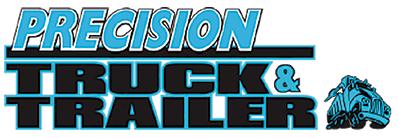

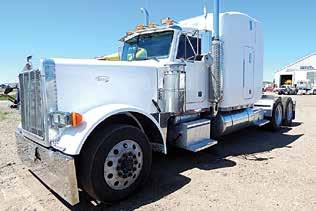
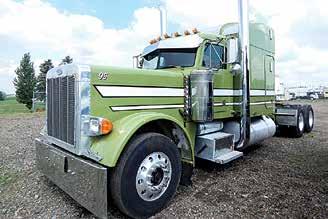
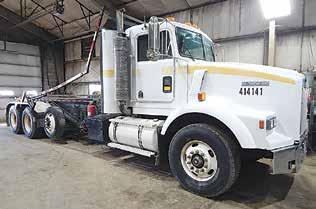
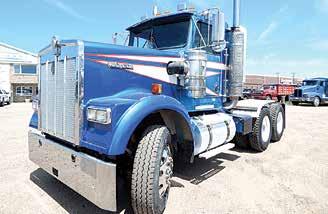
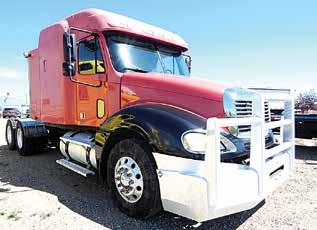
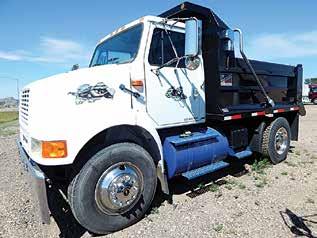
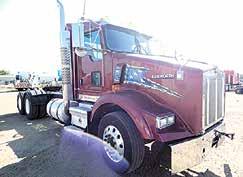

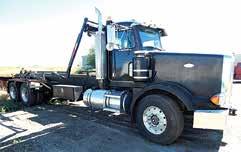
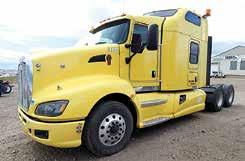
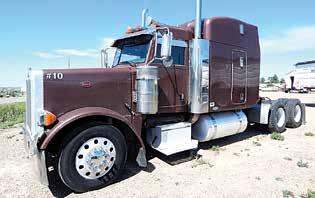
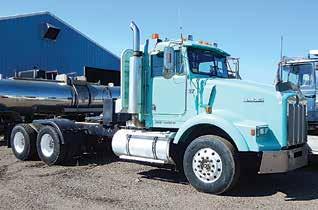
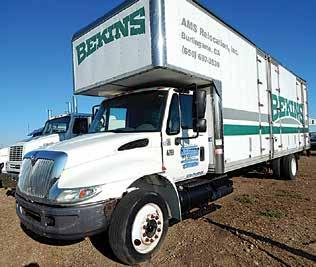
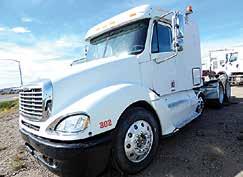
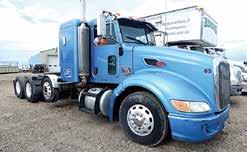








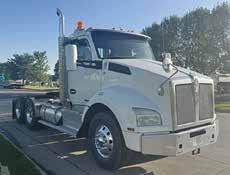

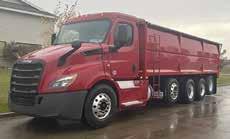
FRO-15210C transmission, (manual), 40,000 lb. rears, 3.08 ratio, air ride suspension, hydraulic power steering, dual aluminum fuel tanks, quarter fenders, custom interior, air slide 5th, 178 inch wheelbase, disc brakes, 11R22.5 disc wheels. Stock #JM7909 $46,900 2019 Freightliner Cascadia 116 DD13,

